
Latest news
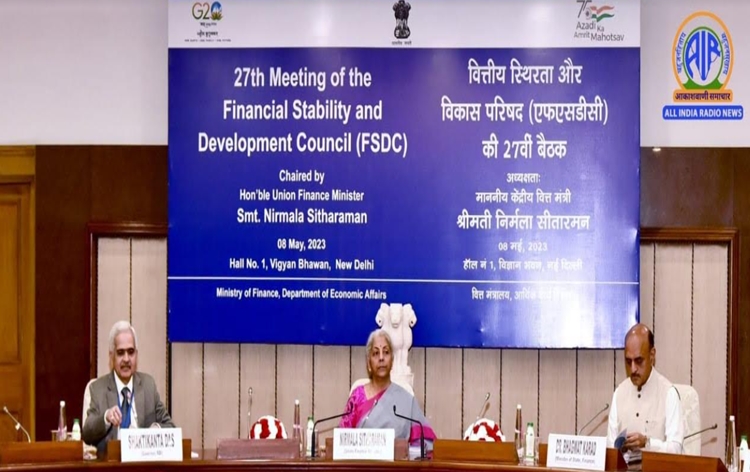 FSDC meeting discusses global financial turmoil and India's economic stability
FSDC meeting discusses global financial turmoil and India's economic stability
NEW DELHI:MMNN: 12 may 2023
Finance Minister Nirmala Sitharaman chaired the 27th Meeting of the Financial Stability and Development Council (FSDC) on 8th May 2023. This was the first meeting of the FSDC after the announcement of the Budget 2023-24. The FSDC is the apex body of sectoral regulators, headed by the Union Finance Minister. In the program Spotlight of Akashvani, AK Bhattacharya, Economic Analyst discussed the agenda and significance of the meeting.
The meeting was aimed at taking stock of the threats, challenges, and opportunities for India's financial sector and ensuring that it remains stable amidst the global turmoil. The Economic Analyst pointed out that in today's interconnected world, it is impossible to insulate any sector of the economy from global headwinds or tailwinds, especially in the financial sector. Hence, it is crucial to recognize this interconnectedness and put necessary safeguards in place so that the Indian financial sector can withstand any shocks without causing any undue harm to customers, investors, or shareholders.
 Oil prices slide 1% as US inventory levels surge
Oil prices slide 1% as US inventory levels surge
NEW DELHI:MMNN: 10 may 2023
Oil prices on Wednesday fell around one percent ending a three-day rally as an unexpected rise in U.S. oil inventories sparked demand concerns. Investors also awaited inflation data for cues on U.S. interest rates.
In intra-day trade, Brent crude was trading at 76 dollars and 80 cents per barrel while West Texas Intermediate crude price was at 73 dollars per barrel when reports last came in.
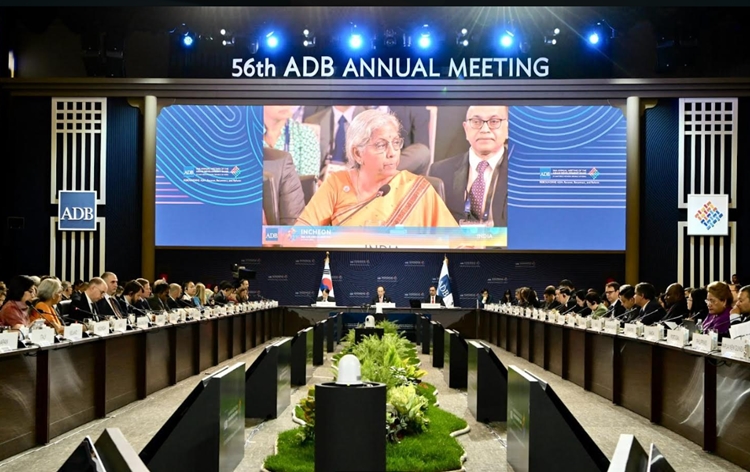 India's economic success hailed at Asian Development Bank meet in South Korea
India's economic success hailed at Asian Development Bank meet in South Korea
NEW DELHI:MMNN: 9 may 2023
India's economic success hailed at Asian Development Bank meet in South Korea
Finance Minister Nirmala Sitharaman led the Indian delegation to the 56th Annual General Meeting of the Board of Governors of Asian Development Bank (ADB) in South Korea. Economic analyst ShankkarAiyer and Akashvani correspondent Rajesh Lekh participated in a discussion on the event in the program Spotlight.
According to Aiyer, the center of gravity of economic growth has shifted to the Indian Ocean region, where India is in pole position as the fifth largest economy in the world and soon to be the fourth. The Finance Minister's visit showcased India's potential as the fastest-growing large and raised issues such as climate change and innovative financing for climate finance.
ADB's objective is to envision a prosperous, inclusive, resilient and sustainable Asia and the Pacific, while eradicating extreme poverty in the region. The Finance Minister's interactions with global economists, governors, and finance ministers of ADB member countries were centered on the reconfiguration of the supply chain post-pandemic and poverty alleviation.
India's success in creating a digital and physical infrastructure that contributes singularly and cumulatively to poverty alleviation has been repeatedly mentioned at the Fund Bank Meetings and ADB Meetings, according to Aiyer. The world has lauded the Aadhar identity platform, which creates inclusive accounts with the Jandhan, Aadhar, and Mobile trinity, and the success of the National Payments Corporation and UPI. At least seven or eight countries have shown interest in creating a similar identity platform.
The Economic analyst pointed out that in the post-pandemic world, the supply chain story has moved from just-in-time supply chain to just-in-case supply chain. India has become part of the solution to a resilient global supply chain which gives a potential to GDP growth, trade and a better current account deficit.
Hence, the annual meeting of ADB is an occasion for India to present its point of view on geopolitics, climate change, and financing, and to represent Global South. With the meeting, the Finance Minister has showcased India's rise and potential at the global stage.
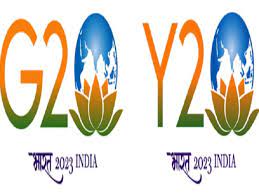 RBI, BIS launch global technology competition ‘G20 TechSprint’
RBI, BIS launch global technology competition ‘G20 TechSprint’
NEW DELHI:MMNN: 5 may 2023
Reserve Bank of India(RBI) and Bank for International Settlements (BIS) have launched G20 TechSprint, a global technology competition. RBI and the BIS Innovation Hub have jointly announced the fourth edition of the G20 TechSprint. RBI said that the 2023 TechSprint will focus on developing innovative technology solutions for cross-border payments. The competition is open for developers around the world for submitting application from today to 4th June. The results will be announced at a final event in August or September this year.
Shortlisted teams will be invited to develop their solutions over a six-week period and each team will be eligible for a stipend of eight lakh rupees approximately 10,000 US dollar. An independent panel of experts will select the most promising solution to each problem statement from the shortlisted solutions. The winners for each problem statement will receive an award of forty lakh rupees approximately 50,000 US dollar.
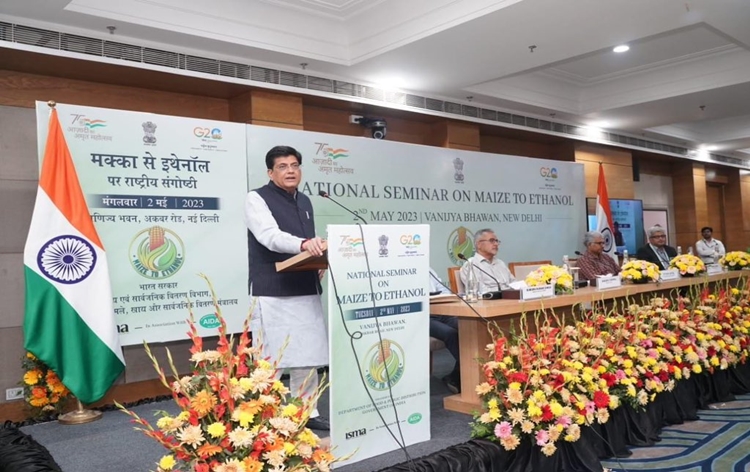 Ethanol sector growth has been tremendous which set sort of example for world: Piyush Goyal
Ethanol sector growth has been tremendous which set sort of example for world: Piyush Goyal
NEW DELHI:MMNN: 3 may 2023
Union Minister of Commerce and Industry Piyush Goyal has said that the growth of the ethanol sector has been tremendous which has set a sort of example for the world. Addressing a National Seminar on 'Maize to Ethanol’ in New Delhi, he said that in the last 9 years, the sugar sector has been self-sufficient with more than 99.9 per cent payment to farmers for the previous season.
He added that now, ethanol will support maize farmers in increasing their income and bringing growth with stability on the lines of sugarcane farmers. The Minister said that investment of thousands of crores have come creating thousands of jobs in the rural sector which has generated a multiplier effect on the Indian economy. Mr. Goyal highlighted that environment friendly fuel like ethanol has been on the top priority list of Prime Minister Narendra Modi.
He said, it has resulted in more than doubling of ethanol blending in just 2 years and the target of 20 per cent ethanol blending has also been preponed from 2030 to 2025. The Minister said that timely planning, industry friendly policies and transparent approach of the Union Government with collaboration of industry has made these achievements a reality.
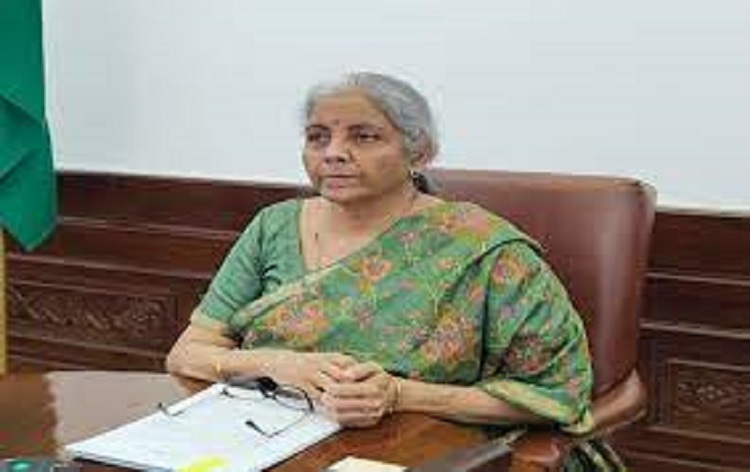 Finance Minister Nirmala Sitharaman directs CBIC to implement action plan to increase taxpayer base through enhanced use of technology
Finance Minister Nirmala Sitharaman directs CBIC to implement action plan to increase taxpayer base through enhanced use of technology
NEW DELHI:MMNN: 29 April 2023
Finance Minister Nirmala Sitharaman has directed the Central Board of Indirect Taxes and Customs (CBIC) to implement an action plan to increase the taxpayer base through enhanced use of technology. Ms Sitharaman said this while chairing a review meeting with CBIC in New Delhi today. She also directed CBIC to introduce its automated GST return scrutiny by next week.
During the meeting, the Finance Minister was briefed on the final revenue achievement in total Indirect Tax collections for 2022-23. It stood at Rs 13 lakh 82 thousand crore, as against Rs 12 lakh 89 thousand crore in 2021-22. On the GST side, the average gross monthly collection for the year 2022-23 stood at Rs one lakh 51 thousand crore. The monthly GST revenue collections exceeded Rs one lakh 40 thousand crore for 12 months in a row. The comprehensive review covered a variety of work areas including trade facilitation, taxpayer services, grievance redressal of the trade, finalisation of disciplinary cases and infrastructure projects.
Ms Sitharaman emphasised the need for continuously improving taxpayer services. In order to intensify its drive against fake billing and Input Tax Credit, the Minister asked CBIC to undertake a comprehensive root cause analysis by studying the typology of cases already booked. She asked them to come up with recommendations on technology-based solutions to address the menace and prevent its occurrence.
 Reliance joins hands with Warner Brothers and HBO: Soon you will be able to watch great series like Game of Thrones and Harry Potter on Jio Cinema
Reliance joins hands with Warner Brothers and HBO: Soon you will be able to watch great series like Game of Thrones and Harry Potter on Jio Cinema
NEW DELHI:MMNN: 27 April 2023
Movies and shows like Game of Thrones, Harry Potter, Succession and Discovery will soon be available on the Jio Cinema app. For this, Mukesh Ambani's company Viacom18 has a deal with Hollywood's well-known production house Warner Bros Discovery Inc. After this deal, Jio Cinema will give direct competition to Amazon Prime Video and Disney Hotstar. Viacom18 and Warner Bros said, movies and shows on Jio Cinema will premiere in the US only. Previously, Disney had the rights to stream content from Warner Bros. and HBO. This partnership ended on 31 March 23. For this reason Indian viewers were not able to stream shows like HBO's Game of Thrones. Warner Bros. is the parent company of HBO.
Warner Bros' content will be available only on Jio Cinema
News agency Reuters wrote quoting sources that this partnership will be exclusive. That is, Warner Bros. shows and movies will not be able to offer most of their popular movies and series to other Indian OTT platforms including Amazon Prime Video and Disney Hotstar. Farzad Palia, Head - Subscription Video-on-Demand and International Business, Viacom18, said, "Jio Cinema has become the largest platform for live sports. We are now on a mission to make Jio Cinema the most magnetic destination for entertainment.Jio is showing IPL for free
This time live streaming of IPL is happening for free in 4K quality. Jio Cinema is the official live-streaming partner of IPL 2023. Earlier, IPL was shown on Disney Hotstar. In such a situation, Hotstar subscription had to be taken to watch it. Right now you do not have to pay any fee to watch anything on Jio Cinema.Subscription will have to be taken on Jio Cinema,
in an interview given to Bloomberg in the past, Reliance's Media and Content Business President Jyoti Deshpande had said that there is a plan to release more than 100 movies and web series on Jio Cinema. New content will be released before the end of IPL 2023. Jio Cinema will start charging for original content. Although Jyoti Deshpande told that the company has not yet finalized the Jio Cinema plan, the price will be decided soon. Deshpande had said that the current OTT platform is dominated by foreign content.5.5 billion unique views in Jio Cinema
Jio Cinema has claimed that the platform has received 5.5 billion unique video views in the first week of IPL. And on April 12, 2023, a record 22 million people watched the Chennai Super Kings vs Rajasthan Royals match in Jio Cinema. Let us tell you that IPL has started from March 31, whose last match will be played in Bengaluru on May 21.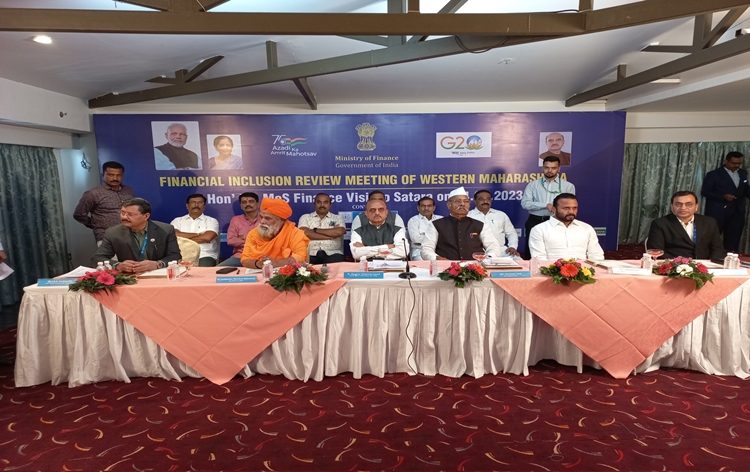 PM Svanidhi's scheme gives small loans to needy people without CIBIL score: MoS Finance Bhagwat Karad
PM Svanidhi's scheme gives small loans to needy people without CIBIL score: MoS Finance Bhagwat Karad
NEW DELHI:MMNN: 24 April 2023
Union Minister of State for Finance Dr. Bhagwat Karad today asked bankers to focus on banking the unbanked, securing the unsecured, and funding the unfunded. He was speaking at a review meeting on the Financial Inclusion Parameters of Western Maharashtra in Satara today. The Minister further said that PM Svanidhi's scheme gives small loans to needy people without the condition of collateral or a CIBIL score. The Minister also exhorted bankers to increase banking penetration in rural areas. He directed banks to reduce the waiting period for loan disbursement. The Minister added that even a developed State like Maharashtra has scope for increasing the number of bank branches in rural areas. Shri Karad further stated that the banking sector is a big pillar in the target towards becoming a five trillion economy. The Minister further added that new customers should be incorporated into the banking sector by opening their bank accounts, and special camps should be arranged for the same. He suggested imbibing a competitive spirit in the banking sector for the development of all. The Minister on this occasion appreciated the all round performance achieved by Kolhapur District on Financial inclusion parameters.
 Apple's store in Delhi after Mumbai, know who will benefit and who will be harmed
Apple's store in Delhi after Mumbai, know who will benefit and who will be harmed
NEW DELHI:MMNN: 20 April 2023
After Mumbai, the world's leading tech company Apple, which manufactures iPhone, is now going to open its store in Delhi as well. iPhone and other Apple products are already being sold in the country. But tremendous enthusiasm is being seen in the country regarding Apple's stores. The question arises that what is going to be the benefit of opening Apple's store? The reason for this is that the way Apple has changed the retail business in the world, its example is rarely seen. The company opened its first retail stores in 2001 in California and Virginia. To reduce dependence on other retailers and better showcase its products, the company decided to open its own stores. Now it has become a status symbol in a way. Apple has 272 stores in the US alone. Today Apple's stores are in more than 20 countries of the world. After America, it has the maximum number of 45 stores in China. There are 39 stores in the UK, 28 in Canada, 22 in Australia, 20 in France, 17 in Italy and 16 in Germany. Apple is the largest company in the world by market cap. The biggest feature of Apple's store is its design. Apple has a unique way of displaying products in its stores. Also, users get a different experience in this. Huge crowds are seen outside Apple stores during the launch of new products in the US and Europe. Apple's store in Mumbai is inspired by Kaali Peeli Taxi
what will be the benefit
All employees at Apple Stores have a mobile POS. This makes it easy to sell products. That is, you do not need to stand at the bill counter. You can make payment at the counter where you are checking the product. The biggest advantage of buying products from the Apple Store is that you get exclusive deals and offers there. For example, if you are a student, you can get the benefit of back to university offer. In the US, the company gives a gift card of $ 150 under this. Not only this, if you buy a product from Apple's store, then you can give it a personal touch according to your own. Till now the company used to sell its products through exclusive Apple premium partner stores, major retailers and trade and e-commerce platforms. The company says that the new retail locations will expand its business in India. With these stores, the company's customers in India will be able to explore new products. It is believed that in its stores, the company will also set up experience centers for the customers. This will cause some loss to the retailers. Retailers are apprehensive that with the opening of Apple stores in Mumbai and Delhi, the number of their customers may decline by 50 to 60 percent.who will be harmed
Mumbai and Delhi account for 20 per cent of the total annual sales of iPhones in India. Some say that Apple will first release the stock for its stores. This may harm the rest of the retailers. However, sources in the company have dismissed this apprehension. He says that the entire retail ecosystem will benefit from the opening of Apple's retail stores. Navneet Pathak, general secretary of All India Mobile Retailers Association, said that the company would like to create similar hype in Delhi and Mumbai during the new launch. Existing Apple customers may want to visit these stores before purchasing a new product. Although some people do not give it much preference. He says that 80 percent of Apple's new customers come from small towns. In such a situation, two Apple stores are not going to make much difference.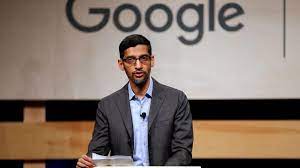 Google CEO Sundar Pichai hints at more layoffs, wants to ensure efficiency
Google CEO Sundar Pichai hints at more layoffs, wants to ensure efficiency
NEW DELHI:MMNN:13 April 2023
New Dehli: Google CEO, Sundar Pichai, has hinted at another round of layoffs at Google. In January this year, Google decided to fire six per cent of its workforce, leaving 12,000 Googlers without a job.
Sundar Pichai was speaking with the Wall Street Journal when he hinted towards more layoffs. However, he did not directly address the subject.
He also discussed Google's work in the artificial intelligence (AI) domain. He said that Google's chatbot Bard was being integrated into products like Gmail and Google Docs to increase efficiency.
He said, "We're very, very focused on this set of opportunities we have, and I think there's a lot of work left. There's also an important inflection point with AI. Where we can, we are definitely prioritizing and moving people to our most important areas, so that is ongoing work."
Sundar Pichai said they were looking into every aspect of Google's work and taking steps to re-engineer its cost base permanently. He said that Google aims to increase its efficiency by 20 per cent. He stressed that Google needs to build upon the improvements it has made in recent times.
He added that job cuts were made after careful consideration. He said, "We've decided to reduce our workforce by approximately 12,000 roles. We've already sent a separate email to employees in the US who are affected. In other countries, this process will take longer due to local laws and practices."


Nita Mukesh Ambani Cultural Centre to open doors to audience on March 31
:MMNN: March 31 2023
A multi-disciplinary cultural space, India’s first-of-its-kind, the Nita Mukesh Ambani Cultural Centre, will open on March 31 with an exquisite showcase of the best of India across music, theatre, fine arts and crafts to audiences from India and the world.
The launch will feature a specially curated art and craft exposition called ‘Swadesh’ along with three blockbuster shows – a musical theatrical called ‘The Great Indian Musical: Civilization to Nation’; a costume art exhibition called ‘India in Fashion’ and a visual art show called ‘Sangam/Confluence’.
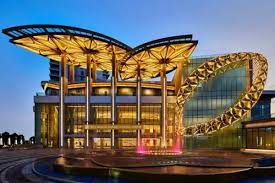

Together these will present the diversity of India’s cultural traditions and their impact on the world while also showcasing the diversity of spaces at the cultural centre.
Speaking on the eve of the inaugural day, Nita Ambani said, “Bringing this cultural centre to life has been a sacred journey. We were keen to create a space for both promoting and celebrating our artistic and cultural heritage in cinema and music, dance and drama, literature and folklore, arts and crafts and science and spirituality. A space where we showcase the best of India to the world and welcome the best of the world to India.”
The centre will offer free access for children, students, senior citizens and the differently-abled. It will focus on community nurturing programmes, including school and college outreach and competitions, awards for art teachers, in-residency programmes and art literacy programmes among others.
‘The Great Indian Musical: Civilization to Nation’ will see a line-up of exceptional Indian talent, along with a Tony & Emmy award-winning crew, and has been conceived and directed by Feroz Abbas Khan. The marquee production will bring together talents such as Ajay-Atul (music), Mayuri Upadhya, Vaibhavi Merchant, (choreography) along with 350+ artists, including an epic 55-piece live orchestra from Budapest, to showcase India’s cultural journey through history. The visual spectacle will also feature over 1,100 costumes designed by leading fashion designer Manish Malhotra.
The cultural centre, located within the Jio World Centre at Bandra Kurla Complex, is home to three performing arts spaces: the 2,000-seat Grand Theatre, the technologically advanced 250-seat Studio Theatre, and the dynamic 125-seat Cube.
It also features the Art House, a four-storey dedicated visual arts space built as per global museum standards with the aim of housing a shifting array of exhibits and installations from the finest artistic talent across India and the world.
Spread across the centre’s concourses is a captivating mix of public art by renowned Indian and global artists, including ‘Kamal Kunj’ – one of the largest Pichwai paintings in India.
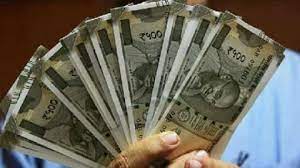 Invest in the right place for higher returns on FD: Many banks including SBI and HDFC have increased interest rates, see here where more interest is now
Invest in the right place for higher returns on FD: Many banks including SBI and HDFC have increased interest rates, see here where more interest is now
NEW DELHI:MMNN:24 February 2023
New Dehli: Due to increasing the repo rate of RBI this month, most of the banks have announced to give higher interest rate to the customers on FD investment. In this sequence, many banks including SBI, HDFC Bank, PNB and Yes Bank have recently increased their FD interest rates. The new interest rates will be applicable for investment amount less than Rs 2 crore
State Bank of India (SBI) has increased interest rates on select FDs by up to 25bps on 15 February 2023. New interest rates Interest rates up to 7 percent have been announced for tenure ranging from 7 days to 10 years tenure. Senior citizens can earn up to 7.5% interest on SBI Fixed Deposit. The bank is paying 7.1 percent interest to ordinary citizens and 7.6 percent to senior citizens on special FD Amrit Kalash with the highest interest rate of 400 days tenure.
HDFC Bank has made new interest rates on FD effective from 21 February 2023. The bank gives an opportunity to invest in FDs for a period ranging from 7 days to 10 years. HDFC Bank is offering interest rates ranging from 3% to 7.10% to the general public and 3.50% to 7.60% to senior citizens.
Private sector leader Yes Bank has increased the interest rate on FDs by 25 to 50 basis points on 21 February 2022. Yes Bank offers investors an opportunity to earn hefty returns on tenure ranging from 7 days to 10 years. The bank is offering interest rates ranging from 3.25 per cent to a maximum of 7.50 per cent for regular citizens. At the same time, it has been announced to give interest rate ranging from minimum 3.75 percent to maximum 8 percent interest rate to senior citizens. The highest interest rate is being given to ordinary citizens at 7.75 per cent on FD with a tenure of 35 months. Whereas, it has been announced to give 8.25 percent interest to senior citizens investing on the same period.
Punjab National Bank (PNB) has increased FD interest rates by up to 30bps on 20 February 2023. The highest interest rate offered by the bank to regular citizens is 7.25 per cent for a tenure of 666 days. The bank has offered an interest rate of 7.75 per cent to senior citizens for FDs with a tenure of 666 days and 8.05 per cent to super senior citizens with a tenure of 666 days.
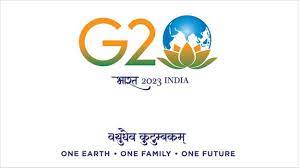 G20 Summit 2022: Looking for the role of G-20 amid global crises, expert view
G20 Summit 2022: Looking for the role of G-20 amid global crises, expert view
NEW DELHI:MMNN: 19 Nov 2022
Today, about 14 years ago, the global economy suffered a major setback, when the Asian financial crisis slowed down the rate of economic growth and once again from 2020, the world economy is going through a severe economic crisis and many Big countries are also finding themselves unable to make economic recovery. One thing that is worth noting in both these times of economic crises is the role of the G-20 organization.
Seeing the effects of the Asian financial crisis, the G-20 was formed in 1999 and now again when the world is surrounded by economic, geo-political storms, once again the G-20 conference was held recently in Indonesia to find a solution. K is done in Bali. A special thing that should be noted in this conference is that now the developed countries of G-20 have recognized the role and potential of emerging market economies like India, Brazil and South Africa to bring the global economy back on track. started.
The proof of this is also that India will organize G-20 in the year 2023, while Brazil and South Africa will organize it in 2024 and 2025 respectively. The declaration of G-20 issued in Bali shows that developed and developing countries are considering G-20 as the most effective means of global economic recovery. Perhaps that's why keeping aside their economic differences and ambitions, there seems to be an agreement among the nations to ensure global economic cooperation by abandoning economic protectionist policies.
The Russia-Ukraine war and other geopolitical tensions have badly affected the economy of European countries, especially the UK. Therefore, at the Bali Summit of the G-20, the nations said that they oppose Russia's barbaric and bestial mentality of war and want Russia to stop its military action against Ukraine without any conditions, Because war is now heading towards a huge human tragedy and rule based international order and democratic values do not allow any country to sacrifice global peace, security and economy for its personal ambitions.
Before the G-20 meeting held in Bali, US President Joe Biden and Chinese President Xi Jinping also said that there should be no nuclear war under any circumstances. Both countries have also said that war can never be won with nuclear weapons. Both countries have also condemned Russia's nuclear threats to Ukraine. Such an approach by China is giving a different kind of courage to the western countries, because China is able to be candid on very few occasions.
The G-20 does not want the critical supply chain in the world to collapse, the members of the G-20 do not want the countries that have been affected by the Kovid epidemic to face war-borne energy problems. G-20 countries want that now work should be done for such a sustainable development, so that the fears of economic recession can be eliminated. This echoes the theme of Indonesia's G20 presidency, "Recover Together, Recover Stronger". For the timely achievement of the Sustainable Development Goals, the G-20 countries have asked the Multilateral Development Banks to increase both the volume and speed of financial cooperation in this direction, so that it can be easier for the nations to deal with the food problem.
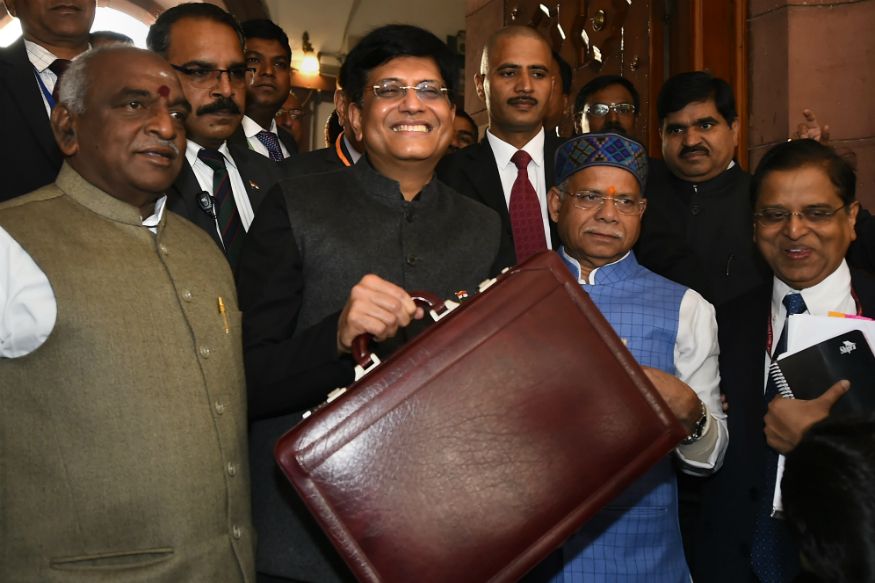 Budget 2019 Brings Cheer to Startup Sector as Govt Promises 1 Lakh Digital Villages
Budget 2019 Brings Cheer to Startup Sector as Govt Promises 1 Lakh Digital Villages
NEW DELHI:MMNN:2 February 2019
Mumbai: The startup sector has welcomed the interim budget proposal of setting up one lakh digital villages saying that it will give boost to the sector.
Taking forward government's Digital India programme, Finance Minister Piyush Goyal Friday said that the government has set an aim of building one lakh digital villages in the next 5 years.
The initiative to set up of one lakh digital villages when rolled out will have multiplier effect on startups in segments like edutech, content based companies, media tech and of course fintech and e-commerce," Unicorn India Ventures managing partner Anil Joshi said.
This will ensure faster financial inclusion of people who still continue to be outside of formal banking system and have no credit history. Startups working in fin tech and edutech should see this as a promising opportunity to tap the unaddressed and underserved rural population, Joshi said.
City-based cyber security startup Sequretek welcomed the government's focus on artificial intelligence, as other countries have already made a start by investing heavily in AI and lead initiatives to become a data rich economy. Bengaluru-based fin tech startup in direct lending segment Smartcoin said the initiative to build one lakh digital villages would mean more money being transacted digitally as the country possibly has the lowest penetration
when it comes to mobile and data tariffs in the world.
"Digitally progressive would also mean better internet connectivity and hence we expect the untapped rural consumers to start using digital payments. For us, this means more alternate data generated to assess loan seekers. And over time a formal credit history will be built, as they will not only transfer money but also take micro loans for their needs. For a fin tech company in
direct lending space like ours, this is a huge push to achieve our vision of bringing under banked masses under a formal credit system, it said.
Noting the move to enhance tax exemption for salaried employees and digitising the entire tax filing process, Fintech company Zeta's co-founder Bhavin Turakhia said, "The decision to carry all tax verifications via an anonymous digital interface and processing all tax returns within 24 hours displays the government's strong intention to build a digital nation, whilst putting convenience in the hands of its citizens and ensuring complete transparency."
Wearable devices-maker Goqii that is backed by Ratan Tata and Paytm founder Vijay Shekhar Sharma, among others, said healthcare announcements made in the budget are a welcome move and will help build a strong economy.
 Union Budget 2019: Top 5 Announcements By Piyush Goyal In Election Year
Union Budget 2019: Top 5 Announcements By Piyush Goyal In Election Year
NEW DELHI:MMNN:1 February 2019
NEW DELHI: Union Minister Piyush Goyal today presented the last Interim Budget of the NDA government led by Prime Minister Narendra Modi before the Lok Sabha elections due by May. From direct cash transfer to small farmers and better gratuity terms to income tax relief, the Interim Budget appeared to be keeping the national elections in its radar.
Here are the top 5 announcements by Piyush Goyal:
1-Individual taxpayers with annual income up to Rs. 5 lakh will get full tax rebate. Individuals with gross income up to Rs. 6.5 lakh will not need to pay any tax if they make investments in provident funds and prescribed equities. Around three crore middle class taxpayers will get tax exemption due to this measure.
2-Within the next two years, assessment of all tax returns should be done electronically without any personal interface. Direct tax collections up from 6.38 lakh crore in 2013-14 to almost 12 lakh crore; tax base up from 3.79 crore to 6.85 crore. All income tax returns to be processed within 24 hours.
3-The PM Kisan Samman Nidhi Yojana will provide assured income support of Rs. 6,000 per year to small and marginal farmers with landholding below two hectares, through direct cash transfer. It will be paid in three installments of Rs. 2,000.
4-"EPFO shows two crore accounts in two years. This shows formalisation of the economy. When there is such a high growth, jobs are created," Piyush Goyal said. Gratuity limit has been increased from Rs. 10 lakh to Rs. 30 lakh.
5-Pension scheme for unorganised sector workers with monthly income up to Rs. 15,000 will be given. Assured monthly pension of Rs. 3,000 after they retire on reaching 60.
 Cabinet approves merger of Vijaya Bank, Dena Bank into Bank of Baroda
Cabinet approves merger of Vijaya Bank, Dena Bank into Bank of Baroda
NEW DELHI:MMNN:3 January 2019
New Delhi, The Union Cabinet on Wednesday cleared the merger of Bank of Baroda, Vijaya Bank and Dena Bank.
The Bank of Baroda would be the transferee bank while Vijaya Bank and Dena Bank would be transferor banks, Union Minister Ravi Shankar Prasad told a press conference after the Cabinet meet.
Mr Prasad said the merger would come into force from new financial year April 1, 2019.
The Cabinet was held under the chairmanship of Prime Minister Narendra Modi here.
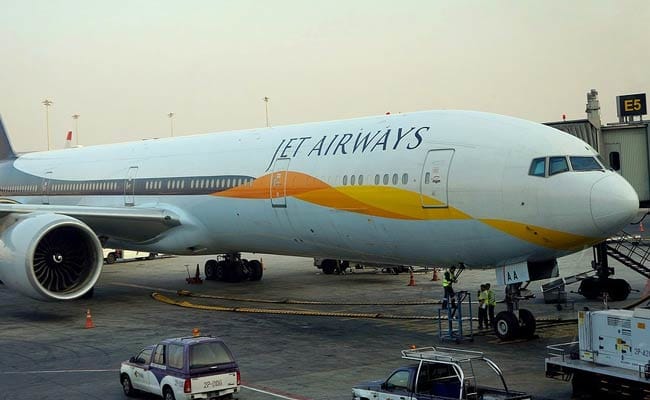 Jet Airways Defaults On Debt Payment To Banks, Shares Plummet Nearly 6%
Jet Airways Defaults On Debt Payment To Banks, Shares Plummet Nearly 6%
NEW DELHI:MMNN:2 January 2019
Cash-strapped Jet Airways said late Tuesday it defaulted on debt payment to a consortium of banks, prompting ratings agency ICRA to downgrade the carrier and sending its shares sharply lower. The payment of interest and principal instalment was delayed "due to temporary cash flow mismatch", Jet said in a statement, adding that it was in talks with the consortium led by State Bank of India. The deadline for payment was Monday, December 31.
ICRA cut Jet's long- and short-term ratings on Wednesday, citing the payment delays.
Timely implementation of liquidity initiatives, including equity infusion and a stake sale in the airline's loyalty programme Jet Privilege, will be critical to the company's credit profile, ICRA said.
The 25-year-old airline is facing financial difficulties and owes money to pilots, lessors and vendors. Intense pricing competition, a weak rupee and rising fuel costs weighed on the country's airlines in 2018.
Jet, the country's biggest full-service carrier by market share, had a debt of Rs. 8,052 crore ($1.15 billion) as of September 30, 2018.
Jet and its second-largest shareholder, Etihad Airways, are in talks with bankers on a rescue deal that may involve the Abu Dhabi-based airline increasing its stake from 24 per cent at present.
The airline's shares declined as much as 5.84 per cent in their sharpest intraday drop in over three weeks and were last down 5.27 per cent at Rs. 266.00, as of 2:33 pm on the NSE.
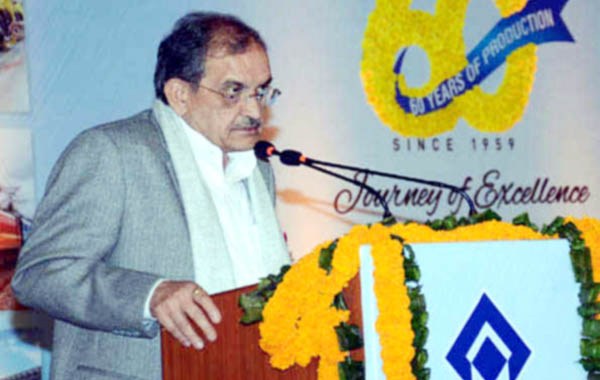 SAIL must keep pace with new growing companies: Birender Singh
SAIL must keep pace with new growing companies: Birender Singh
NEW DELHI:MMNN:29 December 2018
New Delhi, Times are changing and SAIL must keep pace with the new and fast growing steel companies, Union Steel Minister Chaudhary Birender Singh said on Friday.
Outlining four mantras for SAIL — Speed, Aggression, Innovation and Loyalty — the Minister said decisions, actions and projects need more speed and marketing.
He said new areas and markets like North-East need to be explored and technology, thinking and working has to be innovative and all this will happen only if those associated with SAIL have loyalty and commitment towards the company and country.
Mr Singh was addressing an event, organised to commemorate the 60 years of the SAIL foundation here.
The Minister exhorted SAIL to invest in research and development, technology development and production of high-grade, value-added steel as these are the priorities of the government and SAIL has a crucial role to play in all these areas.
“National Steel Policy, 2017 has set ambitious target of 300 MT steel capacity by 2030-31 and SAIL with 1/6th of the proposed capacity is going to be a key contributor. However, all this must be done in a systematic and planned way. Each plant and unit has to adopt the culture of ‘Safety First’.”
Stressing that the culture of safety has to be an integral part of the working, he said the Ministry will observe daylong of the year as Safety Day for the steel sector from 2019.
Minister of State for Steel Vishnu Deo Sai expressed hope that with its continued hard work, SAIL will be able to fulfill the right expectations of the country in future too.
The first furnace of Rourkela Steel Plant began functioning in 1959 setting the foundation for building India’s economic development. SAIL nowadays is a Maharatna company and the largest steel producer and also the highest iron ore miner in India. Steel is a deregulated sector and SAIL operates in open economy producing 21.4 million tonnes steel per annum and contributing 1.5 times of India’s GDP and 6.8 times to employment generation.
Steel Ministry Secretary Binoy Kumar and SAIL Chairman Anil Kumar Chaudhary and top officials of Ministry of Railways and other Central Government departments were also present on this occasion.
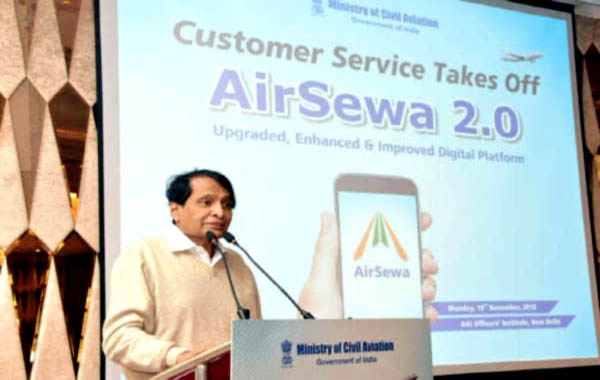 Prabhu launches AirSewa 2.0; says improving service quality is on priority
Prabhu launches AirSewa 2.0; says improving service quality is on priority
NEW DELHI:MMNN:20 November 2018
New Delhi, Union Civil Aviation Minister Suresh Prabhu on Monday said the focus is on improving the quality of services so that passengers who are travelling have a safe and comfortable experience.
He said a need was felt for development of an upgraded version of AirSewa to provide a superior user experience with enhanced functionalities. Major improvements include features such as secure sign-up and log-in with social media, chatbot for travellers support, improved grievance management such as social media grievances, real-time flight status and details flight schedule.
Mr Prabhu said this after launching the upgraded version of AirSewa 2.0 web portal and mobile app here along with Minister of State for Civil Aviation Jayant Sinha.Mr Prabhu said the upgrade and improved version of AirSewa will offer passengers a convenient and hassle-free air travel experience. The web portal and application will help to capture air travellers’ feedback for policy interventions.
Speaking on the occasion, Mr Sinha said today, five crore passengers have been travelling every year and would grow exponentially in the near future. There was an urgent need of upgrading AirSewa and systemic intervention in improving customer services.
Air passengers, he said, face issues like flight delays, problem in refunds, long queues, inadequate facilities at airports and complaints of lost baggage and his Ministry launched AirSewa web portal and mobile app in November 2016 to address this need.
The AirSewa 1.0 was received well, with around 30,000 app downloads and around 75,000 web portal hits since its launch. It has helped significant number of air passengers to get their concerns resolved with 92 per cent closure rate for grievance solutions. In addition to grievance redressal, AirSewa also provides real-time flight status and flight schedules, he added.
The junior Minister said further upgrades of AirSewa are also being planned which would include DigiYatra registration, airport maps, BHIM payment integration and grievance escalation and transfer.
The two Ministers also gave away the champion award to Chennai airport which saw 100 per cent timely closure of grievances in one year.
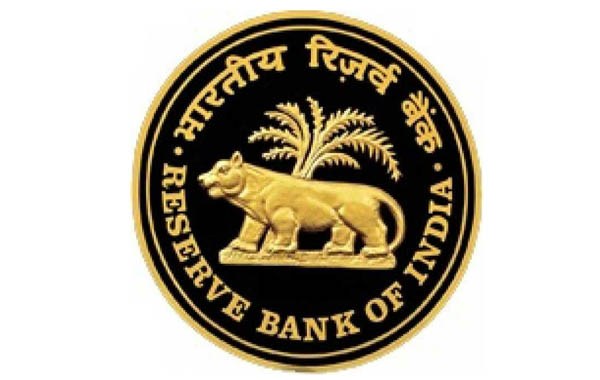 RBI Board, Govt meeting underway to solve rifts
RBI Board, Govt meeting underway to solve rifts
NEW DELHI:MMNN:19 November 2018
New Delhi/Mumbai, A crucial meeting of the Reserve Bank of India and the Government is underway on Monday to draft new prompt corrective actions for weak lenders amid increasing non-performing assets and bad loans, providing liquidity to non-banking financing companies and new capital guidelines for the central bank.
The RBI Board of Directors include five full time members — RBI Governor Urjit Patel, Deputy Governors N S Vishwanathan, Viral V Acharya, B P Kanungo and Mahesh K Jain.
The Government has inducted Department of Economic Affairs Secretary S C Garg and Department of Financial Services Rajiv Kumar into the Board as its representative. The Board has also 11 independent directors.
The meeting is also expected to take up issues of resolving liquidity crunch to lend sufficient capital to non-banking finance companies in wake of IL&FS defaults.
It may also frame new prompt corrective actions (PCA) for weak banks amid growing bad loans in order to make them stable and stand on their own feet.
The meeting is likely to also discuss the issue that there should be sufficient capital and easier norms for small and medium businesses.The issue of RBI reserve surplus is also expected to surface in the meeting of which the Central Bank is not in favour.
Besides, sources say the government has recommended that the RBI Board frame rules and regulations such as financial stability and monetary policy transmission. However, the Bank wants that these regulations should be draft by experts only.
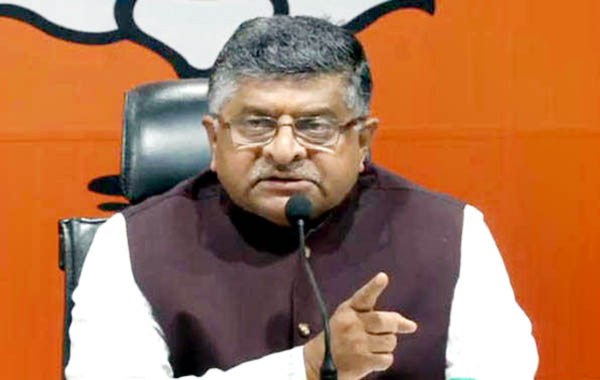 NDA govt has influenced aspirations of low-income people: Jaitley
NDA govt has influenced aspirations of low-income people: Jaitley
NEW DELHI:MMNN:16 November 2018
New Delhi, The NDA Government’s achievement in financial inclusion have in a way influence the aspirations of low-income population, leading to improve lives in rural areas, Union Finance Minister Arun Jaitley said on Thursday.
Mr Jaitley said the government in just four years has achieved remarkable results as it has opened numerous bank accounts under the Jan Dhan Yojna, providing funds to Start-Ups and covered the rural areas.
“Within a short span of time, what started of as a financial inclusion experiment, we have been able to achieve remarkable results in banking the unbanked, securing the unsecured, funding the unfunded and covering the uncovered rural areas. Our achievements in financial inclusion have in a way influenced the aspirations of the low-income population. This has led to improving the rural sanitation, providing better quality of life to poorer population in the villages,” the Minister added.
The Finance Minister said the subject of digital financial inclusion is a topic of extreme importance to a country like India where they have adopted a higher growth rate to propel development.
He was speaking at the 25th World Congress of Savings and Retail Banks organised here.
NABARD chairman Dr Harsh Kumar Bhanwala said the financial inclusion model adopted by India has contributed to inclusive growth and laying down a huge digital infrastructure which can be used by state governments for providing various benefits to the poorer population.
He said the NABARD has also enabled outreach to more than 100 million rural women through partnerships with over 60,000 bank branches and over 5,000 civil society organisations. Savings plays a very critical role in all the financial inclusion approaches promoted by NABARD.
Mr Bhanwala said NABARD is also in the process of digitisation of self-help groups, which contributes to intensification of credit, convergence of various government benefit schemes and providing better business opportunities for banks with over 100 million members of SHGs.
Speaking on the occasion, outgoing WSBI President Heinrich Haasis provided a summary of achievements made during his six-year association presidency, including inroads made toward a WSBI pledge to provide “an account for everybody”, which was outlined in a 2012 WSBI declaration in Marrakesh.
“Since our World Bank Universal Financial Access 2020 commitment made in 2015, WSBI members have added 340 million accounts for 234 million people into the formal financial system thanks to their efforts,” he added.
Department of Financial Services Secretary Rajiv Kumar was also present on the occasion
 SAIL Declines Dividend To Government Citing Cash Crunch
SAIL Declines Dividend To Government Citing Cash Crunch
NEW DELHI:MMNN:31 August 2018
New Delhi: State-owned Steel Authority of India Ltd (SAIL) has declined a government call for a dividend this year, saying it did not have "any cash and bank balance" and that its debt-to-income ratio was much higher than agreed with some lenders, showed an internal company document reviewed by Reuters. SAIL's refusal could make it harder for the government to meet its budgeted target of raising Rs. 1.06 lakh crore ($14.95 billion) from the dividends and profit of state-owned companies this fiscal year ending March. Last fiscal year, the government received Rs. 123 crore, 13 per cent below the then target.
India's second-biggest steel firm by current production said it was due to pay out Rs. 2,171 crore including tax to the government based on its "net-worth" last fiscal year. "SAIL does not have any cash and bank balance and would need to borrow from the market for payment of dividend," SAIL said in an explanation sent to the government expressing its inability to pay the dividend.
"It is getting increasingly difficult to borrow further from the market in the current market conditions, especially for the steel sector, as the financial institutions and banks are reluctant to take further exposure on steel industry."
A SAIL spokesman told Reuters that the firm posted a loss in the 2017/18 fiscal year "so there is no chance of a dividend".
The Ministry of Finance did not respond to a request for comment.
The document also showed SAIL's net debt-to-earnings before interest, taxes, depreciation and amortization (EBITDA) ratio was 8.5, against the 1.5 to 3.75 "the company in financial covenants agreed to with some of the foreign lenders".
The firm has Rs. 3,220 crore debt due for repayment this fiscal year, which will have to be "met from borrowed funds".
"In the last three quarters, the company has been in profit and production is also ramping up although the loans do exist. But this year, the company will end up showing net profit in toto," the spokesman said.
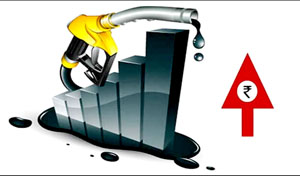 Hike in fuel prices; petrol rise by 14 paise, diesel 15
Hike in fuel prices; petrol rise by 14 paise, diesel 15
NEW DELHI:MMNN:29 August 2018
New Delhi, With no relief in sight for consumers, diesel recorded a hike of 15 paise while petrol prices went up by 14 paise on Tuesday.
In Delhi, petrol prices will now cost Rs 78.05 per litre, diesel Rs 69.91 per litre, according the Indian Oil Corporation data.
In Mumbai and Kolkata, petrol was at Rs 85.47 and Rs 80.98 respectively. In Chennai, it was priced at Rs 81.09.In Mumbai, Kolkata and Chennai, diesel was priced at Rs 73.90, Rs 72.46 and Rs 73.54 per litre respectively.
On May 29, petrol prices were at an all-time high. In Delhi, Kolkata, Mumbai and Chennai petrol was being sold at Rs 78.43, Rs 81.06, Rs 86.24 and Rs 81.43 per litre respectively.
The surge in fuel prices is largely attributed to the recent rise in crude oil price and the high excise duty levied on transportation fuel in the country.
 Rupee Edges Higher, Still Below 70 Mark Against Dollar
Rupee Edges Higher, Still Below 70 Mark Against Dollar
NEW DELHI:MMNN:28 August 2018
The rupee rose mildly against the US dollar to close at 70.10 on Tuesday. That marked a recovery of 6 paise against the greenback, compared to the all-time closing low of 70.16 registered in the previous session. Selling of the US currency by exporters and banks amid fresh inflow of foreign funds supported the rupee, say analysts. Weakness in the dollar, which declined to its lowest level recorded in nearly a month against a group of six major currencies, also provided some support to the rupee.
The rupee had advanced to 70.02 at the day's highest point, but limited the upside by the end of the session.
The United States and Mexico agreed on Monday to overhaul the North American Free Trade Agreement (NAFTA). The trade deal pushed the dollar lower against a basket of major currencies as investors sought riskier assets and the greenback's safe-haven appeal declined.
"With the US reaching a bilateral agreement with Mexico, the dollar index has dropped from 96 to 94 levels. However, with Brent oil inching up to $75 / barrel, rupee will continue to be under pressure," Salil Datar, CEO and executive director, Essel Finance VKC Forex, told NDTV.
International crude oil prices rose towards their highest since July 11, thanks to evidence of still-modest increases in output from OPEC and improving Chinese refining demand. Brent crude oil futures were around $76.65 a barrel in recent trade.
Meanwhile, domestic stock markets continued their record-setting spree. BSE benchmark index gained 202 points to close at a record 38,896 while the NSE Nifty settled above the 11,700 mark for the first time. Continued inflows by institutional investors pushed the stock markets higher.
Foreign portfolio investors (FPIs) net purchased equities worth Rs. 252.52 crore while net buys by domestic institutional investors (DIIs) stood at Rs. 1,117.24 crore on Monday, according to provisional data from the NSE.
Analysts will closely watch the GDP growth data for the April-June quarter due on Friday.
"We expect Rs. 70/dollar now to be the new normal. With the GDP data expected this week, we expect rupee to range between Rs. 69.75-70.40," Mr Datar added.
 Gold Demand Falls As Kerala Floods Hit Festival Buying
Gold Demand Falls As Kerala Floods Hit Festival Buying
NEW DELHI:MMNN:25 August 2018
Mumbai/Bengaluru: Demand for physical gold was modest in India this week as the top bullion consuming state of Kerala coped with floods, while interest for the metal remained lacklustre elsewhere in Asia as buyers awaited a dip in prices. Gold demand usually sees a jump in Kerala during the festival of Onam, but this year, the southern state is reeling from some of the worst floods in a century, leaving thousands displaced and causing damage of at least Rs. 20,000 crore ($2.85 billion).
"Demand has taken a hit in Kerala. For the next few weeks, demand will remain sluggish there as people are focusing on building their damaged homes," said Harshad Ajmera, the proprietor of JJ Gold House, a wholesaler in the eastern Indian city of Kolkata.
Dealers in India were charging a premium of up to $1.25 an ounce over official domestic prices this week, compared to a premium of $1 the last week. The domestic price includes a 10 per cent import tax.
Local prices have risen more than 1 per cent in a week due to the depreciating rupee and that is prompting some jewellers to postpone purchases, said a Mumbai-based dealer with a private bank.
In the Indian market, gold futures were trading around Rs. 29,635 per 10 grams on Friday, after falling to Rs. 29,268 last week, the lowest level since Jan. 10.
Meanwhile, global benchmark spot gold prices hit $1,201.51 an ounce on Wednesday, its highest since August 13, and were set to register their first weekly gain in seven.
In top consumer China, premiums rose to $6-$8 an ounce this week from last week's $3 to $5, while premiums in Hong Kong were little changed at 90 cents-$1.40 versus 90 cents to $1.50 previously.
"When prices went down to $1,160-$1,170, people were happy to buy, but nobody wants to chase up on this ($1,200) level," said Ronald Leung, chief dealer at Lee Cheong Gold Dealers in Hong Kong.
Premiums in Singapore also remained largely unchanged at 80 cents to $1.50 an ounce compared with 90 cents-$1.50 last week.
"Demand in Singapore is slightly subdued right now... if the prices move down by $5-$10, I think we will see a lot of demand," said a Singapore-based banker, adding that there is a lot of demand around the $1,175 price level.
Japan premiums inched down to 75 cents-$1 an ounce versus $1 last week as higher prices muted demand, a Tokyo-based trader said.
 Tata Sons Cannot Force Cyrus Mistry To Sell His Shares: Tribunal
Tata Sons Cannot Force Cyrus Mistry To Sell His Shares: Tribunal
NEW DELHI:MMNN:24 August 2018
New Delhi: In a partial relief to Cyrus Mistry, the National Company Law Appellate Tribunal (NCLAT) on Friday stated that Tata Sons cannot force him to sell his shares. However, the two-judge bench headed by Justice S.J. Mukhopadhyaya, declined Mistry's appeal to stay the conversion of Tata Sons into a private company. The court said it will decide on conversion of Tata Sons into a private company after the final hearing on September 24.
Further, NCLAT has admitted Mistry's appeal against his removal from the post of Tata Sons' Chairman in 2016. The appeal was against the order of the NCLT, Mumbai bench.
 Infosys CFO MD Ranganath Resigns To Pursue Professional Aspirations
Infosys CFO MD Ranganath Resigns To Pursue Professional Aspirations
NEW DELHI:MMNN:18 August 2018
Infosys Ltd announced that the board at it's meeting on Saturday accepted the resignation of M D Ranganath, as the Chief Financial Officer (CFO) and key Managerial Personnel of the company. Ranganath will continue in his current position as Chief Financial Officer till November 16, 2018. The board will immediately commence the search for the next Chief Financial Officer, said a press release issued by the company. Ranganath had been appointed as the CFO of India's second-biggest software services exporter in 2015, a press release issued by the company said.
During his long tenure of 18 years in Infosys, Mr Ranganath has been a part of the Infosys Leadership team and has played several leadership roles in the areas of consulting, finance, strategy, risk management and M&A and has worked closely with the board and its committees in formulating and executing strategic priorities for the company, said Infosys.
In tendering his resignation, Ranganath stated that, "After a successful career spanning 18 years in Infosys including as CFO for the last 3 crucial years, I now plan to pursue professional opportunities in new areas"
On his resignation, Salil Parekh, Chief Executive Officer said, "Ranganath and I have worked closely over the past few quarters in shaping the strategic direction of the company. I admire his strong financial acumen, deep understanding of the company's business and ability to deliver consistent results. He played a crucial role as the CFO and provided strong leadership for the company. I am confident that over the next few months Ranganath will ensure a smooth transition. I thank him for his lasting contribution and wish him all the best."
 Rupee Hits Fresh Record Low Of 70.32 Against US Dollar: 10 Points
Rupee Hits Fresh Record Low Of 70.32 Against US Dollar: 10 Points
NEW DELHI:MMNN:16 August 2018
The rupee hit a fresh record low of 70.32 against the US dollar in early trade on Thursday. Experts believe that the rupee is unlikely to recover soon. Asia's currencies also remained under pressure, with the dollar holding near 13-month peaks as political turmoil in Turkey and concerns about China's economic health continued to support safe-haven assets. However, the government said on Wednesday that the foreign exchange reserves are comfortable by global standards and can combat any undue volatility in the rupee.
Here are 10 things you should know about rupee's trade today:
The rupee opened at a record low of 70.25 a dollar and weakened further to trade at a fresh low of 70.32, down by 43 paise, reported news agency Press Trust of India (PTI). At 9:13 am, the rupee was trading at 70.25/26 per dollar, versus its Tuesday's close of 69.90/91. Markets were closed on Wednesday for a national holiday, reported news agency Reuters.
Experts attributed the fall in rupee to the trade deficit hitting a 5-year high. "The trade deficit is the major trigger for today's fall in the rupee. Even though the Turkish lira has recovered, the dollar index continues to move higher. The rupee will recover when global market stabilizes. I think, the rupee will remain under pressure in the next few sessions," said Rushabh Maru, Research Analyst, Anand Rathi Share and Stock Brokers.
The trade deficit for July widened to a more than five year high of $18.02 billion, driven largely by a surge in oil imports.
Even if the rupee appreciates, the appreciation would not sustain for long due to global uncertainty, Mr Maru added.
PTI reported forex dealers as saying that besides strong demand for the American currency from importers, capital outflows mainly weighed on the domestic currency.
Furthermore, depreciation of the Turkish lira against the dollar after the US imposed tariffs on steel and aluminium imports also put pressure on the Indian rupee, they added.
On Wednesday, Union Minister Arun Jaitley said, "Recent developments relating to Turkey have generated global risk aversion towards emerging market currencies and the strengthening of the dollar. However, India's macro fundamentals remain resilient and strong. The developments are being monitored closely to address any situation that may arise in the context of the unsettled international environment."
On Tuesday, the rupee settled at 69.90 against the greenback, after weakening to a fresh all-time low of 71.10.
Meanwhile, oil prices recouped some of the previous day's losses after Beijing said it would send a delegation to Washington to try to resolve trade disputes between the United States and China that have roiled global markets. International Brent crude oil futures were at $70.93 per barrel at 0335 GMT or 9:05 am IST, up 17 cents, or 0.26 percent, from their last close, reported Reuters.
Since a weaker rupee is positive for IT companies, tech stocks traded higher. The Nifty IT index traded 0.29 per cent higher as seven out of 10 stocks advanced. At 9:52 am, the Sensex traded at 37,778.08, down 73.92 points or 0.20 per cent and the Nifty50 was at 11,415.90, down 19.20 points or 0.17 per cent.
 Gold Prices Fall For Second Straight Day: 5 Things To Know
Gold Prices Fall For Second Straight Day: 5 Things To Know
NEW DELHI:MMNN:14 August 2018
Gold prices fell for second straight day on Tuesday even as global prices of the yellow metal recovered from 17-month lows hit on Monday. Safe haven buying did not help lift gold prices, said experts. Strength in the dollar led to weakness in the rupee which hit an all-time low of 70.09 against the US dollar. There was a lot of economic turmoil after the Turkish lira hit a record low against the US dollar on Monday. Investors traditionally use gold as a means of preserving the value of their assets during times of political and economic uncertainty and inflation, but it has this year failed to benefit, according to a report by news agency Reuters. Silver too plunged by Rs. 335 to Rs. 38,715 per kg due to poor offtake by industrial units and coin makers.
Here are five things you should know about gold, silver trade today:
Gold eased by Rs. 30 to Rs. 30,630 per 10 gram, driven by a subdued global trend amid tepid demand from local jewellers, stated news agency Press Trust of India.
"Safe haven buying did not help gold at all as the metal fell to 17-month lows yesterday, following strength in US Treasuries and a stronger dollar as investors eyed a financial market rout triggered by a crashing Turkish lira. Today even as the domestic currency recovered from all-time low, prices of the yellow metal stayed weak," Jigar Trivedi, Fundamental Research Analyst - Anand Rathi Commodities. Furthermore, sluggish demand from local jewellers and retailers at domestic spot market fuelled the downtrend in gold rates, said market men.
In the national capital, gold of 99.9 per cent and 99.5 per cent purity fell by Rs. 30 each to Rs. 30,630 and Rs. 30,480 per 10 gram, respectively. The precious metal had lost Rs. 40 in Monday's trade.
Silver ready dropped by Rs. 335 to Rs. 38,715 per kg and weekly-based delivery by Rs. 310 to Rs. 37,740 per kg. On the other hand, silver coins held steady at Rs. 73,000 for buying and Rs. 74,000 for selling of 100 pieces.
In global markets, spot gold was up 0.2 per cent at $1,195.77 an ounce, as of 0341 GMT (9:11 am IST). US gold futures were up 0.3 per cent at $1,202 per ounce
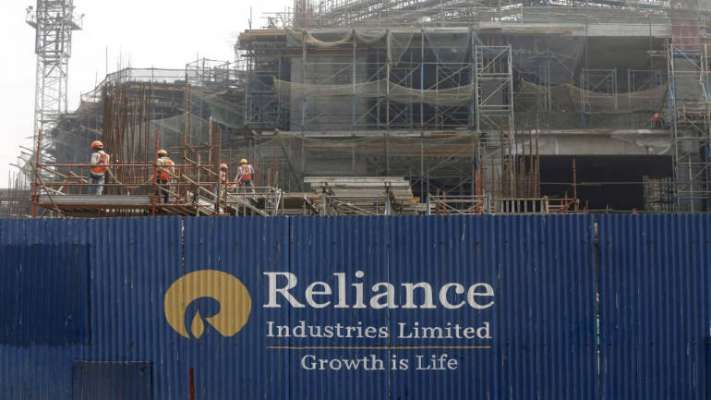 Reliance Industries Reports Record Profit Of Rs. 9,459 Crore In April-June?
Reliance Industries Reports Record Profit Of Rs. 9,459 Crore In April-June?
NEW DELHI:MMNN:28 July 2018
Reliance Industries on Friday reported a record net profit of Rs. 9,459 crore for the April-June period. The energy conglomerate had registered a net profit of Rs. 9,108 crore for the quarter ended June 2017, which included exceptional items worth Rs. 1,087 crore representing profit from divestment of stake in Gulf Africa Petroleum Corporation. Revenue for the three-month period ended June 30, 2018 stood at Rs. 1.41 lakh crore, 56.5 per cent higher compared with Rs. 90,537 crore in the year-ago period.
"We continue to focus on strong delivery through operational excellence in our portfolio of businesses. Financial results of 1Q FY19 underscore the strength of the petrochemicals we have reinforced over the last investment cycle. Our petrochemicals business generated record EBITDA with strong volumes and an upswing in polyester chain margins," said chairman and managing director Mukesh Ambani.
"Refining business performance remained steady despite the seasonal weakness in cracks. Continuing strength in global demand for oil products and implementation of more stringent environmental norms for marine fuels augurs well for our refining business," he said.
On a standalone basis, Reliance Industries' profit - which includes the Indian oil-to-retail conglomerate's refining, petrochemicals and oil and gas exploration and production businesses - was Rs. 8,820 crore versus Rs. 8,196 crore a year ago. The standalone number excludes retail and telecom operations. That compared with an average estimate of Rs. 8,643 crore from 10 analysts, according to Thomson Reuters.
Reliance Jio Infocomm, the telecom arm of Reliance Industries, posted a third straight quarterly net profit, as its cut-price plans continued to bring in more customers. Reliance Jio, which provides telecom services under brand Jio, posted a profit of Rs. 612 crore ($89.15 million) in the quarter ended June 30, versus Rs. 510 crore in the previous quarter. (Also read: Reliance Jio doubles customer base in 12 months, says Mukesh Ambani)
On performance of Reliance Jio, Mr Ambani said: "215 million customers within 22 months of start is a record that no technology company has been able to achieve anywhere in the world."
Shares in Reliance Industries ended 1.6 per cent higher at Rs. 1,128 on the NSE, ahead of the earnings announcement by the company.
 Vodafone Idea Gets Final Government Approval: Report?
Vodafone Idea Gets Final Government Approval: Report?
NEW DELHI:MMNN:26 July 2018
Department of Telecom has given final approval to Vodafone, Idea Cellular merger, news agency Press Trust of India reported citing government sources. At 3:15 pm, Idea Cellular shares were trading 4 per cent higher at Rs. 57.20 on the BSE, whose benchmark index was up 140 points at 36,998.
The combination will create India's largest mobile-phone company and help the firms compete with billionaire Mukesh Ambani's Reliance Jio Infocomm Ltd., which upended the world's second-largest mobile-phone market by offering free calls and cheap data. Idea has reported losses every quarter since Jio started services in September 2016.
The merger, announced in March 2017, will topple current market leader Bharti Airtel Ltd. and create a behemoth with 438.8 million subscribers.
 HDFC AMC IPO Opens: Should You Subscribe?
HDFC AMC IPO Opens: Should You Subscribe?
NEW DELHI:MMNN:25 July 2018
The IPO or initial public offer of HDFC Asset Management Company (AMC) opened for subscription on Wednesday. It is the most profitable AMC and the second largest in terms of assets under management (AUM) with a 14 per cent market share. By 4:00 pm, the 1.88 crore issue had received 1.77 crore bids. That meant a subscription of 0.94 times for HDFC AMC IPO, according to data from the National Stock Exchange or NSE. The price band of HDFC AMC IPO - worth an estimated estimated Rs. 2,787-2,800 crore - has been set at Rs. 1,095-Rs. 1,100.
HDFC Asset Management Co (HDFC AMC) is the asset management arm of the HDFC Ltd (Promoter) and was established in 1999. In 2001, Standard Life Investments acquired 26 per cent stake in HDFC AMC. As on March 2018, it managed an AUM of Rs. 2,91,985 crore out of which 51 per cent was equity AUM.
But should you subscribe to HDFC AMC IPO?
NDTV.com here brings to you what top brokerages say on HDFC AMC IPO:
Emkay Global said that HDFC AMC has maintained its market leadership in equity AUM (15.8 per cent share) and retail AUM (13.7 per cent share). Healthy traction from individual investors ensures consistency and lower volatility in AUM growth, it added. HDFC AMC has been generating stable returns for the past several years with the least capital requirement, which in turn has resulted in best-in-class return on equity.
However, any adverse impact on inflows, both for equity as well as debt funds, may impact overall revenues as well as profitability of the company, Emkay Global said.
According to Angel Broking, HDFC AMC is the most profitable AMC among top five AMCs. For FY18, HDFC AMC had reported profit after tax/average assets under management of 0.26 per cent, whereas the other top five players had reported the same in the range of 0.21-0.14 per cent, the brokerage noted.
Angel Broking gave a 'subscribe' call to HDFC AMC IPO citing huge potential for mutual fund industry's growth, strong return ratios, asset light business, higher dividend payout ratio and track record of superior investment performance of the company.
HDFC AMC also has strong brand recall value among customers, which can be attributed, in part, to the strength of its brand and strong parentage, said HDFC Securities. With an individual investor focused strategy, HDFC AMC has a customer base with a greater proportion of individual AUM in comparison to the country's mutual fund industry.
However, if investment products underperform, HDFC AMC's AUM could decline and adversely affect the revenues, reputation and brand. Historical growth rates may not be indicative of future growth and if it does not manage growth effectively, its financial performance could be adversely affected, the brokerage said. If techniques for managing risk are ineffective, HDFC AMC may be exposed to material unanticipated losses
 Gold Prices Plunge To 5-Month Low: 5 Things To Know
Gold Prices Plunge To 5-Month Low: 5 Things To Know
NEW DELHI:MMNN:18 July 2018
Gold prices on Wednesday tumbled by Rs. 250 to trade at over five-month low of Rs. 30,800 per 10 grams at the bullion market amid weakening global trend and considerable fall in demand from local jewellers, reported news agency Press Trust of India (PTI). Silver followed suit and dropped by Rs. 620 to Rs. 39,200 per kg on poor off take by industrial units and coin makers. Traders said sentiment was downbeat as gold prices slipped to their lowest in a year in global markets, as the dollar firmed after Federal Reserve Chairman Jerome Powell's US economic outlook reinforced views that the central bank is on track to steadily hike interest rates, eroding appeal of the precious metal.
Here are key things to know about gold and silver prices today:
1. Globally, spot gold was largely unchanged at $1,227.78 an ounce in early day trade. On Tuesday, it fell 1 per cent and hit its lowest since last July at $1,225.58 an ounce, reported news agency Reuters. US gold futures for August delivery were little changed at $1,227.80 an ounce.
Besides, muted demand from local jewellers and retailers at domestic spot markets too weighed on prices.
2. In Delhi, gold of 99.9 per cent and 99.5 per cent purity plunged by Rs. 250 each to Rs. 30,800 and Rs. 30,650 per 10 grams, respectively, a level last seen on February 8, 2018. The precious metal had lost Rs. 100 yesterday. Sovereign, however, remained unaltered at Rs. 24,700 per piece of eight grams.
3. Analysts expect the price of gold to dip to Rs. 29,500 per 10 grams this week.
"As far as mid-term trend in domestic gold prices is concerned, festive demand will start not before September. We may see a jump in physical demand for advance purchasing of jewellery in August since wedding season will kick-start post Diwali in November," says Gaurav Katariya, research head, commodities, Arihant Securities.
4. Following gold, silver ready dropped by Rs. 620 to Rs. 39,200 per kg and weekly-based delivery by Rs. 690 to Rs. 38,290 per kg.
5. Silver coins, on the other side, were unaltered at Rs. 74,000 for buying and Rs. 75,000 for selling of 100 pieces in scattered deals.
 HUL Share Price Falls 4% Despite Strong Q1 Earnings
HUL Share Price Falls 4% Despite Strong Q1 Earnings
NEW DELHI:MMNN:17 July 2018
Shares in HUL or Hindustan Unilever fell nearly 4 per cent on Tuesday, a day after the FMCG major reported strong quarterly earnings. HUL shares opened nearly 1 per cent lower at Rs. 1,770 on the BSE, and dipped to as much as Rs. 1,685.05 at the day's lowest point. On the broader NSE, HUL shares fell 3.9 per cent to hit an intraday low of Rs. 1,683.25. At 1:00 pm, HUL shares were trading more than 3 per cent lower on both the bourses. HUL was also the top laggard on benchmark indices Sensex and Nifty.
HUL registered a 19 per cent year-on-year rise in net profit at Rs. 1,529 crore in the quarter ended June, according to a regulatory filing post-market hours on Monday. The company had reported a net profit of Rs. 1,283 crore for the corresponding period a year ago. Total sales grew 3 per cent to Rs. 9,356 crore during the quarter, compared with Rs. 9,094 crore in the year-ago period.
Analysts said the quarterly performance of HUL was in line with their estimates.
"HUL has been enjoying a favorable base along with market share gains in the last 4 quarters. However, the base will be higher in the coming quarters. This may lead to relatively slower growth performance… Input inflation is high but co has enough levers to pass-on to consumer," said HDFC Securities.
The brokerage sees limited upside in HUL shares from the current juncture. It recently downgraded HUL to 'neutral' with a target price of Rs. 1,709.
Going forward, brokerage Edelweiss expects HUL to be a key beneficiary of "an anticipated rural recovery and herbal push". Edelweiss recommends ‘hold’ with a revised target price of Rs. 1,887.
HUL shares traded with large volumes. By afternoon, nearly 2.2 lakh HUL shares had changed hands, compared with a two-week average of 64,000
 US Plan On Work Permits For Spouses Of H-1B Visa Holders In Limbo
US Plan On Work Permits For Spouses Of H-1B Visa Holders In Limbo
NEW DELHI:MMNN:3 July 2018
The US has yet again missed the deadline to issue a notification on ending the H-4 visas, which are issued to spouses of H-1B visa holders, mostly held by highly-skilled Indian IT professionals. Earlier, the Department of Homeland Security (DHS) had informed a court that it was working to issue a Notice of Proposed Rule Making (NPRM) regarding H-4 visas in June this year. H-4 visas are essential for spouses of H-1B visa holders because they allow them to work. Former US President Barrack Obama, under a special order, had provided work authorization to spouses of H-1B visa holders under H-4 visa scheme.
Here are 10 latest updates on H-4 visas, issued to spouses of H-1B visa holders:
1) According to a report by news agency Press Trust of India (PTI), at the end of the month of June, the DHS did not give any explanation for not issuing the notice of proposed rulemaking (NPRM), which would have formally kicked off the process to terminate work authorization to spouses of H-1B visa holders.
2) "I have no updates to provide at this time," a DHS official told PTI, noting that he cannot speculate on when a decision would be made.
3) As recent as June, the DHS had insisted that there was no change in its plans to withdraw the Obama-era rule of providing authorization to certain categories of H-4 visa holders.
4) In February, the DHS had missed a similar deadline when it told a federal court, which was hearing a litigation, that it anticipated submitting to the Office of Management and Budget for review and clearance the proposed rule in time for publication in June 2018. (Also Read: US Announces 15,000 Additional Visas For Foreign Workers)
5) The United States district court of Columbia is hearing an ongoing petition by Save Jobs USA which has filed a lawsuit against the decision of the previous Obama administration to give work authorization to spouses of H-1B visa workers whose green card applications have been approved.
6) More than one lakh H-4 visa holders have been beneficiaries of the Obama-era rule.
7) The 2015 rule issued by the Obama administration allows work permits for spouses who otherwise could not be employed while H-1B visa holders seek permanent resident status - a process that can take a decade or longer.
8) The H-1B programme offers temporary US visas that allow companies to hire highly-skilled foreign professionals working in areas with shortages of qualified American workers.
9) Since taking office last January, the Trump administration has been talking about cracking down on the H-1B visa scheme.
10) During his election campaign, President Trump promised to increase oversight of H-1B and L-1 visa programmes to prevent their abuse. L-1 visa also allows for temporary transfer of foreign workers in the managerial, executive or specialized knowledge category to the US to continue employment with an office of the same employer.
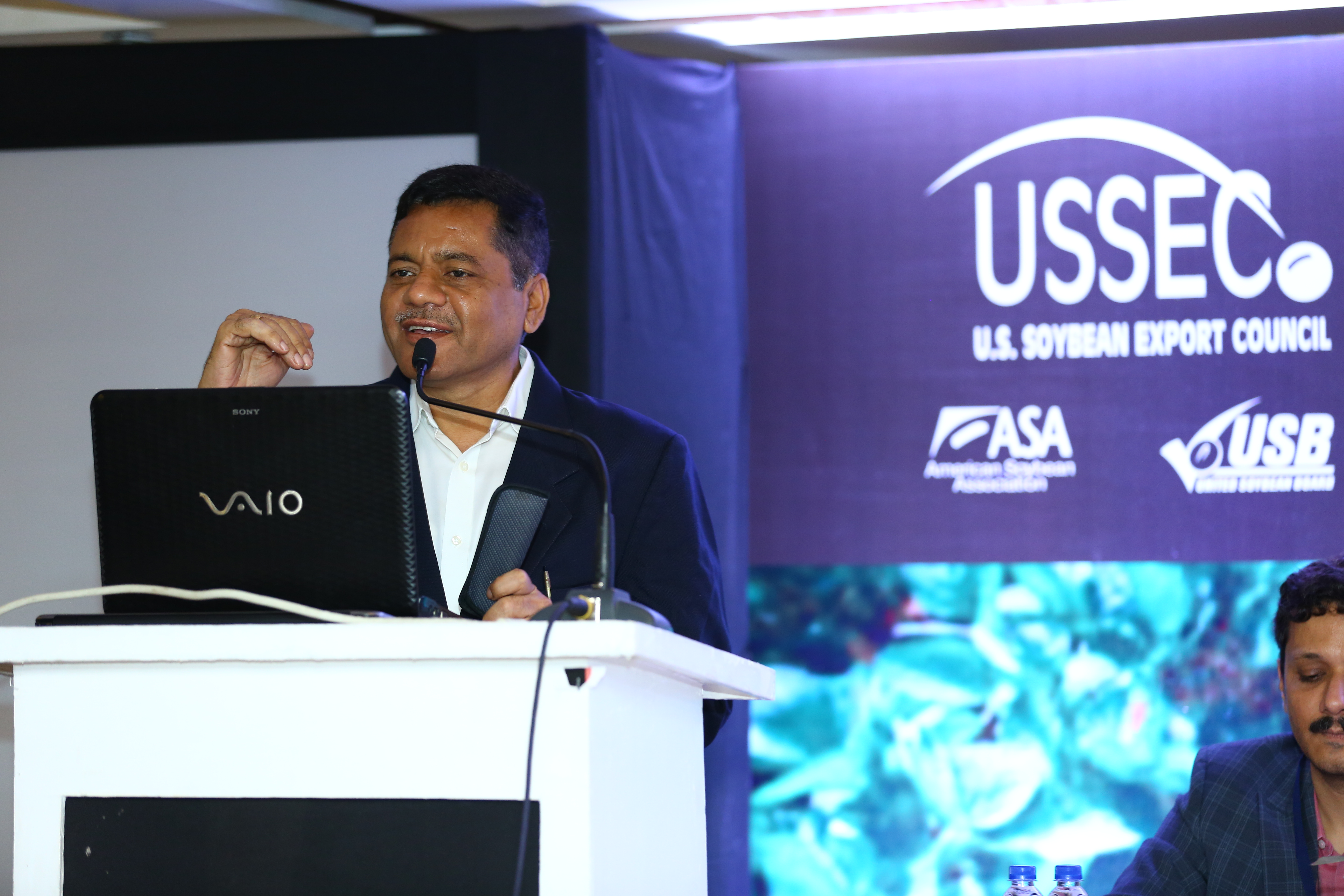 Indian Entrepreneurs educated on Soy food Processing prospects
Indian Entrepreneurs educated on Soy food Processing prospects
NEW DELHI:MMNN:2 July 2018
Mumbai, 2nd July 2018 : In order to encourage soy food processing, Conference on the “Entrepreneurship Development in Soy Food Processing “ was held at Mumbai. This program was organised by the US Soybean Export Council (USSEC) jointly with the Association of Food Scientist and Technologists (AFST) and involving various stakeholders from the industry, government, academia, agri. Policy experts, US department of Agriculture (USDA), Food Safety and Standards Authority of India (FSSAI), Solvent Extractors Association of India (SEAI) and the financial institutions etc.
Mr. P Muthumaran, Director FSSAI for the Western and Southern Region was the chief guest on the occasion.
Speaking on the soy food business potential in India and the role soy can play in health and nutritional security of India, Dr. Ratan Sharma of the USSEC stated that Soybean is one of the very few plants those provide a high quality protein with minimum saturated fat. Soybean helps people feel better and live longer with an enhanced quality of life. Soybeans contain all the three macronutrients required for good nutrition, as well as fiber, vitamins, minerals. Soybean protein provides all the essential amino acids in the amounts needed for human health. Protein in just 250 grams of soy bean is equivalent to protein in 3 liters of milk or 1 kg of mutton or 24 no’s of eggs. In addition to being a rich source of nutrients, soybean has a number of phytochemicals (isoflavones), which offer health benefits along with soy protein. Soy protein and isoflavones together contribute to a number of health benefits such as, cancer prevention, cholesterol reduction, keeping heart healthy, combating osteoporosis and menopause regulation. Being low in glycaemic index soy plays a very important role in maintaining the low sugar levels in diabetics.
Dr. Sharma further explained about the nutritional quality of the soy oil from USA. Besides the regular nutritious soy oil US has developed high oleic soy oil. High oleic soy oil is being very popular as industry preferred substitute for partially hydrogenated vegetable oils and are used in all manners of processed foods especially the snack foods for deep frying. High oleic soy oil is free from trans fats as well as lower in saturated fat and contains three times more of beneficial monounsaturated fatty acid compared to conventional soy oil.
As per Dr. sharma US Food and Drug Administration FDA approved Bunge North America’s petition for a qualified health claim linking soybean oil consumption to reduced risk of heart disease. Soybean oil is the US’ most commonly used ingredient and top dietary source of polyunsaturated fats. Soy oil is the second largest edible oil used in India. Soybean oil is considered heart-healthy oil as it’s cholesterol-free and low in saturated fatty acids – it contains 61 % poly-unsaturated fatty acids. Two fat components essential for health and wellbeing, linoleic and linolenic acids, are also found in the right proportions in soybean oil. It is also a good source of vitamin E. Like fish oils, soybean oil contains omega-3, known to be protective against heart disease and cancer. He told that US soy oil is known for its nutritional superiority in comparison with the soy oils from other origins.
Discussing about the Soy food business opportunities in India Dr. Sharma very clearly mentioned that raw material plays a major role to produce a quality product delivering proper nutrients and making a tasty product. Food specialty soybeans are not grown in India limiting the growth of soy food sector in lack of desired quality product with limited value addition possibilities. Dr. Sharma highly recommended the food specialty soybeans from USA which produces an excellent quality soy food with much better acceptability of the end product and excellent value addition possibility when compare with the Indian soybeans.
Mr. Adam Branson the senior Agri. Attaché of Agriculture Affairs at the Foreign Agriculture Services, USDA of the United States Consulate general at Mumbai explained that a huge opportunity exists for the agriculture products trade between India and the United States. Adam stated that Agriculture is one of the top economies of the US and we look forward India as a great partner to us for the agri. business and the related trade. Adam further discussed about the bilateral trade relations between US and India, environmentally sustainable production of soybeans, about agri. commodities and other areas of US agriculture and agri. Products where both the countries can work together.
Mr. G. Chandrasekhar, a senior agriculture policy and trade expert spoke about addressing the nutritional challenges and creating employment through soy food business. He replied the query on various aspects of the food and agriculture policies of the Indian government. Dr. Prabodh Halde, head regulatory affairs, Marico and president of AFST, India covered the regulatory norms on various food products, processing and labelling etc. Dr. BV Mehta talked about the supply and demand of the edible oils in India and he told that India has a great potential of using soybean oil. The consumption of soy oil is increasing because of its nutritional superiority to other edible oils. Mr. Indranil Chatterjee from the DuPont Nutrition presented about the protein rich foods and beverages made by using soy protein isolates and concentrates. Dr. Uday Annapure discussed about the scope and benefits of extrusion technology in the Indian food processing sector and about the phenomenal growth in this segment especially the soy nuggets (Soy Bari) which are very popular in India. Speaking on the nutritional and functional properties of the soybean oil Dr. Meena Mehta interpreted about the nutritional facts of the soybean oil and highlighted its nutritional and functional properties.
Some of the soy food start-ups shared their experience and the achievements in the soy food processing sector. Here it is very important to note that there are more than 2,000 soy food processing industries are there in India. This segment is growing at a rate of 12% on an annual basis.
Recently soy food processing has been immersed as a very good source of creating the employment opportunities on a small, medium and large scale. India is the fifth largest producer of soybeans but in lack of awareness on its nutrition and the proper processing technologies this product is not getting the acceptance in the Indian diet. Although the soy food processing sector is growing at a faster rate of 12% annually but still needs to develop with a pace to bridge the protein gap of the country and soy processing industries should be integrated to the nutrition intervention program for an easy access of the soy food products on local as well as regional level. This would be the best way to provide the low cost nutrition to the masses and creating employment opportunities through the soy food processing on small, medium and large scale.
This program was attended by a large number of people from the soy food industry, trade associations, nutrition professionals, scientists and professionals from the multinational companies from all over the country. The U.S. Soybean Export Council (USSEC) is a dynamic partnership of key stakeholders representing U.S. soybean producers, commodity shippers, merchandisers, allied agribusinesses and agricultural organizations. Through a global network of international offices and strong support in the U.S., USSEC provides trade and technical services as well as market access support in order to build a preference for U.S. soy and soybean products.
 June Factory Activity Grows At Fastest Pace This Year, Finds Survey
June Factory Activity Grows At Fastest Pace This Year, Finds Survey
NEW DELHI:MMNN:2 July 2018
BENGALURU: Factory activity grew at its fastest pace this year in June on robust output driven by solid demand, according to a business survey that also showed input costs increased the most in nearly four years. That points to continued strong economic activity in the quarter that ended in June, after Asia's third-largest economy grew at its quickest pace in nearly two years in January-March.
The Nikkei Manufacturing Purchasing Managers' Index, compiled by IHS Markit, rose to 53.1 in June from May's 51.2, the highest since December. The reading has been above the 50-mark, which separates growth from contraction, for 11 consecutive months.
"India's manufacturing economy closed the quarter on a solid footing against a backdrop of robust demand conditions, highlighted by the sharpest gains in output and new orders since last December," Aashna Dodhia, an economist at IHS Markit, said.
Orders from international markets rose at the strongest pace since February, Dodhia added.
IHS Markit made no mention of increasing global trade tensions, which are worrying manufacturers in many countries.
The June sub-index tracking input costs jumped to nearly a four-year high of 58.6 from May's 54.7 per cent, indicating a further rise in inflationary pressures which manufacturing firms are at the moment reluctant to pass on entirely to customers.
Retail inflation is rising in India, and through May was above the Reserve Bank of India's medium-term target of 4 seven straight months in May. This bolsters expectations the central bank, which raised the key interest rate in June, will increase it again in August.
While manufacturing firms in June increased hiring at the fastest pace since December, concerns over rising price pressures and higher interest rates pushed down the long-term output index - a gauge of optimism on future business - to an eight-month low.
"The dip in optimism partly reflected concerns of a potential market slowdown in the year ahead," Dodhia said. "Indeed, some of the key challenges to the 12-month outlook include tighter domestic monetary policy and persistently high inflation."
 Tata Motors Shares Fall Over 10% In Two Days. Should You Buy?
Tata Motors Shares Fall Over 10% In Two Days. Should You Buy?
NEW DELHI:MMNN:26 Jun 2018
Tata Motors shares declined over four per cent on Tuesday, extending losses to the second straight day. Tata Motors shares closed 4.4 per cent lower at Rs. 276.55 apiece on the Bombay Stock Exchange. Tata Motors shares opened at Rs. 289.70 and hit an intraday low of Rs. 275.10, before settling at Rs. 276.55 for the day. That marked a decline of more than 10 cent in two days. Analysts say that concerns relating to the automaker's higher-than-expected capex for its subsidiary Jaguar Land Rover hurt the investor sentiment. Tata Motors shares were the biggest laggards on Sensex and Nifty.
In an investor meeting last week, Tata Motors-owned Jaguar Land Rover revealed plans of investment worth 13.5 billion pounds (around Rs. 1.2 lakh crore) in the next three years. Investment will be 4.5 billion pounds per annum from FY19 to FY21 and subsequently targeted at 12-13 per cent of turnover, JLR said in the investor presentation.
The investments will be made on new models, technology, capacity with significant amount of it on electrification, and on a new platform, modular longitudinal architecture (MLA). The company also said it will launch four new models by FY24.
In a research note, brokerage Edelweiss termed the capital expenditure higher than expectations. "Management commentary during JLR's investor day reaffirms our core concern on FCF (free cash flow) due to the higher-than-expected capex and lower volumes. Moreover, we perceive normalising margin in China as an incremental negative... We appreciate JLR's efforts and capabilities on various technological aspects, enabling it to now be at the forefront of disruption in the global automobile industry," it said.
Jaguar Land Rover has "effectively bridged the technological gap with peers over the past eight years, enabling it to be at the fore front of electrification and adopt flexible manufacturing", said Edelweiss, which maintains a 'hold' call on Tata Motors shares.
A K Prabhakar, head of research at IDBI Capital, said Jaguar Land Rover's big capex plans led investors into a state of panic, leading to the recent fall in Tata Motors shares. He said investors were worried about the company's cash flow and top line due to the capex plans.
Mr Prabhakar, however, believes the stock can be a good buying opportunity below the price of Rs. 250 (5 per cent from current levels).
Tata Motors shares traded with heavy volumes on Tuesday. On the BSE, 20 lakh Tata Motors shares changed hands, compared with a two-week average of nearly 6 lakh.
Tata Motors shares are trading below all important moving averages, which indicates that there may be further bearishness in the short-term, said Rajesh Palviya, head-technical and derivative research at Axis Securities. "The stock is trading near its important support level of Rs. 270-265. If the stock holds this support level then some pullback action can be seen from these levels. On the breakdown of Rs. 265, it will resume its downtrend and it can slide further towards Rs. 255-250 level in short term," he said.
"On the higher side, Rs. 305-315 are likely to act as stiff resistance for any minor pullback action in the near term."
 Gold Prices Continue Rising Streak For Third Day: 5 Things To Know
Gold Prices Continue Rising Streak For Third Day: 5 Things To Know
NEW DELHI:MMNN:25 Jun 2018
New Delhi: Gold gained Rs. 50 to close at Rs. 31,650 per ten gram at the bullion market on Monday on persistent buying by local jewellers despite a weak trend overseas, reported news agency Press Trust of India (PTI). Silver, however, fell by Rs. 100 to Rs. 40,900 per kg on reduced offtake by industrial units and coin makers. Traders said continued buying by local jewellers to meet increased demand for jewellery at domestic spot markets mainly kept gold prices higher, but a weak trend overseas capped the rise.
Here are key things to know about gold and silver prices today:
1. Globally, gold fell 0.20 per cent to $1,266.30 an ounce and silver slipped 0.55 per cent to $16.33 an ounce in Singapore on a strong US dollar amid prospects of higher interest rates. A depreciating rupee against the dollar making imports of gold costlier also supported the uptrend, traders added.
2. In the national capital, gold of 99.9 and 99.5 per cent purity advanced by Rs. 50 each to Rs. 31,650 and Rs. 31,500 per ten gram, respectively. It had gained Rs. 30 in the previous two days.
3. Sovereign however remained unaltered at Rs. 24,800 per piece of eight gram in limited deals.
4. On the other hand, silver ready fell by Rs. 100 to Rs. 40,900 per kg and weekly-based delivery by Rs. 115 to Rs. 39,680 per kg.
5. Silver coins, however, continued to trade at last level of Rs. 76,000 for buying and Rs. 77,000 for selling of 100 pieces
 US Child Separation Policy: 5 Things Microsoft CEO Satya Nadella Said
US Child Separation Policy: 5 Things Microsoft CEO Satya Nadella Said
NEW DELHI:MMNN:20 Jun 2018
The Donald Trump administration is drawing criticism for separating families with the children while it cracks down on illegal immigrants. The strict anti-immigration stance is an offshoot of a policy, announced in April, that directs that all immigrants apprehended while crossing the US-Mexico border illegally should be criminally prosecuted.
Parents referred by border agents for prosecution are held in federal jails, while their children are moved into border shelter facilities under the custody of the Office of Refugee Resettlement, a Department of Health and Human Services agency, reported Reuters. The problem has turned so acute that 2,342 children had been separated from their parents at the US-Mexico border between May 5 and June 9, said US Customs and Border Protection, Reuters reported.
The policy has sparked condemnation from politicians, United Nations officials, medical professionals, and rights activists and corporate bigwigs. Even Microsoft's chief executive officer (CEO) Satya Nadella also condemned the move, that too quite harshly.
In a blog post that he shared on Wednesday on LinkedIn, he said that he is appalled at the abhorrent policy of separating immigrant children from their families at the southern border of the US.
Five Things That Satya Nadella Said On US immigration policy:
1. New policy is cruel and abusive: This new policy implemented on the border is simply cruel and abusive, and we are standing for change. Today (Microsoft's president) Brad detailed our company's position on this issue, as well as the immigration legislation currently being considered in Congress, and I encourage you to read this.
2. Nation of Immigrants: America is a nation of immigrants, and we're able to attract people from around the world to contribute to our economy, our communities and our companies. We are also a beacon of hope for those who need it the most. Like many of you, I am appalled at the abhorrent policy of separating immigrant children from their families at the southern border of the US. As both a parent and an immigrant, this issue touches me personally.
3. Credits immigration policy for own success: I consider myself a product of two amazing and uniquely American things - American technology reaching me where I was growing up that allowed me to dream the dream and an enlightened immigration policy that then allowed me to live that dream. My story would not have been possible anywhere else.
0
COMMENTS4. Microsoft is not party to this: I want to be clear: Microsoft is not working with the U.S. government on any projects related to separating children from their families at the border. Our current cloud engagement with U.S. Immigration and Customs Enforcement (ICE) is supporting legacy mail, calendar, messaging and document management workloads.
5. Immigration policy is our strength: The immigration policy of this country is one of our greatest competitive advantages, and this is something we must preserve and promote. America is a nation of immigrants, and we're able to attract people from around the world to contribute to our economy, our communities and our companies. We are also a beacon of hope for those who need it the most. This is what makes America stronger. We will always stand for immigration policies that preserve every person's dignity and human rights. That means standing with every immigrant who works at Microsoft and standing for change in the inhumane treatment of children at the U.S. border today.
 Narayana Murthy Created A "Dream" Company In Infosys, Says Ex-Top Official
Narayana Murthy Created A "Dream" Company In Infosys, Says Ex-Top Official
NEW DELHI:MMNN:19 Jun 2018
HYDREABAD: As IT major Infosys completed 25 years of its listing on the stock exchange, a former senior official of the firm paid rich tributes to the co-founder NR Narayana Murthy for creating the "dream" company. "I don't think the country is going to see one more Infosys again because Infosys has been a dream company for many generations," said ex-Chief Financial Officer V Balakrishnan. The Bengaluru-headquartered company, he said, created the middle-class aspiration in the country and made them think global.
Balakrishnan saw it as an extraordinary story of how a few people with little background came together, built a global company and ran it in a legal and ethical manner, still creating enormous amount of wealth and share it with all stakeholders. "I think all this had been possible because of one iconic leader -- Murthy who had created the dream of Infosys which attracted the best talent to come and work and make their company much bigger," he told PTI.
Balakrishnan also said Infosys, which last week celebrated the silver jubilee of its listing in 1993, to some extent institutionalised the capital market. When Infosys was listed two-and-half decades ago, the Indian capital market was not institutionalised. With global aspiration, the then small company set benchmark for disclosures and value system and enhanced the profile for the whole corporate world in India, according to him. "If you look at the SEBI's recommendations on corporate governance, most of them had been followed (earlier) by Infosys, which was later mandated by the regulator to all companies to follow. So, it improved the whole profile of the corporate world in India, and enhanced corporate governance standards", Balakrishnan said.
Infosys put value before profits, and Murthy always demonstrated leadership by example which attracted a good team of people which came and made the dream much bigger, he said. As long as Infosys sticks to its core value system, and governance standards, it would continue to do well, he said.
(Also Read: Infosys CEO Salil Parekh To Receive Rs. 13 Crore Equity Grant)
Infosys as a company, Balakrishnan said, has tremendous amount of goodwill of investors and stakeholders, and "everyone wants the company to perform well." The company has done extraordinarily well in the last many years and created tremendous amount of wealth for investors. "I don't see why it (the same thing) will not happen for the next 25 years. Key thing is they should not lose their sight on core value system and principles," he added.
 ICICI Bank Board Meets On Allegations Against CEO Chanda Kochhar: Report
ICICI Bank Board Meets On Allegations Against CEO Chanda Kochhar: Report
NEW DELHI:MMNN:18 Jun 2018
S&P BSE Sensex gained 39.80 points or 0.11 per cent and closed at 35,483.47 on Monday while NSE Nifty gained 19.30 points or 0.18 per cent and closed at 10,786.95. Stock markets ended positive today for second session. Optimistic buying in blue-chip stocks ahead of release of industrial production data drove stocks higher, particularly in early trade today. Retail inflation data for May is scheduled to be released on Tuesday. Sentiments were also lifted by gains in Asian stocks ahead of key summit between US President Donald Trump's and North Korean leader Kim Jong Un. Markets were also driven by state-run lenders such as State Bank of India (SBI) after the government set up a panel to explore mechanisms for resolving the burgeoning bad debts plaguing the financial sector.
At the end of the session today, Bharti Airtel, Sun Pharma, Maruti, Dr Reddy's, Induslnd Bank and Adani Ports were the top gainers on 30-share Sensex pack while Tata Steel, Power Grid, Coal India, Yes Bank and ICICI Bank were the major losers.
Bharti Airtel, Bajaj Finance and Grasim were leading the pack of Nifty gainers. While the main losers on NSE were Tata Steel, Power Grid, HCL Tech.
Among sectoral indices, pharma, metals and IT stocks traded higher, while midcaps, too, saw good gains today.
The rupee strengthened marginally against the US dollar on Monday.
"While DIIs (Domestic Institutional Investors) have been buying consistently, FIIs (Foreign Institutional Investor) have also bought in F and O segment in the last few days. This accompanied by sector specific positive news flows in pharma and PSU Banks has kept the market buoyant", said Viral Berawala, CIO, Essel Mutual Fund.
Investors are now awaiting May inflation data due on Tuesday for further cues about the local economy.
Retail inflation likely jumped further in May to a four-month high, primarily driven by a surge in energy prices, according to a Reuters poll of economists, suggesting more policy tightening from the central bank is coming.
The Nifty PSU bank index gained as much as 1.9 per cent to a two-month high. SBI rose 2 per cent to its highest since 26 February today, while Punjab National Bank jumped 4.7 per cent.
The Nifty pharma index gained 2.1 per cent, boosted by Sun Pharmaceutical Industries Ltd after the US health regulator issued a "voluntary action indicated status" for the company's Halol plant.
Inox Wind Ltd dropped 8.6 per cent to a record low after the company said its auditors Patankar & Associates (P&A) resigned, citing 'time constraints'. (With inputs from Agencies)
 Sensex Rises For Second-Session, Nifty Settles At 10,786; Bharti Airtel Rises Over 3%
Sensex Rises For Second-Session, Nifty Settles At 10,786; Bharti Airtel Rises Over 3%
NEW DELHI:MMNN:11 Jun 2018
S&P BSE Sensex gained 39.80 points or 0.11 per cent and closed at 35,483.47 on Monday while NSE Nifty gained 19.30 points or 0.18 per cent and closed at 10,786.95. Stock markets ended positive today for second session. Optimistic buying in blue-chip stocks ahead of release of industrial production data drove stocks higher, particularly in early trade today. Retail inflation data for May is scheduled to be released on Tuesday. Sentiments were also lifted by gains in Asian stocks ahead of key summit between US President Donald Trump's and North Korean leader Kim Jong Un. Markets were also driven by state-run lenders such as State Bank of India (SBI) after the government set up a panel to explore mechanisms for resolving the burgeoning bad debts plaguing the financial sector.
At the end of the session today, Bharti Airtel, Sun Pharma, Maruti, Dr Reddy's, Induslnd Bank and Adani Ports were the top gainers on 30-share Sensex pack while Tata Steel, Power Grid, Coal India, Yes Bank and ICICI Bank were the major losers.
Bharti Airtel, Bajaj Finance and Grasim were leading the pack of Nifty gainers. While the main losers on NSE were Tata Steel, Power Grid, HCL Tech.
Among sectoral indices, pharma, metals and IT stocks traded higher, while midcaps, too, saw good gains today.
The rupee strengthened marginally against the US dollar on Monday.
"While DIIs (Domestic Institutional Investors) have been buying consistently, FIIs (Foreign Institutional Investor) have also bought in F and O segment in the last few days. This accompanied by sector specific positive news flows in pharma and PSU Banks has kept the market buoyant", said Viral Berawala, CIO, Essel Mutual Fund.
Investors are now awaiting May inflation data due on Tuesday for further cues about the local economy.
Retail inflation likely jumped further in May to a four-month high, primarily driven by a surge in energy prices, according to a Reuters poll of economists, suggesting more policy tightening from the central bank is coming.
The Nifty PSU bank index gained as much as 1.9 per cent to a two-month high. SBI rose 2 per cent to its highest since 26 February today, while Punjab National Bank jumped 4.7 per cent.
The Nifty pharma index gained 2.1 per cent, boosted by Sun Pharmaceutical Industries Ltd after the US health regulator issued a "voluntary action indicated status" for the company's Halol plant.
Inox Wind Ltd dropped 8.6 per cent to a record low after the company said its auditors Patankar & Associates (P&A) resigned, citing 'time constraints'. (With inputs from Agencies)
 RBI Hikes Repo Or Key Lending Rate To 6.25%, Home Loan EMIs Likely To Rise
RBI Hikes Repo Or Key Lending Rate To 6.25%, Home Loan EMIs Likely To Rise
NEW DELHI:MMNN:6 Jun 2018
The Reserve Bank of India (RBI) on Wednesday hiked the key lending or repo rate by 25 basis points to 6.25 per cent as it announced its second bi-monthly monetary policy statement for 2018-19. The repo (or repurchase) rate is the rate of interest which the RBI charges to lend short-term loans to the commercial banks. The reverse repo rate under which the RBI borrows from banks was adjusted to 6 per cent. "The decision of the MPC (Monetary Policy Committee) is consistent with the neutral stance of monetary policy in consonance with the objective of achieving the medium-term target for consumer price index (CPI) inflation of 4 per cent within a band of +/- 2 per cent, while supporting growth," the RBI said in its policy statement. All six monetary policy committee (MPC) members voted in favour of the repo rate hike. Dr Chetan Ghate, Dr Pami Dua, Dr Ravindra H. Dholakia, Dr Michael Debabrata Patra, Dr Viral V. Acharya and Dr Urjit R. Patel voted in favour of the decision.
The RBI, however, maintained a neutral stance in the policy statement and retained the GDP growth for 2018-19 at 7.4 per cent.
RBI's decision to hike repo rate was guided by a sharp spike in retail inflation which rose sharply to 4.6 per cent in April. Some experts, however, feel that the hike is positve for "savers". "Recent hike in crude prices & better GDP for last quarter of FY 18 suggest inflation trajectory may be on the higher side. Though, this may put some pressure on borrowers, it is positive news for the savers in the economy," said Anita Gandhi, Whole Time Director at Arihant Capital Markets.
The RBI kept the retail inflation in the range of 4.7-5.1 per cent in the first half of 2019 and 4.4 per cent in the second half of the fiscal.
RBI's decision was surprising because most experts were expecting it to take a hawkish stance in the June policy review and to go for a rate hike only in August.
Immediately after the announcement, the S&P BSE Sensex was trading 222.81 points or 0.64 per cent higher at 35,126.02 while the broader Nifty50 of the National Stock Exchange traded at 10,646.05, with a gain of 52.90 points or 0.50 per cent. The banking stocks turned negative as the Nifty Bank index lost 0.14 per cent.
Earlier, a Reuters poll, which was taken before the figures for the gross domestic product (GDP) were released, 21 of 57 economists, or about 40 per cent, expected the RBI to raise interest rates in the June meeting. However, in a snap poll of 56 economists taken after the GDP data release, 26 of the respondents, or about 46 per cent, said that they expect the RBI to take the repo rate higher in June.
7
COMMENTSIn the January-March quarter, the economic growth or gross domestic product (GDP) accelerated to 7.7 per cent, which is a near 2-year high.
Retail inflation rose to 4.58 per cent, after easing for three straight months while wholesale inflation rose to 3.18 per cent in April. This was the sixth straight month in which retail inflation level was higher than the RBI's medium-term target of 4 per cent
 Services Activity Shrinks For 1st Time In 3 Months, Shows Survey
Services Activity Shrinks For 1st Time In 3 Months, Shows Survey
NEW DELHI:MMNN:5 Jun 2018
Activity in the service industry shrank in May for the first time in three months as new orders stagnated, but business optimism was the highest since 2015 on expectations that demand will turn around, a business survey showed. The Nikkei/IHS Markit Services Purchasing Managers' Index fell to 49.6 in May from April's 51.4, sinking below the 50-mark that separates growth from contraction. While data last week showed that Asia's third-largest economy grew at its quickest pace in nearly two years, the latest PMI survey suggested it may have trouble maintaining that momentum.
Last quarter's faster growth, coupled with accelerating inflation, have dramatically changed expectations for the Reserve Bank of India's monetary policy. It is now expected to change its stance to hawkish as early as a policy review on Wednesday and raise rates in August.
A recent surge in the price of oil, the biggest import item, and a sharp weakness in the rupee will be inflationary, keeping prices on an up-trend.
While the jump in input prices was evident in the latest survey, firms continued to absorb most of the cost pressure to attract dwindling demand, pressuring profit margins.
The new business sub-index, an indicator of domestic and foreign demand, fell sharply to 50.2 in May from April's 51.4, near the neutral level and remaining well below the long-run mean average of 54.3.
"The performance of the service sector was disappointing in May," Aashna Dodhia, an economist at IHS Markit, said in a release.
"India saw the slowest improvement in the health of the overall economy since February in May, whilst the latest survey showed the effects of higher global oil prices as the private sector recorded the most marked input cost inflation for three months."
The survey also showed firms were turning more cautious about hiring, with the pace of job creation easing to the weakest so far this year. If the labour market continues to soften, it could put pressure on Prime Minister Narendra Modi's government ahead of next year's general elections.
A similar survey on Friday showed the factory activity grew at a weaker pace in May from the previous month, as weak domestic demand proved a drag on output.
Taken together, they pushed the composite PMI - which includes both manufacturing and services - to 50.4 in May from April's 51.9, barely above the 50 mark that shows growth and its lowest reading in three months.
However, services firms remained optimistic about the future, with the business expectations index rising to its highest since January 2015.
The performance of the service industry is crucial for the economy as it contributes about 60 per cent to gross domestic product.
 IDBI Bank CEO Mahesh Jain Appointed As RBI Deputy Governor
IDBI Bank CEO Mahesh Jain Appointed As RBI Deputy Governor
NEW DELHI:MMNN:4 Jun 2018
State-run IDBI Bank CEO Mahesh Kumar Jain was appointed as a deputy governor of the Reserve Bank of India (RBI), the government announced on Monday. His appointment is for three years, Rajeev Kumar, secretary, Department of Financial Services at the Ministry of Finance, said on Twitter. Mr Jain has more than 30 years of experience in the banking sector. He has in the past served on boards of Exim Bank, NIBM (National Institute of Bank Management) and IBPS (Institute of Banking Personnel Selection).
Mr Jain began his banking career with Punjab National Bank.
Mr Jain had assumed charge as managing director and CEO of IDBI Bank with effect from April 3 last year. Before that, he was managing director and CEO of Indian Bank, from November 2015 to March 2017, the tweet added.
Mr Jain had joined Indian Bank as an executive director in September 2013, according to IDBI Bank's website. Prior to joining Indian Bank, he served as a general manager with Syndicate Bank.
Mr Jain holds an MBA and an MCom. Besides. His qualifications include a CAIIB (Certified Associate of Indian Institute of Banking), a CFA (Chartered Financial Analyst) and an FRM (Financial Risk Manager).
 ICICI Bank Denies Report On Sending CEO Chanda Kochhar On Leave
ICICI Bank Denies Report On Sending CEO Chanda Kochhar On Leave
NEW DELHI:MMNN:1 Jun 2018
ICICI Bank on Friday denied a recent news report that said CEO Chanda Kochhar has been asked to go on leave until an independent enquiry on alleged cases of impropriety is concluded. "She is on her annual leave which was planned in advance," ICICI Bank, the country's largest private sector bank, said in a clarification to stock exchanges. The Mint newspaper report, citing sources, had also said that Ms Kochhar has been asked to "proceed on indefinite leave from the company...until an independent enquiry announced by the lender's board to probe alleged cases of impropriety is concluded." ICICI Bank's board also denied that "it has appointed any search committee to find her successor".
ICICI Bank had said earlier this week that it will institute an inquiry into the allegations raised by an anonymous whistle blower against chief executive Ms Kochhar. The bank is battling allegations that she allegedly favoured Videocon Group in its lending practices.
ICICI, India's third-biggest lender by assets, said the probe, headed by an independent person, would examine allegations that the chief executive did not adhere to provisions relating to the bank's code of conduct and whether her actions involved "conflict of interest".
Market regulator Sebi had also earlier served a notice on Chanda Kochhar on dealings of the bank with Videocon Group and Nupower, an entity in which her husband Deepak Kochhar has economic interests, ICICI Bank said.
Appropriate response would be submitted to the Sebi, the bank had said in a stock exchange filing.
1
COMMENTSThe CBI has launched a preliminary investigation into Rs. 3,250 crore loan ICICI Bank had extended to Videocon in 2012 and the possible role of Deepak Kochhar.
ICICI Bank had in the March quarter reported its smallest quarterly profit in two years as stricter RBI rules forced the bank to account for more bad loans. Net profit for its fiscal fourth quarter to March 31 almost halved to Rs. 1,020 crore
 RBI May Move Away From Neutral Stance, Turn Hawkish In June, Say Experts
RBI May Move Away From Neutral Stance, Turn Hawkish In June, Say Experts
NEW DELHI:MMNN:31 May 2018
BENGALURU: The Reserve Bank of India (RBI) will hike rates in August on concerns that already above-target inflation will climb further, according to economists in a Reuters poll, in contrast to a survey just a month ago which saw an increase only in the second half of 2019. That dramatic shift in expectations was driven by the annual consumer price inflation accelerating in April to 4.58 per cent, above the central bank's target of 4 per cent for the sixth month in a row, after easing in each of the three previous months.
The May 24-30 poll of nearly 60 economists showed the RBI will hike its repo rate by 25 basis points to 6.25 per cent in August.
While the median suggests the RBI will keep rates on hold when it meets on June 6, about 40 per cent of the economists polled expected a hike next week.
"As global market turmoil takes its toll, we are changing our RBI policy rate call from an extended pause to a 25 basis point hike at the August meeting," said Kunal Kundu, India economist at Societe Generale.
"The RBI may announce a change in policy stance during the June meeting and follow that up with a hike in August."
Kundu said that while RBI's inflation expectation has been "erring on the side of hawkishness, with actual inflation mostly relatively underwhelming, the latest inflation data, though not too high, raises the prospect of a rate hike."
The inflation rate increased due to higher domestic food costs and crude oil prices, which hit $80.50 a barrel on May 17, their highest since November 2014.
With the country importing 80 per cent of its fuel needs and government spending increasing before national elections next year - which will likely add to price pressures - expectations have firmed for the RBI to move away from a neutral stance next week.
Out of 42 economists who answered an extra question, 24 said they expect the central bank to change its monetary policy stance to a tightening bias in June. More than 35 per cent anticipated that in August.
Just last month, a majority said the RBI would turn hawkish by December.
Currently, the RBI estimates consumer inflation of 4.7-5.1 per cent in April-September before dipping to 4.4 per cent for the remainder of this fiscal year.
A total of 19 out of 31 economists who answered another question said the RBI would revise inflation projections up. Eleven said it would be unchanged and one said it would be revised down.
"The RBI cut its inflation forecasts based on the weakness of observed inflation the first couple of months of the year, so it was not premature to cut the forecasts," said Shilan Shah, senior India economist at Capital Economics.
"It did note some upside risks to the inflation outlook, some of which have come to fruition. So it is likely that forecasts will now be revised up."
The first three months of 2018 likely saw the fastest economic expansion since July-September 2016. Data for the latest quarter will be announced later on Thursday.
0
COMMENTSMore than 80 percent of the 30 economists who answered an extra question said the RBI would keep its growth projections for 2018/19 unchanged. Two predicted an upgrade and three said it would be revised lower.
 State Bank Of India (SBI) Hikes Interest Rate On Fixed Deposits
State Bank Of India (SBI) Hikes Interest Rate On Fixed Deposits
NEW DELHI:MMNN:30 May 2018
Here is some good news for savers. India's biggest lender State Bank of India (SBI) has revised its interest higher on retail fixed deposits or FDs below Rs. 1 crore. The revised rate on SBI FDs will be effective from May 28. SBI has revision interest rates by up to 25 basis points in select maturities, according to the bank's website. Interest rate on SBI fixed deposits with a maturity of one year to less than two years has been increased to 6.65 per cent for the public, from 6.4 per cent earlier. Senior citizens will get an interest rate of 7.15 per cent as compared to 6.9 per cent earlier.
SBI fixed deposits with a maturity of two years to less than three years will fetch an interest rate of 6.65 per cent, higher than 6.6 per cent earlier. Senior citizens will get 7.15 per cent as compared to 7.10 per cent earlier.
The interest rates across other maturities have been kept unchanged. For example, SBI will offer an interest rate of 5.75 per cent on fixed deposits with a maturity of seven days to 45 days, 6.25 per cent on 46 days to 179 days and 6.35 per cent on 180 days to 210 days. Other maturity brackets of 211 days to less than one year will fetch 6.40 per cent, three years to less than five years will offer 6.70 per cent and five years and up to 10 years will give 6.75 per cent.
With SBI increasing its interest rate on fixed deposits, other banks are also expected to follow suit.
 MTNLs Difference In Pay Scales, Debt Impede Merger, Says BSNL Head
MTNLs Difference In Pay Scales, Debt Impede Merger, Says BSNL Head
NEW DELHI:MMNN:29 May 2018
Mumbai: Bharat Sanchar Nigam (BSNL) feels a merger with MTNL will be positive for both the companies,but there are a few impediments like the later's huge debt and the difference between pay scales which need to be sorted out, a top official has said. However, there is no specific plan on the merger in the works at present, beyond the appointment of a consultant by the government.
The state-run telco has inked a pact with Softbank to co-work on "interest areas" and is also in talks with the Japanese telecom company's investee company Paytm for a tie-up, the official said. "Merger between the two (MTNL and BSNL) is going to begood for both the companies. Lets take the argument that itis going to be good, but there are various issues that need to be sorted out," its chairman and managing director Anupam Shrivastava told PTI recently. The impediments include MTNLs debt of over Rs. 16,000 crore as of December 2017 and the difference between the pays scales for employees of both the companies, he said.
Another difficult factor will be MTNL being a widely-owned listed entity, he added. In the comments that come after telecom minister Manoj Sinha has denied any plan to merge the two state-run loss making telcos, Shrivastava said there is no specific plan in the works. "Not at this point of time. The government has appointed a consultant to frame the timeline and road map for the merger of BSNL and MTNL," he said, when asked if there isa plan to merge the two. The CMD, however, declined to elaborate both on the tie-up with Softbank and proposed joining hands with payments bank Paytm. "At this point of time, an agreement has been signed(with Softbank) and we are working on various interest areas...Lets see what happens," he said, making it clear that it does not involve equity changing hands.
0
COMMENTSHe said while the company, which has a reach into allthe corners of the country, has no plans to venture into thepayments bank space as has been done by many other telcos,he said. BSNL has launched a mobile wallet in association withlargest lender SBI and will be working to promote that aswell, he said. He said FY19 will be a year of transition, where ithopes to increase revenue on greater volumes and expandingmarket share, even as it continues to shed average revenue peruser (ARPUs). After the arrival of the deep-pocketed Reliance Jio,BSNL has actually seen its market share increase and hopes tocontinue this, he said. The state-run player wants to take competition"head-on" and is working on a strategy that involves "meetingtariff by tariff," Shrivastava said.
 Good Days For India Inc In Foreign Loan Market May Soon End: Report
Good Days For India Inc In Foreign Loan Market May Soon End: Report
NEW DELHI:MMNN:28 May 2018
The good days for India Inc. in the offshore syndicated loans market may soon be over, as foreign banks pinched by their own rising borrowing costs balk at the lowest lending rates in a decade.
"India may be approaching a turning point for loan pricing to come up a bit to facilitate syndication," said Samuel Tan, co-head of loan syndication and distribution for United Overseas Bank in Singapore.
As the Federal Reserve gears up for more interest-rate hikes, a surging dollar is also fueling bets that developing nations may also raise rates faster than anticipated. That's all pressuring some global banks' cost of funding. As a consequence, there are signs that foreign lenders are growing more selective with Indian loans, even as they cheer signs that the nation is moving toward cleaning up about $210 billion of non-performing assets.
In another sign of weakening demand from global banks, more Indian companies have been forced to rely on a smaller group of lenders to underwrite borrowings or to use their relationships to strike so-called club deals.
Companies may get cheaper borrowing costs through the club arrangements. But doing so makes them reliant on a smaller group of banks, creating the risk that any shift in those lenders' willingness to extend funds could hamstring the firms.
Indian Railway Finance Corp. hired lenders to arrange loan facilities, more than two months back, but is yet to start marketing to a wider group of banks in syndication. IndusInd Bank's $500 million loan led by six mandated lead arranging banks, or MLABs, and signed in April, only drew three banks in syndication. The $249 million loan for Great Eastern Shipping Co. unit, Greatship India, attracted two participating lenders which took over half of the allocation. Birla Carbon, a holding company of conglomerate Aditya Birla Group, opted to only seek lenders at top-ticket levels, rather than seeking a larger group of banks. Hindustan Petroleum Corp., which mandated a $300 million 3Y facility earlier this year, has decided against marketing the loan in general syndication, according to people familiar with the matter, who are not authorized to speak publicly and asked not to be identified.
The ability for lead banks to sell down Indian loans is decreasing due to low interest margins, according to Sandeep Bhatt, Mumbai-based senior regional manager for India at Export Development Canada.
1
COMMENTS"In some cases, bankers are asking borrowers to bring their relationship banks as lenders to overcome this problem," Bhatt said. "Pricing for large corporates is not expected to go down below current levels for the next six months."
 Will "Brush Up Coding Skills": Co-Founder Sachin Bansal Who Quit Flipkart
Will "Brush Up Coding Skills": Co-Founder Sachin Bansal Who Quit Flipkart
NEW DELHI:MMNN:10 May 2018
Sachin Bansal, the group chairman of Flipkart, has announced his exit from the e-commerce company he co-founded in 2007. His exit comes in the wake of US retail giant Walmart announcing a deal to acquire Flipkart. "Sadly my work here is done and after 10 years, it's time to hand over the baton and move on from Flipkart. But I'll be watching and cheering from the outside - Flipsters, you better continue to do a good job!" Mr Bansal said in a Facebook post.
On his future plans, Mr Bansal said: "I'll be taking some long time off and focus on finishing a few personal projects which I haven't been able to find time for. Will catch up on gaming (and see what kids are playing these days) and brush up on my coding skills." Sachin Bansal's decision to exit Flipkart after its takeover by Warlmart was a "very emotional moment", said the company's co-founder Binny Bansal.
Before the deal, Sachin Bansal and the other co-founder Binny Bansal each owned about 5 per cent in the e-commerce company, and the Walmart deal should give each a fortune of about $1 billion, news agency Bloomberg had reported earlier.
India's biggest e-commerce marketplace was founded in 2007 in Bengaluru by Sachin Bansal and Binny Bansal, both former employees of Amazon. The Bansals met in 2005 at the Indian Institute of Technology, Delhi (IIT-Delhi).
Flipkart at first sold books, and later expanding to sell music, movies, games, electronics and mobiles, the category that has driven growth. The first book it sold was John Wood's 'Leaving Microsoft to Change the World'. It launched logistics arm Ekart in 2010 and started the now popular cash-on-delivery service.
On his Flipkart journey, Sachin Bansal said: "Flipkart truly upheld audacity and customer centricity and I got to work with the best people. We took on some of the biggest challenges and solved many complex problems for India."
In 2016, Binny Bansal took over as CEO and Sachin Bansal became executive chairman. Last year, Kalyan Krishnamurthy, previously an executive in Flipkart investor Tiger Global, took over as Flipkart CEO. Binny Bansal became CEO of the whole group, which includes fashion portals Myntra-Jabong, payments unit PhonePe and logistics firm Ekart.
Walmart announced on Wednesday that it was paying $16 billion for a roughly 77 per cent stake in the Indian online marketplace - the US retailer's biggest deal ever.
The remainder of the business will be held by some of Flipkart's existing shareholders, including Flipkart co-founder Binny Bansal, China's Tencent Holdings Ltd, Tiger Global Management LLC and Microsoft Corp.
4
COMMENTSUnder the Walmart deal, Sachin Bansal and another shareholder Japan's Softbank Corp Group are exiting from the e-commerce company, news agency Press Trust of India had reported earlier.
Walmart also that the deal included $2 billion of funding from new equity in Flipkart, which could be sold to additional investors in the future, diluting the US company's overall stake.
 Walmart Is Purchasing Flipkart, Says SoftBank CEO: Report
Walmart Is Purchasing Flipkart, Says SoftBank CEO: Report
NEW DELHI:MMNN:9 May 2018
US-based Walmart is purchasing Flipkart, news agency Reuters cited Masayoshi Son, CEO of Japan-based SoftBank, as saying. The Walmart-Flipkart deal was sealed on Tuesday night (Japan Time), Mr Son said on a conference call after SoftBank reported earnings, adding that its investment in the Indian online marketplace had almost doubled. Sources have previously told the agency that SoftBank would completely sell its shares in Flipkart to Walmart. The deal, likely to value Flipkart roughly at $18-20 billion, is likely to be the US retail giant's biggest acquisition, news agency Reuters had reported earlier. Google parent Alphabet Inc is likely to partner Walmart in the deal. Walmart is likely to own a roughly 60 per cent stake, while Alphabet will get about 15 per cent ownership of Flipkart, the report said, citing sources.
Here are 10 things to know:
Flipkart was founded in 2007 in Bengaluru by Sachin Bansal and Binny Bansal, former employees of Amazon.
The first billion-dollar Indian e-commerce company, Flipkart, sells 8 million products across 80-plus categories. It has 100 million registered users.
Japan's SoftBank Group Corp owns a fifth of Flipkart through its Vision Fund. Other major investors in Flipkart include Tiger Global, Naspers and Accel while the Bansals own just over 5 per cent each of the company, according to data from business intelligence platform paper.vc.
Last year, Kalyan Krishnamurthy, previously an executive in Flipkart investor Tiger Global, took over as Flipkart CEO. Binny Bansal became CEO of the whole group, which includes fashion portals Myntra-Jabong, payments unit PhonePe and logistics firm Ekart.
India's e-commerce market is tipped to grow to $200 billion in a decade, according to global financial services company Morgan Stanley, as cheap mobile data makes online shopping increasingly accessible.
Flipkart controls nearly 40 per cent of India's online retail market, according to estimates by researcher Forrester.
Flipkart, which is competing with Amazon.com Inc for market share in India's e-commerce market, gained online fashion market dominance with the 2014 acquisition of Myntra, which subsequently bought rival Jabong.
Meanwhile, Amazon - Flipkart's biggest rival in India - has committed to invest over $5 billion in India. Amazon's founder Jeff Bezos told shareholders in a recent letter that Amazon India is the fastest growing marketplace in the country. He said Amazon added more members to its Prime loyalty programme in India in its first year, than any previous geography in Amazon's history.
For Walmart, the Flipkart deal will deliver a big advantage in terms of presence in the Indian e-commerce market. Flipkart will benefit from deep pockets of Walmart as well as the US retail giant's decades of retailing expertise in skills from logistics to marketing.
India is the next big potential prize for global retailers after the US and China, where foreign retailers have made little progress against Alibaba Group Holding.
 ICICI Bank Share Prices Surge 9% Today. Should You Buy?
ICICI Bank Share Prices Surge 9% Today. Should You Buy?
NEW DELHI:MMNN:9 May 2018
Shares of ICICI Bank surged nearly 9 per cent today to Rs. 314.50 despite the private lender reporting its smallest quarterly profit in two years. ICICI Bank's net profit for its fiscal fourth quarter to March 31 almost halved to Rs. 1,020 crore, which was mostly in line with expectations. The Reserve Bank of India (RBI) in February did away with half a dozen loan restructuring schemes in a surprise move to hasten a clean-up of near-record levels of soured loans and tightened some other rules, which has led to banks disclosing more bad loans in the March quarter.
Many brokerages retained their 'buy' rating on the stock citing a significant decline in the "drilldown" list of potential troubled loans. The bank's drilldown list i.e. below investment grade exposure in key sectors identified earlier and promoter entities decreased from Rs. 44,065 crore at March 31, 2016 to Rs. 4,728 crore at March 31, 2018, it said.
Domestic brokerage Elara Capital has an "accumulate" rating on ICICI Bank shares, saying "loan book cleansing approaching an end". Another brokerage Edelweiss, which also has a "buy" rating on ICICI Bank shares said: "Upfront stress recognition, as anticipated, took the sheen off ICICI Bank's otherwise operationally steady Q4." Edelweiss has a target price of Rs. 370 on ICICI Bank shares.
HDFC Securities has maintained "buy" rating on ICICI Bank shares with a target price of Rs. 377."We believe the stress recognition process for ICICI Bank is nearing completion," the brokerage said.
ICICI's long-serving Chief Executive Chanda Kochhar said the focus is turning to recovery and resolution and the private lender would aim to lower its net non-performing loan ratio to 1.5 percent in two years from 4.77 percent at the end of March. "We believe that since a lot of the stress has already been recognised, going forward, in fact, our focus will be on recovery and resolution," she said.
She also outlined other medium-term goals for the bank such as growing retail loans to more than 60 per cent of total loans, bringing down overseas loans to less than 10 per cent, and boosting the provision coverage ratio of the bank to 70 per cent by March 2020.
The new RBI rules on bad loans led to Rs. 9,968 crore of bad loans being added to its pile in the March quarter, ICICI Bank said. Including other bad loans, the gross non-performing loan ratio shot up to 8.84 per cent from 7.82 per cent at the end of December. The net NPA ratio was 4.77% at March 31, 2018.
Domestic loans were up 15 percent year-on-year at the end of March, and the chief executive said the aim would be to increase the overall domestic loan book by 15 per cent a year, with retail loans growing at above 20 percent until March 2020.
0
COMMENTSLast month, Axis Bank posted its first ever quarterly loss last month as its bad loans surged. ICICI Bank shares settled 7 per cent higher at Rs. 309 as compared to a flat closing in Mumbai market.
At 12:43 pm, shares of ICICI Bank were up 8 per cent to Rs. 312 as compared to a marginal gain in Nifty.
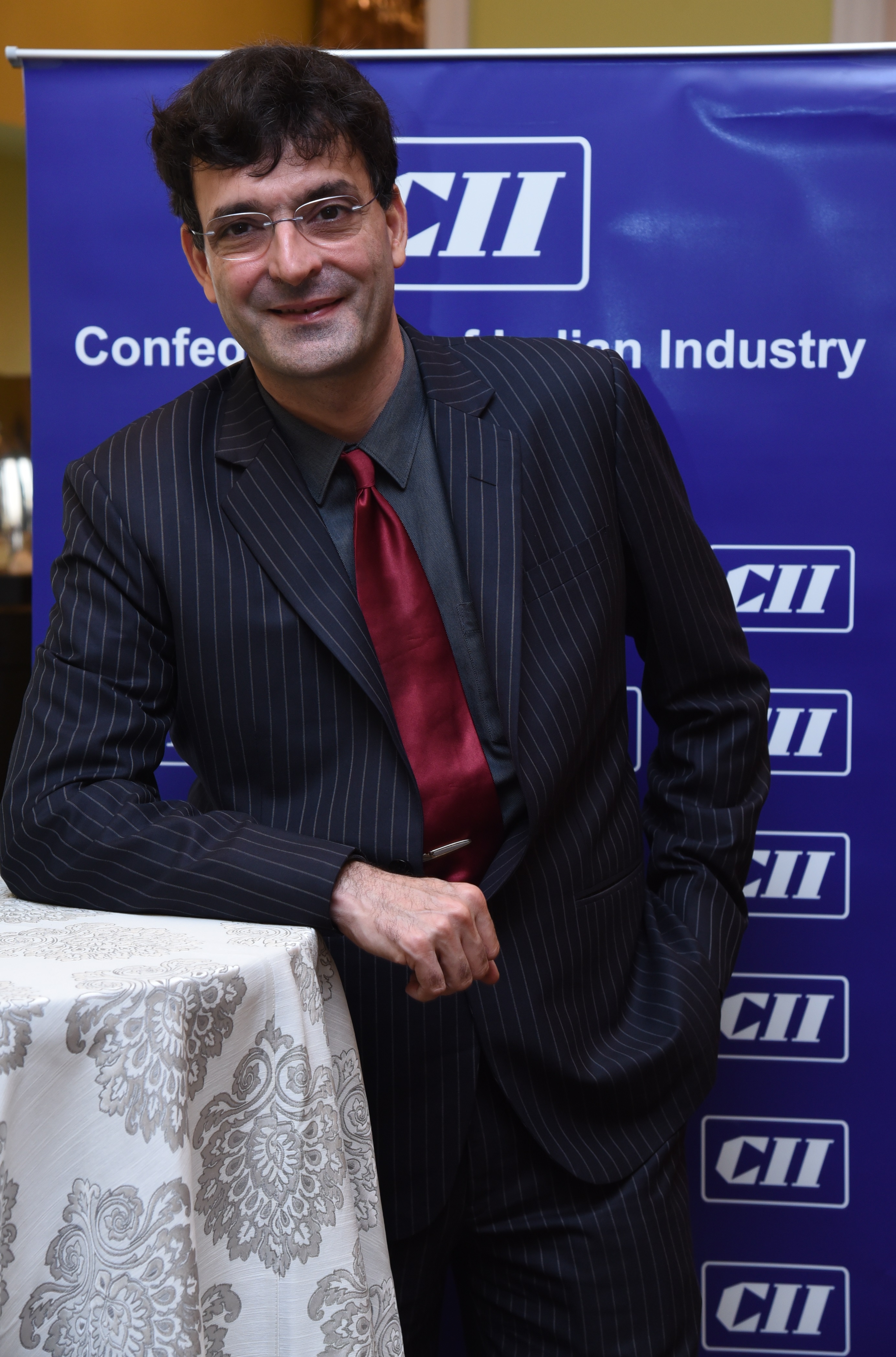 Piruz Khambatta of Rasna Pvt Ltd. elected Chairman, CII Western Region
Piruz Khambatta of Rasna Pvt Ltd. elected Chairman, CII Western Region
and Sanjiv Bajaj of Bajaj Finserv Ltd. elected Deputy Chairman, CII Western Region for 2018-19
NEW DELHI:MMNN:20 March 2018
Mr Piruz Khambatta, Chairman & Managing Director, Rasna Pvt Ltd. has been elected as the Chairman of the Confederation of Indian Industry (CII) Western Region for the year 2018-19 while Mr Sanjiv Bajaj, Managing Director, Bajaj Finserv Ltd. has been elected as the Deputy Chairman of the CII Western Region for the year 2018-19. Their names were announced at the first meeting of the reconstituted Western Regional Council held in Mumbai.
The major focus areas would be Membership Engagement, Policy Advocacy, Ease of Doing Business Clinics, Policy Roundtables, Policy Formulation, Innovation & Start-ups, Making Members Future Ready, promoting industrial safety, water initiatives, Corporate Governance, Education & Skill Development and Job Fairs.
CII would also work closely with the State Governments on Clean & Safe City through City Connect initiatives and also on Water and Environment, Industry-Academia Linkages, CEOs Connect and the India We Want for school and college students.
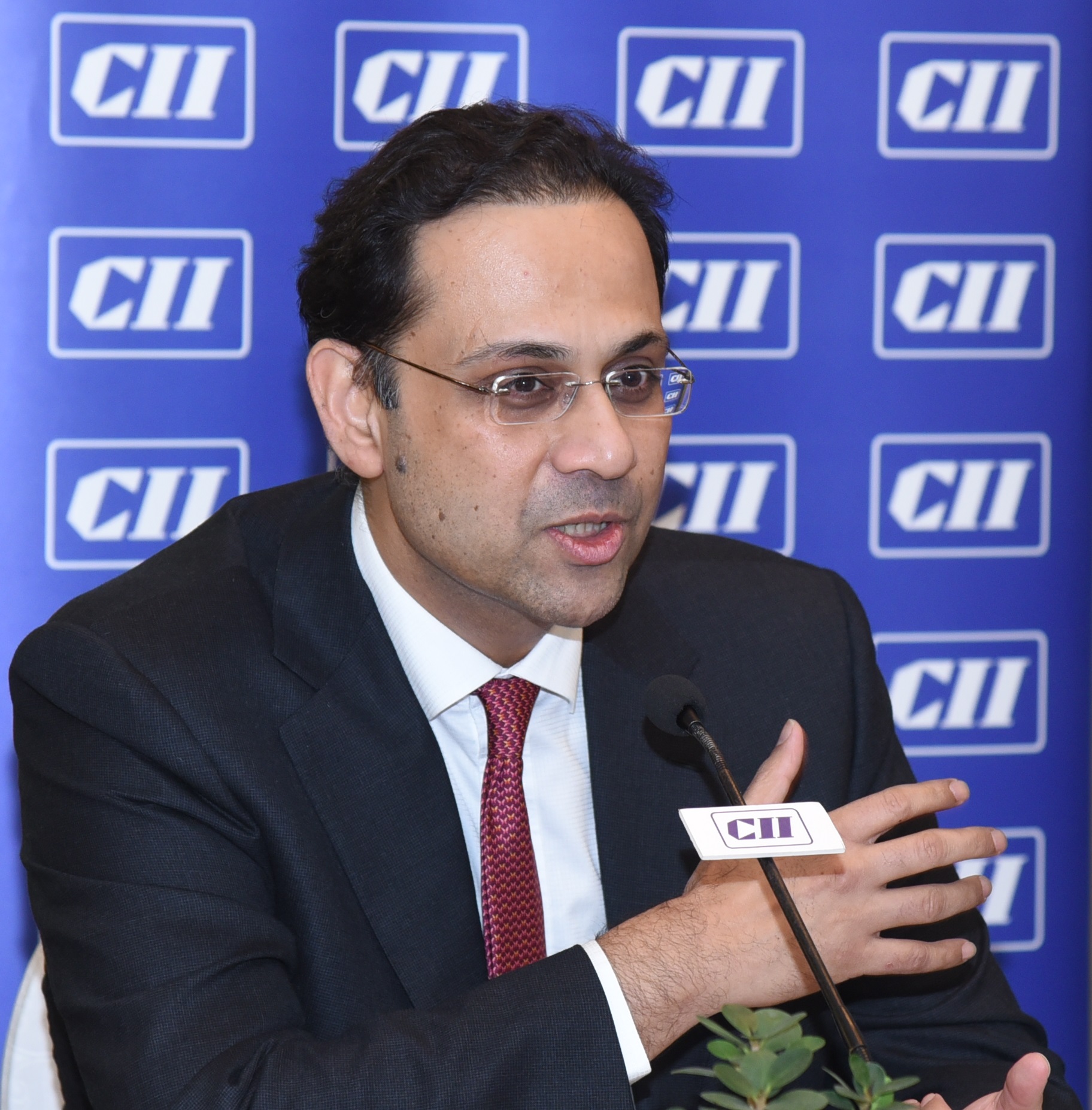 Mr Piruz Khambatta is the Chairman and Managing Director of Rasna Pvt Ltd., India's largest and the most popular Soft Drink Concentrates brand. Rasna's operations in more than 40 countries in the world are backed with a vast distribution network of 9 factories in India at various locations. Rasna's products are available in the remotest corners contributing to its enormous success.
Mr Khambatta has come a long way over two decades, when he first got involved with the company at the age of eighteen. His association with Rasna Pvt. Ltd. as Chairman and Managing Director dates back to the year 1997 after he took over the helm of affairs. Today, Mr Khambatta with his ingenuous qualities of hands-on-management and innovativeness in products and promotions has developed Rasna into an Indian success story.
Mr Khambatta is closely associated with CII Membership's Engagement for over a decade. He was Deputy Chairman of CII Western Region. He is the Past Chairman of CII Gujarat State Council. He has been Chairman of CII National Food Processing Committee for many years and was Chairman, Task Force on Nation Building in Western Region.
Mr Sanjiv Bajaj is Managing Director of Bajaj Finserv Ltd. Bajaj Finserv operates in the insurance business through Bajaj Allianz Life Insurance Company Limited and Bajaj Allianz General Insurance Company Limited, as well as in the lending business through Bajaj Finance Limited. His role includes guiding the current businesses and building new ones in the financial services space.
Mr Piruz Khambatta is the Chairman and Managing Director of Rasna Pvt Ltd., India's largest and the most popular Soft Drink Concentrates brand. Rasna's operations in more than 40 countries in the world are backed with a vast distribution network of 9 factories in India at various locations. Rasna's products are available in the remotest corners contributing to its enormous success.
Mr Khambatta has come a long way over two decades, when he first got involved with the company at the age of eighteen. His association with Rasna Pvt. Ltd. as Chairman and Managing Director dates back to the year 1997 after he took over the helm of affairs. Today, Mr Khambatta with his ingenuous qualities of hands-on-management and innovativeness in products and promotions has developed Rasna into an Indian success story.
Mr Khambatta is closely associated with CII Membership's Engagement for over a decade. He was Deputy Chairman of CII Western Region. He is the Past Chairman of CII Gujarat State Council. He has been Chairman of CII National Food Processing Committee for many years and was Chairman, Task Force on Nation Building in Western Region.
Mr Sanjiv Bajaj is Managing Director of Bajaj Finserv Ltd. Bajaj Finserv operates in the insurance business through Bajaj Allianz Life Insurance Company Limited and Bajaj Allianz General Insurance Company Limited, as well as in the lending business through Bajaj Finance Limited. His role includes guiding the current businesses and building new ones in the financial services space.
He is also the :
1- Vice Chairman of Bajaj Finance Ltd. since 15 October 2013.
2 - Chairman of Bajaj Allianz Life Insurance Company and Bajaj Allianz General Insurance Company with effect from 1 April 2013. Was the Non-Executive Director of these two companies from their inception in 2001 up to 31 March 2013.
3- Managing Director of Bajaj Holdings & Investment Limited with effect from 1 April 2012 (earlier its Non-executive Director). Role includes building the strategy and team, and guiding this investment company, which has almost Rs. 60,000 crore in cash and investments including over 30% stake in Bajaj Auto and around 40% in Bajaj Finserv.
4- Former Executive Director of Bajaj Auto Limited (until 31 March 2012), having headed Finance & Control, legal & international business functions of Bajaj Auto over different periods from 1994 until 2012 and currently its Non-Executive Director.
Mr Sanjiv Bajaj has been the Chairman of CII National Committee on Insurance & Pensions for the last 3 consecutive years. He was also the Chairman, CII WR Task Force on Entrepreneurship & Start Ups and Chairman, CII WR Sub-Committee on Governance.
METROMIRROR.COM Invites Exclusive Research Features/Findings related to various disciplines of Business,Industry,Economy and Economic Intelligence.Please send your Research/findings at Email:editormetromirror@gmail.com with Profile and Photo.
Analytical Report from FICCI Frames 2018: 4-7 March, 2018, Grand Hyatt, Mumbai
Print Lowest & Digital Highest Growth in the Half Full Glass of Indian Media.
Prof Ujjwal K Chowdhury, School Head, School of Media, Pearl Academy, Delhi & Mumbai
Glass Half Full, Half Empty
"Indian media and entertainment industry story, the big ambassador of Indian soft power, is that of
a glass half full and half empty", Siddharth Roy Kapur, Co-chair, FICCI Media & Entertainment
Committee, notes almost prophetically at the inaugural session of the annual jamboree of India M&E
Industry, FICCI Frames, at Grand Hyatt held from 4th to 7th of March, 2018.
Rightly so, indeed.
Healthy Domain Growth
The sector, according to the industry status report released by Ernst & Young and FICCI during the
event, touched Rs.1.5 trillion ($22.7 billion) in 2017, a growth of 13% over the last year, while the
economy overall grew at half of that rate. It is all poised to cross Rs.2 trillion or $31 billion by 2020,
which is a healthy growth. On the other hand, a few large areas of the industry, i.e. print, radio,
music, out of home and television: all grew at less than 10% over the previous year, print being at a
lowly 3%. Animation, films and digital media grew from 25 to 30% over the earlier year.
Employment@Crossroads
Look at another perspective. The direct employment in M&E sector has crossed 1 million people,
and the total including indirect and induced employment is above 5 million, which is a substantial
number, but is miniscule in front of 1.3 billion people strong nation, and a huge majority of this
number is under-trained and digitally semi or sparsely skilled whereas the growth of the digital
media last year was the highest, at 30% over 2016. The needs for structured and formal training in
content production, re-skilling of people already in the industry for long, and entertainment business
management skills to monetize content across all platforms, are all the more urgent today than ever
before. Media jobs being non-repetitive and imagination driven, though technology facilitated
heavily today, remain an area which will not be largely replaced by machines and hence are a long-
term job prospect, which is often missed out by learners and mentors alike.
Films Fast Forward
Look at the film industry which has grown by a very healthy 27% over the earlier year, and stands
now at Rs.156 billion in 2017, which is still less than half of what Avatar film earned in all languages
globally. While India has produced more than 1500 censored films in all languages together last year,
Hollywood has not crossed 700 films, but we have earned roughly 1% of the total income of
Hollywood! For us $100 million income of a film is outstanding success of a film, for Hollywood it is
$1 billion! We had around 8000 film screens by the turn of this decade in 2010 and China some
9000. But today China has crossed 45,000 screens for films, and we are at 9000 total. Dangal with
more income in China than in India and Bahubali in all languages together and both parts included
have earned like successful Hollywood films. Even Marathi and several South Indian language films
have earned more than 100 crores each: these being matters of pride and hope ahead. But low-cost
screens in the hinterland are a must. "Dial up the screen density for future growth in film sector
since supply is interestingly an important vector of demand here," rightly says Sudhanshu Vats,
Group CEO, Viacom 18.
TV to Stay
India produces 16,000 hours of fresh entertainment content for all general entertainment channels
together, which is 12 times more than USA, but earns less than 8% of the TV income of them. We
have 784 million TV-viewing people in India, more than the total population of European continent,
but an income much lower than them and with opportunities to grow further more in a nation which
is almost double at 1.3 billion.
Where is Digital Value Adds?
In spite of the enormous 30% growth of the digital media in 2017, to Rs.120 billion (up from Rs.92
billion in 2016), use of Virtual Reality, Augmented Reality and Artificial Intelligence in the
entertainment sector is still in its infancy. Shooting in physical sets, use of given resources and
human skills are almost the sine que non of Indian entertainment content production, whereas
globally AR-VR- AI contribute to content generation heavily, cutting down human interference and
costs drastically.
Media as Force Multiplier
We are all aware of the force multiplier impact of media and entertainment sector on other sectors
of the economy like tourism (e.g. Ladakh after 3 Idiots), fashion and merchandise, retail sales, mall
sales wherever multiplexes are there, etc. Tourism is already an industry of $150 billion and media
fuels the same. Media has seamless linkages with e-commerce. However, the potential in all of these
is not even a quarter exploited yet. There is enough headroom and tailwind for growth.
Industry's Self Introspection
There are several things that the industry itself can do to strengthen its reach, impact, business and
engagement of audiences. First, it has to realise that collaboration is a better strategy than
competition or even when you compete with your peers. Also, industry has to take common stands,
when facing the government, when combating attacks from fringe elements on itself, and when
upgrading its standards. Second, each media platform or initiative needs to learn to have some
unique positioning, specialization and focus and not do everything for everyone. Third, industry
needs to wake up to measurements, accountability and big data analytics, especially in the rising
digital age. Approximation and befooling audiences and advertisers, and data-fudging shall be
matters of the past, going ahead. Fourth, an immense quantum of collaboration with youths will be
needed, for example on the lines of V-SEP program of the Viacom group: Viacom Start-up
Engagement Program.
Government as Game-changer?
On the other hand, the government can be a game-changer too. And the biggest aspect in it is the
commencement of e-enabled time-bound single window of clearances for events, licensing, varied
content production permissions, et al, on which the Niti Ayog currently is working with support from
the industry. But that is a long way to go yet. With the data-prices falling, the digital access of
entertainment and information content has grown tremendously and audio-video consumption
experiences should be even better with 5G connectivity coming ahead. But for that the process of
auctioning 5G spectrum, facilitating ease of doing content and digital business etc need a major push
from the government at the Centre. Policy paralysis to uncertainty have often plagued the industry.
Since demonetization and GST implementation have been a twin attack on media economy, its
industry status now needs a strong fillip from the government to gain lost ground, credits, outreach
and credibility ahead.
Quest of a Positioning
The Union Minister for Information & Broadcasting, Smriti Irani, interestingly noted in her
interaction at FICCI Frames, that Indian M&E industry should not compare itself with Hollywood and
China (except for business numbers), but should position itself uniquely with its story-telling skills
with the largest media consumer base in the world being here.
Re-imaging the Future
The next move of this sector has to be re-imagine itself, and in digital language and space more
particularly, to create global capacity going beyond domestic market and the NRI-PIO circles (just as
seen in the case of Dangal or Bahubali). Media can be the true-blue Make In India success-story with
stories, people, technologies, places and force multiplier synergies with other sectors of the
economy: all being here and now in India.
Prof Ujjwal K Chowdhury
School Head, School of Media, Pearl Academy, Delhi & Mumbai
Former Dean, Amity University, Mumbai.
Former Director, Symbiosis Institute of Media & Communication & Dean, SIU, Pune.
Former Dean, Whistling Woods School of Communication, Mumbai.
Former Media Adviser, Textiles Ministry, GOI; The Nippon Foundation & WHO, India.
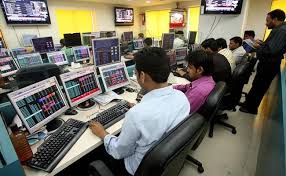 Trading Calls: Buy Ashok Leyland, Aurobindo Pharma, Says Expert
Trading Calls: Buy Ashok Leyland, Aurobindo Pharma, Says Expert
NEW DELHI:MMNN:26 February 2018
Indian stock markets are likely to start Monday's session on a positive note, with the SGX Nifty on Singapore Exchange trading 49 points higher at 10553.50. Shares in the other Asian markets traded with a cautious mood as investors braced for an event-packed week headlined by US inflation data and the first House testimony by the new head of the Federal Reserve. Japan's Nikkei 225 was trading up 0.8 per cent, China's Hang Seng up 0.6 per cent and Shahghai Composite up 0.3 per cent, and South Korea's KOSPI up 0.2 per cent. MSCI's broadest index of Asia Pacific shares outside Japan nudged up 0.3 per cent. Investors initially took heart from Friday's rally on Wall Street which saw the VIX volatility index end at 16.49 per cent, far below the 50 per cent peak touched at the height of market turmoil in early February
On Friday, the BSE benchmark index Sensex closed 322 points higher to regain the 34,000 mark, while the NSE Nifty settled at 10,491, 108 points, or 1 per cent, higher. (Read more)
Simi Bhaumik, research analyst, shared her trading picks:
Buy Ashok Layland at a minor dip for a target price of Rs. 139 with stop loss at Rs. 131
Buy Aurobindo Pharma at a minor dip for a target price of Rs. 624 with stop loss at Rs. 588
Buy Hindalco at a minor dip for a target price of Rs. 254 with stop loss at Rs. 242
Buy Motherson Sumi at a minor dip for a target price of Rs. 325 with stop loss at Rs. 314
COMMENTSBuy SAIL at a minor dip for a target price of Rs. 95 with stop loss at Rs. 84
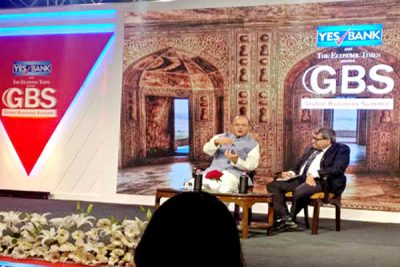 Bank fraud cases will impact ease of doing business in India: Jaitley
Bank fraud cases will impact ease of doing business in India: Jaitley
NEW DELHI:MMNN:24 February 2018
Finance Minister Arun Jaitley said on Saturday that incidents of bank frauds will impact ease of doing business in India and if incidents like this place periodically, the entire effort gets relegated to the background and these scars on the economy take the front seat.
Speaking at the Global Business Summit here, Mr Jaitley said the fact that loan frauds went on undisclosed in the banking sector and no one raised any red flag was worrisome.
Terming wilful defaulters“scars on the economy”, he said such cases will impact ease of doing business in India.“If you periodically have incidents like these, the entire effort of ease of doing business goes to background and these scars on the economy take the front seat,” Mr Jaitley said.
He said regulators have a very important function and they ultimately decide the rules of the game, adding that they have to have a third eye which perpetually is open. Unfortunately, in the Indian system, politicians were accountable instead of regulators, he stated.
A few days ago, in a rebuke to the auditors and the management of Punjab National Bank for their failure to detect the Rs 11,400 fraud, Mr Jaitley had said,’Supervisory agencies need to assess as to what new system has to be put in place to detect irregularities…should ensure the stray cases are nipped in the bud and they are never repeated.
 PNB, Already Reeling Under Nirav Modi Fraud, Now Hit By Data Breach
PNB, Already Reeling Under Nirav Modi Fraud, Now Hit By Data Breach
NEW DELHI:MMNN:23 February 2018
New Delhi: Some 10,000 credit or debit card holders have been affected by a data breach reported by Punjab National Bank (PNB), which is already reeling under a multi-crore rupee financial fraud by two fugitive luxury jewellers.
According to an Asia Times report, security experts believe that the sensitive details of customers of the state-run bank were offered for sale through a website for at least three months.
The Hong Kong-based English language news website reported that the bank was tipped off on Wednesday night about the data breach by CloudSek Information Security, a company registered in Singapore that also has its office in Bengaluru. The firm monitors data transactions.
"We have a crawler that is deployed in the dark/deep web. These are sites on the Internet which are not indexed by Google or other major search engines. They are used to buy and sell sensitive data illegally," chief technical officer Rahul Sasi was quoted as saying by the news site.
"Our crawler detects any such data and sends it to a Machine Learning software that we have created. If this detects anything that is suspicious, and of interest to our clients, we immediately take action."
PNB's Chief Information Security Officer T.D. Virwani has confirmed it was working with the government to contain the fallout from the release of the data.
The data available for sale includes names, expiry dates, Personal Identification Numbers and Card Verification Values (CVV).
COMMENTSSasi said two sets of data were released: some with CVV numbers and some without. The last date stamp on the data is January 29, 2018, indicating that the details are still current for thousands of card customers.
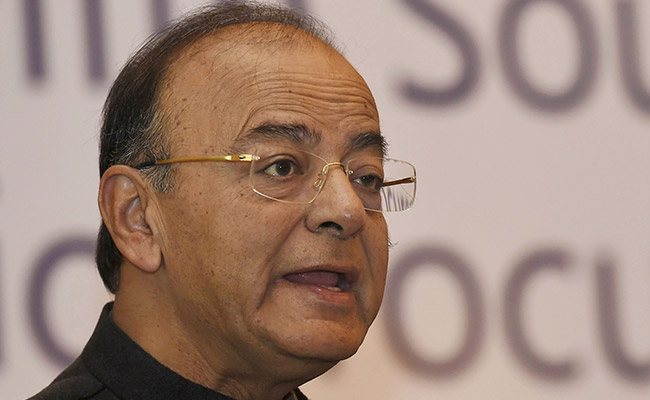 No Worries About Fiscal Slippages, Rising Oil Prices, Says Arun Jaitley
No Worries About Fiscal Slippages, Rising Oil Prices, Says Arun Jaitley
NEW DELHI:MMNN:10 February 2018
New Delhi: Finance Minister Arun Jaitley today said the fiscal situation should be comfortable next financial year and there are no worries at the moment regarding slippages in meeting the deficit targets.
Brushing aside any immediate need to worry about rising global oil prices, Jaitley said an assessment should not be made based on hypothetical situation concerning crude prices as the trend in the last three days has been opposite (with prices falling again), adding that at this stage he was not worried about any slippages on the fiscal front.
Addressing a press conference after meeting RBI's board in a customary post-Budget exercise, Jaitley also said that the last decision of the Monetary Policy Committee, chaired by RBI Governor Urjit Patel that decided to keep rates unchanged, was a "balanced decision".
"... as far as fiscal situation is concerned, I see next year to be more comfortable as far as revenues are concerned.
I cannot see at this stage that there would be any slippages," he said.
Jaitley, who also met Sebi's board and top officials earlier today, said one of the factors that stood out from the capital market regulator's presentation is that there is an increased reliance on corporate bonds as far as credit is concerned.
COMMENTSPatel said the equity-debt ratio for corporates is expected to get better going forward as the capital markets have shown a good trend in terms of raising funds through bonds.
 Tax Department Asks Notes Ban Cash Depositors To File Returns By March 31
Tax Department Asks Notes Ban Cash Depositors To File Returns By March 31
NEW DELHI:MMNN:9 February 2018
New Delhi: The Income Tax Department today urged those who deposited "large amounts of cash" post demonetisation and all companies to file their returns by March 31, failing which they may face penalty and prosecution.
It also cautioned eligible trusts, political parties and associations to file their income tax returns by this final deadline and "come clean".
The department, in public advertisements issued in leading dailies, said it was the final call for filing of belated or revised ITRs for assessment years 2016-17 and 2017 -18.
It underlined that there was still time for these categories of taxpayers and that they should avoid last minute rush and file the ITRs well before the deadline.
"If you have deposited large amounts of cash in your bank account/made high value transactions, please consider the same while filling your ITRs.
"Non-filing or incorrect filing of return of income may result in penalty and prosecution," the public advisory said.
It said all companies, firms and limited liability partnership concerns were also required to do so.
The deadline is also applicable, it said, to trusts, associations and political parties whose income prior to claim of exemptions exceeds the minimum chargeable to tax.
Individuals and Hindu Undivided Families having income more than Rs. 2.5 lakh and senior citizens with income of over Rs. 3 lakh (60-80 years of age) and Rs. five lakh (over 80 years of age) too need to file their returns for the mentioned assessment years, it said
 15 Companies Disqualified From Applying For H-1B Visas
15 Companies Disqualified From Applying For H-1B Visas
NEW DELHI:MMNN:8 February 2018
The United States Department of Labor has recently released a list of 15 employers who cannot apply for H-1B visas, which are much-sought after by techies all around the world, including India. The Wage and Hour Division of the Department of Labor termed the companies as "wilful violator employers" on its website. Wilful violators are subject to random investigations by the Department of Labor for a period of up to five years from the date that the employer is determined to be a wilful violator.
According to the US Department of Labor, wilful violator employers under the H-1B program are employers who are found to have "committed either a wilful failure or a misrepresentation of a material fact" when hiring foreign workers.
COMMENTSThe H-1B is a non-immigrant visa that allows US companies to employ foreign workers in areas that need theoretical or technical expertise. Thousands of Indian and Chinese workers are employed under it every year.
H-1B visas are aimed at foreign nationals in occupations that generally require specialized knowledge, such as science, engineering or computer programming. The US government uses a lottery to award 65,000 such visas yearly.
Since taking office last January, US President Donald Trump has been talking about cracking down on the H-1B visa scheme. He has called for stricter norms for issuance of H-1B visas.
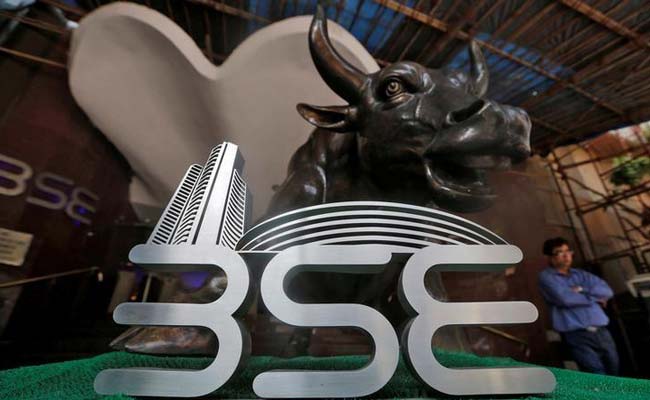 Capital First Shares Jump 8%, IDFC Bank Shares Fall 3% On Merger Plans
Capital First Shares Jump 8%, IDFC Bank Shares Fall 3% On Merger Plans
NEW DELHI:MMNN:15 January 2018
New Delhi: Shares of Capital First on Monday surged nearly 8 per cent while IDFC Bank slipped more than 3 per cent in morning trade following their announcement of merger to create a Rs. 88,000-crore combined entity. IDFC Bank and non-banking financial company Capital First on January 13 said they have received approval from their respective boards for a merger. Shares of Capital First surged 7.90 per cent to a high of Rs. 902 on the BSE, while on the NSE the stock jumped 7.68 per cent to Rs. 901.85.
Meanwhile, IDFC Bank slipped 3.62 per cent to a low of Rs. 65.20 on BSE and on the NSE it fell 3.48 per cent to Rs. 65.15. Under the deal, IDFC Bank will issue 139 shares for every 10 shares of Capital First. Post-merger, the combined entity will have an AUM of Rs. 88,000 crore; PAT of Rs. 1,268 crore (FY17); and a distribution network comprising 194 branches (as per branch count of December 2017 of both entities), 353 dedicated BC outlets and over 9,100 micro ATM points, serving more than five million customers across the country.
V Vaidyanathan, who is currently chairman and MD of Capital First, will succeed IDFC Bank managing director and CEO Rajiv Lall as MD and CEO of the combined entity upon completion of the merger and necessary regulatory approvals. IDFC Bank is one of the youngest private lenders while Capital First is an NBFC backed by Warburg Pincus
 IDFC Bank To Acquire Capital First In $1.5 Billion Deal
IDFC Bank To Acquire Capital First In $1.5 Billion Deal
NEW DELHI:MMNN:13 January 2018
Mumbai: IDFC Bank, one of India's two newest banks, will acquire non-bank financial firm Capital First Ltd in a share swap deal valued at about $1.5 billion as it looks to boost its retail lending activities. According to terms of the deal announced on Saturday, shareholders in Capital First will receive 139 shares of the bank for every 10 shares held. The deal is conditional on central bank and other regulatory approvals.
The deal values Capital First - owned more than a third by private equity firm Warburg Pincus - at Rs. 938.25 a share based on the two companies' Friday closing price and giving the company a market value of Rs. 9,278 crore ($1.46 billion), Reuters calculations showed.
That is a premium to Capital First's Friday closing price of Rs. 837.50, or equal to a market capitalisation of about Rs. 8,300 crore, according to Thomson Reuters data.
The deal is "pursuant to IDFC Bank's stated strategy of 'retailising' its business to complete their transformation from a dedicated infrastructure financier to a well-diversified universal bank," the two sides said in a joint statement.
Capital First's founder and chairman V. Vaidyanathan will become chief executive of the combined entity, the statement said.
IDFC Bank - which was spun off from infrastructure financier IDFC Ltd in 2015 - is currently heavily reliant on wholesale lending.
At a time when a surge in bad loans and weak economic growth have crimped lending to big industries, banks and financial institutions are growing the less-riskier retail loans faster.
Capital First, which also counts Singapore state investor GIC among its major investors, will bring in a loan book of almost 230 billion rupees as of Sept. 30, three million customers and a distribution network spanning 228 locations across the country.
IDFC Bank and its parent IDFC Ltd last year announced talks to acquire some of Shriram Group's financial services businesses but the deal fell through due to disagreement on a share swap ratio
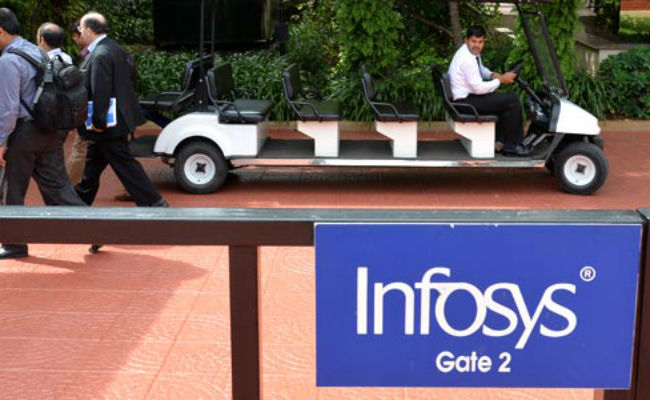 Infosys Net Profit Jumps 38% To Rs. 5,129 Crore On Tax Reversal
Infosys Net Profit Jumps 38% To Rs. 5,129 Crore On Tax Reversal
NEW DELHI:MMNN:12 January 2018
Infosys, India's No. 2 IT major, today reported a net profit of Rs. 5,129 crore for the quarter ended December 31, 2017, aided by reversal of the tax provisions of approximately Rs. 1,432 crore. This is a jump of 37.6 per cent on quarter-on quarter basis and 38.3 per cent on yearly basis. Infosys had reported a net profit of Rs. 3,726 crore for the quarter ended September 30, 2017. In the December quarter, Infosys posted revenue of Rs. 17,794 crore. The numbers were in line with the Street's estimates.
Commenting on the Q3 earnings, Salil Parekh, CEO and MD of Infosys, said: "It is a privilege for me to be appointed as the CEO & MD of Infosys, helping our clients navigate the digital future and employees build new skills and capabilities. Our Q3 performance is strong. We had 8 per cent year-on-year growth and 24.3 per cent operating margin with $593 million of free cash flow."
"We are progressing towards stability and are well positioned to serve our clients in the new areas of demand," he added.
Infosys maintained its FY18 revenue guidance at 5.5-6.5 per cent in constant currency. Its Q3 operating margin improved to 24.3 per cent, from 24.2 per cent in the September quarter. Attrition on a standalone basis declined to 15.8 per cent from 17.2 per cent in September quarter. In dollar terms, Q3 revenue grew 8 per cent year-on-year and 1 per cent sequentially to $ 2,755 million.
"Our operating margins were stable on the back of broad-based improvement in operational efficiency parameters. Our cash generation continued to be robust during the quarter." said CFO MD Ranganath said. "We successfully executed the share buyback of Rs. 13,000 crore in line with our capital allocation policy."
COMMENTSCOO Pravin Rao said: "Increased adoption of our digital offerings and new services helped stabilize price realization. We were able to grow client relationships across revenue categories."
"During the quarter, we provided compensation increases and higher variable payouts to our employees. Our investments in employees continue to deliver results as reflected in lower attrition," Mr Rao added
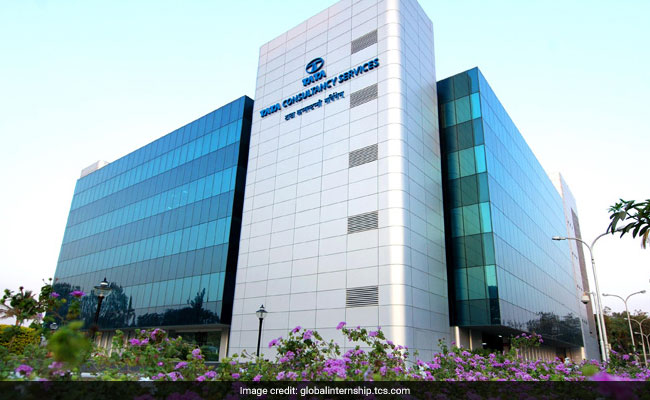 Tata Consultancy Services (TCS) Wins $2.25 Billion Outsourcing Contract
Tata Consultancy Services (TCS) Wins $2.25 Billion Outsourcing Contract
NEW DELHI:MMNN:22 December 2017
India's biggest IT services company, Tata Consultancy Services (TCS), has bagged a $2.25-billion outsourcing contract from Nielsen, a television rating measurement firm. The partnership, signed in October this year, is a renewal of TCS' existing collaboration with Nielsen. The two companies had struck a 10-year deal in 2008 for $1.2 billion. Under the new deal, the terms of the agreement have been extended for an additional five years so as to expire on December 31, 2025, with three one-year renewal options granted to Nielsen, the TV rating company said in a regulatory filing to the US Securities and Exchange Commission (SEC).
"Nielsen has committed to purchase services from TCS from the Effective Date through the remaining term of the Agreement (the 'Minimum Commitment') in the amount of $2.25 billion, including a commitment to purchase at least $320 million in services per year from 2017 through 2020, $186 million in services per year from 2021 through 2024, and $139.5 million in services in 2025," it added.
The filing stated that the Mumbai-based firm will globally provide Nielsen with professional services relating to IT - including application development and maintenance - BPO, client service knowledge process outsourcing, management sciences, analytics, and financial planning.
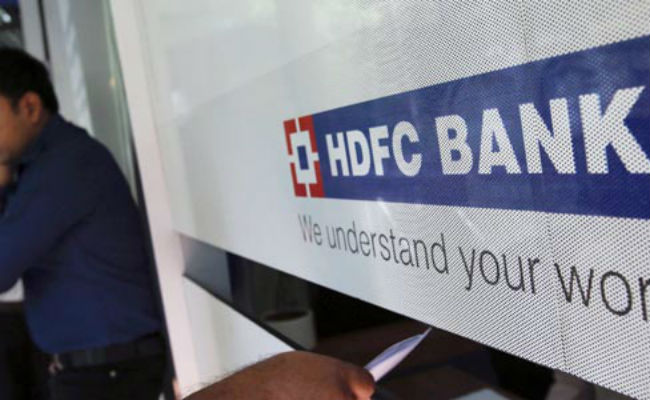 HDFC Bank Issues Rs. 385 Crore Equity Shares Under ESOPs
HDFC Bank Issues Rs. 385 Crore Equity Shares Under ESOPs
NEW DELHI:MMNN:21 December 2017
HDFC Bank issues 20,59,500 equity shares to the employees of the bank pursuant to exercise of options under its employees stock option. Following this, the paid up share capital will increase from Rs. 517 crore equity shares to Rs. 518 crore equity shares of Rs. 2 each, the company announced in a stock market filing. The HDFC Bank's shares are priced at Rs. 1,869.55 at 12.30 pm on BSE. At this price, the ESOPs are valued for Rs. 385 crore.
On Thursday, the shares opened at Rs. 1,871 while the scrip traded between Rs. 1,884 and Rs. 1,869, against the previous session's closing of Rs. 1,868. On Wednesday, HDFC Bank board had convened a meeting and decided to raise Rs. 24,000 crore. Following the announcement, the bank's shares touched the 52-week high of Rs. 1,903 on December 20.
It is noteworthy to mention that in the month of October, HDFC Bank had issued Rs. 370 crore worth equity bonanza to its employees through ESOPs.
On NSE, the bank shares opened at Rs. 1879.9 before touching a high of Rs. 1,885 and a low of Rs. 1,869. At 12.50, the scrip was trading at Rs. 1,869.95, 0.10% higher than the previous session's closing.
HDFC Bank's second quarter results announced recently met the market's estimates. The bank registered 15% rise in interest income to Rs19,670 crore in the September quarter.
A 9% rise in interest expenses to Rs. 9,918.21 crore saw net interest income grow 22% to Rs.9,752 crore. Other income grew 24% to Rs. 3,605.90 crore, which took net total income up 23% to Rs. 13,357.97 crore.
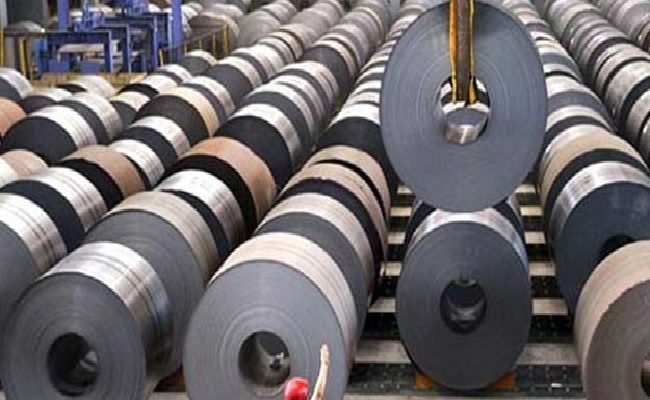 Tycoons Set To Remake India Steel As $26 Billion Battle Heats Up
Tycoons Set To Remake India Steel As $26 Billion Battle Heats Up
NEW DELHI:MMNN:20 December 2017
Surging steel prices and the new insolvency law have set the stage for an industry-defining battle between tycoons and producers for more than $26 billion of the sector's most-coveted assets.
Creditors are seeking the approval of the new bankruptcy court to sell assets of as many as 40 firms, including steel producers. That's spurred Lakshmi Mittal, head of the world's largest maker of the alloy, and fellow billionaire Anil Agarwal to vie for control of Essar Steel India Ltd., according to people with knowledge of the matter. Debt-laden Bhushan Steel Ltd. has drawn interest from Japan's and India's biggest producers, said the people, who asked not to be identified because the information is private.
Insolvent producers including Monnet Ispat & Energy Ltd. are attracting potential bidders as prices of the material soar and creditors embark on the first significant test of a bankruptcy law that's intended to encourage asset sales. Several deep-pocketed suitors have made expressions of interest for the Indian mills and some have already submitted bids for a series of deals with deadlines around year-end, according to the people.
"It just can't get better than this in India in terms of size or valuation in fully-baked assets," said Pooja Dutta, managing partner at Mumbai-based Astute Law. "At a time when too much capital is chasing too few opportunities across the globe, steel mills are set to see a bidding war as long as sales are executed in right and transparent manner."
Four makers of the alloy are among India's so-called " dirty dozen" -- debtors that the central bank has ordered be taken through the bankruptcy courts. Essar Steel, Bhushan Steel, Monnet Ispat and Electrosteel Steels Ltd. owe more than $26 billion combined, the people said.
Indian producers added leverage to fund expansion plans when the economy was growing at a much faster clip. The debt soured as economic activity slowed and demand for the alloy waned amid oversupply from China.
Now that Chinese mills are closing as the world's second-biggest economy seeks to ease pollution, prices for the material are rising. Demand in India is also expected to pick up after Prime Minister Narendra Modi promised to spend more on infrastructure and power.
Creditors, armed with the new insolvency and bankruptcy law, are seizing this opportunity to get repaid. Suitors see the potential purchases as a way to acquire a bigger share of a steel market that's forecast to produce more than 100 million tons this fiscal year.
"This level of bidding interest from such a wide range of investors, from strategics to private equity firms, for such large operational assets has been very rare in this country," said Rethish Varma, a Bengaluru-based researcher at MarketSmith India.
There's a lot at stake. Essar Steel's 10-million-ton capacity, in particular, could immediately give a new entrant a sizable presence in an industry expected to benefit from India's plan to invest trillions of rupees in infrastructure upgrades, creating ' Smart Cities' across the country. The producer is currently restructuring its roughly Rs. 45,000 crore of debt or about Rs. 77,000 crore including debt owed by subsidiaries, the people said.
Capacity Sought
Essar Steel has attracted suitors including ArcelorMittal, the world's largest producer, and Agarwal's Vedanta Ltd., according to the people. Neither company owns significant steel-producing assets in the country.
A spokesman for ArcelorMittal said in response to Bloomberg queries that "members of our management team are conducting due diligence on steel assets available through the current insolvency process."
At the same time, if Tata Steel, India's third-biggest producer, bought Essar Steel it could ascend to the country's No. 1 spot, given the new capacity it would acquire.
"As a process, we do assess and evaluate various strategic opportunities for growth," a spokesman for Tata Steel said.
The billionaire Jindal family's JSW Steel Ltd., which is also considering offers for assets, recently overtook Steel Authority of India Ltd. to become the biggest maker of the material that's used in everything from automobiles to skyscrapers.
With production capacity in demand, Bhushan Steel -- whose mills can produce 5.6 million tons of the alloy -- has drawn interest from Apollo Global Management-backed Aion Capital Partners Ltd., in addition to Nippon Steel & Sumitomo Metal Corp. and JSW, the people said. Vedanta and Tata Steel are also weighing bids, they said.
"On the path to India's aspirations to have 300 million tons capacity, we will see restructuring of the industry, which would primarily involve mergers and acquisitions," said Sanak Mishra, an independent steel consultant who was the former secretary general of the Indian Steel Association. "This would enable the industry to have better finances and better business."
Shares of Bhushan Steel fell 1.2 percent to Rs. 63 at 10:33 a.m. in Mumbai on Wednesday, while Monnet Ispat declined 1.1 percent. JSW Steel climbed 1.1 percent and Tata Steel weakened 1.6 percent.
Operational Assets
Representatives for Essar Steel, Nippon Steel, JSW, VTB Capital and Aion Capital declined to comment, while representatives for Bhushan Steel, Electrosteel, Monnet Ispat, Vedanta, Dalmia Cement and SAIL didn't respond to requests for comment.
Aion Capital along with JSW Steel are the only bidders for Monnet in the second round of bids, with lenders expected to decide on a sale as early as this week, the people said.
Despite all the demand for assets, not everyone can bid. The insolvency law was amended last month to prevent errant founders from regaining control of firms going through the process. Those with debt classified as non-performing for a year or more who can't pay overdue amounts are barred from repurchasing.
"Strong domestic demand and protectionist measures by the government makes operational steel mills an asset to vie for," said Varma
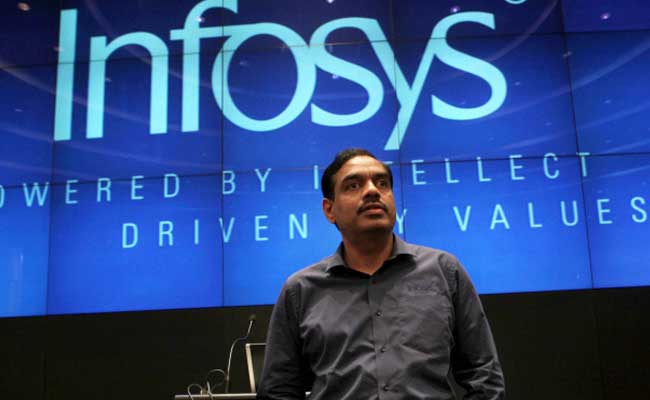 Former Infosys CFO Demands Discontinuance Of Some Board Members
Former Infosys CFO Demands Discontinuance Of Some Board Members
NEW DELHI:MMNN:9 December 2017
Bengaluru: Former Infosys chief financial officer V Balakrishnan Saturday sought the discontinuance of certain board members in light of the company filing a settlement plea with SEBI on corporate governance lapses relating to severance payment to its former CFO Rajiv Bansal.
"I think the continuation of certain board members like the erstwhile co-chairman (Ravi Venkatesan) and the audit committee chairman (Roopa Kudva) looks highly untenable in light of the current development of the company filing consent agreement with SEBI over Bansal's severance payment case," Balakrishnan told PTI here.
In view of the current development it is all the more important to restructure the board and fill it with people of high integrity and stature, he added.
The scathing communication to the stock exchanges blaming Infosys Co-Founder N R Narayana Murthy for all of the board's lapses was 'unprecedented,' Balakrishnan, who is known supporter of Murthy, said.
He also said all along, the board had consistently denied any wrong-doing and in fact blamed Murthy terming his questioning as a "misguided campaign." Earlier, Murthy had accused Infosys and its board of failing in disclosure and corporate governance norms.
The board of Infosys owes an apology to Murthy and should take steps to retract that statement, he said.
"Murthy always stood for high level of corporate governance and only acted in the interest of protecting a great institution like Infosys," Balakrishnan said. On December 6, Infosys said it had approached SEBI with an application to settle the issues arising out of alleged disclosure lapses on the severance package paid to Bansal.
India's second-largest IT firm, in a regulatory filing to the BSE, had said the settlement application made to SEBI was neither admission of guilt nor a denial. It, however, did not disclose what it had proposed in the settlement application. Infosys, under new Chairman Nandan Nilekani, moved the application as part of its attempt to settle the issues that
had cropped up during the tenure of former CEO Vishal Sikka Murthy had first raised the issue of failure in corporate governance at Infosys soon after the company gave a huge severance pay to Bansal after the acquisition of Israeli technology firm Panaya. The founder continued to put pressure on Infosys to come clean, including seeking the resignation of then Infosys Chairman Seshasayee.
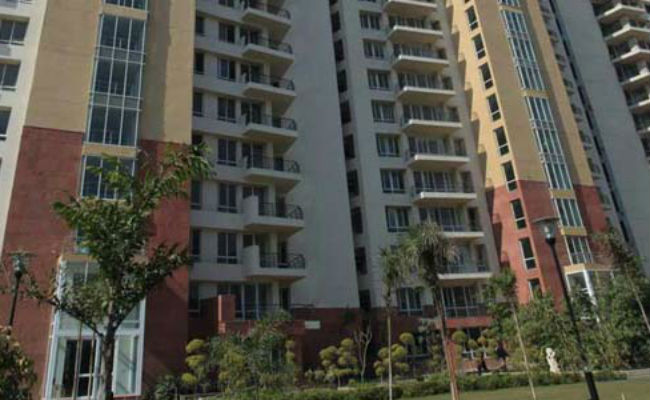 Tribunal Allows Government To Take Control Of Unitech
Tribunal Allows Government To Take Control Of Unitech
NEW DELHI:MMNN:8 December 2017
New Delhi: The National Company Law Tribunal (NCLT) on Friday allowed the government to appoint 10 directors on the board of debt ridden realty firm Unitech Ltd. The two-member NCLT bench headed by Chairman Justice M M Kumar has directed the government to submit the 10 names by December 20, the next date of hearing.
The government had approached the NCLT to take over the management of Unitech alleging mismanagement and siphoning of funds by the management. NCLT has also issued notice to Unitech Ltd directing it to file the reply.
"They have permitted the central government to appoint 10 nominee directors to run the day to day business and list of that would be given by 20th December," said Additional Solicitor General Sanjay Jain who had appeared on behalf of government in NCLT.
He further said: "In the meanwhile the suspended directors of the company shall not sell, mortgage or create charge either their properties or company's properties
 Shalby Hospitals IPO Fully Subscribed On Last Day: Ten Things That You Should Know
Shalby Hospitals IPO Fully Subscribed On Last Day: Ten Things That You Should Know
NEW DELHI:MMNN:7 December 2017
The initial public offer (IPO) of Shalby, the Ahmedabad-based multi-specialty hospital chain, was oversubscribed 1.08 times in morning session on the last day of the bidding on Thursday. The IPO, which aims to raise Rs. 504 crore, received bids for 1,57,11,900 shares against the total issue size of 1,45,21,686 shares - a subscription of 1.08 per cent - data available with NSE till 11.30 am showed.
The initial share sale, which opened to public subscription on December 5, will close today. Shalby on Monday raised over Rs. 150 crore from anchor investors. The IPO comprises a fresh issue of shares aggregating up to Rs. 480 crore and an offer for sale of up to 10 lakh equities.
The price band has been fixed at Rs. 245-248. At the upper end, the public issue would fetch Rs. 504 crore. Proceeds of the IPO will be utilised towards repayment of borrowings by the company, besides purchase of medical equipment for the existing, recently set-up as well as upcoming hospitals.
In recent months, healthcare services firms like Alkem Laboratories, Dr Lal Pathlabs, Narayana Hrudayalaya, Thyrocare and Eris Lifesciences have tapped the primary market through the IPO route.
Ten things that you should know about the Shalby IPO
1. The Shalby IPO opened on December 5 and will end on December 7, 2017.
2. The shares will be issued in the price band of Rs. 245 and Rs. 248 for shares with a face value of Rs. 10.
3. The P/E ratio (price in the upper band of Rs. 248) is 42.8 of company's earnings in the fiscal 2017 and 71.3 and 104.1 of the earnings of fiscal 2016 and 2015, respectively, says Reliance Securities.
4. The company's strengths include leadership in orthopedics, and company's good track record of healthy operating and financial performance, Reliance Securities says in an IPO note.
5. The major risks for Shalby Healthcare are too much dependency on two hospitals SG Shalby and Krishna Shalby, and on orthopedic for a substantial portion of revenue.
6. The company runs 11 hospitals with an aggregate bed capacity of 2,012 beds.
7. The IPO, which aims to raise Rs. 504 crore, received bids for over 29.32 lakh shares against the total issue size of more than 1.45 crore scrips.
8. Proceeds of the IPO will be utilised towards repayment of borrowings availed by the company besides purchasing medical equipment for existing, recently set-up as well as upcoming hospitals.
9. Another risk that the company faces is that revenue is primarily derived from inpatient treatments, which could decline due to multiple factors.
10. The company's sales grew by a strong 12% YoY in fiscal 2017 from 5% in the fiscal 2016. Its operating income and net profit grew by 30% year on year and 60% year on year in fiscal 2017.
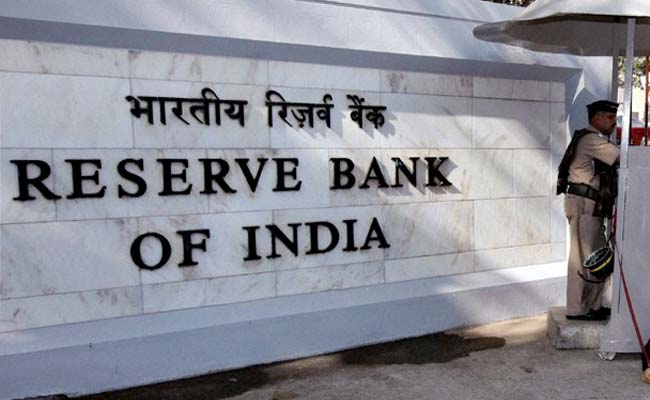 Inflation Likely To Rise, Interest Rates Won't: Poll
Inflation Likely To Rise, Interest Rates Won't: Poll
NEW DELHI:MMNN:29 November 2017
The Reserve Bank of India is likely to leave interest rates unchanged at its December policy meeting and through the end of next year, despite expectations that inflation will breach its 4 percent target in the next few months, a Reuters poll showed.
The results, from a poll of economists taken over the past week, also found there is a bigger risk the next move is a cut, even though forecasts diverge in three directions starting from the second quarter of next year.
That suggests both that policymakers have little room for manoeuvre and the outlook for rates beyond the next few months is exceptionally fuzzy, with several respondents saying they were unwilling to look much beyond the turn of the year.
The poll comes at a possible turning point for Asia's third- largest economy, with a separate Reuters survey showing economists now expect a rebound in economic growth after five consecutive quarters of deceleration.
"In the RBI's perception, inflation is inching up and the risks of that remaining high remain for a longer duration, say a couple of quarters or so, it may be difficult for the RBI to consider a rate cut around that scenario," said Shubhada Rao, chief economist at Yes Bank in Mumbai.
"In our opinion, a December rate cut is ruled out. Maybe next year (but) a lot depends on how inflation plays out," said Rao, who was the most accurate forecaster on the Indian economy in Reuters Polls last year.
The latest survey found 52 of 54 economists expected the RBI to hold the repo rate at 6.0 percent on Dec. 6, with just two forecasting a 25-basis-point cut to 5.75 percent.
The RBI's Monetary Policy Committee at its meeting in October expressed concern about rising inflation, one of the reasons it decided to keep rates steady then. Inflation rose to 3.6 percent at last count, the highest in seven months.
In the poll, 20 of 26 economists who answered an additional question said inflation was likely to rise above the RBI's 4 percent medium-term target by March, with forecasts split nearly evenly between the current quarter and early 2018.
But not all economists were concerned about inflation, which is still low by historical standards.
Finance ministry officials told Reuters that India's government is lobbying for a rate cut.
"We expect the RBI to cut policy rates, if not in December then in its next policy review," one ministry official told Reuters on condition of anonymity.
Prime Minister Narendra Modi's government has hit the economy with sweeping changes over the past year by removing more than 85 percent of the currency in circulation as well as implementing a new national goods and services tax.
But if the RBI were to cut rates, it would be out of step with the latest trend among major central banks, which are now looking to either tighten policy or move away from ultra-easy policy in place since the financial crisis a decade ago.
The U.S. Federal Reserve has been raising rates for the last two years, the Bank of Canada has lifted them twice this year and even the Bank of England put up borrowing costs earlier this month, in part on inflation concerns.
The global economy is also fairly strong, with most economies growing simultaneously. Yet at its last policy review, the RBI cut its growth outlook for the current fiscal year to 6.7 percent from 7.3 percent, suggesting it is not close to considering raising rates.
The latest Reuters poll found economists overwhelmingly expected no changes to that domestic outlook at the December policy meeting, further evidence that the repo rate is likely to remain on hold at 6.0 percent then and for a while longer.
Sajjid Chinoy, chief India economist at JP Morgan, wrote in a recent note to clients that the significant rise in oil prices over recent months, which will pinch consumers through higher inflation, is a good reason for pause.
"The resulting jump in inflation, which we now see rising to above 4.5 percent next quarter, is likely to keep the RBI cautious at its December review."
 Telecom Regulator Recommends Rules In Support Of Net Neutrality
Telecom Regulator Recommends Rules In Support Of Net Neutrality
NEW DELHI:MMNN:28 November 2017
Mumbai: The telecom regulator on Tuesday recommended explicit restrictions on any discrimination in internet access as part of its much-awaited recommendations on net neutrality.
The Telecom Regulatory Authority of India (TRAI) said it was not in favour of any "discriminatory treatment" with data, including blocking, slowing or offering preferential speeds or treatment to any content.
In February 2016, TRAI ruled in favour of net neutrality by prohibiting discriminatory tariffs for data after an extended campaign by internet activists, who argued that Facebook's Free Basics platform and other offerings by Indian telecom companies violated net neutrality principles.
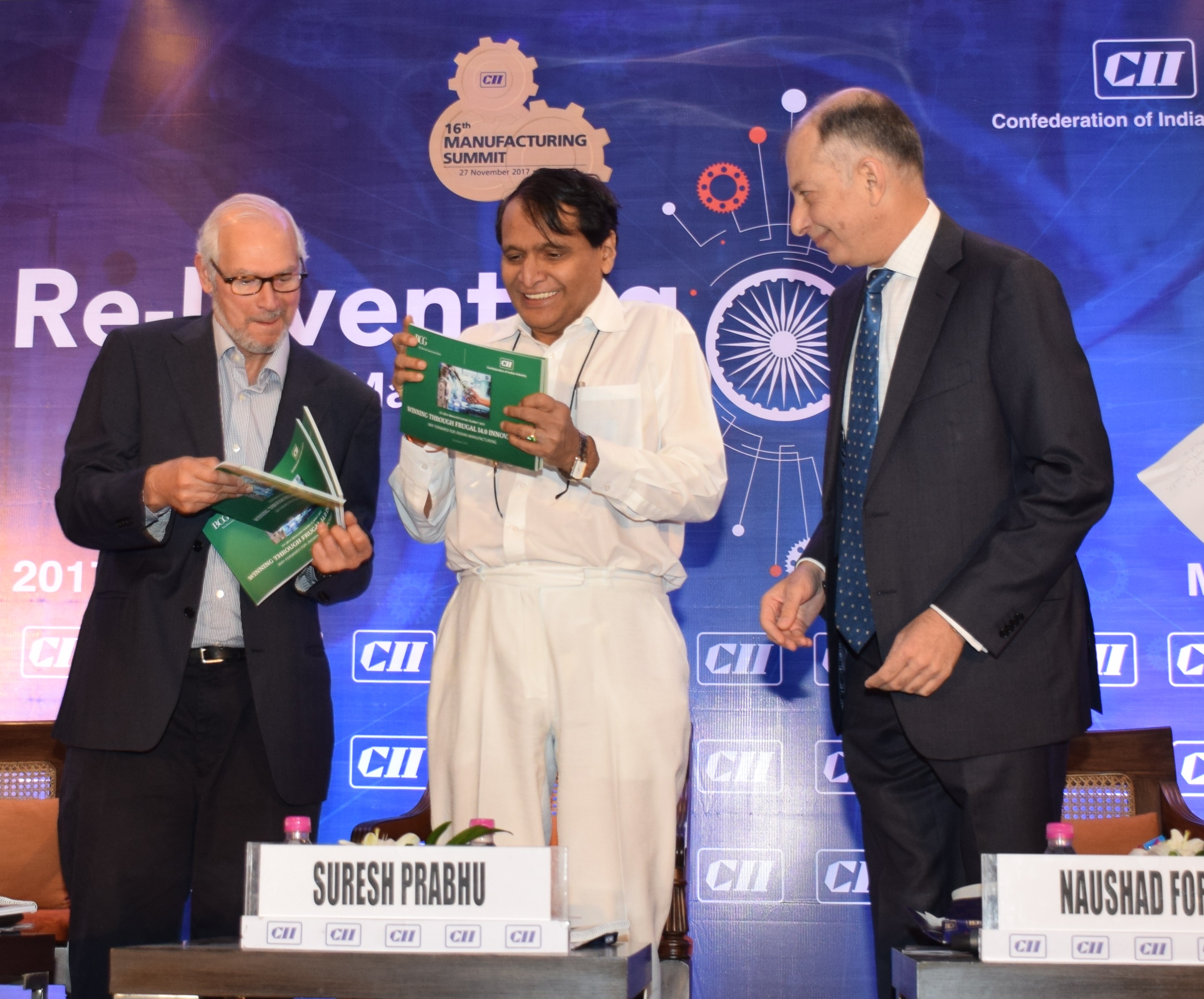 GoI setting up global organisation to promote exports: Suresh Prabhu, Minister of Commerce and Industry
GoI to link SMEs to global markets: Suresh Prabhu
Minister of Commerce and Industry sets $1 trillion revenue target for Manufacturing Sector
CII Manufacturing Sector Report released
GoI setting up global organisation to promote exports: Suresh Prabhu, Minister of Commerce and Industry
GoI to link SMEs to global markets: Suresh Prabhu
Minister of Commerce and Industry sets $1 trillion revenue target for Manufacturing Sector
CII Manufacturing Sector Report released
NEW DELHI:MMNN:27 November 2017
The Government is in the process of setting up an organisation to promote India’s exports in different geographies of the world, developing global linkages and promoting the brand equity of India, said Mr Suresh Prabhu, Union Minister of Commerce and Industry, while addressing CII Manufacturing Summit organised by the Confederation of Indian Industry (CII) in Mumbai.
“For the first time, the Government is working on creating a new organisation to promote India’s exports globally. We will have offices at least in 10 different geographies, with market research back-up and promotional activity. With a completely different approach, we will work with the private sector on this, so that we can penetrate global markets effectively,” said Mr Prabhu.
“It is not possible for a small businessman to sit in India and do business globally. We want to create support system, especially for small businesses, by creating brand equity for India globally. Linkage with global market is necessary for promoting Indian products and we will do that,” the Minister of Commerce and Industry added.
The Government is trying to identify specific products that can be sold in specific geographies globally through market research, the minister said.
“An industry should have to compete with the best benchmark in the world and build global scale to reap the full benefit as a manufacturer,” said the minister adding that because you are part of the global environment.
Setting the $1 trillion revenues target for the manufacturing sector, the minister asked the industry to set the timeline and roadmap for achieving the same. “Without the number it was not possible for the industry to prepare a roadmap for achieving the milestone,” Mr Prabhu added.
India, which has jumped 30 rankings to 100 in Ease of Doing Business, is planning to achieve a position of top 50 ranks in the world.
Mr Prabhu said that districts must be taken as a unit for overall industrial development. “Unless the administration is sensitised there is no sustainable benefit to the people. We will develop the ecosystem around districts,” he added.
Mr Prabhu identified two initiatives through which this target can be achieved – identifying industries that are yet to born for entry and modernisation of the existing industries. “Imagine a top company on Wall Street, it has a market cap of a $trillion, not many countries in the country can boast of that kind of GDP. Where was that company 25 or 15 years ago?,” the minister asked.
Citing the example of the once flourishing textile industry in Mumbai, Mr Prabhu said that while nearly half a million people were employed by them 20 years back, they could not sustain due to lack of modernisation.
Dr Naushad Forbes, Summit Co-chairman, immediate past president of CII, and Co-chairman of Forbes Marshal said, “Now 120 firms have been identified for setting up and for strengthening their footprint globally. The aim is to take the number to 2000 in a few years.”
India needs to build 1,000 India MNCs around the world to achieve greater heights. For this, we may have to develop strong base of R&D, Dr Forbes added.
India has made a mark in improving its ranking in ‘Ease of Doing Business’, but we have to ensure that it should be perceived so by industries in district and taluka levels too, said Mr Jamshyd Godrej, Chairman, CII Manufacturing Summit, and Past President of CII and Chairman and Managing Director of Godrej and Boyce Manufacturing Co. Ltd.
Mr Jamshyd Godrej highlighted that CII Manufacturing Summit has over the years been the trend setter as far as manufacturing sector is concerned. He also highlighted that the 16th Edition is having a special focus on “Make in India”, Ease of Doing Business: The Road Ahead, Millennial MSMEs: Future of Industry 4.0 and Start- up 4.0: India Centric Technology Innovation.
CII-BCG report, titled ‘Winning Through Frugal I4.0 innovation', outlining the way forward for the Indian manufacturing sector, was released earlier at the summit. As per the report, respondents surveyed acknowledge Make-in-India has been closer to reality in 2017. This is a good start, this optimism could translate into growth on ground. However, it will require continued efforts from both industry and policymakers alike. Respondents believe that the government drive to improve manufacturing has been effective.
In Photo : CII Manufacturing Sector Report released
Shri Suresh Prabhu, Union Minister of Commerce and Industry released CII Report on Manufacturing Sector in Mumbai.
In Photo :
· Shri Suresh Prabhu, Union Minister of Commerce and Industry released CII Report on Manufacturing Sector in Mumbai
· Mr Jamshyd Godrej, Chairman CII Manufacturing Summit and Past President, CII and CMD Godrej and Boyce Manufacturing Co. Ltd.
· Dr Naushad Forbes, Summit Co-chairman, immediate Past President CII and Co-Chairman of Forbes Marshal
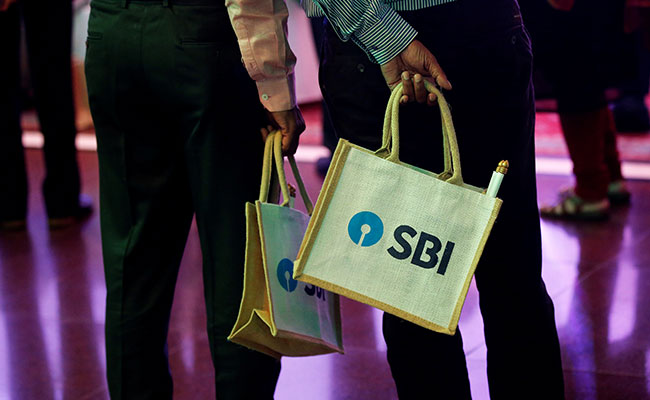 Moody's Raises Ratings Of SBI, HDFC Bank, Two Other Financial Institutions
Moody's Raises Ratings Of SBI, HDFC Bank, Two Other Financial Institutions
NEW DELHI:MMNN:17 November 2017
New Delhi: Moody's Investors Service on Friday upped the long-term ratings of four Indian financial institutions including SBI and HDFC Bank by a notch to 'Baa2' following the upgrade of the country's sovereign rating to the same level.
The four institutions with revised rating are Export-Import Bank of India (EXIM India), HDFC Bank, Indian Railway Finance Corporation Limited (IRFC) and State Bank of India (SBI), Moody's said in a statement.
In the case of HDFC Bank, the rating agency has also upgraded the bank's baseline credit assessment (BCA) and adjusted it to Baa2 from Baa3, it said.
Moody's has assigned a stable outlook to SBI's DIFC branch. The US-based agency today upped India's rating to Baa2 from Baa3 and changed its rating outlook to 'stable' from 'positive', saying the reforms will help stabilise rising levels of debt.
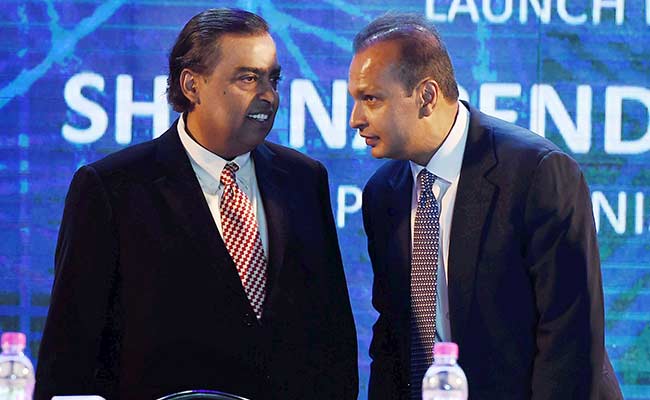 Ambanis Wealthiest In Asia, 18 Indian Families In Top 50: 10 Points
Ambanis Wealthiest In Asia, 18 Indian Families In Top 50: 10 Points
NEW DELHI:MMNN:16 November 2017
The Ambani family, led by brothers Mukesh Ambani and Anil Ambani, has claimed the top slot in Forbes list of 50 richest Asian families with a net worth of $44.8 billion, up $19 billion from the previous year. India enjoys the biggest presence on the list, with 18 families among the region's top 50. The Ambanis superseded the Lees of the Samsung empire to claim the No. 1 spot. The wealth of oil-to-telecom tycoon Mukesh Ambani, who is also the richest Indian, surged over a rally in shares of Reliance Industries and strong customer response to Reliance Jio. His younger brother Anil Ambani heads Reliance Communications.
Here are 10 things that you must know about Forbes list of Asia's richest families:
1. The combined wealth of the Ambanis soared by a whopping $19 billion as they pipped South Korea's Lee family to claim the top notch rank in Forbes list of Asia's wealthiest clans.
2. "Because of India's size, the Ambanis can never be as dominant there as Samsung's Lees have been in Korea. But with Mukesh's next generation establishing a presence at the Reliance Jio telecom operation, this story could play out for years," Tim Ferguson, Editor of Forbes Asia, said on Forbes website, forbesindia.com.
3. The Ambanis are the only Indian family on the top 10 richest families list in Asia. "No family highlights this surge better than the Ambanis of India, this year's biggest gainer in dollar and percentage terms," Forbes said.
4. Other richest Indian families on the list feature the Premjis (rank 11, $19.2 billion net worth), the Hindujas (12th, $18.8 billion), the Mittals (14th, $17.2 billion), the Mistrys (16th, $ 16.1 billion) and the Birlas (19th, $14.1 billion).
5. Other Indian families that got into the exalted list include the Godrej family (20th, $14 billion), the Bajajs (26th, $9.3 billion), the Jindal family (32nd, $7.68 billion), Dabur's Burmans (35th, $7.05 billion), Eicher Motors' Lals (36th, $7 billion) and Shree Cement's Bangur family (37th, $6.7 billion).
6. Motherson Sumi Systems' Sehgal family (41st, $6.15 billion), the Wadia family (42nd, $6.14 billion), DLF's Kushal Pal Singh (44th, $6.1 billion), the Patel family which controls Cadila (45th, $6 billion), the Piramals (47th, $5.38 billion) and the Munjals (48th, $5.37 billion) also made it to the list.
7. South Korea's Lee family which ranked second on the Forbes list saw their wealth soar by $11.2 billion to $40.8 billion this year as shares of Samsung Electronics moved up 75 per cent over the past year.
8. Hong Kong's Kwok family, which controls Sun Hung Kai Properties, ranked third this year with a net wealth of $40.4 billion.
9. The list of Asia's 50 Richest Families is a snapshot of wealth using stock prices and currency exchange rates from the close of markets on November 3. Private companies were valued by using financial ratios and other comparisons with similar publicly traded firms.
10. The ticket to entry for this year's list was $5 billion, $1.6 billion more than in 2016.
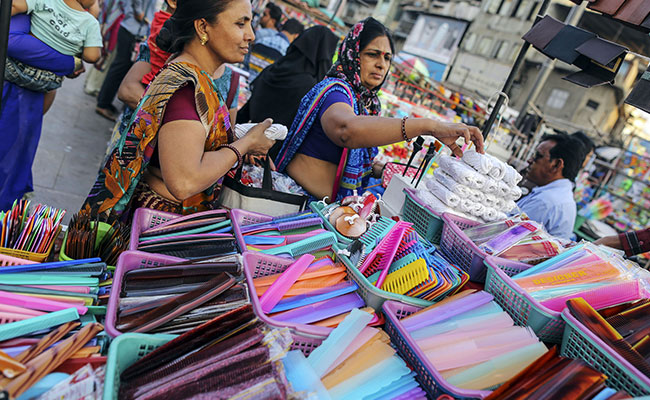 'GST Blues' For Some, But Big Firms Benefit, Get Bigger Market Share
'GST Blues' For Some, But Big Firms Benefit, Get Bigger Market Share
NEW DELHI:MMNN:15 November 2017
India's biggest tax overhaul since independence has driven a wedge between companies that have adapted to the new levies and a vast swath of small businesses, representing almost half the economy, that are struggling.
The trend emerging from the first quarter of earnings since the goods and services tax, or GST, was introduced on July 1 shows bigger companies such as the Tata Group's Titan Co. Ltd, India's largest carmaker Maruti Suzuki India Ltd. and Godrej Consumer Products Ltd. have used the disruptions to gain market share. Smaller operations are reporting that increased compliance costs, supply-chain disruptions and policy changes have hurt profits and forced some to shed workers.
Last week the government cut the tax payable on about 200 items and eased filing norms after it was criticized by some for a chaotic roll-out as companies grappled with the multi-tier structure and onerous reporting system.
The disruptions have hit traders, traditionally a large vote base for Prime Minister Narendra Modi's BJP. Addressing any slump in activity among the country's 58 million small enterprises, and the businesses they supply, will be crucial for growth to rebound in Asia's third-largest economy.
It will take time for small and medium-sized enterprises to recover from the "GST blues" as many weren't prepared and couldn't deal with the changes, said M.S. Mani, a partner overseeing GST at Deloitte India. "This led to some of them putting all operations on hold and it will now take some time for them to revive their business. Many smaller companies are suppliers to large businesses and they were worried about business continuance and tax challenges."
The GST has been more than a decade in the making and is expected to make dodging taxes more difficult, bringing the nation's vast cash economy into the mainstream. But its disruptive roll out and concerns about a widening gap between better-run companies and the laggards -- often smaller firms and those in the informal sector -- poses a challenge to PM Modi who rode to power in 2014 on the promise of more inclusive growth.
The difference for Mithun Chittilappilly, managing director at V-Guard Industries Ltd., which deals with both large and small companies, is down to how cash intensive a business was as well as how prepared they were to make the necessary accounting and technology changes. The consumer durable goods sector, which is more formalized, has better transitioned than others including electrical goods players, said Mr Chittilappilly, whose company manufactures stabilizers, pumps, cables, electrical and solar water heaters.
"In the case of the electrical trade, in many other parts of the country we saw that they were not doing really anything. There is a lot of unorganized sales happening," he said, adding that many companies didn't even have technology systems in place on July 1.
Citigroup Inc. analysts Jamshed Dadabhoy, Aditya Mathur and Arvind Sharma traveled through the state of Madhya Pradesh in October to meet local companies, wholesalers and traders. In most conversations, owners indicated increased compliance costs and difficulties with the technology and network to upload tax invoices.
On the other hand, Nisaba Godrej, executive chairwoman of Godrej Consumer Products Ltd., said remaining "agile" helped her 120-year-old soap company navigate channel disruptions and deliver 10 percent volume growth.
The gold and jewelry industry is another example of how organized retail has side-stepped any overall volume declines. Titan -- which gets 80 percent of its revenue from jewelry -- reported a 71 percent rise in second-quarter net profit from a year earlier and a 29 percent increase in sales.
At the same time, gold consumption in India dropped to a seven-year low in 2016 as efforts to formalize purchases damped demand. Volumes will probably remain near last year's level in 2017 as well, estimates the World Gold Council.
"There are a few companies that are doing well from a market share capture perspective, like Titan Co. Ltd, Maruti Suzuki India Ltd., Hero Motocorp India and organized retailers, but we didn't get the impression of an acceleration in demand yet," the Citigroup analysts wrote in a report.
That view was shared by the chief of one of India's largest electrical equipment manufacturer, Havells India's Anil Rai Gupta. Businesses have been slow to replenish inventories that were emptied out before GST due to the uncertainty stemming from the new levies, he said.
Credit Suisse analysts Neelkanth Mishra and Prateek Singh cited surveys by Tally Solutions Pvt. Ltd, a software provider, to highlight the pain of many small enterprises.
The surveys indicate businesses are holding back payments to their suppliers till they are convinced the supplier has paid the tax and uploaded the invoice.
"This is because they are unsure they will get any credit," they wrote in a report. "If this is systemic and not just a few anecdotes, it could slow down activity levels in many supply chains for several months
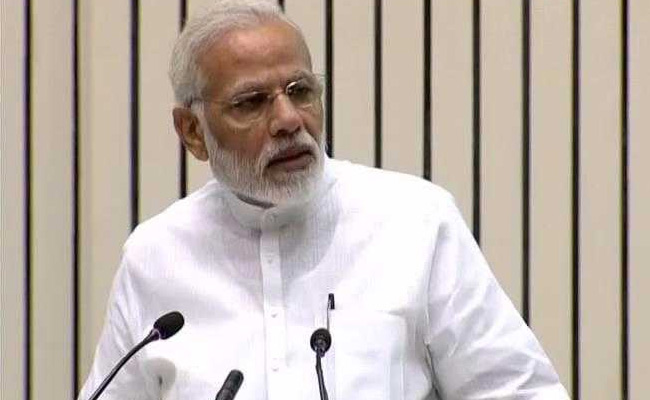 A Year After PM Modi's Notes Ban, What's Changed - And What Really Hasn't
A Year After PM Modi's Notes Ban, What's Changed - And What Really Hasn't
NEW DELHI:MMNN:6 November 2017
Corruption, black money, terrorism, fake currency - Prime Minister Narendra Modi resolved to eliminate all in one stroke when he announced India's biggest-ever cash ban on November 8 last year.
However, the short term costs of his move are outweighing the benefits. He invalidated 86 percent of currency in circulation, saying the move was essential to combat graft and terrorism, often funded with cash or counterfeit bills. He hasn't had much success, though the outlook has dimmed substantially for Asia's third-largest economy following the cash shock.
The biggest blow for PM Modi, who faces re-election early 2019, is that growth has slowed to levels last seen during his predecessor's administration. India's previous government was criticized for massive corruption scandals and a policy paralysis, helping Mr Modi sweep to power in 2014 with the biggest mandate in three decades.
"The process of curbing black money and corruption does not begin or end with demonetization," said Sonal Varma, chief India economist at Nomura Holdings Inc. in Singapore, using the local term for cash stashed away to avoid taxes. "Black money is held not just in cash but also real estate and gold."
PM Modi later widened his objectives to include digitization and boosting the number of tax payers. Here's a look at how he's fared:
PM Modi had said the ban on 500- and 1,000-rupee notes was needed as these high-value bills helped "enemies from across the border run their operations." While the detection of counterfeit currency increased in the 12 months through June 30, it was still just 0.08 percent of total currency in circulation compared with 0.07 percent the previous year. More importantly, the Reserve Bank of India hasn't been able to protect its new notes from counterfeiters, as fake versions of the 2,000-rupee note announced Nov. 8, 2016, have been detected.
Black Money
Soon after the cash ban was announced last year, the government's counsel told the Supreme Court that about a third of the Rs. 15.44 lakh crore of bills invalidated wouldn't be deposited into banks, implying that Indians would rather forfeit this money rather than risk detection. However, 99 percent of the notes have been returned.
"As almost all cash withdrawn has been translated into a rise in bank deposits, one can question to what extent demonetization has really been effective in wiping out black money," Arjen van Dijkhuizen, senior economist with ABN Amro Bank NV in Amsterdam, said by email.
Tax evasion
Widening the tax base is probably where analysts are most optimistic about demonetization. The government has said it will scrutinize the deposits that have flowed into banks since the cash ban to detect any tax evaders. Success in widening the tax base would ease pressure on public finances in a nation where less than 5 percent file tax returns.
"The exercise changed the public's perception of what the government can, and will do to root out corruption," said Shailesh Kumar, senior analyst for Asia at Eurasia Group. "In some ways PM Modi was rewarded for it, as he was seen taking on the issue of corruption which many believe is one of India's biggest problems."
The gamble seemed to have paid off in the electorally important state of Uttar Pradesh, where PM Modi's Bharatiya Janata Party swept elections in March. However, growth has since slowed and there are rumblings of dissatisfaction going into elections in Mr Modi's home state of Gujarat next month. Opinion polls still call the vote for the BJP, and the party has said it will mark Nov. 8 - the anniversary of the decision - as anti-black money day every year.
"It is clear that the short-term pains from these currency operations have been more concrete and visible than potential long-term gains, but that does not mean that there aren't any," said Dijkhuizen.
Digitization
A vanguard of digital payment providers have benefited from PM Modi's move. The biggest player is Paytm, backed by China's Alibaba Group Holding Ltd., which has seen its customer base surge since November. Demonetization also triggered record domestic inflows into mutual funds, which have gushed into the equity market and pushed the key indexes to multiple records.
While overall digital transactions have dipped as cash returns to the economy, the government points to relatively lower levels of currency in circulation as a win. If it wasn't for demonetization, India would have had some Rs. 18 lakh crore in high-value bills today -- instead it has Rs. 12.5 lakh crore, Economic Affairs Secretary Subhash Garg estimates. "So the potential of storing black money is so much reduced. You are doing the same economic activity with the money in circulation," he said.
Terrorism
Instances of stone pelting in the border areas of Jammu & Kashmir fell drastically after the cash ban but started rising again. While the period immediately after demonetization showed a dip in fatalities in insurgent violence, a direct link isn't clear.
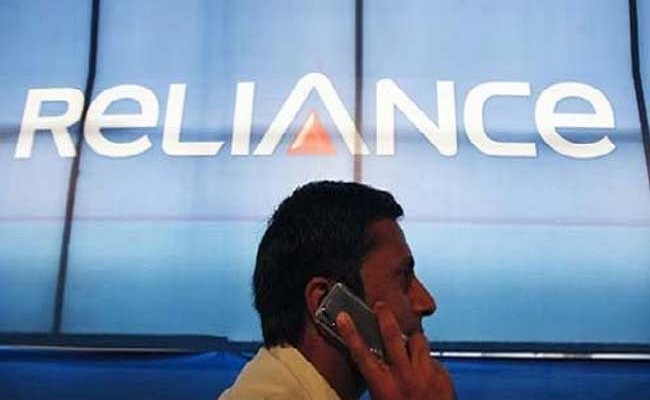 Reliance Communications To Shut Voice Call Service From Next Month
Reliance Communications To Shut Voice Call Service From Next Month
NEW DELHI:MMNN:4 November 2017
New Delhi: Telecom operator Reliance Communications (RCom) will shut down voice call service from December 1 and its customers can move to other networks by the end of the year, as per a direction issued by telecom regulator TRAI (Telecom Regulatory Authority of India) on Friday. In its direction to all telecom operators, TRAI said that RCom on October 31, 2017 intimated it that "RCL (Reliance Communications Limited) shall provide only 4G data services to its customers and as a result will discontinue to provide voice services to the subscribers... with effect from 1st December 2017."
RCom informed TRAI that it is providing 2G and 4G services in eight telecom circles of Andhra Pradesh, Haryana, Maharashtra, UP East and West, Tamil Nadu, Karnataka and Kerala.
The Anil Ambani-led firm has informed TRAI that the company will be upgrading CDMA network of Sistema Shyam Teleservices, which has been merged with it, to provide 4G services in Delhi, Rajasthan, UP West, Tamil Nadu, Kerala, Karnataka, West Bengal, Gujarat and Kolkata service areas.
The telecom regulator said that RCom has informed it has sent all the necessary information regarding closure of voice calls along with option to port out any operators in case subscriber do not wish to continue with 4G data services of the company.
The regulator has directed RCom to not reject any porting out request of its subscribers and asked all telecom operators to accept request of RCom subscribers till December 31, 2017.
RCom, reeling under debt of around Rs. 46,000 crore, decided to shut down its voice call services after it failed to close its wireless business merger deal with Aircel in the beginning of this month.
RCom and Aircel had in September last year signed a binding agreement to merge their mobile businesses. But RCom said the agreement lapsed owing to legal and regulatory uncertainties, objections by interested parties and delays in receiving relevant approvals
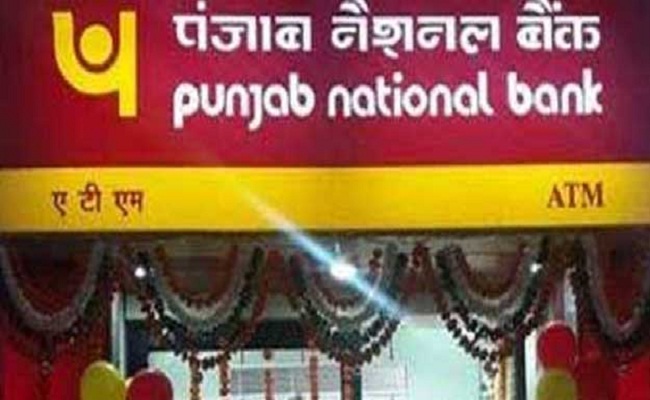 Punjab National Bank Q2 Profit Beats Estimates, Shares Surge
Punjab National Bank Q2 Profit Beats Estimates, Shares Surge
NEW DELHI:MMNN:3 November 2017
State-run Punjab National Bank, the country's fourth-biggest lender by assets, reported a 2 per cent rise in second-quarter profit, beating forecasts. Its shares rose over 5 per cent to Rs. 208 at day's high. Net profit rose to Rs. 561 crore for the quarter ended September 30, from Rs. 549 crore a year earlier, the state-run bank said.
Analysts polled by Reuters on average had expected a net profit of Rs. 433 crore, according to Thomson Reuters data.
Gross bad loans as a percentage of total loans stood at 13.31 per cent at end-September compared with 13.66 per cent at end-June quarter and 13.63 per cent a year earlier
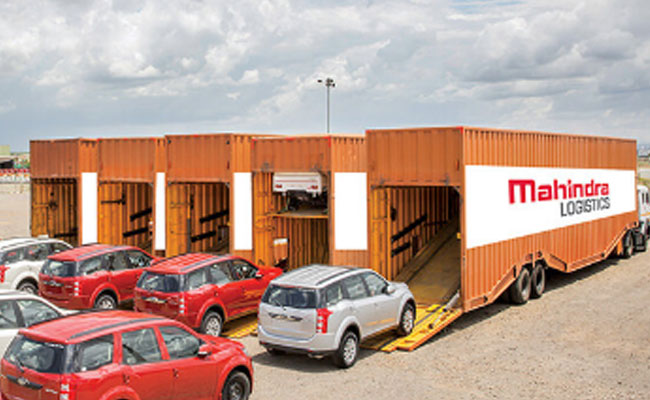 Mahindra Logistics IPO: Should You Subscribe? What Brokerages Say
Mahindra Logistics IPO: Should You Subscribe? What Brokerages Say
NEW DELHI:MMNN:31 October 2017
Mahindra Logistics Rs. 829 crore IPO opened today and will remain open till November 2 (Thursday). The IPO is priced in the band of 425-429/share, valuing the service provider at Rs. 3,052 crore at upper end of the price band of Rs. 429 per share. Retail investors can subscribe in lot size of 34 shares and in multiples thereafter. The issue is a 100 per cent offer for sale (OFS) issue with over 1.9 crore shares on offer in the IPO.. Through this IPO, the promoter, Mahindra and Mahindra, will sell total 96.7 lakh shares (R 411 crore on the lower band) and Rs. 415 crore on the upper band) while equal number of shares will be offloaded by some private equity investors. Capital. Promoter, Mahindra and Mahindra's stake would come down to 58.77 per cent after the IPO.
On Monday, Mahindra Logistics allocated 57.62 lakh equity shares at Rs. 429 per equity share to 15 anchor investors aggregating to Rs. 247.2 crore. As of 1:45 am, the issue was subscribed 26 per cent, according to NSE data.
Mahindra Logistics Limited, part of Mahindra & Mahindra group, is a third party logistics services provider. Mahindra Logistics was incorporated in 2007 and is one of the largest third-party party logistics solutions providers in India. The company follows an asset light model in which most assets (vehicles and warehouses) are owned /provided by its business partners. The company operates in two business segments": Supply Chain Management (SCM) and corporate People Transport Solutions (PTS). The supply chain management segment offers customized and end-to-end logistics solutions and services including transportation and distribution, warehousing, in-factory logistics and value added services to clients.
In corporate people transport solutions segment, Mahindra Logistics provides technology enabled people transportation solutions and services across India to over 100 domestic and multinational companies operating in the IT, BPOs, KPOs, financial services, consulting and manufacturing industries.
Mahindra Logistics IPO Registrar
Link Intime India is the registrar for Mahindra Logistics IPO.
Mahindra Logistics shares allotment and listing
Finalization of allotment around November 8 and listing on stock exchanges around November 10, according to a note from Aum Capital.
Mahindra Logistics Financials
In FY17, Mahindra Logistics posted net sales of Rs. 2,667 crore, growing at a CAGR of around 15 per cent from FY13, according to a note from Angel Broking. In the last few years, Mahindra Logistics has successfully diversified its business and 45 per cent of its revenues are derived by non-Mahindra clients. "The company hired global consultant McKinsey in 2015 to scale up its business, especially that of the non-Mahindra segment and results are clearly visible with the 17.5% top-line CAGR between FY2015-17," says Angel Broking in a note.
On the margins front, company saw margins improving from 2.4 per cent in FY2013 to 2.9 per cent in FY2017. Adjusted for the consultant fees paid to McKinsey, the FY2017 EBITDA o operating margins work out to be 3.6 per cent, indicating a 125 bps appreciation in the EBITDA margins since FY2013. Its adjusted PAT grew at a CAGR of 25 per cent from Rs. 24 crore in FY13 to Rs. 60 crore in FY17.
Mahindra Logistics IPO - What Brokerages Say
The Indian logistics industry is expected to grow and will benefit from these rising opportunities, says Aum Capital, which has a subscribe rating on the IPO. Mahindra Logistics' focus on enhancements in technology, leveraging on the changing logistics industry dynamics particularly with the implementation of GST regime and exploration in new business opportunities in new industry verticals shows bright prospects in the future, it added.
Domestic brokerage KRChoksey Research also has a subscribe rating on Mahindra Logistics IPO. " In terms of valuation, on the upper price band of Rs. 429, the company has been valued at around 65 times FY17 earnings as against 71 times for Blue Dart Express, 34.2 times for Gati Ltd and 54 times for TCI Express," it says. Though valuations look expensive, Mahindra Logistics "plans to support this growth by focusing on increasing business from non-Mahindra Group clients, leveraging the changing industry with the implementation of GST regime with greater focus on warehousing, continuing focus on technology enhancements and diversifying into other industry verticals," the brokerage says.
Another domestic brokerage Angel Broking has a subscribe rating to the issue, based on its growth story, diversification strategy, strong parent repute and post GST attractiveness of the logistics sector.
India's logistics industry is estimated at Rs. 6.4 lakh crore in FY2017 and it is expected to grow at a CAGR of 13 per cent to Rs. 9.2 lakh crore in FY2020. The logistics industry is dominated by transportation (nearly 88 per cent share of the logistics industry), which is expected to remain high over the next 3-4 years. Large segment of the industry is fragmented, hence dominated by the unorganized players.
The GST is seen as a game changer for the logistics sector. "As the sector is largely fragmented, the share of the unorganized players is very high in this sector. Implementation
of GST will result in most business decisions being focused on supply chain efficiency and not on state-wise tax benefits. Many businesses have already started considering a complete redesign of their supply chain network. This will be a boon to the logistics sector and to the large organized players in the sector," says Angel Broking.
Risk Factors
Mahindra Logistics depends significantly on clients in the automotive industry and is highly dependent on the performance of the automotive industry. A loss of or a significant decrease in business from clients in the automotive industry could adversely affect the business and profitability, says Aum Capital.
The company depends on a limited number of clients, which exposes to a high risk of client concentration, the brokerage adds. Fluctuations in the performance of the industries in which their clients operate may result in a loss of clients, a decrease in the volume of work they undertake or the price at which they offer their services
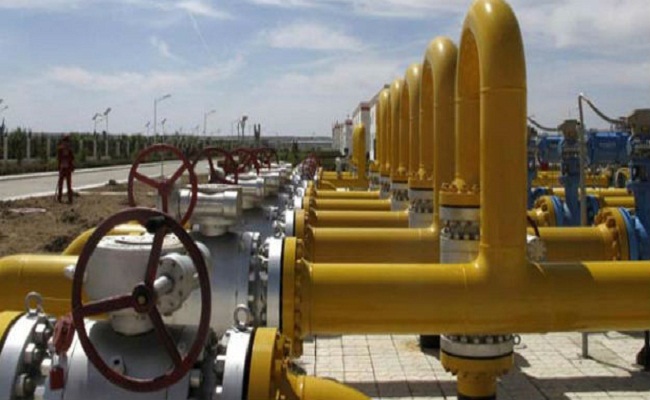 ONGC Gains 4% On Second Quarter Earnings
ONGC Gains 4% On Second Quarter Earnings
NEW DELHI:MMNN:30 October 2017
New Delhi: Shares of Oil and Natural Gas Corp (ONGC) on Monday rose by move than 4 per cent, after the company reported a 3.1 per cent rise in second quarter net profit. The stock gained 4.14 per cent to Rs. 191.15 on the Bombay Stock Exchange (BSE). At the National Stock Exchange (NSE), ONGC shares rose 3.99 per cent to Rs. 191.35. In terms of equity volume, 7.73 lakh shares of the company traded on BSE and over one crore shares changed hands at NSE in morning trade.
State-owned ONGC on Saturday reported a 3.1 per cent rise in second quarter net profit as impressive gain from rising oil prices were taken away by fall in government-mandated natural gas rates.
Net profit of Rs. 5,131 crore in July-September was 3.1 per cent higher than Rs. 4,975 crore reported for the corresponding period last year, the company said in a press statement.
Revenue was up 3.1 per cent at Rs. 18,966 crore.
 Wall Street Ends Week On A High As Tech Stocks Surge
Wall Street Ends Week On A High As Tech Stocks Surge
NEW DELHI:MMNN:28 October 2017
New York: Wall Street climbed on Friday as a surge in the tech sector and a rally in Amazon shares helped push the Nasdaq to its best day in nearly a year.
The S&P technology index led the way higher, up 2.91 percent. The index notched its best day since March 1, 2016 and is up nearly 35 percent on the year versus the 15-percent gain in the S&P 500.
Google-parent Alphabet gained 4.26 percent as its revenue got a boost from advertising sales. Microsoft jumped 6.41 percent after the world's largest software company reported further gains from its cloud computing services.
Also lifting the sector were shares of Apple
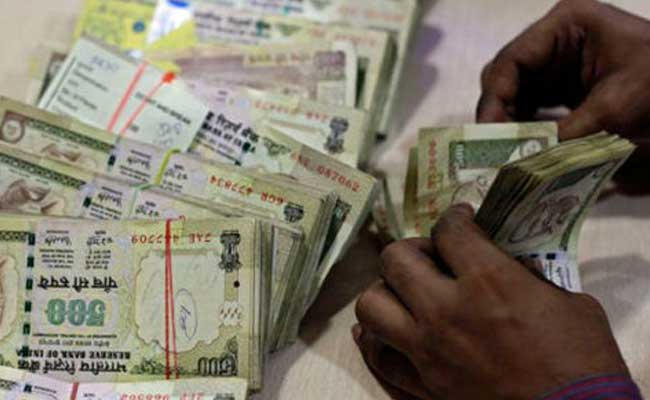 Crackdown On Shell Companies Has Unearthed $1 Billion Cash, Says Minister
Crackdown On Shell Companies Has Unearthed $1 Billion Cash, Says Minister
NEW DELHI:MMNN:24 October 2017
The government is intensifying its crackdown on dubious companies after it unearthed over $1 billion in suspicious cash deposits as part of its crackdown on corruption and efforts to boost foreign investment, a union minister has said.
While the government has already de-registered the business licenses of over 200,000 companies, and restricted their bank accounts, it is now working on limiting property transfers to trace any further generation of black money, said P.P. Chaudhary, junior minister for corporate affairs, in an interview last week in New Delhi.
The ministry is probing deposits of over $1 billion made by around 20,000 companies during the cash ban last year, while its Serious Fraud Investigation Office is investigating 1,505 companies for allegedly violating the Companies Act. It is examining another 809 listed companies, found untraceable by SEBI, to check their status, existence of their offices and directors, the minister said.
"Our purpose is to increase compliance so that investors' confidence increases in Indian companies," Mr Chaudhary said. "This will also attract foreign investors who would be sure that the companies they are investing in are genuine. We will have to curb shell companies if we want to increase confidence of investors in India."
Anti-Corruption Platform
After winning the 2014 election in a landslide on the promise of tackling corruption and improving the ease of doing business, Prime Minister Narendra Modi has been taking measures to prevent money laundering, counterfeiting, hoarding and tax evasion. In November last year, he withdrew 86 percent of currency in circulation aiming to crackdown on unaccounted wealth and put an end to the country's vast shadow economy. In an Independence Day speech on August 15, PM Modi claimed the move had unearthed over 300,000 shell companies.
Following his speech, the ministry of corporate affairs struck off the names of 217,239 companies for failing to comply with regulatory requirements and disqualified directors on these companies' boards from assuming directorship at other firms.
"The final list of disqualified directors may touch up to 450,000," Mr Chaudhary said. "The companies which deposited money during demonetization are being investigated using artificial intelligence".
Data Mining
The ministry is conducting a massive data mining exercise to trail ultimate beneficiaries of these companies. Using data analytics and artificial intelligence, the information gathered will be used to take action against the offenders, the minister said.
It's also developing a state-of-the-art early warning system using artificial intelligence that will throw up red flags and provide information in case a company's financial health deteriorates or if its transactions are suspect.
"In the absence of technology we can be reactive but not proactive," the minister said. "To be proactive it is necessary that we develop artificial intelligence.
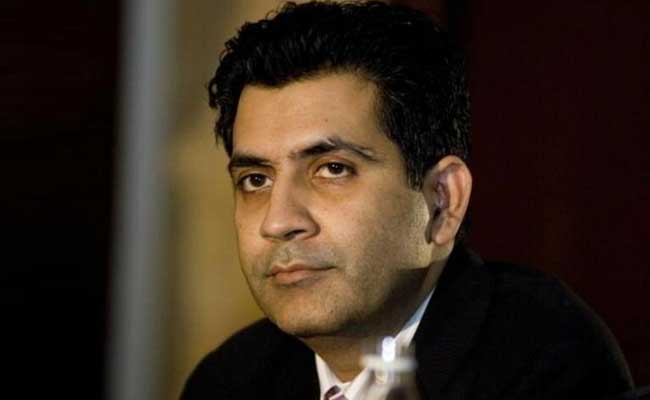 Unitech's Sanjay Chandra Asked To Deposit Rs. 1,000 Crore, No Bail Again
Unitech's Sanjay Chandra Asked To Deposit Rs. 1,000 Crore, No Bail Again
NEW DELHI:MMNN:23 October 2017
The Supreme Court on Monday refused to entertain the bail plea of real estate developer Unitech's Managing Director Sanjay Chandra and asked the real estate major to deposit Rs. 1,000 crore to prove its bonafides. Refusing the bail plea, a Supreme Court bench of Chief Justice Dipak Misra, Justice AM Khanwilkar and Justice DY Chandrachud suggested that the partially complete flats of the real estate major spread over its 64 projects across the country be auctioned.
The suggestion came after senior counsel Ranjit Kumar, appearing for Unitech, told the court the company could sell the flats in the 64 projects to raise money to refund the flat buyers. Amicus curiae (court's advisor) Pawan Shree Agrawal told the court that Rs. 1,865 crore was needed to pay the flat buyers who want refunds.
Ranjit Kumar, appearing for Unitech, urged that Chandra be granted bail for four to five weeks, adding he would during this period submit plans for raising the money for refunding the flat buyers.
He argued that Mr Chandra cannot raise the money required both for refunds and completing the ongoing projects without coming out.
Mr Chandra and his brother Ajay were arrested in April this year after flat buyers who did not get their flats as promised filed complaints of cheating against them. The Chandra brothers had moved the top court against the 11 August order of the Delhi High Court refusing to grant interim bail to them.
 Corporate India Slashes Diwali Gifts Budget By 40%, Finds Survey
Corporate India Slashes Diwali Gifts Budget By 40%, Finds Survey
NEW DELHI:MMNN:18 October 2017
Lucknow: In sync with low-key festivities due to slowdown concerns and pressure on their balance sheets, corporate India is going rather lukewarm in Diwali gifts this year, slashing the budget by at least 35-40 per cent under this head, says a survey by industry chamber Assocham.
The reduction in gifts from corporate houses to their associates, networked partners, employees and other key personalities is more for outside connects than employees who are more or less receiving their annual gesture from their employers, the industry body said.
However, there has certainly been a downward impact on bonus payments with several corporates reeling under debt and cutting costs in their overall operations. Besides, disruptions arising out of demonetisation and roll out issues of the Goods and Services Tax (GST) too have affected the overall sentiment, it said.
"Consequent to slowdown in the Diwali gift sale, the FMCG companies which generally bet high on festive sales in the business of chocolates, cookies and sweets are reporting less than normal sales.
"Similar is the case with consumer durable firms engaged in washing machines, refrigerators, ovens, electric stoves and other such items. Even the festive sale of high-end smartphones seems to have taken a hit," Assocham secretary general D S Rawat said.
"The survey endorses the general low key mood of the industry and trade with the considerable trimming of the festive budget," he said.
The Associated Chambers of Commerce and Industry of India (ASSOCHAM) had conducted a telephonic survey of about 758 companies across tier I, II and III cities - Ahmedabad, Bengaluru, Chennai, Delhi-NCR, Hyderabad, Jaipur, Kolkata, Lucknow, Mumbai in the run-up to Diwali.
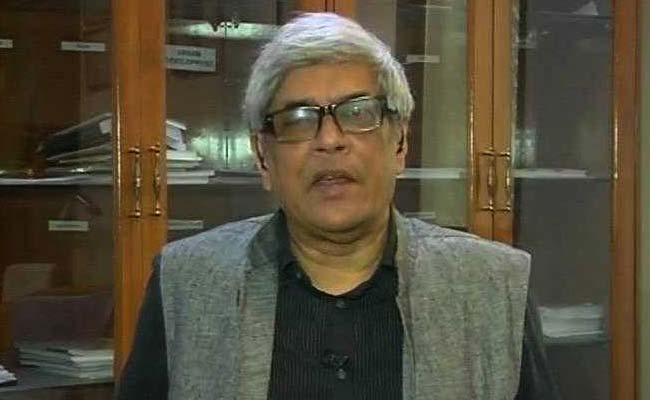 PM Modi's Economic Advisory Team To Focus On Growth, Jobs: 10 Points
PM Modi's Economic Advisory Team To Focus On Growth, Jobs: 10 Points
NEW DELHI:MMNN:11 October 2017
Prime Minister Narendra Modi's newly-constituted Economic Advisory Council has picked 10 issues to work on first, with a focus on accelerating growth and jobs, said economist Bibek Debroy, who heads the five-member panel, after its first meeting today. Mr Debroy chaired the meeting, with the government's Chief Economic Advisor Arvind Subramanian making a presentation.
:
Here is your 10-point cheat-sheet to this story?
1-
Mr Debroy, who is also a member of plan body Niti Ayog, said the council has identified major priorities for accelerating growth and employment over the next six months, identifying 10 themes around which detailed reports will be prepared by its members in consultation with government ministries and departments.
2-The need for "effective tracking of key economic parameters through possible mechanisms for instituting an economic tracking monitor using lead indicators and triggers for action and based on informed assessment and analysis" was also discussed.
3-"We will give our recommendations to the Prime Minister," said Mr Debroy, emphasising that it will be an "exercise of teamwork," and that the council will use resources of government departments like the Niti Aayog. The council would provide professional inputs into the policy making process, members said.
4-The next formal meeting of the Economic Advisory Council will be held in November. Panel member Surjit Bhalla said the council's next focus will be on the Budget.
5-PM Modi set up the Economic Advisory Council last month amid concerns over a slowdown as economic growth slumped to a three-year-low of 5.7 per cent in the June quarter.
6-Yesterday, the International Monetary Fund (IMF) lowered its growth projection for India to 6.7 per cent, from 7.2 per cent, in 2017, attributing it to demonetisation and the introduction of national tax GST. The IMF however said the slowdown is a "blip" and India will regain the tag of the world's fastest growing major economy, projecting the economy to grow at 7.4 per cent in 2018.
7-The government has been attacked by political rivals and by former union ministers like Yashwant Sinha and Arun Shourie over the June quarter slump and over what the opposition has called poor implementation of GST.
8-Finance Minister Arun Jaitley, who is in the US to attend annual meetings of the IMF and the World Bank, said the transition to GST has been "fairly smooth" despite attempts by "ill-informed" Opposition leaders to derail its implementation.
9-In a speech last week, PM Modi defended his economic policies asserting that fundamentals are strong and that the government is committed to reversing the setback of the June quarter. PM Modi stated that a "handful of people" are trying to spread a contagion of pessimism based on the slowdown of the June quarter.
10-The Economic Advisory Council is made up of top economists. Apart from Mr Debroy, who is also a member of plan body NITI Aayog, it includes Surjit Bhalla, Rathin Roy and Ashima Goyal. Ratan Watal, principal adviser of NITI Aayog, is the member secretary of the council.
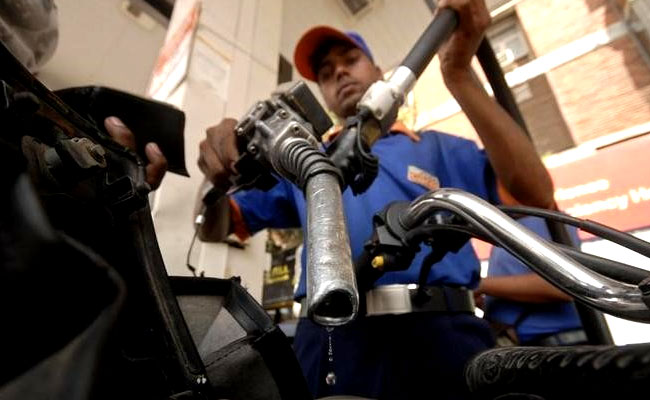 Gujarat Government's Diwali Gift: VAT On Petrol, Diesel Cut By 4%
Gujarat Government's Diwali Gift: VAT On Petrol, Diesel Cut By 4%
NEW DELHI:MMNN:10 October 2017
Gandhinagar: The Gujarat government has decided to reduce the value added tax (VAT) on petrol and diesel by 4 per cent, Chief Minister Vijay Rupani said on Tuesday. The reduction in tax comes just before Diwali in the state, where the Assembly polls are due around the year-end.
"After the central government's instructions, Gujarat has decided to reduce VAT on petrol and diesel by 4 per cent from today mid-night," Rupani said at a press meet here.
With this rate cut, the price of petrol will come down by Rs. 2.93 and that of diesel by Rs. 2.72 in the state, he said.
The effective price of petrol in Gujarat from mid-night on Tuesday will be Rs. 66.53 per litre and that of diesel Rs. 60.77 per litre, the chief minister added.
Because of this move, the state government will suffer a loss of Rs. 2,316 crore annually.
"But we have taken this decision in the interest of people," Rupani said.
The lowering of tax in the poll-bound Gujarat follows Union Finance Minister Arun Jaitley recently writing to all state governments nudging them to reduce taxes on petrol and diesel.
The Centre had recently brought down excise duty on petrol and diesel by Rs. 2 per litre.
Later the day on Tuesday, Maharashtra also followed in the footsteps of the Gujarat government and Centre to slash petrol and diesel rates
 Make In India' Diwali: Sale Of Chinese Items May Drop 45%, Says Report
Make In India' Diwali: Sale Of Chinese Items May Drop 45%, Says Report
NEW DELHI:MMNN:6 October 2017
As people across the country get ready to go shopping ahead of Diwali, customers are increasingly asking for India-made products, said a survey by the Associated Chambers of Commerce of India (Assocham), an industry body. Assocham noted that there seems to be a decline of about 40-45 per cent in consumption of Chinese products this Diwali in comparison to last year. In recent times, China-made fancy lights, lampshades, Ganesha and Laxmi idols, rangolis and fire crackers have flooded the markets.
Be it decorative items like lights, gift items, lamps and wall hangings or other products, the sale of Chinese products may decline by 40-45% this Diwali as compared to last year which was about 30% according to market reports from various states, the survey by Assocham-Social Development Foundation (ASDF) showed.
According to an estimate, the value of Chinese goods sold in 2016 during Diwali was around Rs. 6,500 crore. Out of the total, goods over Rs. 4,000 crore were Diwali-related items such as toys, fancy lights, gift and decorative items, plasticware etc.
Shopkeepers interviewed for the survey said that people are not interested in purchasing Chinese products and are showing interest in local products including earthen diyas.
The demand of electronic items like LCDs, mobile phones and others items made in China has also declined by 15-20 per cent, said Mr D S Rawat, Secretary General ASSOCHAM releasing the Assocham paper.
Chinese products, especially fancy lights which were much sought-after by Indian customers, are losing their popularity due to quality issues as no shopkeeper gives guarantee on these items once they are sold.
Fire crackers made at Sivakasi in Tamil Nadu are preferred over their Chinese counterparts, the survey said.
Assocham interacted with wholesalers, retailers and traders in cities of Ahmedabad, Bangalore, Bhopal, Chennai, Dehradun, Delhi, Hyderabad, Jaipur, Lucknow and Mumbai to estimate the demand for Chinese products across India.
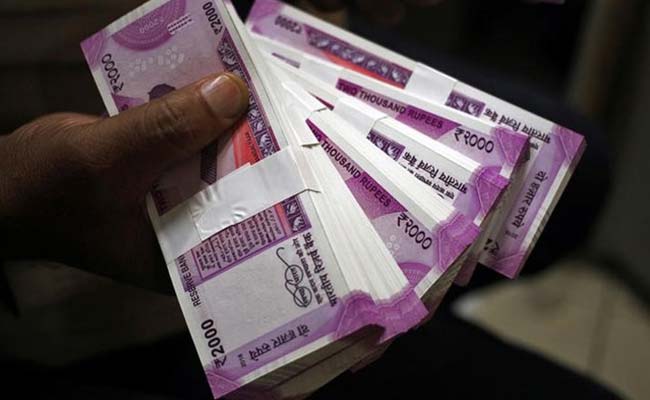 MAS Financial Services IPO Off To A Strong Start: Should You Invest?
MAS Financial Services IPO Off To A Strong Start: Should You Invest?
NEW DELHI:MMNN:6 October 2017
The IPO of MAS Financial Services opened today and by later afternoon it was subscribed nearly 70 per cent. The Gujarat-based non-banking financial company (NBFC) is set to raise Rs. 460 crore from the primary market through an initial public offer (IPO). The MAS Financial Services IPO opened for subscription today. Priced in a band of Rs. 456-459, the MAS Financial Services IPO is a mix of fresh issue and offer for sale by early investors and will give the company a post-issue valuation of Rs. 2,500 crore. The MAS Financial Services IPO can be subscribed in a lot size of 32 shares. Motilal Oswal Investment Advisors is the book running lead manager of the MAS Financial Services IPO.
Should You Invest In MAS Financial Services IPO?
1) The MAS Financial Services IPO is a mix of fresh issue (Rs. 233 crore) and offer for sale (Rs. 227 crore) by early investors like Sarva Capital and DEG (an entrepreneurial development bank of the Netherlands). The company want to use the proceeds of the MAS Financial Services IPO for augmenting its capital base to meet future capital requirement.
2) Gujarat-headquartered MAS Financial Services has been in operation for more than two decades. Its branches are spread across six states and the NCT of Delhi. The company started its operation with focus on micro enterprises (ME) loans and gradually expanded its loan portfolio to two-wheeler and commercial vehicle, SME and housing loans. To leverage its existing client base and network further, it has now extended loans to agricultural input and equipment segment.
3) MAS Financial Services' persistent efforts towards expanding distribution and diversifying product/customer franchise have resulted in a strong 33.4 per cent CAGR in its asset under management (AUM) during FY2013-17, says domestic brokerage IIFL. As of Q1 of FY18 its AUM stood at Rs. 3,451.7 crore with 60 per cent coming from ME loans and 23 per cent from SME loans.
4) Despite the robust growth in its AUM, MAS Financial Services' gross non-performing loans and credit costs have remained in a band of 1-1.2 per cent over the past many years, The company has a revenue-sharing arrangement with large number of sourcing partners, who are accountable for the quality of the loan. According to IIFL, such commercial arrangements have led to lower delinquency rates for MAS Financial Services. Its capital adequacy ratio (CAR) also remained robust at 23.8 per cent as of June 30, 2017.
5) MAS Financial Services has reported a net profit of Rs. 69 crore on net interest income (NII) of Rs. 172 crore in the previous fiscal year. Its net profit has grown at a CAGR of 26.43 per cent while its NII has witnessed a CAGR of 24.75 per cent over the FY2013-2017. At the upper end of the price band, MAS Financial Services shares are valued 3.7 times its post-issue book value, says IIFL. The brokerage has a 'subscribe' rating on the issue. "This valuation should be palatable for long term investors considering the impressive RoE profile of the business," the brokerage said. Angel Broking also has a "subscribe" rating on the issue.
The company deals with relatively risky customers and any default from them could affect its business negatively, say analysts. 22 per cent of MAS Financial Services' portfolio consists of unsecured loans, which could be a potential risk, according to brokerages
 Prataap Snacks Makes Blockbuster Debut, Shares Soar 40% On Listing
Prataap Snacks Makes Blockbuster Debut, Shares Soar 40% On Listing
NEW DELHI:MMNN:5 October 2017
Prataap Snacks, the maker of Yellow Diamond Chips which is endorsed by actor Salman Khan, made a blockbuster debut on stock exchanges today. Its shares rose as much as 40 per cent to an intraday high of Rs. 1,318.80 compared to its issue price of Rs. 938. With 40 per cent listing gains, Pratap Snacks joins a league successful IPOs in 2017 which include Capacit'e Infraprojects, Dixon Technologies, CDSL, Hudco, Avenue Supermarts and Shankara Building Product.
The initial public offer (IPO) Pratap Snacks, which ended on September 26, saw a robust subscription of 47 times. The portion reserved for institutional investors was subscribed 76.89 times while the segment reserved for non-institutional investors and retail investors saw subscription of 101.15 and 8.48 times respectively. Its Rs. 480 crore IPO was a mix of fresh issue (Rs. 200 crore) and offer for sale by existing investors.
Prataap Snacks issue was priced in a band of Rs930-938 per share. The company, which makes products under the 'Yellow Diamond' brand, aims to use the proceeds to expand capacity, marketing and brand building activities and retire the debt on its books.
According to Angel Broking, Pratap Snacks shares were issued at a steep valuation. At the upper end of the price band, Pratap Snacks shares were valued at 202 times its FY17 earnings, said Angel Broking.
However, despite steep valuation the issue got good response due to its strong growth prospects and earnings track record, say analysts. Pratap Snacks reported a revenue CAGR of 27 per cent during FY13-17.
Pratap Snacks shares closed 25.86 per cent higher at Rs. 1,180.65 apiece compared to its issue price of Rs. 938.
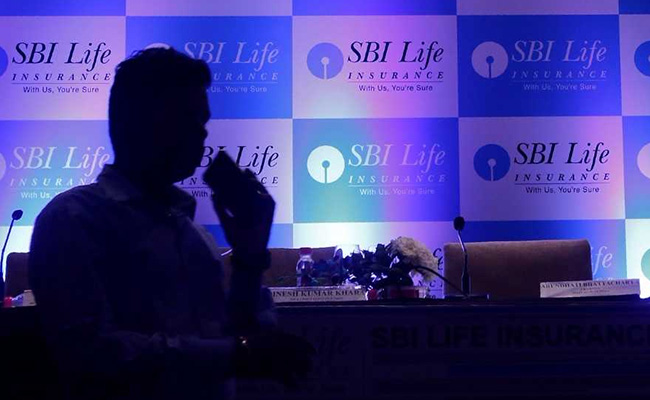 SBI Life Insurance Has A Modest Debut. Should You Buy Shares Now?
SBI Life Insurance Has A Modest Debut. Should You Buy Shares Now?
NEW DELHI:MMNN:3 October 2017
Mumbai: SBI Life Insurance Co Ltd made just modest gains in its trading debut on Tuesday after its IPO - India's biggest in seven years - raised $1.3 billion at valuations widely viewed as steep.
Although India could notch up a record-setting year for IPOs with almost $6 billion in deals done so far in 2017, concerns about high valuations have started to emerge with the stock market starting to pull back after a string of record highs.
Shares in India's biggest private sector life insurer, majority-owned by State Bank of India, were 3.6 percent higher than their IPO price of Rs. 700 on the National Stock Exchange in afternoon trade. At one stage they rose as much as 5.7 percent.
Some debuts earlier this year have been much stronger, with Avenue Supermarts, for example, doubling in price on its first day of trade. SBI Life's gains were, however, in line with ICICI Lombard General Insurance's performance last week when it ended its maiden day of trade 3 percent higher.
SBI Life's IPO, which raised funds for its two main shareholders, saw its valuation jump to Rs. 70,000 crore from an estimate Rs. 46,000 crore in December when it sold a small stake to investors including KKR & Co and Temasek.
Vrinda Aditya, an analyst at Asit C. Mehta Investment Interrmediates Ltd, said although the debut had not been particularly strong, she believed SBI Life was an attractive stock to hold long-term given rosy prospects for India's insurance industry.
"Overall for the insurance industry, it is growing much faster compared to its global peers, so lots to look forward to. But pricing and valuation will remain key in deciding the fate of upcoming IPOs," she said.
Insurers are expected to benefit from rising income levels in the world's second-most populous nation, where comparatively few people currently take out insurance.
IIFL Investment Managers has estimated India's gross direct premium income, a key metric for insurers, was only 0.77 percent of gross domestic product last year, compared to the global average of 2.81 percent.
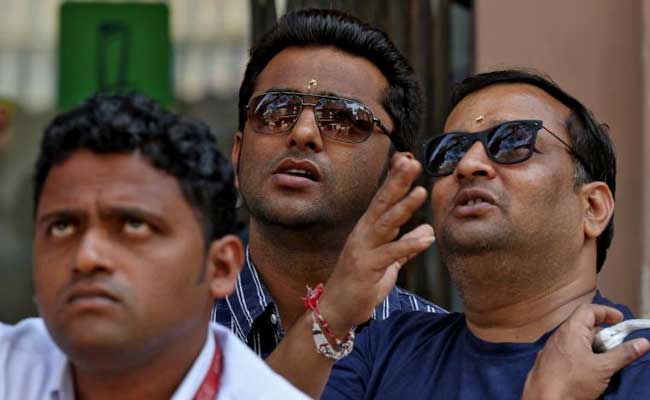 RBI Policy, PMI Data Hold Key To Stock Markets This Week
RBI Policy, PMI Data Hold Key To Stock Markets This Week
NEW DELHI:MMNN:2 October 2017
Outcome of RBI policy meeting, macroeconomic data points and investment trend of overseas investors will be the prime pointers of direction for the stock market this week, say experts. The markets are closed today for Gandhi Jayanti. "Going ahead, we expect the focus to shift to RBI's
policy and upcoming quarterly results and globally, on unwinding of balancesheet by the US Fed and the oil prices trend," said Teena Virmani, Vice-President - PCG Research, Kotak Securities.
PMI (Purchasing Managers' Index) data on manufacturing and services sectors, due this week, are also key determinants for the market movement, experts added.
"Last week, weakness in the indices continued, with the rupee becoming weak and crude prices rising. FIIs continued to be net sellers in Indian equities. However, DIIs gave good support with positive flows. The results season is approaching and in our opinion, FIIs would come back with positive flows if results are in line with expectations. One needs to closely watch FII flows, going ahead," said Anita Gandhi, Whole-Time Director, Arihant Capital Markets.
Foreign investors continued to be in exit mode as they pulled out over Rs. 11,000 crore from stock markets in September.
Market participants are now primed for the upcoming RBI policy review slated for October 3-4.
"RBI policy meet is the key event to watch out for this week," said Vinod Nair, Head of Research, Geojit Financial Services.
 CII Calls for Interest Rate Cut, Rupee Depreciation
CII Calls for Interest Rate Cut, Rupee Depreciation
NEW DELHI:MMNN:22 September 2017
The Confederation of Indian Industry (CII) has called for an interest rate cut of 100 basis points for boosting the economic growth rate. It has also suggested interventions for depreciation of the exchange rate that would increase export-related jobs.
CII is of the firm belief that the current blip in growth rates is temporary and we are confident of a strong recovery by fiscal year end as industry gets over the teething problems of GST and other positive measures take effect. New investments will also start early next year as capacities fill up. said CII President Shobana Kamineni.
A cut in interest rates would encourage domestic demand in sectors such as affordable housing, consumer durables and construction. Interest Rate Subvention in certain sectors such as exports, housing and MSME would also help raise growth, noted the CII statement.
According to CII, there may be need to relax the fiscal deficit targets to accommodate stimulus measures, particularly for job-creating sectors. The FRBM Act permits a deviation of 0.5% of GDP on account of exceptional circumstances. The introduction of the historical tax reform of GST calls for certain adjustment time, said the CII statement.
The efforts of the Government towards building a formal, organised economy are encouraging and this requires all players to go through a period of adjustment. Industry is keen to accelerate this process while also creating the necessary jobs and lead into a virtuous cycle of higher incomes and demand, added Ms Kamineni.
On the GST front, CII recommends procedural changes to ease initial administrative processes. These include allowing C form set-off, addressing reverse charges, redressing mismatches of higher rates on inputs and lower rates on final goods, and grandfathering of existing regional incentives among others. Also, input tax credit refunds for exporters need to be passed on, said CII.
CII has also highlighted the need for bank recapitalisation for enabling credit growth to revive the economy. The Government may consider lowering its stakes in public sector banks for this purpose, suggested CII.
CII has developed policy recommendations for a number of sectors aimed at kickstarting investments and jobs. These include both urgent short-term policy initiatives and medium term enablers. Sectors such as infrastructure, construction, and power are particularly impacted by stressed assets. Government can also intervene to increase import duties on gold to discourage gold imports and boost shift to financial savings.
There is also urgency regarding reforms in the labour regulations, said CII. Fixed term employment and fiscal incentives for creation of incremental jobs would help new employment generation. In the longer term, it is important to simplify and address labour laws for creating better quality jobs.
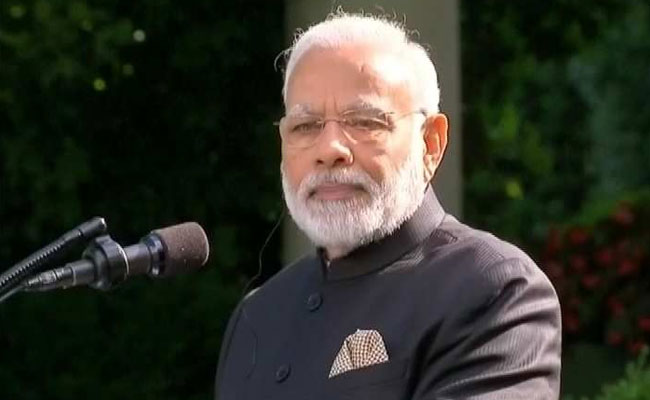 PM Modi's Jobs Problem Is Growing, Government Remains Optimistic
PM Modi's Jobs Problem Is Growing, Government Remains Optimistic
NEW DELHI:MMNN:22 September 2017
The jobs market has been slugged by last November's shock cash ban and July's imposition of the national goods and services tax or GST.
Prime Minister Narendra Modi has a jobs problem.
He swept to power three years ago promising India's poor and middle classes he'd restore their "dignity" after years of swelling inequality, with job creation central to his pitch. But now, the jobs market has been slugged by last November's shock cash ban and July's imposition of the national goods and services tax or GST.
And things look like they're about to get worse: India is set to see a further 30 percent-to-40 percent reduction of jobs in the manufacturing sector compared with last year, according to TeamLease Services Ltd., one of the country's biggest recruitment firms. While other surveys aren't quite so bleak, they also suggest PM Modi is a long way from creating the 10 million jobs a year needed to keep up with his young and rapidly expanding workforce.
The opposition -- in disarray since losing to PM Modi -- is dialing up its criticism as it eyes elections due in 2019.
"If India cannot give the millions of people entering the job market employment, anger will increase, and it has the potential to derail what has been built so far," Rahul Gandhi, heir-apparent to the main opposition Indian National Congress party, said in a speech at the University of California, Berkeley, on Sept. 11. "That will be catastrophic for India and the world beyond it."
Supporters Alarmed
PM Modi's backers are alarmed too. A key ally and member of PM Modi's party, Subramanian Swamy, told a TV channel over the weekend that he has conveyed concerns to PM Modi that the economy could be heading for a "major depression."
The Rashtriya Swayamsevak Sangh -- the ideological parent of the ruling Bharatiya Janata Party -- has alerted the BJP of signs of a shift in the public mood over the government's performance, though PM Modi still remains personally popular, according to a report in the Telegraph newspaper last week that cited unnamed RSS sources.
Munira Loliwala, a general manager at TeamLease, said the slowdown accelerated sharply with demonetization. Indian manufacturers, who previously preferred to cut white-collar jobs rather than factory-floor workers, are now slashing all over, she said.
.
"We see no option, things are not looking to improve much," Mr Loliwala said
Mr Loliwala was referring to PM Modi's move in November to scrap 86 percent of currency in circulation, which contributed to growth in gross domestic product slumping to the lowest since 2014 last quarter. PM Modi then pushed through a nationwide goods and services tax on July 1, which is expected to benefit India in the long-run but for now is roiling supply chains.
Manufacturing accounts for some 18 percent of GDP and directly employs 12 percent of the population, government data show. Mr Loliwala said that many of those who lose their jobs stay unemployed because they lack the communication skills required for the services sector, which accounts for 62 percent of GDP.
The struggle to create jobs threatens a key plank of PM Modi's populist push to reverse decades of widening income inequality, a problem highlighted in a new study by Lucas Chancel and Thomas Piketty published this month. The top 1 percent of India's population hold an unprecedented 22 percent of the nation's wealth, while the middle 40 percent benefited the least compared with China, France and the U.S. over 1980-2014, the study found.
Another recent report underscores the magnitude of PM Modi's challenge to boost employment. India ranks 103 out of 130 countries in the World Economic Forum's Global Human Capital Report 2017, published Sept. 13. Its youth literacy rate is 89 percent, well behind other leading emerging markets, and it has the world's largest employment gender gaps.
Elsewhere, PM Modi is making inroads on policy pledges. Higher savings rates offer funds for investment; record foreign-exchange reserves of around $400 billion provide a buffer to external shocks; steps have been taken to clean up a $191 billion pile of souring loans; and a crackdown on corruption may boost treasury coffers and capture the public's imagination.
Those strengths may help explain why the government remains optimistic.
"The economic slowdown and job losses are in line with a worldwide downward trend," Finance Ministry spokesman D.S. Malik said by phone. "There may be problems in the manufacturing sector, but services are growing well. And that's why our revenue collections are doing fine." Jagdish Thakkar, a spokesman in the Prime Minister's Office, didn't answer calls seeking comment.
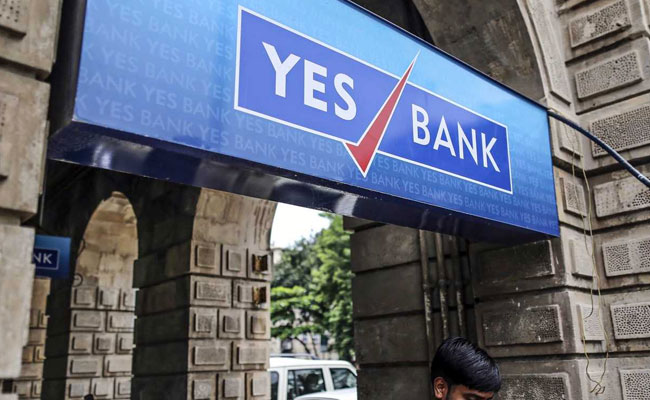 Billionaire Rana Kapoor's Yes Bank Is Said To Cut 12% Of Jobs
Billionaire Rana Kapoor's Yes Bank Is Said To Cut 12% Of Jobs
NEW DELHI:MMNN:21 September 2017
Yes Bank Ltd. has cut about 12 per cent of its workforce to lower expenses and push technology amid an industry-wide lending slump, said people familiar with the matter.
In its first widespread reduction of jobs since it was founded in 2004, the lender cut about 2,500 roles, the people said, asking not to be identified as they aren't authorized to speak to the media. Most of the cuts are in the bank's sales team, the people said. The bank had 20,851 employees at the end of June, exchange filings show. The Economic Times newspaper had earlier reported about the cuts.
Yes Bank, led by billionaire Chief Executive Officer Rana Kapoor, is an outperformer in India's banking system. It has one of the fastest paces of loan growth while the broader gauge languishes at a two-decade low, because companies staggering under bad debt and excess capacity are awaiting evidence of a pick up in demand before they invest more.
The bank's push toward automation and innovation will make some roles redundant, and other staff cuts were due to natural attrition and "performance-linked actions," a Yes Bank spokesman said by email. More details will be communicated in the September-quarter results, the spokesman said, without sharing the exact number of employees being dismissed.
Yes Bank shares rose as much as 1.9 percent as of 1:14 p.m. in Mumbai on Thursday, and have more than doubled in the past year. The lender had 1,020 branches and loans of 1.4 trillion rupees ($17.6 billion) as of end-June, exchange filings show.
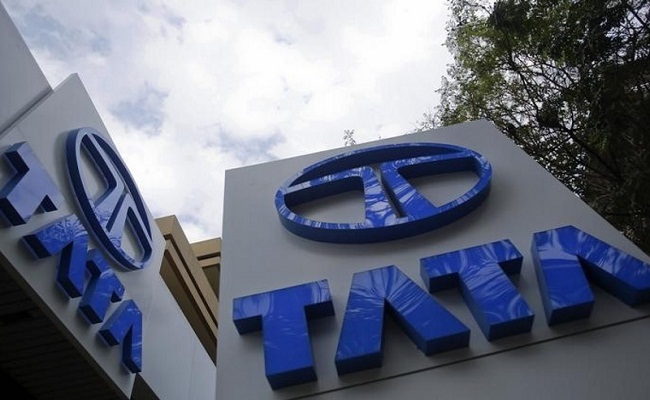 Tata Sons Likely To Buy Rs. 2,000-Crore Stake In Tata Motors: Report
Tata Sons Likely To Buy Rs. 2,000-Crore Stake In Tata Motors: Report
NEW DELHI:MMNN:19 September 2017
Mumbai: Citi is handling the process for a prospective buyer to acquire up to Rs. 2,000 crore ($311.8 million) worth of shares in Tata Motors Ltd on Tuesday, according to a term sheet seen by Reuters. A source familiar with the transaction said the buyer was Tata Sons, the holding company behind the Tata conglomerate which owns nearly 35 per cent of the vehicle maker through its affiliated companies and trusts. The Tata Group has previously said it wants to consolidate its holdings in group companies.
According to the term sheet, the buyer is offering a maximum of Rs. 421.56 apiece, or a 4 per cent premium to the stock's closing price on Monday. The purchase, which is being undertaken through a so-called reverse book build method, is for up to 1.71 per cent of Tata Motors, the term sheet showed.
Tata Sons, which last December bought a 1.73 per cent in the company through a similar reverse book build, did not immediately respond to a request for comment.
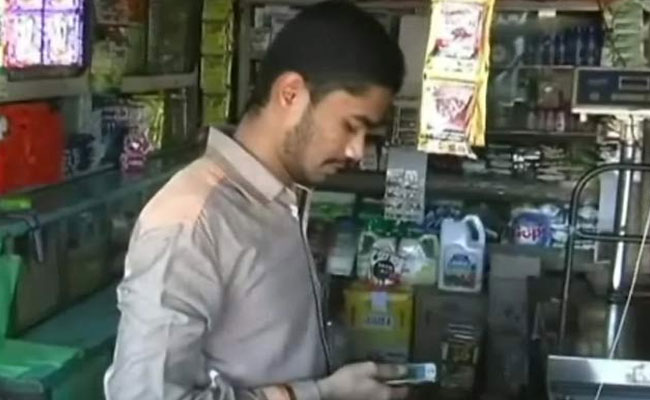 Dixon Technologies Makes Blockbuster Debut, Investor Wealth Surges 71% On Day 1
Dixon Technologies Makes Blockbuster Debut, Investor Wealth Surges 71% On Day 1
NEW DELHI:MMNN:18 September 2017
Analysts are optimistic about the future prospects of Dixon Technologies due to its focus is on expanding product basket, strengthening existing customer relationships and increasing customer base.
Dixon Technologies, which recently concluded its Rs. 600 crore initial public offer (IPO) with oversubscription of 118 times, saw a blockbuster listing on exchanges today. Its shares surged as much over 71 per cent to Rs. 3,024 against its issue price of Rs. 1,766. As against the 23.76 lakh shares on offer, Dixon Technologies IPO received bids for over 28 crore shares showing strong investor interest for the IPO. The segment reserved for qualified institutional buyers and high net worth individuals saw subscriptions of 135 and 346 times respectively. The retail buyer's portion was also subscribed 10.6 times.
Noida-based Dixon Technologies is the largest home-grown manufacturer of consumer electronic and lighting products in India, which manufactures products for Panasonic India, Philips Lighting, Gionee, Intex Technologies and Reliance Retail among others.
Analysts are optimistic about the future prospects of Dixon Technologies due to its focus is on expanding product basket, strengthening existing customer relationships and increasing customer base. The company has reported a compounded annual revenue growth of 33.8 per cent while its net profit has witnessed a CAGR of 78.3 per cent during FY2013-17. For FY2017, Dixon Technologies reported a net profit of Rs. 50 crore on sales of Rs. 2,457 crore in FY2017.
Angel Broking says, its new manufacturing unit which will commence operations this month will add to its revenue growth further. The Rs60 crore of fresh capital that the company has raised from the just concluded IPO, will be utilised for repayment of certain loans, setting up manufacturing facility for LED TVs, financing backward integration capabilities in the lighting segment and for upgradation of IT infrastructure, the company said.
As of 2:55 pm, Dixon Technologies shares traded 64.66 per cent higher at Rs. 2,908.00.
 Google To Launch Tez, A Digital Payments App For India
Google To Launch Tez, A Digital Payments App For India
NEW DELHI:MMNN:14 September 2017
New Delhi: Joining the digital payment bandwagon in India and eclipsing WhatsApp's plans, Google is launching a Unified Payments Interface (UPI)-based digital payment service called "Tez" on September 18.
According to The-Ken.com, on September 18, "Google, Alphabet Inc's subsidiary, will make an entry into India's fast growing and super-competitive digital payment ecosystem".
After the story appeared in the media, Google India sent out an invite for an event in New Delhi on a September 18.
"As we continue to make strides in ensuring that our products continue to serve the needs of everyone, we invite you to a press conference to share details on the launch of a new product developed grounds up for India," the invite read.
This confirms that a Make in India product will be unveiled at the event addressed by Caesar Sengupta, Vice President, Next Billion Users, Google.
"Tez" (meaning fast in Hindi) may work like Android Pay.
UPI is a payment system launched by the National Payments Corporation of India (NPCI) and regulated by the Reserve Bank of India which facilitates the instant fund transfer between two bank accounts on the mobile platform.
The other big player to join India's growing digital payment market is Facebook-owned WhatsApp.
WhatsApp has been in the news for working towards a UPI-based interface on its platform.
According to media reports, the leading messaging platform is already in talks with the NPCI and a few banks to facilitate financial transactions via UPI.
According to the blog website "WABetaInfo", WhatsApp is giving shape to its plans towards bank-to-bank transfer using the UPI system.
Some mobile messaging platforms like WeChat and Hike Messenger already support UPI-based payment services.
The infrastructure of digital payments in India is expected to increase three-fold by the end of 2017 with almost five million electronic point of sale (PoS) machines, the Ministry of Electronics and IT (MeitY) has said.
"We expect that by December, the number will actually go up to five million PoS, which means that the infrastructure for digital payments is going to grow three times in the short span of one year," MeitY Secretary Aruna Sundararajan said.
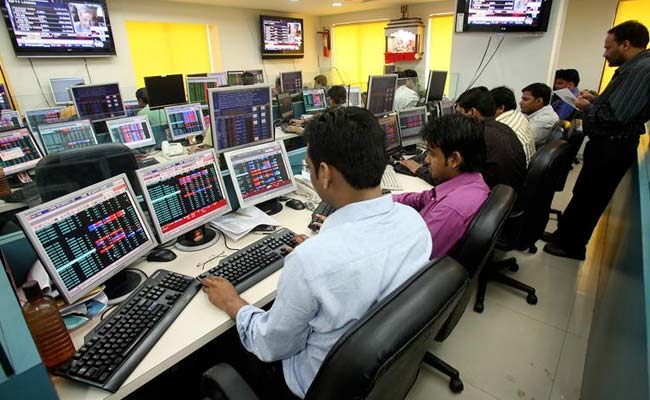 Nifty Edges Higher, Near All-Time High; Tata Power, RIL Surge
Nifty Edges Higher, Near All-Time High; Tata Power, RIL Surge
NEW DELHI:MMNN:13 September 2017
The benchmark BSE Sensex gained close to 100 points in early trade today on buying by domestic institutional investors even as retail inflation rose to a five-month high. Positive trends at other Asian markets also influenced trading sentiments here. The 30-share barometer, which had gained 496.69 points in the previous four straight sessions, was trading higher by 80 points in early noon trade with power, consumer durables, oil & gas, IT and PSU stocks leading the gains
The Nifty rose to 10,120 at day's high, not far from all-time highs of 10,137.
Prominent gainers were Reliance Industries, TCS, Dr Reddy's, Adani Ports, Sun Pharma, M&M, Tata Motors, Hero MotoCorp, Coal India, ICICI Bank, SBI, Bajaj Auto,ONGC and Maruti Suzuki. Tata Power surged nearly 6 per cent while RIL rose 3 per cent.
Brokers said sentiment remained upbeat despite retail inflation rising in August to a five-month high of 3.36 per cent. Industrial production grew by 1.2 per cent in July against 0.2 per cent contraction seen in the previous month.
Brokers said Asian markets were firm after Wall Street stocks jumped to fresh records yesterday on easing geopolitical worries and US hurricanes. Hong Kong's Hang Seng was up 12.03 points, Shanghai's Composite index rose 0.03 per cent, while Japan's Nikkei gained 0.47 per cent in their early trade. The US Dow Jones Industrial Average ended 0.28 per cent higher yesterday.
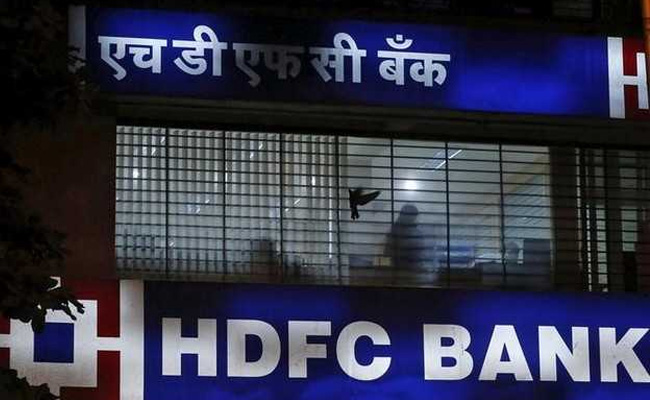 HDFC Bank Unseats TCS To Become Second Most Valuable Company In India
HDFC Bank Unseats TCS To Become Second Most Valuable Company In India
NEW DELHI:MMNN:12 September 2017
HDFC Bank, which was recently granted the status of a 'too big to fail' bank, today achieved another milestone. The Mumbai-based lender today became the second most valuable bank in India pipping IT bellwether TCS. HDFC Bank's shares touched an intraday high of Rs. 1,840, taking its total market value to Rs. 4,74,925 crore, while at the day's highest level of Rs. 2,479, TCS' total market capitalisation was Rs. 4,74,466 crore. Here are five key points that you must know about it:
1) Including today, HDFC Bank shares have gained for the sixth straight day. Global brokerage Nomura said "HDFC Bank is uniquely positioned to take advantage of the market share churn. It is ahead of competition in investing for the future (digital) and is very focused on reducing the turnaround time." The brokerage has a buy rating on HDFC Bank for a target price of Rs. 2,100, implying a potential gain of 15 per cent from Monday's closing price.
2) Shares of HDFC Bank have surged nearly 53 per cent so far this year, while that of TCS rose by nearly 5 per cent. Rupee's appreciation against the dollar and US government's crackdown on work visas has made the revenue outlook of Indian IT companies gloomy. Further, the rise of automation has also reduced the labour component of certain IT related activities. IT sector has been one of the worst performing sector in India this year.
3) Reliance Industries Ltd is the country's most valued firm with a market cap of Rs. 5,33,818.72 crore followed by HDFC Bank, TCS, ITC (Rs. 3,35,993.75 crore) and HDFC Ltd (Rs. 2,84,580.02 crore) in the top five list.
4)The Reserve Bank of India, on September 4, included HDFC Bank in the list of 'too big to fail' lenders, referred to as D-SIB or domestic systemically important banks. State Bank of India and ICICI Bank are the only other two banks which are also a part of this list. SIBs are subjected to higher levels of supervision so as to prevent disruption in financial services in the event of any failure.
5) As of 2.47 pm, HDFC Bank shares traded 0.55 per cent higher at Rs. 1,833.40 while TCS shares traded 0.73 per cent higher at Rs. 2,472.35 compared to Nifty, which was up 0.74 per cent.
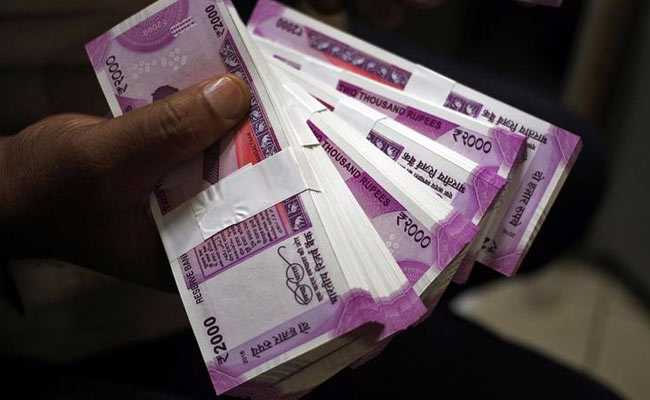 Rupee Vs Dollar: From 3 Week Low To One Month High In 2 Days
Rupee Vs Dollar: From 3 Week Low To One Month High In 2 Days
NEW DELHI:MMNN:9 September 2017
The rupee strengthened sharply against the dollar on Friday, rising to 63.78 against the dollar, a one month high. Including Friday's gains the rupee has surged nearly 0.75 per cent in two days from a three-week low of 64.26 hit on Wednesday. Traders said that selling of the US currency by exporters and banks lifted the rupee. Also, the dollar turned weaker against major currencies on Friday, further boosting the rupee. The rupee had closed at 64.05 against the US dollar on Thursday. Reduced expectations for another US Federal Reserve interest rate hike this year helped drive down the dollar to its lowest in more than 2-1/2 years on Friday.
Here Are 5 Things To Know About Rupee's Surge Against The US Dollar
1) The dollar index, which tracks the greenback against a basket of six major currencies, fell to a low of 91.011 on Friday, its weakest since January 2015.
2) The European Central Bank also raised its economic growth forecast for this year, which boosted the euro. The euro rose 0.12 percent to $1.2036 on Friday. Asian currencies like Yen, South Korean won and Singapore dollar also gained against the dollar.
3) Continued buying of Indian debt by foreign institutional investors also supported the local currency. In this year so far foreign investors have pumped in nearly $20 billion in Indian debt market.
4) Bond yield rose for the fifth straight session on Friday on geopolitical tensions. The 10-year benchmark government bond yield closed at 6.543 per cent on Friday, a level last seen on 28 August, against Tuesday's close of 6.515 per cent. Bond yields and prices are inversely co-related.
5) The rupee has surged over 6 per cent against the US dollar this year, boosted by strong inflows into debt and equity markets and a falling trend in inflation.
 Dr Reddy's Stock Slumps After German Regulator's Observations
Dr Reddy's Stock Slumps After German Regulator's Observations
NEW DELHI:MMNN:8 September 2017
Dr. Reddy's Laboratories said on Friday a German regulator has made six major observations about its Duvvada drug making facility in the southern Indian state of Andhra Pradesh, sending shares down as much as 7.1 percent.
Dr. Reddy's, in an exchange filing, did not however elaborate on the observations, which typically refer to aspects of the production process that must be improved in order to gain regulatory approval for exports.
A company spokeswoman did not immediately respond to a request for details of the observations on Friday.
The products manufactured at the unit are not currently exported to the European Union, it said.
Germany and the United Kingdom contribute the most to Dr. Reddy's revenue from Europe, which rose 28 percent to 2.08 billion rupees ($32.57 million) in the June quarter.
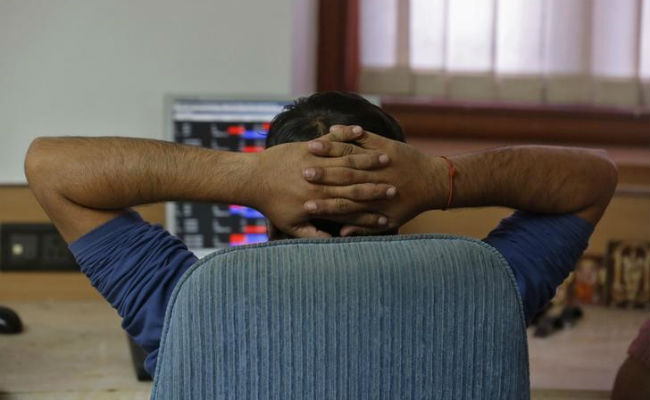 Sensex Turns Flat; Midcap, Smallcap Shares Outperform
Sensex Turns Flat; Midcap, Smallcap Shares Outperform
NEW DELHI:MMNN:7 September 2017
The BSE Sensex and Nifty turned flat during post noon trade on Thursday as energy shares led by Reliance Industries, which turned ex-bonus today, gave up early gains. As of 1.15 pm, Sensex was up 6.56 points or 0.02 per cent at 31,668.53 while the Nifty traded 0.09 per cent or 9.45 points higher at 9,925.65. Meanwhile, smallcap and midcap shares outperformed benchmark indices and were up 0.67 per cent and 0.60 per cent respectively.
Indian shares rebounded on Thursday, propelled by financial stocks such as Indiabulls Housing Finance Ltd, on positive sentiment as global markets recovered after the U.S. government agreed to raise its debt limit until December.
U.S. President Donald Trump forged a surprising deal with Democrats in Congress on Wednesday to extend the U.S. debt limit and provide government funding until Dec. 15, embracing his political adversaries and blindsiding fellow Republicans in a rare bipartisan accord.
The agreement, which eliminates the near-term risk of a government shutdown, helped the MSCI's broadest index of Asia-Pacific shares outside Japan gain 0.5 percent. Japan's Nikkei closed 0.2 percent higher.
The outlook for Indian markets still remains subdued given continued concerns over the escalating tensions around North Korea's nuclear test, but analysts said markets were still being supported by domestic retail investments, preventing any steep losses.
"There has been a sustained inflow trend into domestic mutual funds and retail participation into equities markets. The liquidity flow is reasonably abundant," said Harish Krishnan, senior fund manager - equity at Kotak Mutual Fund.
"Given the stretched valuations, we don't see a significant upside either," he added.
The Nifty Financial Services index climbed for the third consecutive session, led by Nifty 50 top percentage gainer Indiabulls Housing and Axis Bank Ltd, up as much as 4.2 percent and 1.3 percent, respectively.
Himachal Futuristic Communications Ltd, a maker of fibre cables and other telecom equipment, extended gains to rise as much as 9.96 percent to its highest in more than nine years after U.S.-based investment manager GMO LLC bought 11.1 million shares at a premium of about 12 percent in a bulk deal on Wednesday.
Eicher Motors Ltd, the maker of Royal Enfield motorbikes, rose as much as 2.5 percent after the Economic Times reported the company is set to make a binding takeover bid for Italian motorcycle manufacturer Ducati for $1.8 billion-$2 billion.
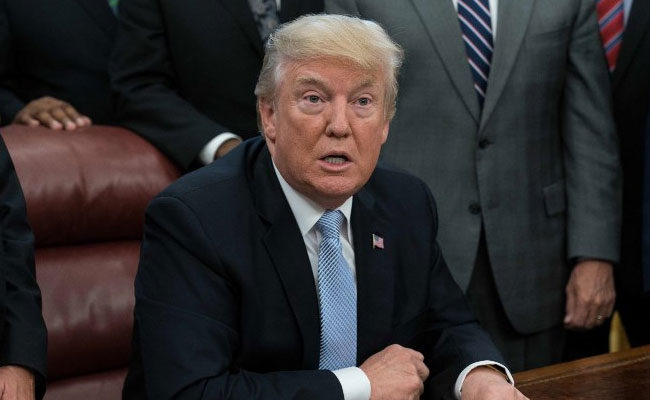 Top IT Companies Vow To Fight For Employees Hit By Trump's Latest Move
Top IT Companies Vow To Fight For Employees Hit By Trump's Latest Move
NEW DELHI:MMNN:6 September 2017
US tech giants, including Apple, and Microsoft, have pledged to stand by their employees after the Trump administration scrapped an amnesty programme that granted work permits to immigrants who arrived in the country illegally as children. US President Donald Trump on Tuesday scrapped an Obama-era programme - called Deferred Action for Children Arrival (DACA) - that protects from deportation immigrants brought illegally into the United States as children, giving the Congress six months to decide the fate of almost 800,000 young people. DACA gave work permits to people known as "Dreamers" who were brought to the United States illegally as children. Top executives of many tech companies including Google, Microsoft, and Facebook have urged the Congress to protect the "Dreamers".
The move is likely to impact 800,000 undocumented workers including more than 7,000 Indian-Americans. Trump shifted responsibility to a Congress controlled by his fellow Republicans and said it was now up to lawmakers to pass immigration legislation that could address the fate of those protected by DACA who would be in danger of deportation.
Brad Smith, president and chief legal officer of Microsoft in a blog post said that if Congress fails to act, the IT company will exercise its legal rights properly to help protect its employees. For the 39 Dreamers that we know of who are our employees, our commitment is clear. If Congress fails to act, our company will exercise its legal rights properly to help protect our employees. If the government seeks to deport any one of them, we will provide and pay for their legal counsel. We will also file an amicus brief and explore whether we can directly intervene in any such case. In short, if Dreamers who are our employees are in court, we will be by their side, he wrote in a blog post.
Google's India-born CEO Sundar Pichai in a tweet said: "Dreamers are our neighbors, our friends and our co-workers. This is their home. Congress needs to act now to
Facebook founder and CEO Mark Zuckerberg in a Facebook post said: "This is a sad day for our country. The decision to end DACA is not just wrong. It is particularly cruel to offer young people the American Dream, encourage them to come out of the shadows and trust our government, and then punish them for it."
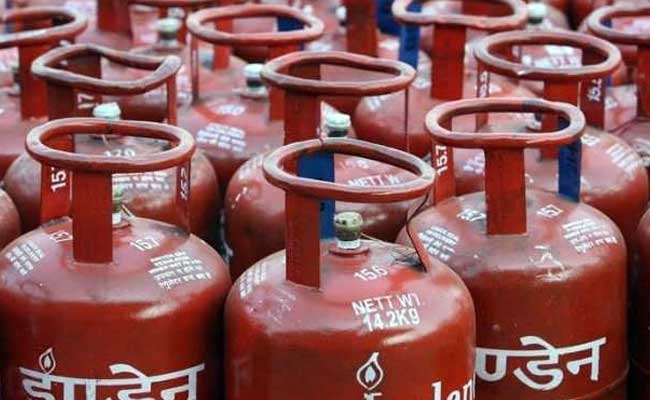 Cooking Gas (LPG) Price Hiked By Rs. 7 Per Cylinder, ATF By 4%
Cooking Gas (LPG) Price Hiked By Rs. 7 Per Cylinder, ATF By 4%
NEW DELHI:MMNN:1 September 2017
New Delhi: Subsidised cooking gas (LPG) price was today raised by over Rs. 7 per cylinder, in line with the government's decision to hike prices every month so that all subsidises are eliminated by this fiscal-end.
A subsidised 14.2-kg LPG cylinder now costs Rs. 487.18 in Delhi as against Rs. 479.77 previously, according to Indian Oil Corporation, the nation's largest fuel retailer.
Oil Minister Dharmendra Pradhan had on July 31 told the Lok Sabha that the government had asked state-owned oil companies to raise subsidised cooking gas (LPG) prices by Rs. 4 per cylinder every month to eliminate all the subsidies by March next year.
Rates were, however, raised by Rs. 2.31 per cylinder on the previous due date on August 1 and the oil companies have effected a larger hike to equalise that, sources said.
Since the implementation of the policy of monthly increases of Rs. 2 from July last year, subsidised LPG rates have gone up by over Rs. 68 per cylinder. A 14.2-kg LPG cylinder was priced at Rs. 419.18 in June 2016.
The government had previously asked IOC, Bharat Petroleum Corporation Ltd (BPCL) and Hindustan Petroleum Corporation Ltd (HPCL) to raise rates of subsidised domestic LPG (liquefied petroleum gas) by Rs. 2 per 14.2-kg cylinder per month (excluding VAT).
The quantum has now been doubled so as to bring down the subsidy to nil.
Every household is entitled to 12 cylinders of 14.2-kg each at subsidised rates in a year. Any requirement beyond that is to be purchased at market price.
The price of non-subsidised LPG or market-priced cooking gas has also been hiked by Rs. 73.5 to Rs. 597.50 per bottle. Rates were at the last revision cut by Rs. 40.
Simultaneously, the oil companies also raised prices of aviation turbine fuel (ATF) by 4 per cent, in keeping with rising global rates.
ATF, or jet fuel, now costs Rs. 50,020 per kilolitre, Rs. 1,910 more than Rs. 48,110 previously. This hike comes on the back of a 2.3 per cent increase effected from August 1.
Also, price of kerosene sold through public distribution system (PDS) was hiked by about 25 paise per litre.
The government is adopting the same policy as in LPG for eliminating subsidy on kerosene. Since July 1 last year, rates have been been hiked by 25 paise per litre each fortnight.
While Delhi has been declared a kerosene-free state, the fuel now costs Rs. 22.27 per litre in Mumbai compared to Rs. 22 previously. Kerosene was on July 1, 2016, priced at Rs. 15.02 per litre in Mumbai.
State-owned oil firms revise rates of LPG and ATF on 1st of every month based on average oil price and foreign exchange rate in the previous month.
Today's hike in the LPG price is fourth since the May 30 order of the oil ministry to raise rates by Rs. 4 per cylinder every month.
There are as many as 18.11 crore customers of subsidised LPG in the country. These include 2.6 crore poor women who were given free connections during the last one year under the Pradhan Mantri Ujjwala Yojna.
There are another 2.66 crore users of non-subsidised cooking gas.
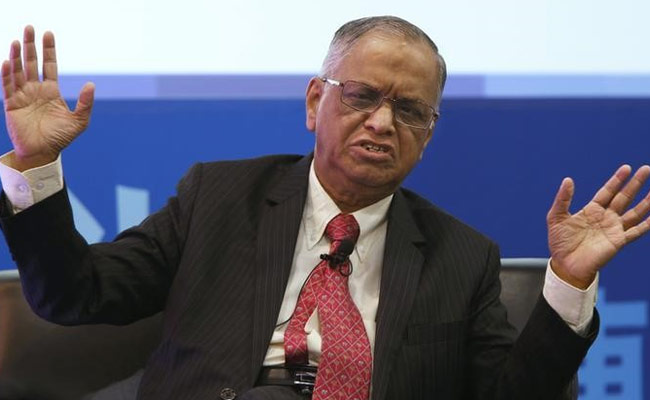 Narayana Murthy's Charges Patently False, Slanderous: Infosys Ex-Chairman
Narayana Murthy's Charges Patently False, Slanderous: Infosys Ex-Chairman
NEW DELHI:MMNN:1 September 2017
New Delhi: Infosys former chairman R Seshasayee hit out at company founder N R Narayana Murthy on Friday for carrying out "personal attacks" and making "false and slanderous accusations" against him, saying he was unable to understand the motivation for the persistent vendetta. Mr Seshasayee, who along with three other directors quit from the board of Infosys after Mr Murthy rallied other co-founders and institutional investors to bring back peer Nandan Nilekani, said he had always been candid and truthful in all his statements concerning Infosys.
"Since my resignation from the board of Infosys, I have kept away from making any public statements, despite provocations, since I sincerely want the company to move forward, and not be bogged down with the issues of the past," he said, adding he was forced to issue a statement after Mr Murthy's "personal attack and patently false and slanderous accusations" at an investor call earlier this week.
Days after installing Mr Nilekani, Mr Murthy had on August 29 stated that his concerns with the previous board led by Mr Seshasayee were poor governance and ex-CFO Rajiv Bansal being paid large severance as 'hush-money'.
Mr Seshasayee said Mr Murthy's statement to the investors "misleadingly attributes words" to him, words taken "completely out of context" to make it appear that he had lied.
Mr Murthy had in his investor call said that Mr Seshasayee had on October 14 told him that the board agreed to pay Mr Bansal a large sum of money as it "felt generous".
"To quote an anonymous whistle blower letter that alleged many things, which have subsequently been proved baseless and false through multiple investigations by highly respected counsel, in order to give an impression to the audience that I lied to the shareholders, is patently offensive," he said. Also, words that Mr Murthy attributes to independent directors Jeff Lehman and Roopa Kudva from their private conversation with him are also "egregiously taken out of context," he said.
Mr Murthy had stated that Lehman had told him that the reasons for payment to Mr Bansal were confidential while Ms Kudva asked him to sign a non-disclosure agreement if he wanted to know the reasons.
"It is regrettable that Murthy 's campaign on the alleged governance lapses has continually slipped into personal attacks and slander on individual board members," he said.
Seshasayee said he joined Infosys at the invitation of Mr Murthy, who in February this year issued a press statement to say that "I was a man of high integrity."
"I am therefore at a loss to understand the motivations for this persistent vendetta against me," he said.
The same statement went on to quote Mr Lehman, a former of director of Infosys who also resigned recently, to say that Mr Murthy should stop quoting "lies" floated in the anonymous letter on ex-CFO compensation and alleged irregularities in $200 million acquisition of Israeli firm Panaya."For the good of Infosys, I wish Murthy would stop quoting those lies as if they were reputable. For the good of Infosys, I wish Murthy would stop defaming Seshasayee and the other members of a Board who have served with dedication and integrity, who have turned the other cheek when slandered, and who have acted only in the best interests of the company," he said.
He said during his tenure, Mr Seshasayee was "scrupulously and tirelessly devoted to ensuring that the Board comply with all applicable principles of law and governance." "An anonymous, so-called 'whistle blower' made outrageous charges against management; the Board engaged several sets of outside counsel and investigators of impeccable reputation, and those investigators determined that every charge was false and without any foundation," he said.
The statement also quoted John Etchemendy, another former Director of Infosys who also resigned recently from the Board, to say that Mr Seshasayee is "a man of impeccable integrity. Faced with unfair, false, and outrageous attacks, he has consistently responded with scrupulous honesty and forthrightness." He said he was "fully conversant with the details of the Rajiv Bansal issue" and can categorically state that at no point did Mr Seshasayee say "anything in public or, to the best of my knowledge, in private that was untrue or did not reflect the collective view of the Board
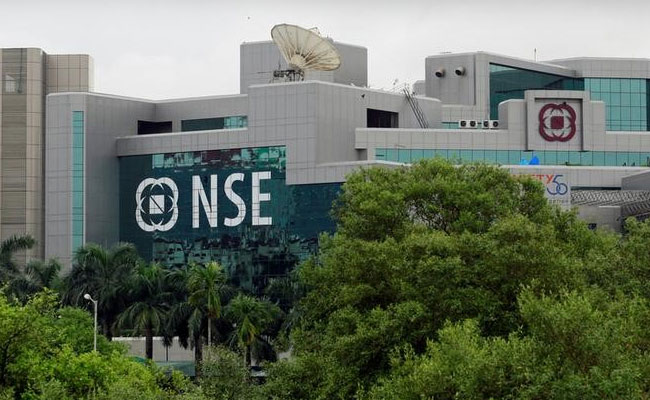 Nifty Regains 9,900 Amid Broad-Based Gains
Nifty Regains 9,900 Amid Broad-Based Gains
NEW DELHI:MMNN:28 Aug 2017
Mumbai: The benchmark BSE Sensex advanced 179 points and the NSE Nifty reclaimed the 9,900-mark in early trade today on strong gains in IT, pharma and FMCG stocks. Positive global cues too influenced the investor sentiment.
The 30-share index was trading higher by 179 points, or 0.56 per cent, at 31,775.06. Sectoral Indices of IT, teck, power, realty, healthcare and banking rose by up to 1.60 per cent.
The gauge had gained 337.21 points in the previous three sessions.
Stock markets were closed on Friday on the occasion of Ganesh Chaturthi.
The NSE Nifty recaptured the 9,900-mark by rising 50.90 points, or 0.51 per cent, at 9,907.95. Brokers said persistent buying by domestic institutional investors and a firm trend at other Asian markets on fresh hopes Donald Trump will be able to push through market-friendly tax reforms buoyed the sentiment.
Infosys, the country's second largest software exporter, emerged as top gainer among Sensex components by rising 3.65 per cent to Rs. 945.85.
The stock was up after after the company on Thursday named former CEO and Aadhaar-architect Nandan Nilekani as its new chairman. Other big gainers were Adani Ports, NTPC, Sun Pharma,
ONGC, ICICI Bank, Cipla, Hindustan Unilever, L&T, Lupin, HDFC Ltd, Coal India and Hero MotoCrp.
Japan's Nikkei was up 0.28 per cent while Hong Kong's Hang Seng gained 0.47 per cent in early trade today. Shanghai Composite edged up 0.81 per cent.
The US Dow Jones Industrial Average ended 0.14 per cent higher on Friday
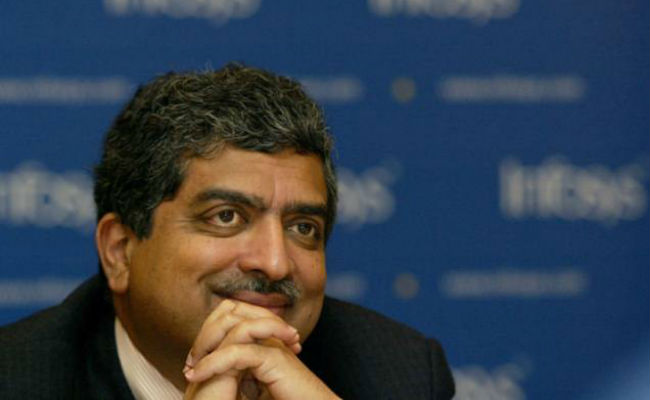 Narayana Murthy Gave Me My First Job, Says Nandan Nilekani
Narayana Murthy Gave Me My First Job, Says Nandan Nilekani
NEW DELHI:MMNN:26 Aug 2017
Bengaluru: Returning to the global software firm Infosys after eight years as its new non-executive chairman, co-founder Nandan Nilekani walked down memory lane on Friday to recall his contribution to the country too. Lauding Infosys co-founder N R Narayana Murthy for his contributions to the company and the country. Mr Nilekani said Mr Murthy was the father of corporate governance in India. Mr Nilekani further said: "Murthy is a great visionary leader. He gave me my first job when I graduated from IIT Bombay in the 1980s in Patni Computers in which he was a software engineer. He has made extraordinary contributions to the country."
"I was a CEO of this company (Infosys) and resigned from that position 10 years ago. In 2009, I was invited by then Prime Minister Manmohan Singh to take a job in the government in the status of a cabinet minister to do one of the world's most sophisticated technology projects - Aadhaar (card) that has given over a billion people an identity and is the fundamental basis for India's transformation," Mr Nilekani said at a news conference here
Mr Nilekani, 62, who was CEO of Infosys from March 2002 till April 2007 and its vice-chairman subsequently, quit the company in 2009 to head the Unique Identification Authority of India as its first Chairman till May 2014
Asserting that he was also the company's founder - of which he was proud, the technocrat entrepreneur said he was back because he believed that he had records of doing things.
"I believe in consensus building and my consultative skills have created factor," he noted.
Reiterating that he represented 100 per cent of the shareholders, Mr Nilekani assured them that he would discharge his responsibility with the highest standards of governance, treating all investors equally.
"We are trying to align complex things. This is not about founders and non-founders. This is about all of us working together to align a united company," he said.
Clarifying that he was not going to run the company based on comments on Twitter and TV channels or on all kinds of reporting by the media, Mr Nilekani said he was back at the request of all stakeholders to unravel a very complex situation and make sure that everybody was aligned and to take Infosys, which is a national icon, to its future.
"Can we have the next Infosys story in October? People are distracted by all kinds of reporting about us in the media. I seek your indulgence. We are going to reduce our interface with media for the next two months," he said.
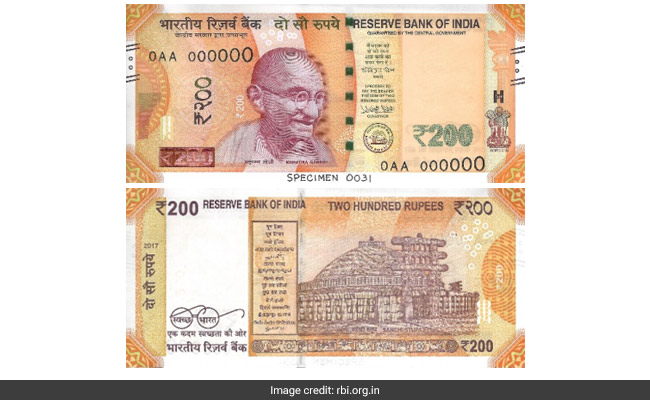 Rs. 200 Note To Be Issued On Friday: Photo, Other Features
Rs. 200 Note To Be Issued On Friday: Photo, Other Features
NEW DELHI:MMNN:25 Aug 2017
The Reserve Bank of India (RBI) will tomorrow issue Rs. 200 denomination banknotes in the Mahatma Gandhi (New) Series, from select RBI offices, and some bank. The notes will bear the signature of RBI governor Urjit Patel. The new Rs. 200 denomination has Motif of Sanchi Stupa on the reverse, depicting the country's cultural heritage. The base colour of the note is Bright Yellow. The note has other designs, geometric patterns aligning with the overall colour scheme, both at the obverse and reverse. The government had on Wednesday notified the new Rs. 200 note.
"Introduction of a new currency denomination and design is done keeping in consideration various factors like ease of transactions for the common man, replacement of soiled banknotes, inflation and the need for combating counterfeiting," the RBI said in statement. The new Rs. 200 note will facilitate exchange, particularly for the common man who deals with denominations at the lower end, the RBI said
Some features of new Rs. 200 denomination banknotes in the Mahatma Gandhi (New) Series are:
The dimension of the new Rs. 200 banknote will be 66 mm x 146 mm
See through register with denominational numeral 200
Latent image with denominational numeral 200
Denominational numeral 200 in Devnagari
Portrait of Mahatma Gandhi at the centre
Colour of the thread changes from green to blue when the note is tilted
Guarantee Clause, Governor's signature with Promise Clause and RBI emblem towards right of Mahatma Gandhi portrait
Denominational numeral with Rupee Symbol, Rs. 200 in colour changing ink (green to blue) on bottom right
Ashoka Pillar emblem on the right
Mahatma Gandhi portrait and electrotype (200) watermarks
Number panel with numerals growing from small to big on the top left side and bottom right side
Reverse (Back)features of Rs. 200 note
Year of printing of the note on the left
Swachh Bharat logo with slogan
Language panel
Motif of Sanchi Stupa
Denominational numeral 200 in Devnagari
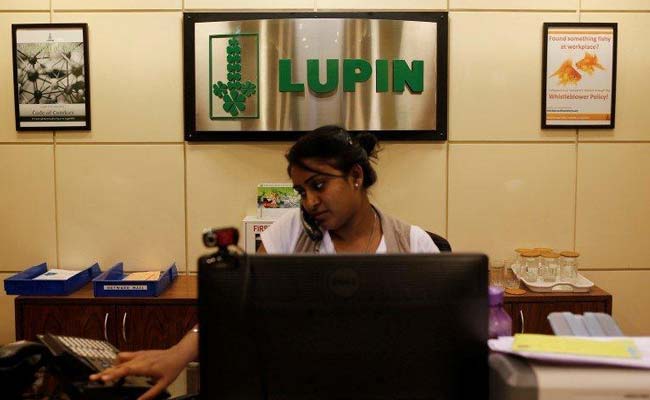 Lupin Recalls Oral Contraceptive From US Market
Lupin Recalls Oral Contraceptive From US Market
NEW DELHI:MMNN:24 Aug 2017
Hyderabad: Pharma major Lupin, through its USA subsidiary Lupin Pharmaceuticals, Inc has initiated voluntary recall of tablets Mibelas 24 Fe from the USA market as they are "out of sequence." According to a notification issued by the US Food and Drug Administration (USFDA), as many as 24,652 tablets are being recalled under 'class-I' classification.
According to the USFDA, class-I recall is a situation in which there is a reasonable probability that the use of or exposure to a violative product will cause serious adverse health consequences or death.
Tablet Mibelas 24 Fe (Norethindrone acetate and Ethinyl estradiol 1 mg/0.02 mg chewable and ferrous Fumarate 75 mg) is an oral contraceptive indicated for the prevention of pregnancy in women, who elect to use oral contraceptives. These products are packaged in blister packs containing 28 tablets.
"Contraceptive Tablets Out of Sequence- First 4 pills of the packet are brown, instead of the last four pills and the expiry/lot was not printed on the package," the FDA notification said as reasons for recall.
The product was manufactured by Lupin Limited, India and distributed by Lupin Pharmaceuticals Inc in the US
 CII-MP CSR CONCLAVE:Businesses Touching Lives: 2% and Beyond
CII-MP CSR CONCLAVE:Businesses Touching Lives: 2% and Beyond
NEW DELHI:MMNN:23 Aug 2017
As India enters the 3 rd year of Corporate Social Responsibility (CSR), the interest has moved
beyond compliance and meeting statutory norms among many corporates, to tackling the
inclusive development agenda holistically by combining the strengths of business and civil
society.
With an aim to expand from spending efficiency to sustainable impact Confederation of
Indian Industry organized CII MP CSR Conclave on the theme Businesses Touching
Lives: 2% and Beyond at Hotel Palash. The Conclave brought together key stakeholders to
discuss and deliberate on these important issues and script a way forward.
Conclave witnessed a gathering of top business leaders, CSR heads and teams, Non-profit
leaders, industry bodies, community organizations,policy Makers, and CSR professionals
exchanging insights, discussing issues of importance and forge impactful partnerships in
social impact.
Mr R K Shrivastava, Principal Advisor, MP State Planning Commission delivered the
special address and said that Around Rs. 275 Cr. is being spent in more than 2000 villages
and 50 cities of Madhya Pradesh but unfortunately all organizations are working in isolation.
Its time to create a platform where all stakeholders can come together and formulate policy
towards synchronizing everybodys efforts. He further informed that State Planning
Commission is planning towards creating awareness at district level towards sustainable
development goals. Amongst other speakers in the Inaugural Session were Mr. Vamsi Jasti, Programme Head,
Reliance Foundation, Mr. Hari Mohan Gupta, Chancellor, Jagran Lake University, Mr.
P Kulkarni, General Manager, JK Tyre & Industries Ltd. who informed the gathering
about their CSR activities in Madhya Pradesh and their further action plans.
Mr. Rajesh Khare, Vice Chairman, CII MP State Council presented the Welcome Remarks
while Mr. Abhishek Gupta, Co-Chairman, CII Bhopal Zonal Council gave the Vote of
Thanks.
Inaugural Session was followed by a round of question & answers where-in dignitaries on
dias addressed the different queries of delegates and replied to their suggestions & advice.
Conclave got well attended by more than seventy participants from different sectors of
industry & society and also by those who come outside the purview of Act and are involved
in CSR activities, totally on voluntary basis.
Amongst other speakers in the Inaugural Session were Mr. Vamsi Jasti, Programme Head,
Reliance Foundation, Mr. Hari Mohan Gupta, Chancellor, Jagran Lake University, Mr.
P Kulkarni, General Manager, JK Tyre & Industries Ltd. who informed the gathering
about their CSR activities in Madhya Pradesh and their further action plans.
Mr. Rajesh Khare, Vice Chairman, CII MP State Council presented the Welcome Remarks
while Mr. Abhishek Gupta, Co-Chairman, CII Bhopal Zonal Council gave the Vote of
Thanks.
Inaugural Session was followed by a round of question & answers where-in dignitaries on
dias addressed the different queries of delegates and replied to their suggestions & advice.
Conclave got well attended by more than seventy participants from different sectors of
industry & society and also by those who come outside the purview of Act and are involved
in CSR activities, totally on voluntary basis.
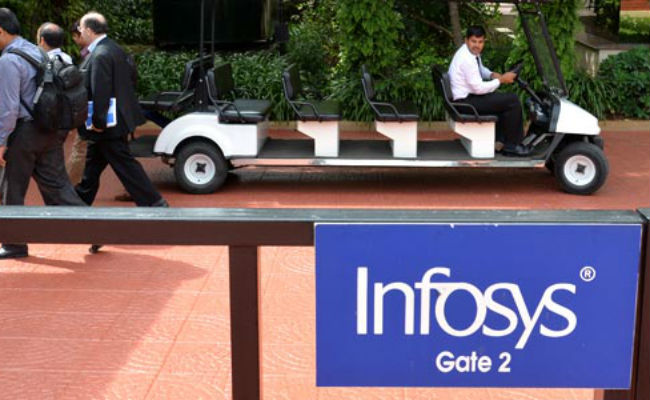 Infosys Shares Under Sebi's Watch After Rs. 34,000 Crore Hit For Investors
Infosys Shares Under Sebi's Watch After Rs. 34,000 Crore Hit For Investors
NEW DELHI:MMNN:22 Aug 2017
Market regulator Sebi is keeping a close watch on Infosys share prices after a surge in volatility, Sebi Chairman Ajay Tyagi said on Tuesday. Infosys shares have corrected sharply - nearly 15 per cent - in two sessions after Vishal Sikka on Friday abruptly resigned as the company's CEO and MD. This sharp fall in Infosys share prices wiped out Rs. 34,000 crore of investors wealth in just two days. With Dr Sikkas exit, hopes of a turnaround at the company are seen to have been pushed back and many brokerages including Nomura have downgraded Infosys shares and slashed their target price on the stock.
Infosys Rs. 13,000-crore share buyback announced on Saturday failed to cheer investors amid uncertainty around the appointment of a new CEO. According to global brokerage Nomura, a new CEOs appointment is likely to take time. Management churn at INFO (Infosys) would make clients cautious and competitors more aggressive, the brokerage added. Nomura has downgraded Infosys to reduce from neutral and slashed its target price on the stock to Rs. 875 from Rs. 1,000 earlier.
Infosys search for a new CEO may not be an easy one as the pressure of being under the scrutiny of the firms founders, who have alleged corporate governance issues, could see many candidates shying away, said experts.
Meanwhile, four US law firms have said they are investigating potential claims on behalf of Infosys investors on whether the IT major and some of its officials and directors have violated federal securities laws. One of the US law firms, Rosen Law Firm, said in a statement that it is investigating "potential securities claims on behalf of Infosys shareholders resulting from allegations that the firm may have issued materially misleading business information to the investing public.
It added that it is preparing a class action lawsuit to recover losses suffered by Infosys investors.
The equity shares of Infosys are listed on BSE and NSE in India, while its American Depositary Receipts (ADRs) are listed on the New York Stock Exchange (NYSE).
Infosys shares showed a mild recovery today and closed 0.41 per cent higher at Rs.877.15 on BSE.
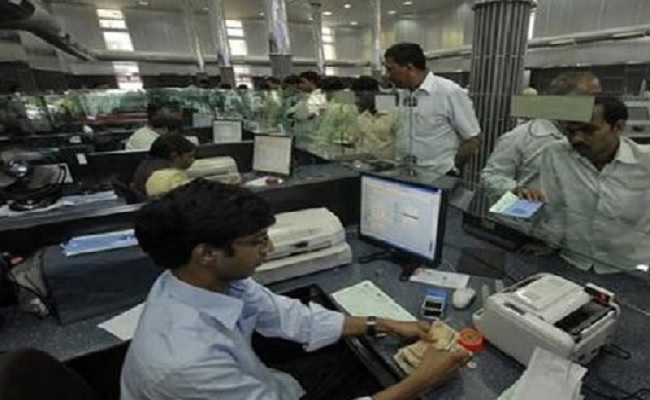 Banking Transactions May Be Hit Tomorrow: 5 Things To Know
Banking Transactions May Be Hit Tomorrow: 5 Things To Know
NEW DELHI:MMNN:21 Aug 2017
The United Forum of Bank Unions (UFBU) is an umbrella body of nine unions, including All India Bank Officers' Confederation (AIBOC), All India Bank Employees Association (AIBEA) and National Organisation of Bank Workers (NOBW)
Around 10 lakh employees of public sector banks may go on a nation-wide strike on Tuesday, August 22. Employee unions under UFBU or United Forum of Bank Unions, which claims membership of nearly 10 lakh across banks, have called for the one-day strike against reforms proposed by the government. "As the conciliation meeting before the Chief Labour Commissioner failed, unions are left with no other option but to go on strike. There was no assurance from the government and the management of banks, news agency Press Trust of India reported AIBOC General Secretary D T Franco as saying. The United Forum of Bank Unions (UFBU) is an umbrella body of nine unions, including All India Bank Officers' Confederation (AIBOC), All India Bank Employees Association (AIBEA) and National Organisation of Bank Workers (NOBW).
Here are five things to know about the proposed one-day strike tomorrow:
While most public sector banks have informed their customers that functioning of branches and offices will be impacted if the strike takes off, operations at private lenders - like ICICI Bank, HDFC Bank, Axis Bank and Kotak Mahindra Bank - are expected to be normal except delay in cheque clearances.
As many as 21 public sector banks control 75 per cent of the total business.
All attempts to hammer out solutions to the demands raised by the unions bore no fruit and hence, UFBU decided to proceed with the proposed strike on August 22, said Mr Franco of the UFBU.
The unions under the UFBU announced the strike after talks with the government over a proposed consolidation move across the sector were inconclusive, among other demands. They opposed the government's proposed consolidation move besides raising a host of other demands. West Bengal convenor of UFBU Siddhartha Khan had earlier said that the government is ushering in privatisation and consolidation in the Indian banking sector in the garb of reforms.
Other demands include a no write-off policy for non-performing assets (NPAs) or bad loans of corporate loans, declaring wilful default of loans as criminal offence and implementation of recommendations of Parliamentary Committee on recovery of bad loans, the agency cited AIBEA General Secretary C H Venkatchalam as saying. The unions have also requested the government for cost reimbursement of demonetisation to banks.
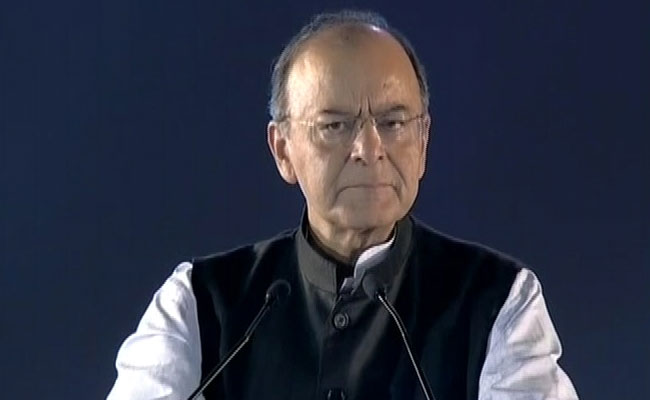 NPA Resolution Not To Liquidate Companies, But To Help Save Them: Arun Jaitley
NPA Resolution Not To Liquidate Companies, But To Help Save Them: Arun Jaitley
NEW DELHI:MMNN:19 Aug 2017
Mumbai: Assuring balance-sheet stressed firms that key objective of NPA resolution is not liquidation of their businesses but to save them, Finance Minister Arun Jaitley today said, the new insolvency law has significantly reversed defaulting debtor-creditor relationship.
"The ultimate objective really is not liquidation of assets, (but) to save these businesses, get either the existing promoters with or without new partners or new entrepreneurs to come in and make sure that these valuable assets are preserved," Mr Jaitley said.
He was addressing an insolvency summit organised by industry lobby Confederation of Indian Industry (CII) here.
Explaining the rationale for the new insolvency and bankruptcy code (IBC), he said, this was necessitated by the failure of debt recovery tribunals to effectively perform their duty after the initial success.
When enacted, the Sarfaesi (Securitisation and Reconstruction of Financial Assets and Enforcement of Security Interest) Act had succeeded in getting down NPAs drastically in the initial two-three years, Mr Jaitley said.
But then the debt recovery tribunals began to be less effective as envisaged, the minister noted, which led to the new law.
But the new regime under the IBC has significantly reversed the defaulter-debtor relationship, he noted, adding, "We lived in a system for many years which protected debtors and allowed assets to rust away."
"The old regime by which the creditor would get tired chasing the debtor and end up recovering nothing, is now over. If a debtor has to survive, he will have to service his debt, or he will have to make way for somebody else. I think this is the only correct way by which businesses would now be done and this message has to go loud and clear," Mr Jaitley said.
Calling for speedy and time-bound resolution of the bad loans issue which has become a major regulatory overhang, the FM expressed the hope that the mandated timelines will be adhered to so that implementation is effective.
Gross NPAs have crossed 9.6 per cent as of March 2017, while the stressed loans ratio is over 12 per cent.
Following this, the RBI has named 12 of the largest defaulters in June, which together owe more than Rs. 2.5 trillion to banks.
Almost all of them are under NCLT (National Company Law Tribunal) now, and may face liquidation if the promoters fail to come up with a sustainable resolution and capital infusion.
These 12 companies are from the list of 500 largest defaulters that the RBI has drawn up.
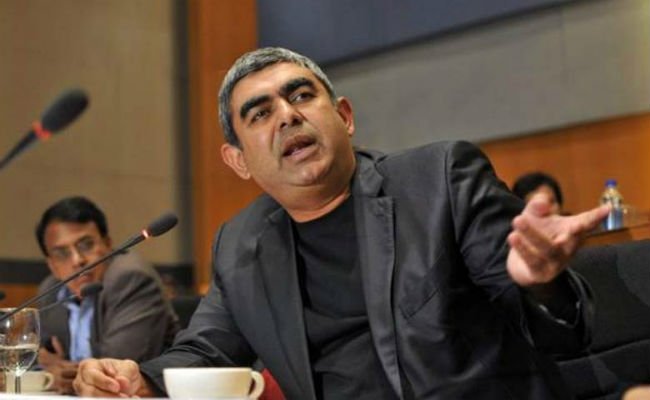 Vishal Sikka Resigns As Infosys CEO And MD Citing Personal Attacks, Shares Tank
Vishal Sikka Resigns As Infosys CEO And MD Citing Personal Attacks, Shares Tank
NEW DELHI:MMNN:18 Aug 2017
Vishal Sikka has resigned as managing director and CEO of Infosys and the companys board has accepted his resignation with immediate effect, the IT major said on Friday morning. The sudden move came amid growing acrimony between the companys board and its founders led by NR Narayana Murthy. Infosys said chief operating officer UB Pravin Rao will be interim managing director and CEO. Infosys shares plunged as much as 13 per cent today after the announcement.
Dr Sikka, 50, has cited increasingly personal attacks on him as one of the reasons for his sudden decision to resign, saying they were amplified by people who should have supported him. He said the attacks had hit morale at the company, which has been trying to keep pace with rapid changes in the industry.
For days, indeed weeks, this decision has weighed on me. I have wrestled the pros and cons, the issues and the counterbalancing arguments. But now, after much thought, and considering the environment of the last few quarters, I am clear in my decision. It is clear to me that despite our successes over the last three years, and the powerful seeds of innovation that we have sown, I cannot carry out my job as CEO and continue to create value, while also constantly defending against unrelenting, baseless/malicious and increasingly personal attacks,
Infosys founders, including NR Narayana Murthy, have in recent months criticised the companys leadership over executive pay packages and for what they called lapses in corporate governance, which Dr Sikka has stoutly denied. In an email to some of his advisers last week, Mr Murthy had reportedly said that he had been told by at least three independent directors of the company that Vishal Sikka was less CEO material and more chief technology officer (CTO) material. He also criticised the Infosys board for not upholding governance standards and for not creating checks and balances required in any well-run company, the newspaper Mint had reported.
The newspaper also quoted Mr Murthy as saying in the email, "I have nothing against Dr Vishal Sikka. I enjoy spending time with him. I have never commented about his strategy or its execution.
Earlier this year Dr Sikka had described Mr Murthy as an incredible man and said they enjoy a heartfelt, warm relationship. He told NDTV last month when asked about differences with the founders, I think there is a matter with the Board and I think you really have to bring that up with board. Our job and management is to run this great company, this iconic company...The founders have built this company and I am a custodian of this. My primary job is to stay focused on my job.
In his notice of resignation to the board, Dr Sikka reiterated his belief in the great potential of Infosys, but cited among his reasons for leaving a continuous stream of distractions and disruptions over the recent months and quarters, increasingly personal and negative as of late, as preventing managements ability to accelerate the companys transformation, Infosys said in its statement today, adding that the board understands and acknowledges Dr Sikka's reasons for resignation, and regrets his decision. In particular, the board is profoundly distressed by the unfounded personal attacks on the members of our management team that were made in the anonymous letters and have surfaced in recent months.
Dr Sikka will remain with Infosys as executive vice-chairman, the company said and will hold office until the new permanent chief executive officer and managing director takes charge, which should be no later than March 31, 2018. He will receive an annual salary of $1 during his tenure as executive vice chairman.
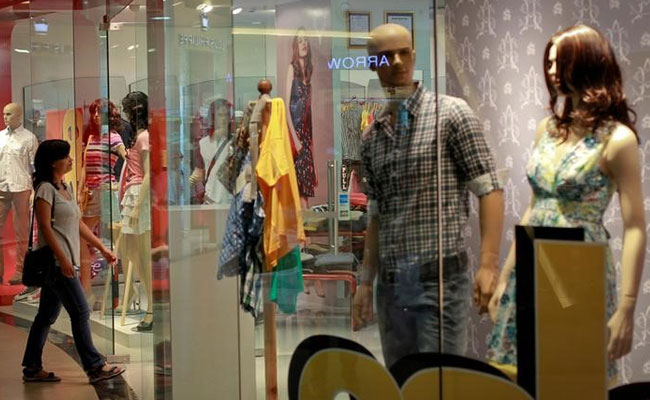 India Ahead Of China On Retail Development Index In First Half Of 2017
India Ahead Of China On Retail Development Index In First Half Of 2017
NEW DELHI:MMNN:17 Aug 2017
New Delhi: India has surpassed China in the global Retail Development Index in 2017, indicating growing prominence of the country as a preferred retail destination for global brands, says a report by real estate consulting firm CBRE South Asia.
Seven new global brands entered the country during the first half of 2017 and investments into the segment touched $200 million, said the India Retail Market View Report.
Besides, it added, international brands already present in the country also expanded their presence.
Several hypermarkets, including Big Bazaar which opened new stores in Mumbai, Bengaluru and Chennai, expanded their presence, it said, adding that clothing retailers such as Max and Pantaloons were also active during the review period.
Our ranking on the 2017 Global Retail Index for developing countries, as well as continued investment by private equity players, is a demonstration of the sustained preference of international brands to set up, or expand their operations in India, CBRE Chairman, India and South East Asia Anshuman Magazine said.
The brands which opened their first store in India during H1 include Kate Spade, Scotch & Soda, Pandora and Selected Homme while those who expanded operations were H&M, Jack & Jones, US Polo, Taco Bell and Forever 21, among others.
In terms of rental for the retail space, areas such as Connaught Place, Khan Market, and South Extension in the Capital and Park Street and Elgin Road in Kolkata witnessed appreciation.
While rentals in most other high streets remained stable, some high streets such as Linking Road in Mumbai and MG Road in Pune saw a marginal dip in rentals.
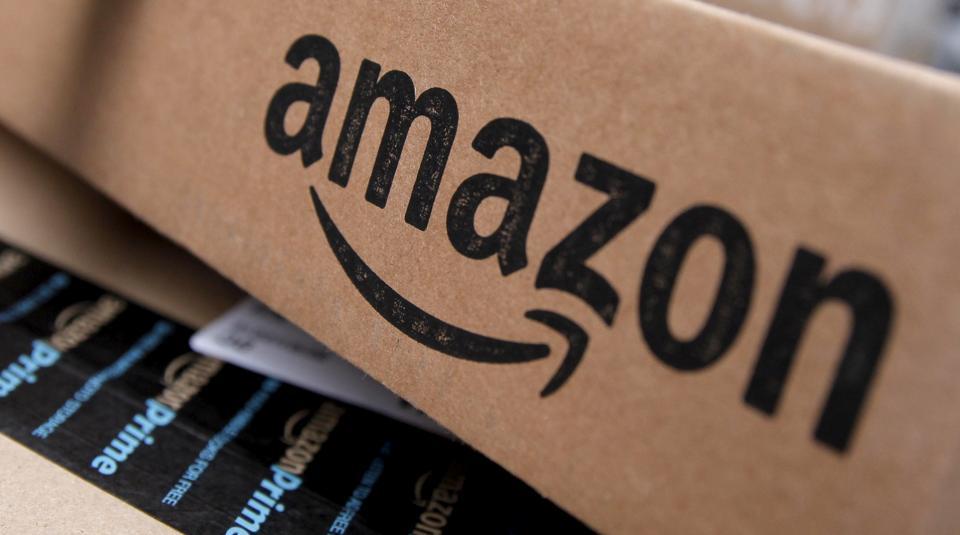 Amazon issues refund to customers who bought phoney eclipse glasses
Amazon issues refund to customers who bought phoney eclipse glasses
NEW DELHI:MMNN:14 Aug 2017
E-commerce giant Amazon is offering refunds to customers who purchased eclipse glasses from the platform and warned them not to use the spectacles to view the total solar eclipse that will occur on August 21.
The company began notifying the buyers about the “unverified” glasses on Saturday. Those who did not receive a recall email are safe to use the ones they purchased, CNET reported on Sunday.
“We recommend that you do not use this product to view the sun or the eclipse,” the email issuing the warning read.
Amazon said it issued the recall over concerns with the quality of the glasses.
“Safety is among our highest priorities. Out of an abundance of caution, we have proactively reached out to customers and provided refunds for eclipse glasses that may not comply with industry standards.
“We want customers to buy with confidence anytime they make a purchase on Amazon.com and eclipse glasses sold on Amazon.com are required to comply with the relevant ISO standard,” the company added.
The solar eclipse will cross the US from Oregon to South Carolina over the course of an hour-and-a-half and 14 US states will experience night-like darkness for approximately two minutes in the middle of the day.
In India, the Delhi-based Science Popularisation Association of Communicators and Educators will live-stream the upcoming celestial event from the US.
The live streaming will be done from Idaho using a 50 mm f/5 finderscope, a small auxiliary telescope mounted on an Astrotrac tracker — the main astronomical telescope — to follow the Sun.
The device will have a webcam and a solar filter fitted to it, which will enable streaming directly on the official YouTube channel of Space India and will also be available on the organisation’s website.
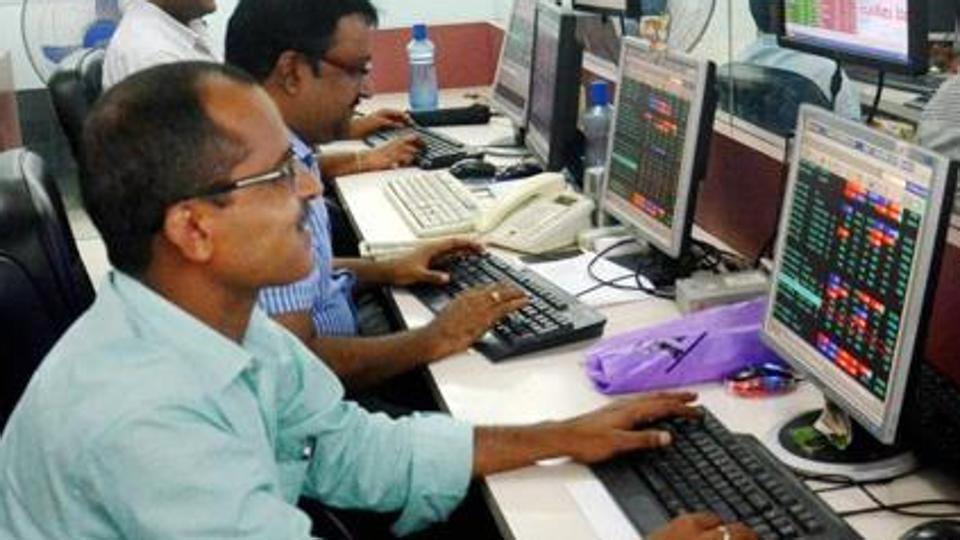 Get ready for first filing deadline, GST chief Navin Kumar says
Get ready for first filing deadline, GST chief Navin Kumar says
NEW DELHI:MMNN:9 Aug 2017
IT and pharma shares were the biggest hit in today's trade as rupee rose to a two and a half month high of 64.07 against the dollar
Indian equity indices ended flat on Thursday, as last hour selling in IT shares and market heavy-weight Reliance Industries, offset gains made by HDFC, HDFC Bank and Yes Bank. The Sensex closed 0.84 points higher at 32,383.30 and the Nifty settled 0.1 points lower at 10,020.55. Selling pressure also emerged amid expiry of the July series derivative contracts, analysts said. Reliance Industries closed 1.72 per cent lower at Rs. 1,594.80. Gains in the market were led by HDFC, Yes Bank, HDFC Bank, which rose 5.8 per cent, 4.31 per cent and 2.41 per cent respectively. These companies reported their earnings earlier this week. The banking sub-index of NSE, Nifty Bank closed 1.02 per cent higher.
IT and pharma shares were the worst hit in today's trade as rupee rose to a two and a half month high of 64.07 against the dollar. IT and pharma companies get a bigger pie of their revenues in the US currency. The Nifty IT and Nifty Pharma sub-indices of NSE, closed 1.58 per cent and 1.56 per cent lower respectively. Dr Reddy's Labs was the biggest loser in Nifty, down 3.21 per cent, followed by Tech Mahindra, Tata Motors, TCS and Indiabulls Housing Finance, which fell between 2.5-3.1 per cent.
Mid-cap and small -cap shares also witnessed profit booking today. The BSE Midcap and BSE Small cap indices closed 0.54 per cent and 0.51 per cent lower respectively. Market breadth was negative as 881 closed higher and 1,845 ended with losses.
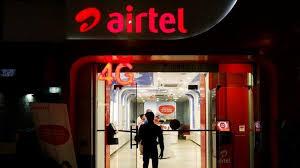 Airtel plans to sell 3.7% stake in Bharti Infratel for Rs 2500 crore
Airtel plans to sell 3.7% stake in Bharti Infratel for Rs 2500 crore
NEW DELHI:MMNN:8 Aug 2017
Bharti Airtel is learnt to be in process to offload 3.7 stake in Bharti Infratel for about Rs 2,500 crore, sources aware of the development said.
Bharti Airtel in March had transferred 11.32 stake in its mobile tower arm Bharti Infratel to its wholly- owned subsidiary Nettle Infrastructure at a value of around Rs 6,806 crore.
Airtel is in process of offloading 3.7 stake in Bharti Infratel held through Nettle Infrastructure. Expected amount is Rs 2,550 crore. It will help company lower its debt, the source said.
No immediate comments were received from Bharti Airtel.
Bharti Airtel’s consolidated net debt at the end of June 2017 was Rs 87,840 crore.
Bharti Airtel and Nettle jointly hold 61.65% in Bharti Infratel.
In March, Bharti Airtel sold 10.3% stake in its mobile tower arm to a consortium of KKR and Canada Pension Plan Investment Board for Rs 6,193.9 crore.
Shares of Bharti Infratel closed at Rs 397.9 a unit, down by 2.06% over previous close at BSE.
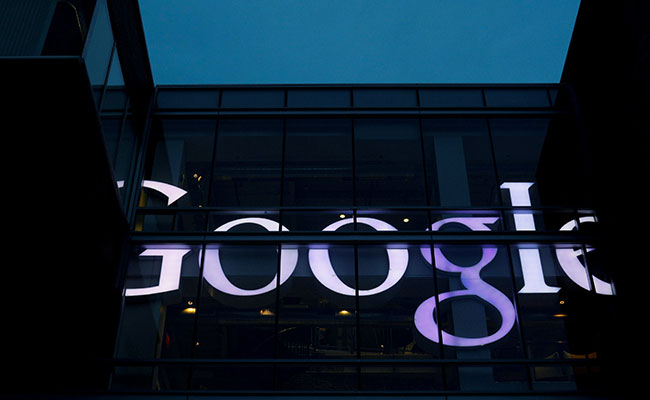 Google Tests Publishing Tech Similar To Snapchat: Report
Google Tests Publishing Tech Similar To Snapchat: Report
NEW DELHI:MMNN:5 Aug 2017
Snapchats Discover tab is distinct in the way it integrates video clips with text and photos, allowing users to skip to a new story or advertisement with the touch of a finger.
Alphabet Inc's Google is developing technology that media companies could use to create stories similar to those found on Snapchat's "Discover" platform, a person familiar with the plans said on Friday.
Google's project, dubbed Stamp, is in the early stages of testing with publishers, said the person, who spoke on condition of anonymity.
Tech firms including Google, Snapchat's owner Snap and Facebook Inc are racing to develop publishing tools for media companies, hoping to fill their own apps with news, entertainment, sports and other content.
The challenge for such tools is making them faster and easier to use than a web browser, while creating an interesting experience for users.
Snapchats Discover tab is distinct in the way it integrates video clips with text and photos, allowing users to skip to a new story or advertisement with the touch of a finger.
The Wall Street Journal first reported the development of Google Stamp earlier on Friday, citing people familiar with the matter.
Google has been in discussions with several publishers, including Vox Media, Time Warner Incs CNN, Mic, the Washington Post and Time Inc to participate in the project, the newspaper said.
Google said in a statement: We dont have anything to announce at the moment but look forward to sharing more soon.
The name Stamp echoes an existing Google product, Accelerated Mobile Pages, or AMP, that allows for faster loading of online news stories. Facebook has a competing product, Instant Articles.
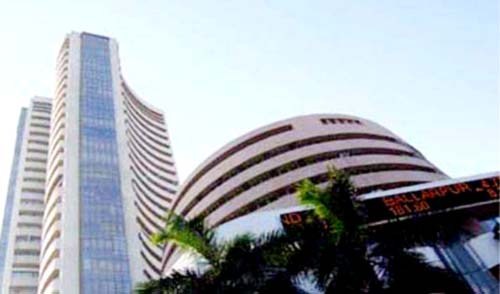 Sensex Ends Flat, Nifty Holds 10,000 Level; IT, Pharma Shares Fall
Sensex Ends Flat, Nifty Holds 10,000 Level; IT, Pharma Shares Fall
NEW DELHI:MMNN:27 July 2017
IT and pharma shares were the biggest hit in today's trade as rupee rose to a two and a half month high of 64.07 against the dollar
Indian equity indices ended flat on Thursday, as last hour selling in IT shares and market heavy-weight Reliance Industries, offset gains made by HDFC, HDFC Bank and Yes Bank. The Sensex closed 0.84 points higher at 32,383.30 and the Nifty settled 0.1 points lower at 10,020.55. Selling pressure also emerged amid expiry of the July series derivative contracts, analysts said. Reliance Industries closed 1.72 per cent lower at Rs. 1,594.80. Gains in the market were led by HDFC, Yes Bank, HDFC Bank, which rose 5.8 per cent, 4.31 per cent and 2.41 per cent respectively. These companies reported their earnings earlier this week. The banking sub-index of NSE, Nifty Bank closed 1.02 per cent higher.
IT and pharma shares were the worst hit in today's trade as rupee rose to a two and a half month high of 64.07 against the dollar. IT and pharma companies get a bigger pie of their revenues in the US currency. The Nifty IT and Nifty Pharma sub-indices of NSE, closed 1.58 per cent and 1.56 per cent lower respectively. Dr Reddy's Labs was the biggest loser in Nifty, down 3.21 per cent, followed by Tech Mahindra, Tata Motors, TCS and Indiabulls Housing Finance, which fell between 2.5-3.1 per cent.
Mid-cap and small -cap shares also witnessed profit booking today. The BSE Midcap and BSE Small cap indices closed 0.54 per cent and 0.51 per cent lower respectively. Market breadth was negative as 881 closed higher and 1,845 ended with losses.
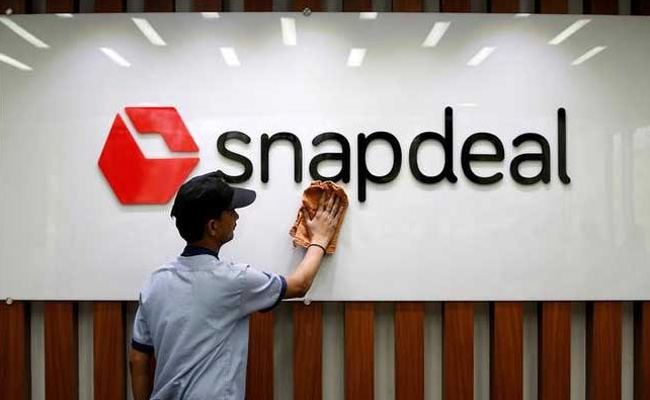 Snapdeal Board Approves Flipkart's $900-$950 Million Takeover Offer: Report
Snapdeal Board Approves Flipkart's $900-$950 Million Takeover Offer: Report
NEW DELHI:MMNN:26 July 2017
Mumbai: Online marketplace Snapdeal has accepted Flipkarts revised takeover offer of up to $950 million, two sources said on Wednesday, providing heft to its bigger rival in a high-stakes battle with Amazon.com Inc.
The board of Jasper Infotech, which runs Snapdeal, approved Flipkart's bid of $900 million-$950 million last week, the sources who were familiar with the matter said. A deal is now pending the approval of Snapdeal shareholders, they said.
Snapdeal declined to comment, while Flipkart was not immediately available for comment.
India's fledgling e-commerce sector is in the midst of a fierce war for supremacy between U.S. online retail giant Amazon and leading homegrown player Flipkart at a time more and more Indians shop on the web, helped by a spurt in availability of cheap phones and data plans.
Japan's solar-to-tech conglomerate SoftBank, Snapdeal's biggest investor, is keen to consummate the deal and take an equity stake in Flipkart to profit from India's booming online retail market.
A 2016 report from accounting firm EY noted that e-commerce has grown at a compound annual growth rate of over 50 percent in the last five years in India and the pace of growth is expected to continue, with e-commerce sales topping $35 billion by 2020.
Bengaluru-headquarterd Flipkart had revised its initial offer for Snapdeal to up to $950 million, Reuters reported last week.
The board also considered a $700 million share-swap offer by listed e-commerce firm Infibeam
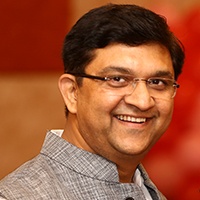 Surevin IPO opens on July 28
Surevin IPO opens on July 28
NEW DELHI:MMNN:25 July 2017
Leading BPO services provider surevin is a Bhopal based IT company ,it is ready to go public through SME platform .Talking exclusively to Metromirror,Abhishek Gupta ,Promoter-MD Surevin said"We would utilise the funds for
capacity building and technology upgradation .Presently our revenue is 50% through government .We also handle CM Helpline ." He said that the future of IT companies is bright and skilled IT Professionals would always find the right job.
IPO OFFER
*Face value of the share Rs.10/
*Price band of shares Rs.38-40/
*9,12,000 equity shares will be floated,8,64,000 shares are being offered to the public.
COMPANY STRENGTHS
*Secured resources of revenue for the next 7 years.
*25.97 is the cumulative growth rate in revenue of the company over the past 4years.
*Aspiring to enter into newage technologies .
More details on www.surevin.com
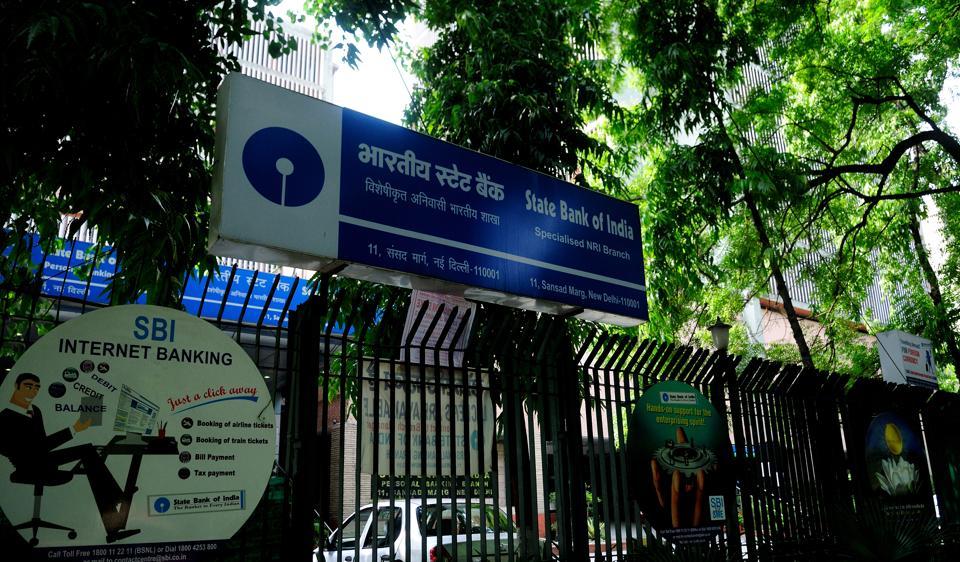 Consumer panel imposes Rs 1 lakh fine on SBI for frivolous appeal
Consumer panel imposes Rs 1 lakh fine on SBI for frivolous appeal
NEW DELHI:MMNN:24 July 2017
The Delhi state consumer panel has directed the State Bank of India to refund Rs 1.29 lakh to a customer for not taking effective steps to block her stolen ATM card in 2006
The state commission also imposed a cost of Rs one lakh on the bank for filing a frivolous appeal before it.
The commission, while dismissing the appeal filed by the SBI against the district forum order asking it to return the money, said that the bank failed to take effective steps for blocking of the stolen ATM card which was a clear case of deficiency in service.
It was the bank who failed to take effective steps for blocking of the ATM card. It is thus a clear case of deficiency in service. The incident took place in March 2006 and the complainant has not received a single penny in a span of 11 years, the judicial member of the state commission N P Kaushik said.
It said that instead of making the payment to the complainant, the bank rather filed a false and frivolous appeal.
The same is dismissed with costs of Rs 1,00,000, the commission said.
According to the complaint filed by Okhla resident Rahimunnisa Shahana, on March 13, 2006 her bag containing a new ATM card and an envelop having the pin number were stolen before she could even use it. The bag also contained Rs 5,000 among other things.
She went to her SBI branch in Nizamuddin on the same day and met an officer and the branch manager and made a request to block the card, it said.
She alleged that when she went to the branch after a fortnight and enquired about her credit balance, she learnt that the entire amount Rs 1,29,060 had been withdrawn through ATM during March 13 to March 21.
The plea claims that she made a complaint in writing on March 30, 2006 and filed a complaint with the police as well.
The bank had claimed in the district forum that the complainant herself was negligent in carrying the ATM card and the envelope containing the PIN code.
It also denied her visit to the bank on March 13, and said that she never met any of its officers on the day the theft took place.
However, the district forum had rejected the claims of the bank and asked the bank to return the money.
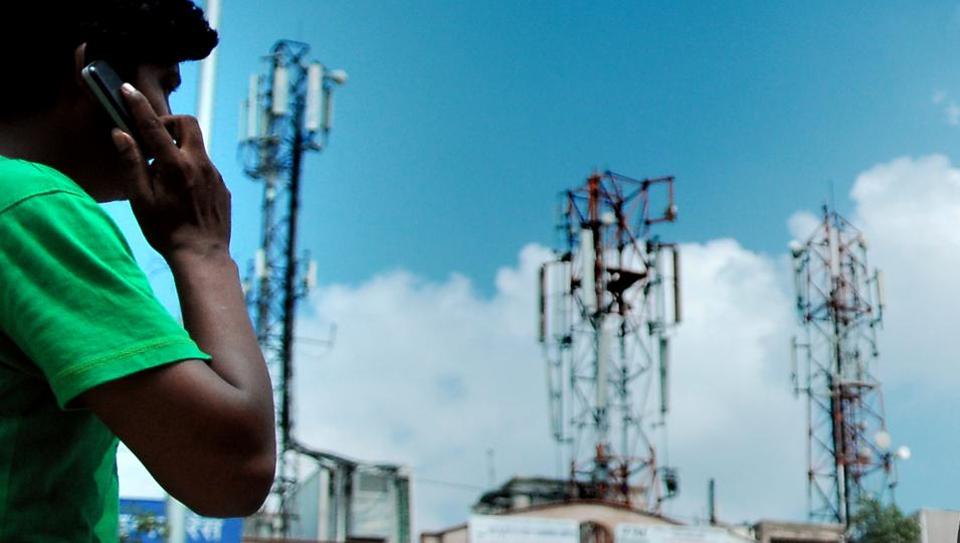 Six telecom companies under-reported revenue by over Rs 61,000 crore: CAG
Six telecom companies under-reported revenue by over Rs 61,000 crore: CAG
NEW DELHI:MMNN:22 July 2017
The CAG audited six telecom companies — Bharti Airtel, Vodafone, Aircel, Idea, Reliance Communication and Sistema Shyam Teleservices Ltd — and said they under-reported their adjusted gross revenue (AGR) by Rs 61,064 crore during 2010-2015.
Private telecom operators have understated revenues worth over Rs 61,000 crore from 2010 to 2015, leading to a shortage of payment to exchequer, a report by the Comptroller and Auditor General revealed on Friday.
The CAG audited six telecom companies — Bharti Airtel, Vodafone, Aircel, Idea, Reliance Communication and Sistema Shyam Teleservices Ltd.
The report tabled in Parliament said the companies under-reported their adjusted gross revenue (AGR) by Rs 61,064 crore during 2010-2015. This reduced the government’s earnings in the form of spectrum charges and licensing by Rs 7,697.6 crore.
The report said the understatement was due to promotional schemes such as free talk time and discounts paid to postpaid subscribers on roaming services besides accounting adjustments for commission or discount paid to distributors.
According to the report, the netting of revenue from infrastructure sharing and non-inclusion of forex gains, interest income and sale of investment also led to understating of revenue. An amount of Rs 4,531 crore as interest arising out of short term payments is also due.
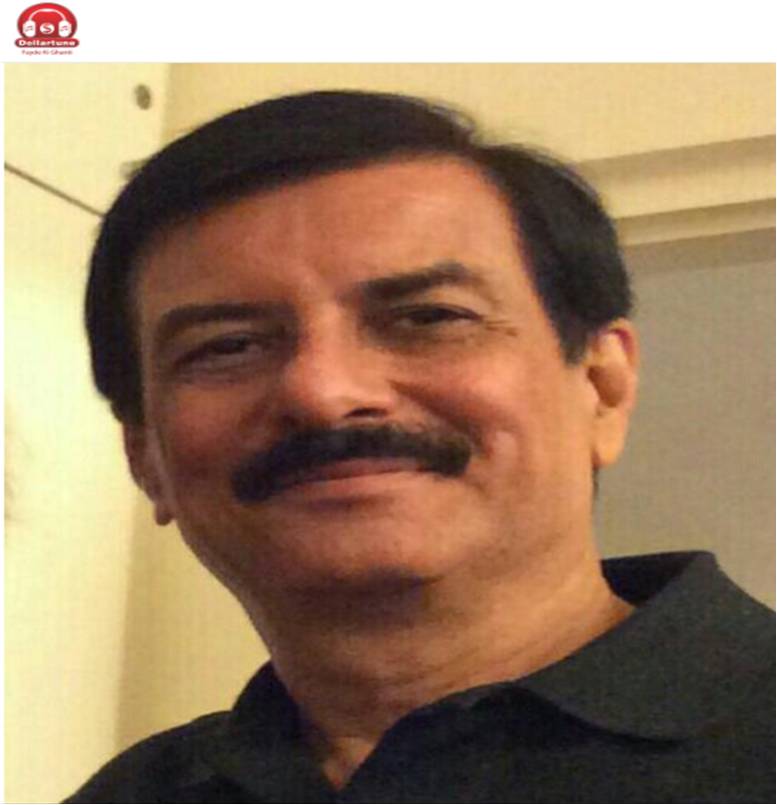 Bharat Kapadia joins BrandAd Emedias Dollartune Board
Bharat Kapadia joins BrandAd Emedias Dollartune Board
NEW DELHI:MMNN:21 July 2017
Bharat Kapadia,
a seasoned media professional, joins the board of BrandAd Emedia Solutions Pvt Ltd, promoters of Dollartune. Dollartune is an optin Android based application offering brand communication delivery on pay per delivery model. The application was launched in November 2016, and crossed 125,000 downloads mark, and counting, well ahead of anticipated milestone of the first year of operation. Dollartune has now targeted to grow to 200,000 downloads by Diwali.
Bharat Kapadia
brings in his rich experience of holding senior level positions with various media houses like Lokmat, Jagran 18, Divya Bhaskar group, and Chitralekha. He is also the founder of ideas@bharatkapadia.com. He has also been Chairman of Advertising Standards Council (ASCI), Chairman of Media Research Users Council (MRUC), and Chairman, Mumbai Regional Committee of Indian Newspaper Society (INS), an Industry body of the Publishers.
Rohit Kanabar
Promoter and Director Dollartune says that it was a seminar delivered by Bharatbhai on innovations some time back that seeded the thought of Dollartune. Having worked on the concept and perfecting it meant that advertisers have a medium where they can optimaly utilise their advertising budget. Bharatbhai joining the board is the most natural process and we are delighted to have him on the board.
Raja Gupta CEO, BrandAd Emedia Solutions said,
Having emerged as an innovative platform for advertisers to engage with customers, our objective facilitates the targeting of a more precise audience based on accurate demographics. We are indeed fortunate and would seek the expertise of Bharat Kapadia in propelling our growth.
With smartphones increasingly dominating the market, the app combines the best of ATL marketing activities, revolutionizing communication with users. With brands facing the challenge of ad-avoidance, this is an innovative and effective marketing platform for advertisers through a mobile application that is non intrusive in nature and offers abundant time to its users to engage with brands innovatively.
The Tagline Faayde ki Ghanti is to provide the user a reward value every time the phone rings. The user allows their phones to be used as a broadcast medium for the reward the brand communication takes place every time the phone rings. With a partnership with Indias largest e-wallet service, PayTM, Dollartune makes gratification for the users extremely convenient.
For Advertisers, this is an innovative platform as the Cost Per Engagement module which makes Dollartune a cost effective medium to engage with customers and target a more precise audience based on accurate Demographics. The total daily ad deliveries are in excess of 350,000 per day on the ad-wall of Dollartune, along with more than 250,000 ringtones delivered.
Dollartune is a venture by BrandAd Emedia Solutions Private Limited, promoted by Rohit Kanabar, Bharat Kapadia and Raja Gupta, experienced media professionals.
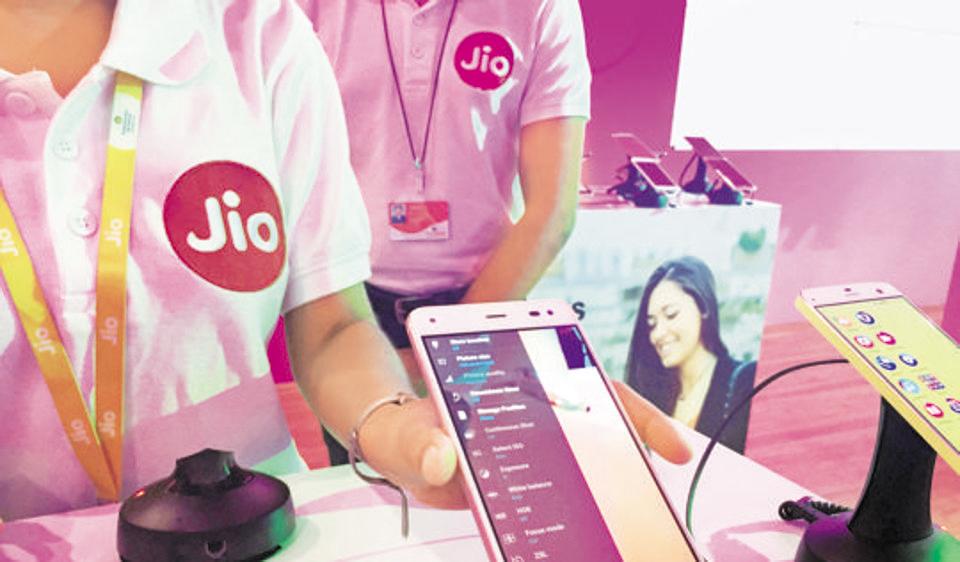 RIL plans to sell 200 million 4G feature phones in 2 years
RIL plans to sell 200 million 4G feature phones in 2 years
NEW DELHI:MMNN:20 July 2017
The company is planning to launch it in the second half of August. However, it could not be ascertained if the handsets will be sold by Reliance Retail or Jio.
With an eye on 2G mobile users, Reliance Industries is working on a strategy to sell 200 million 4G feature phones -- likely to be priced Rs 1,000- 1,500 -- in two years, industry sources told PTI.
The company is planning to launch it in the second half of August. However, it could not be ascertained if the handsets will be sold by Reliance Retail or Jio.
“Reliance has not yet finalised actual unit price of the feature phones, but it is likely to be in the range of Rs 1,000-1,500 a unit. It will be smart feature phone with pre- loaded apps of Reliance Jio like Jio TV Jio Money etc, one of the sources who did not wish to be named said.
He said the phone will not have touchscreen facility like smartphones, but will have rest of facilities like wi-fi connectivity and browsing and come with a cable that can connect the handset with television sets to watch Jio TV content.
“The company is eyeing 2G users who cannot afford expensive smartphones and are paying high call rates. Jios voice calls will be free which will encourage them to buy these handsets the source said.
Reliance Jio has started the process of importing handsets and is in discussion with Foxconn and Intex to make them in India.
“Around 10 million units are being planned for initial sales and the company has plans to increase inventory to 100 million in the first year and another 100 million next year. Discussions have started with Foxconn and Intex to make these phones in India, the source said.
Mobile industry body Indian Cellular Association in a submission to the government has said the total size of Indian mobile phone market was estimated to be around 280 million units in 2016 and is expected to grow to 320 million by 2018.
A source privy to discussions said Intex had approached RIL for bundling Jio service for a state government tender.
Intex will bid for a state government tender which has huge requirement of low-cost mobile phone, but it wants bidder to come with a service provider. The economy of scale is enough to bring down the cost of phone. The discussion with RIL started for this tender and is now moving in direction for low-cost 4G feature phones, the source said.
He said Jio will use Qualcomm chipsets in 4G feature phones.
When contacted, Reliance Jio declined to comment. Intex said: ...we are exploring various business opportunities, including those with Reliance Jio, and would keep you updated about the details as they materialise. We also keep participating in various state governments tenders and are always keen to work with them.
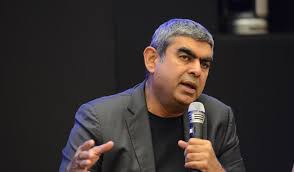 Infosys results look good only when compared to TCS
Infosys results look good only when compared to TCS
NEW DELHI:MMNN:17 July 2017
Infosys’s Q1 results are better than TCS’s, and to that extent come as a relief, but a 2.7% revenue growth is hardly a sign of recovery or return to double-digit growth
After Tata Consultancy Services Ltd’s (TCS) weak performance in the June quarter, Infosys Ltd’s results came as a relief for investors. Its revenues grew 2.7% in constant currency terms, in line with analysts’ estimates, while profit margins were far ahead of the Street’s expectations. TCS disappointed on both revenues and margins.
Infosys shares rose 3% in early trading, even while TCS fell by nearly as much. While the latter’s shares, understandably, continue to be under pressure, Infosys’s shares have given up most of their gains. After all, while the company’s reported profit may be more than what analysts had estimated, nothing material has changed on the ground.
At the end of the day, growth in the core business remains sluggish. As the chart alongside shows, year-on-year volume growth has fallen below the levels it stood at when Vishal Sikka had taken over as chief executive officer. According to an analyst at a multinational brokerage, it’s likely the half decent June quarter numbers were boosted by the GST (goods and services tax) project being handled by the company. Growth in core markets, he says, was far more subdued. For instance, growth in North America stood at just 1.3% sequentially, far lower than the company average.
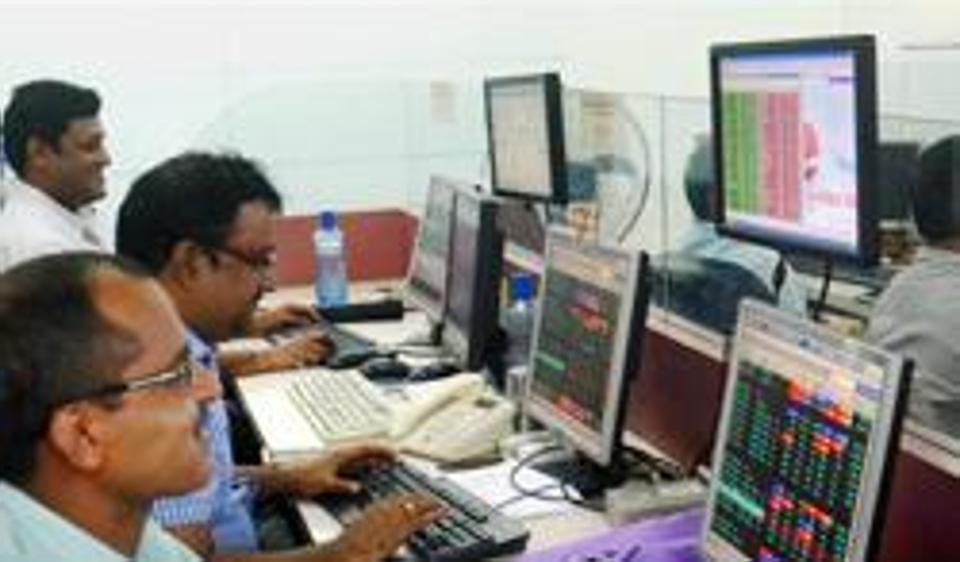 Sensex breaches 32k-mark, Nifty at a fresh high too
Sensex breaches 32k-mark, Nifty at a fresh high too
NEW DELHI:MMNN:13 July 2017
Breaking boundaries, the benchmark Sensex breached the 32,000 mark for the first time and the NSE Nifty hit a new peak of 9,879 today on strong buzz that a policy rate cut may be on the anvil after inflation touched a record low.
A positive lead from Asia after US Federal Reserve chief indicated a gradual approach to raising US interest rates made investors here go in for fresh bets.
The 30-share index zoomed 215.60 points, or 0.67 %, to hit a new peak of 32,020.42, surpassing previous intra-day record of 31,885.11 reached on July 11.
The gauge had rallied 444.18 points in the previous three sessions.
The stock of the largest IT exporter TCS was trading 0.65 % higher ahead of its earnings today.
All the sectoral indices, led by FMCG, capital goods, power, metal, banking and auto, were trading in the positive zone, with gains of up to 1.06 %.
Shattering records, the 50-share NSE Nifty too rose 62.40 points, or 0.63 %, to hit a new life high of 9,878.50. It had touched an intra-day record high of 9,830.05 on July 11.
There are renewed hopes of a rate cut by the Reserve Bank at its policy meet next month after retail inflation hit a historically low level of 1.54 % in June and industrial output growth slumped to 1.7 % in May.
Prominent gainers in the Sensex kitty were ICICI Bank, ITC Ltd, L&T and Sun Pharma, gaining by up to 1.69 %.
Hong Kongs Hang Seng rose 1.15 % while Japans Nikkei was up 0.15 % in early session. Shanghai Composite was up 0.33 %.
The US Dow Jones Industrial Average rallied 0.57 % to close at a record yesterday.
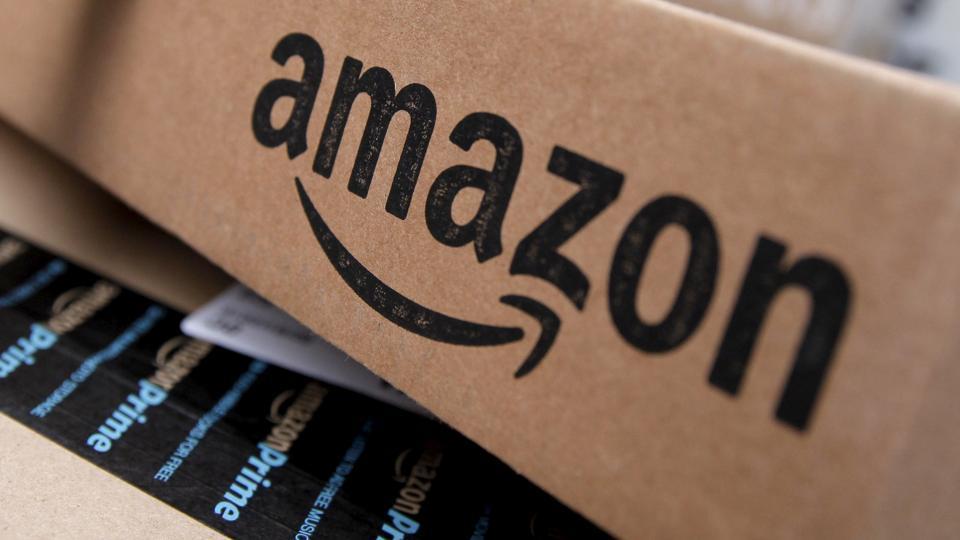 Amazon wins India’s approval to invest in selling food and groceries
Amazon wins India’s approval to invest in selling food and groceries
NEW DELHI:MMNN:11 July 2017
Amazon confirmed winning Indian government approval for its plan to sell food products, but it declined to provide further details
Online retail giant Amazon.com Inc has secured approval to stock and sell food and groceries in India, potentially expanding its business in the fast-growing economy where it is in a pitched battle with home-grown rival Flipkart.
Amazon confirmed winning government approval for its plan to sell food products, but it declined to provide further details.
Separately, a source familiar with the matter said Amazon planned to invest $500 million in the food segment, over and above the $5 billion it had already committed to investing in India.
Cheaper smartphones, increasing internet penetration and steep discounts have led to a surge in domestic online shopping for everything from gadgets to clothes and food items in India.
Still, mom-and-pop stores account for the biggest share of grocery sales, offering organised players huge growth potential.
Currently Amazon offers food products in India via Amazon Pantry, where retailers including joint venture Cloudtail sell various products. It also offers same-day grocery delivery on its Amazon Now app through a tie-up with Indian retailers Big Bazaar, Star Bazaar and Hypercity.
Amazon did not comment on whether its new investments would affect any of its existing tie-ups, or its Cloudtail joint venture.
Venture-funded Flipkart, whose backers include Tiger Global, Tencent Holdings and Microsoft, also plans to move into the groceries space, company executives have said.
Amazon last month announced plans to buy upscale U.S. grocer Whole Foods Market Inc for $13.7 billion.
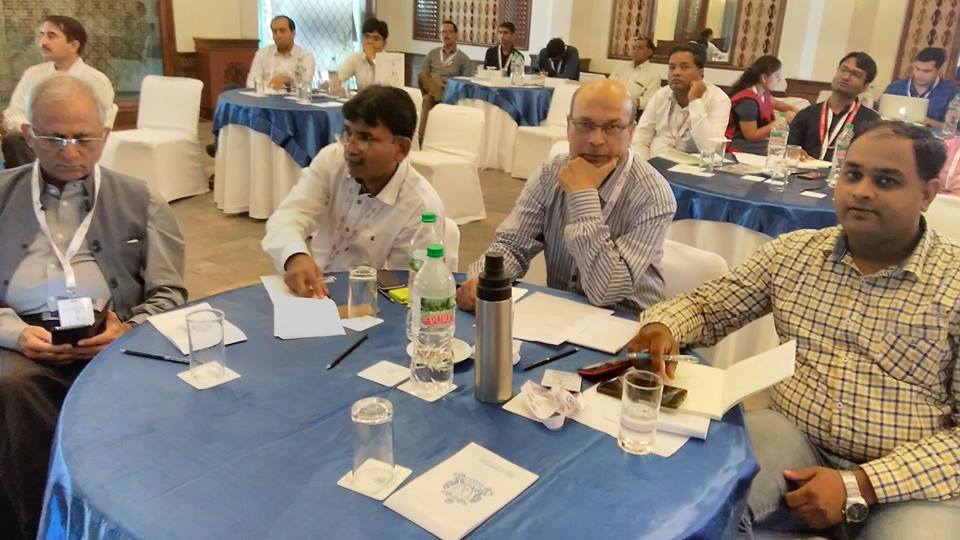 Google search sammelan held
Google search sammelan held
NEW DELHI:MMNN:10 July 2017
Google search sammelen for the online publishers was held at Hotel Noorus Sabha.Google team members enlightened the delegates about the Google search engine working and discussed Various useful points for the publishers Ms. Snigdha Bhardwaj welcomed the delegates and said that the number of internet users in india would rise to 65 crore by 2021.The number of indian language users have already overtaken the English users, she said.
Mr.Syed Malik and Abhash Tripathi explained to the delegates how to keep the web safe.They said we provide tools to help webmasters make the webpages mobile friendly.
Google provide many tools for the web masters.They also advised webmasters to access g.co/Search console that would provide all vital information about the website.
 While exclusively talking to Metromirror.com Mr.Abhash Tripathi told "demand for the local language content is growing and online News is the top search category"
While exclusively talking to Metromirror.com Mr.Abhash Tripathi told "demand for the local language content is growing and online News is the top search category"
Ms.Sinha said by the year 2020 Adspend on the local language Ads would cross 9700 crore.
She also elaborated about the Google's Adsense program and how publishers are generating significant revenue allover the world.
 Samsung to invest $19 billion in chip, display plants in South Korea
Samsung to invest $19 billion in chip, display plants in South Korea
NEW DELHI:MMNN:4 Jul 2017
Global tech companies have been increasing servers and data centers to handle more data from mobile devices and auto vehicles and also on expectations that adoption of artificial intelligence would create even more demand for handling data.
Samsung Electronics said Tuesday it will invest 21.4 trillion won ($19 billion) in the next four years in its memory chip and display plants in South Korea.
The South Korean company's announcement comes as the global memory chip industry enjoys a massive boom thanks to a surge in demand for microchips. Global tech companies have been increasing servers and data centers to handle more data from mobile devices and auto vehicles and also on expectations that adoption of artificial intelligence would create even more demand for handling data.
Samsung said by 2021, it will spend an additional 14.4 trillion won ($12.5 billion) to increase the capacity in its memory chip factory in Pyeongtaek, south of Seoul, which began operating in the day. Samsung said the 15.6 trillion won ($13.6 billion) chip plant, which broke ground two years ago, is one of the largest semiconductor production lines in the world.
Samsung will spend 6 trillion won ($5.2 billion) in its memory chip cluster in Hwaseong as well.
Another 1 trillion won ($871 million) will be spent on its display factory in Asan, which produces OLED screens for mobile phones. Samsung uses OLED screens for its high-end Galaxy smartphones. The advanced displays have allowed Samsung to distinguish its Galaxy phones from rivals with curved forms. Samsung is the dominant supplier and OLED screens for mobile devices are a lucrative business for the company, along with memory chips.
Samsung added that it is considering adding more semiconductor production lines in its factory in Xi'an, China.
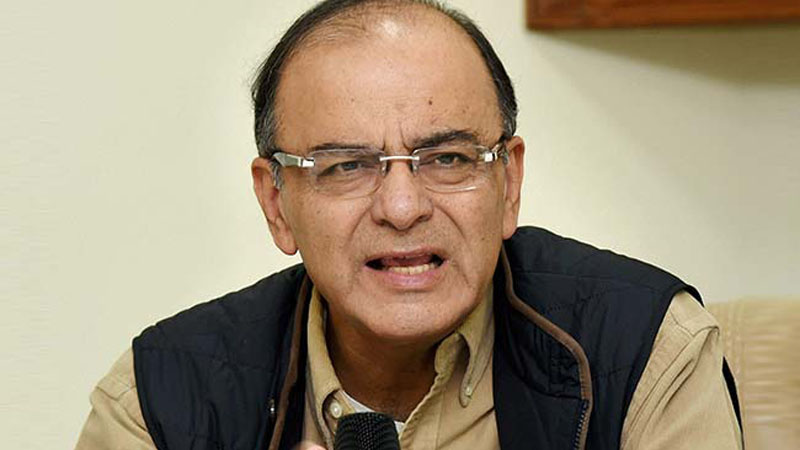 GST rollout to be very smooth, assures FM
GST rollout to be very smooth, assures FM
NEW DELHI:MMNN:2 Jul 2017
We will be very liberal in the first two months. For two months we have given a lot of laxity since we are getting into a new order,Arun Jaitley/ Finance Minister.
New Delhi : Finance Minister Arun Jaitley on Friday held out the assurance of a very smooth transition into the Goods and Services Tax (GST) regime, promising that the administration will be very liberal and not implement it very strictly in the first two months.
Acknowledging that there will be some minor problems when a massive change takes place, he said that things will smoothen out in the times to come
I think the roll-out will be very smooth, as smooth as possible. All systems are in place. When massive change takes place there is an element of uncertainty of the unknown and when there is unknown there is fear. The whole process will change. There will be some minor problems.I think that will be a matter of days, he said.
He was replying to a question at the Aaj Tak GST Conclave on how smooth he expected the transition into the new indirect tax regime. Asked if he would give a time-frame by when things will smoothen out, he said the process of registration is on. People will get attuned to the system, reports IANS.
We will be very liberal in the first two months. For two months we have given a lot of laxity since we are getting into a new order, he said.There may be glitches because of lack of awareness. In any technology, glitches are possible. But glitches are rectifiable almost immediately, Jaitley said. This is a formal launch, because the switch over will be from 12 midnight. Its an idea of the government, he said when asked why the midnight hour was chosen for the launch. Jaitley said that the July 1 roll-out date was not his decision. It was the GST Councils decision.
Last years constitutional amendment was valid till September 15. After September 15, we would have been a tax-less society. The Constitution does not allow this. There would be anarchy if we postponed it by six months, he said.
On the whole, he said, the new law will bring in the principle of equivalence and equity in the indirect tax regime.
Indirect tax is regressive. For a product, rich or poor has to pay same tax. To bring equity in indirect tax, the product being used by common man is being taxed at lesser rate. Single slab tax not possible in India. It may be possible in a developed country, he said.
There is a need to bring equity in indirect taxation, otherwise rich and poor will be paying the same tax. The Finance Minister said that the multiple tax slabs were chosen to keep a tab on inflation.
Multiple tax rates necessary to check inflation. To prevent inflationary impact, 12, 18 per cent tax rate was necessary. At some later stage, they may be converged into 15 per cent.
If you see the overall tax rate and the goods basket, the revenue will go up but the burden will come down, he said.
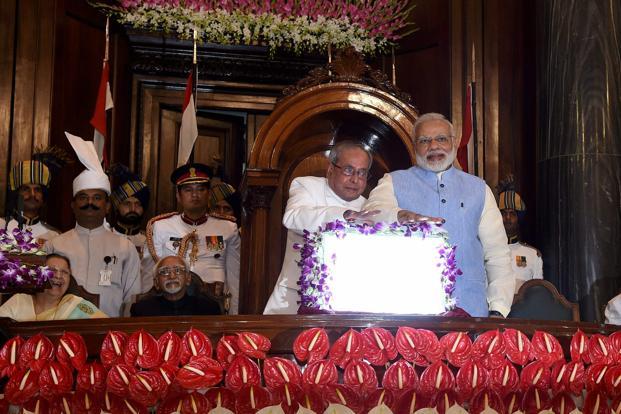 GST Launch 2017 Live: A milestone in cooperative federalism, says PM Modi in Parliament
GST Launch 2017 Live: A milestone in cooperative federalism, says PM Modi in Parliament
NEW DELHI:MMNN:1 Jul 2017
New Delhi: The much-awaited Goods and Services Tax (GST) was rolled out from midnight tonight from the historic Central Hall of Parliament in the presence of President Pranab Mukherjee, Prime Minister Narendra Modi, finance minister Arun Jaitley and other Cabinet ministers, many chief ministers and senior government officials. The Congress and the Left parties have decided to skipped the launch though some opposition parties attended the event.
The GST has replaced more than a dozen central and state taxes or Value Added Tax (VAT) with an aim to create a seamless unified market for the $2 trillion Indian economy.
Here are the live updates to the GST launch:
President Pranab Mukherjee, Prime Minister Narendra Modi press button to officially launch GST. (PTI)
President Pranab Mukherjee said the ambitious central tax is a tribute to the maturity and wisdom of Indias democracy.
The new era in taxation, which we are about to initiate in a few minutes, is the result of a broad consensus arrived at between the Centre and states, Mukherjee said minutes before the GST roll-out in his speech at a special function in the central hall of Parliament.
This consensus took not only time but also effort to build. The effort came from persons across the political spectrum who set aside narrow partisan considerations and put the nations interests first. It is a tribute to the maturity and wisdom of Indias democracy, he said.
The President termed the GST a disruptive change.
It is also a moment of some satisfaction for me because, as the Finance Minister, I had introduced the Constitution Amendment Bill on 22 March 2011 he said.
It is similar to the introduction of VAT when there was initial resistance. When a change of this magnitude is undertaken, however positive it may be, there are bound to be some teething troubles and difficulties in the initial stages, he said.
Mukherjee said these issues have to be solved with understanding and speed to ensure that they do not impact the growth momentum of the economy.
Success of such major changes always depends on their effective implementation. In the months to come, based on the experience of actual implementation, the GST Council and the Central and state governments should continuously review the design and make improvements, in the same constructive spirit as has been displayed till now, he said. (PTI)
Prime Minister Narendra Modi today termed the GST as a good and simple tax which will end harassment of traders and small businesses while integrating India into one market with one tax rate.
In the historic Central Hall of Parliament, Modi said the indirect tax reform is a result of combined efforts of various political parties at different points of time.
GST, he said, is an example of cooperative federalism as the centre and states together thrashed out the new law with consensus.
Besides being a transparent and fair system that will end generation of black money and corruption, GST will promote new governance culture that will end harassment at the hand of tax officials.
Touching upon initial teething troubles that may be witnessed because of unification of more than a dozen central and state levies into one and switching over to a new online return filing system, Prime Minister said even eyes have to adjust for a couple of days when a sight corrective spectacles are worn.
Modi said GST will eliminate the compounding effects of multi-layered tax system. (PTI)
Finance minister Arun Jaitley today said rollout of the GST will ease inflation, make tax avoidance difficult and boost GDP growth.
Addressing the midnight launch event of the GST in the Central Hall of Parliament, Jaitley said the implementation of the landmark unified tax should be seen as the beginning of a new journey that will expand the countrys economic horizon.
He further said that 17 transaction taxes in states and centre and 23 cesses would be subsumed in GST. An assessee will have to file only one return.
Inflation will come down, tax avoidance will be difficult, Indias GDP will be benefited and extra resources will be used for welfare of poor and weaker section, Jaitley said.
India is making history with the launch of GST, which is the biggest and most ambitious tax and economic reform in its history, the finance minister said.
The old India was economically fragmented. New India will create one tax, one market, one nation. It will be in India where Centre and states work together towards the common goal of shared prosperity, Jaitley said.
Terming GST as an important achievement for the country, he said not only will India write a new destiny, the new tax regime would also strengthen federalism.
The Constitution says India is a union of states. The union is strong if both Centre and states are strong. That is the real meaning of cooperative federalism.While enacting the GST, neither the states nor Centre gave up their sovereignty. They have pooled their sovereignty to make joint decisions in indirect taxation, the finance minister said.
In a large and complex federal system of multi-party democracy with Centre and 29 states and 2 UTs, Jaitley said India has implemented a constitutional amendment and brought in a large tax reform.
We have done this at a time when world is facing a slow growth, isolationism and lack of structural reforms. With the GST, India has showed that these forces can be overcome through display of inclusion, openness and boldness, he said.
He appreciated the efforts of all members of parliament, state finance ministers and officials in making GST a reality when many had expressed doubts whether it could be implemented from 1 July.
Jaitley also recalled the initiatives taken by his predecessors, including the then finance minister Pranab Mukherjee. He recalled the contribution of former finance Yashwant Sinha and former economic affairs secretary Vijay Kelkar.
All decisions of GST Council were taken uninamously.We did not want to burden common man and weaker section, Jaitley said.
President Pranab Mukherjee, PM Narendra Modi, VP Hamid President Pranab Mukherjee, PM Narendra Modi, VP Hamid Ansari arrive in Central Hall of Parliament for launch of GST. (PTI)
Rollout of the Goods and Services Tax is historical as it will bring about a revolutionary change in the country, Maharashtra Chief Minister Devendra Fadnavis said today, hours ahead of the high-profile event in Delhi to mark the transition to the new tax reform.
One nation, one tax, one market will come into effect with the rollout of GST. The taxation system will make trading easier. While Maharashtra will benefit from GST, other states too will benefit a lot and our economy will get a boost, Fadnavis said in a statement issued. (PTI)
With the Goods and Services Tax (GST) coming into effect from tomorrow, rail passengers will have to pay a little more to travel AC and first class. Service tax on AC ticket charges will be hiked from 4.5% to 5%, an increase of 0.5%, after the GST implementation. Similarly, GST on transport of goods by rail will be 5% in place of service tax of 4.5% levied earlier with exemption for essential goods like milk and agriculture produce. Service tax is levied only on AC and first class fares in the Railways. (PTI)
Retailers offered steep discounts before shutting shop for software updates before GST launch at midnight on Friday. Read more
Union minister M Venkaiah Naidu today said there would be some initial hiccups in rolling out the Goods and Services Tax (GST), but those can be addressed. (PTI)
Consumers will have to shell out more for banking services, insurance premium payments and credit card bills with GST rollout from Saturday. ATM withdrawals, debit card transactions, fund transfers too will cost more. read more
Restaurants will present diners with two bills in some places on Friday one before midnight, and one after that to reflect the tax change after GST launch. read more
Retailers on an overdrive to clear stocks before the GST launch at midnight kicked in, as they wanted to minimise their pre-tax regime inventory. Prices of branded garments would go up from Saturday in line with the 12% GST rate on garments priced above Rs1,000. Those that cost less than Rs1,000 will be taxed at 5% and could be priced lower.
What was driving the discounts was the fact that traders will get only 60% credit for taxes paid by them while sourcing their stocks for meeting the GST liability on the sales they make, if invoices for taxes paid previously are not available. If documents proving taxes paid previously are available, full tax credit will be granted under the GST regime.
Power Minister Piyush Goyal today said that GST rollout is a transformational move aimed at increasing revenues that will bring down the taxes in future. (PTI)
The Delhi BJP today said it will organise camps to help trader organisations and the common people on problems and misconceptions related to the Goods and Services Tax (GST). Delhi BJP president Manoj Tiwari said finance minister Arun Jaitley will address a GST-related meeting at the Talkatora Stadium on 6 July.
 Nokia appoints Samsung executive as head of technologies
Nokia appoints Samsung executive as head of technologies
NEW DELHI:MMNN:30 Jun 2017
The badge Nokia is eyeing a comeback in the smartphone industry led by Apple iPhone and an array of Chinese players.
Senior Samsung executive Gregory Lee has been appointed as the head of Nokia’s technologies unit and member of the group leadership team, the telecoms network equipment maker said on Friday.
“Gregory’s passion for innovation and operational excellence, along with his proven ability to build and lead global consumer technology businesses, make him well suited to advance Nokia’s efforts in virtual reality, digital health and beyond,” the Finnish company added.
The badge Nokia is eyeing a comeback in the smartphone industry led by Apple iPhone and an array of Chinese players. Recently, the company, promoted by a group of former Nokia employees called HMD Global, launched three new Android-based smartphone range -- Nokia 6, Nokia 5 and Nokia 3.
Like several others, Samsung rose as a smartphone maker on Google’s open-source Android operating system, which Nokia refused to adopt, eventually led to its downfall and bankruptcy.
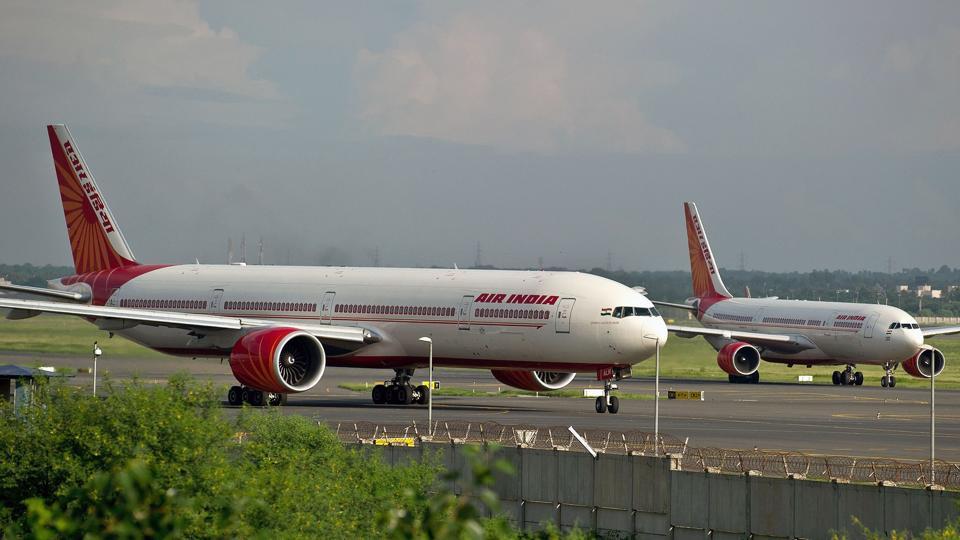 IndiGo airlines expresses interest in buying stake in Air India: Report
IndiGo airlines expresses interest in buying stake in Air India: Report
NEW DELHI:MMNN:29 Jun 2017
IndiGo airlines, owned by InterGlobe Aviation, has expressed an unsolicited interest in buying a stake in state-owned carrier Air India, television channel CNBC-TV18 reported on Thursday quoting the aviation ministry.
Cabinet on Wednesday gave approval to privatise debt-laden Air India, the first step of a process that could see the government offload an airline struggling to turn a profit in the face of growing competition from low-cost rivals.
Shares in InterGlobe Aviation were trading lower by 3.3 percent at 0841 GMT in a strong Mumbai market.
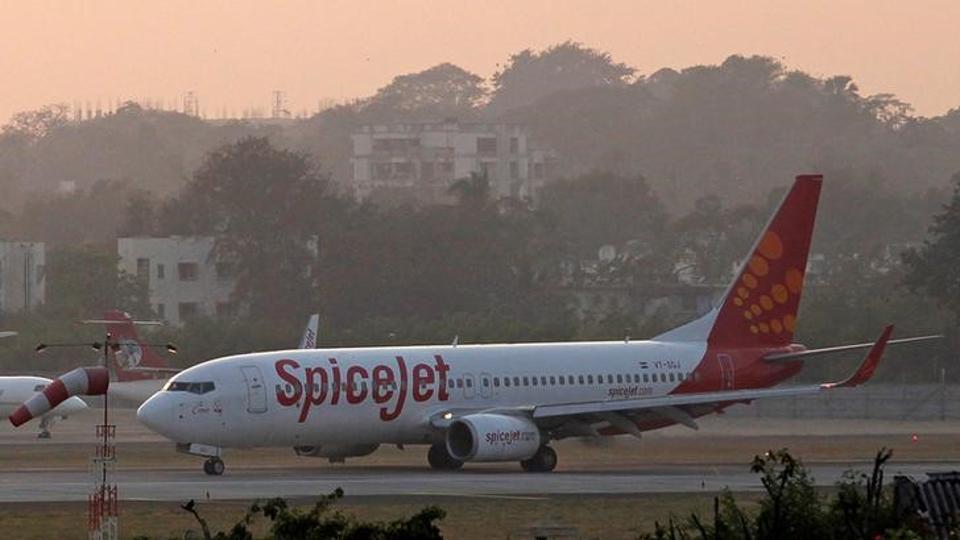 SpiceJet chief the man of the moment at Modi-Trump meet
SpiceJet chief the man of the moment at Modi-Trump meet
NEW DELHI:MMNN:28 Jun 2017
Starting a week before Trump’s inauguration in January, SpiceJet has placed orders for 225 planes with Boeing, which is worth more than $22 billion
He is the man you didn’t see at the Rose Garden presser by Prime Minister Narendra Modi and President Donald Trump, but heard about there. And his company’s big deal with an American company has the whole town from the White House to US congress talking.
He is the man Vice-President Mike Pence sought out on Tuesday from a hall full of top business executives from India and the US at the annual summit of US India Business Council and met him backstage before taking the podium.
“He greeted me by my name and said, ‘Look. I know about the company and I know about the order that’s been placed by your company,” Ajay Singh, the soft-spoken chairman and managing director of SpiceJet, who got a shout-out from Trump at the Rose Garden presser, said in an interview to Hindustan Times.
“I was pleased to learn about an Indian airline’s recent order of 100 new American planes, one of the largest orders of its kind, which will support thousands and thousands of American jobs, the president had said, with the prime minister by his side, without naming either Singh or SpiceJet.
Starting a week before Trump’s inauguration in January, SpiceJet has placed orders for 225 planes with Boeing, which is worth more than $22 billion and which will, according to a US government certification, create 132,000 jobs. The first planes will start arriving in 2018, with the last in 2024.
Ads by ZINC
In Singh’s telling, it was Boeing’s idea to let the US government know of the deal once work go under way on Modi’s visit. It seemed like a good idea, and as it wound around the corridors of power in New Delhi and DC, it got even better, picked up backers and, finally, the PM’s office asked for a note.
Singh says he never expected this kind of attention when he placed those orders turning around a company he had built and left and came back to rebuild, from near bankruptcy — “when I took over the company (in 2015) its stocks were at Rs 12 each, and they are now at Rs 125; (we have) done well”.
Sure, well enough to be cited as an example of opportunities for American companies in the Indian growth story and find mention in the Fact Sheet issued by the White House after the meeting of the two leaders listing the highlights of the cooperation between the two countries.
In their short meeting backstage at the USIBC event, Singh said Pence expressed the desire to visit SpiceJet offices when he travels to India — on Prime Minister Modi’s invitation, which he said he has accepted — at a date to be determined.
Later on Tuesday, Singh was on Capitol Hill to meet lawmakers.
So how does it feel? “It’s great, fantastic,” Singh said, leaning forward in his seat in the coffee shop of a hotel in downtown DC, “It’s a great testament to what SpiceJet has achieved…and we are glad were a part of his whole .. important meeting.”
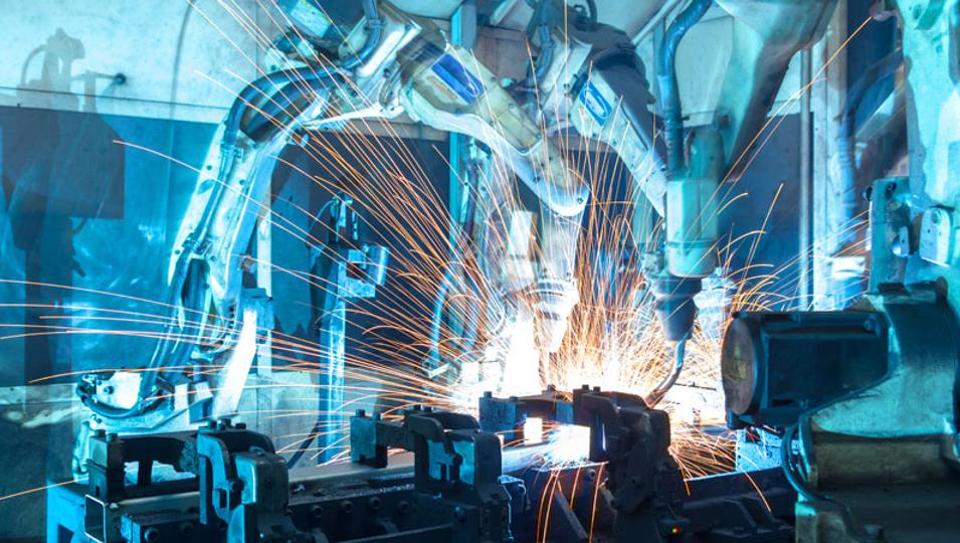 Robots are coming: What jobs will still be around in 20 years?
Robots are coming: What jobs will still be around in 20 years?
NEW DELHI:MMNN:27 Jun 2017
A study by Oxford University examined 702 common occupations and found that some jobs – telemarketers, tax preparers and sports referees – are at more risk than others including recreational psychologists, dentists and physicians.
The robots are coming, the robots are coming!
Regular reports warn us that an automation apocalypse is nigh. In January, a McKinsey & Company study found that about 30% of tasks in 60% of occupations could be computerised and last year, the Bank of England’s chief economist said that 80m US and 15m UK jobs might be taken over by robots .
Of course, not all jobs are created equally. In 2013, a highly cited study by Oxford University academics called The Future of Employment examined 702 common occupations and found that some jobs – telemarketers, tax preparers and sports referees – are at more risk than others including recreational psychologists, dentists and physicians.
In the past, reports of the death of human jobs have often been greatly exaggerated, and technology has created a lot more jobs than it has wiped out. It’s called the “Luddite Fallacy”, in reference to the 19th century group of textile workers who smashed the new weaving machinery that made their skills redundant. Further, in the last 60 years automation has only eliminated one occupation: elevator operators .
While there have been optimistic predictions that new technology would increase prosperity and lower drudgery, very few of us are working the 15-hour work week that, in 1930, the economist John Maynard Keynes predicted would be the norm for his grandkids. If anything, we’re working 15-hour days.
Today’s technological revolution is an entirely different beast from the industrial revolution. The pace of change is exponentially faster and far wider in scope. As Stanford University academic Jerry Kaplan writes in Humans Need Not Apply : today, automation is “blind to the colour of your collar”. It doesn’t matter whether you’re a factory worker, a financial advisor or a professional flute-player: automation is coming for you.
Before we get too deep into deep into doom and gloom, it’s worth stressing that automation isn’t synonymous with job losses. Speaking to me over the phone, Frey was quick to point out that his work doesn’t make any explicit predictions such as “47% of US jobs will disappear”. It simply says that these jobs are exposed to automation.
In other words, the jobs themselves won’t entirely vanish; rather, they will be redefined. Of course, as Frey concedes, “from the perspective of the worker there is not much of a difference” between work disappearing and being radically redefined. It’s likely they’ll lack the new skill sets required for the role and be out of a job anyway.
Professor Richard Susskind, author of The Future of the Professions and Tomorrow’s Lawyers , echoes this distinction. “What you’re going to see for a lot of jobs is a churn of different tasks,” he explains. “So a lawyer today doesn’t develop systems that offer advice, but the lawyer of 2025 will. They’ll still be called lawyers but they’ll be doing different things.”
So which professions are at greatest risk?
Martin Ford, futurist and author of Rise of the Robots: Technology and the Threat of a Jobless Future , explains the jobs that are most at risk are those which “are on some level routine, repetitive and predictable”.
Telemarketing, for example, which is highly routine, has a 99% probability of automation. according to The Future of Employment report; you may have already noticed an increase in irritating robocalls. Tax preparation, which involves systematically processing large amounts of predictable data, also faces a 99% chance of being automated. Indeed, technology has already started doing our taxes: H&R Block, one of America’s largest tax preparation providers, is now using Watson , IBM’s artificial intelligence platform.
Robots will also take over the more repetitive tasks in professions such as law, with paralegals and legal assistants facing a 94% probability of having their jobs computerized. According to a recent report by Deloitte, more than 100,000 jobs in the legal sector have a high chance of being automated in the next 20 years.
Fast food cooks also face an 81% probability of having their jobs replaced by robots like Flippy, an AI-powered kitchen assistant which is already flipping burgers in a number of CaliBurger restaurants.
Ford, the futurist, classifies resilient jobs in three areas.
The first is jobs that involve “genuine creativity, such as being an artist, being a scientist, developing a new business strategy”. Ford notes: “For now, humans are still best at creativity but there’s a caveat there. I can’t guarantee you that in 20 years a computer won’t be the most creative entity on the planet. There are already computers that can paint original works of art. So, in 20 years who knows how far it’s going to go?”
The second area is occupations that involve building complex relationships with people: nurses, for example, or a business role that requires you to build close relationships with clients.
The third area is jobs that are highly unpredictable – for example, if you’re a plumber who is called out to emergencies in different locations.
You can see these parameters at play in the jobs The Future of Employment identifies as least at risk of automation, which include recreational therapists, first-line supervisors of mechanics, installers, repairers, occupational therapists and healthcare social workers.
While being in a creative or people-focused industry may keep your job safe for the next 10 years or so, it’s very hard to predict what will happen 20 years into the future. Indeed, Susskind stresses that we should be wary of downplaying just how much computers might change the working world.
She says she believes that the 2020s are going to be a decade not of unemployment, but of redeployment. Beyond that, however, the picture is far less clear: “I don’t think anyone can do long-term career planning with any confidence.” As Susskind notes, “we make assumptions about the indispensability of human beings”, but machines are already doing things we thought only humans might be able to. They’re composing original music , for example, and beating professional players at complex board games with creative moves.
They’re even helping us with our relationships with God. While the clergy only has a 0.81% probability of automation, according to data from The Future of Jobs, Susskind believes even algorithms might one day replace the ordained. As he notes, there are already apps like Confession which offer “drop-down menus for tracking sin”.
While we’ve been doing a lot of robot-bashing, it should be noted that automation isn’t the only phenomenon having an impact on the job market. Saadia Zahidi , head of the education, gender and work system initiative at the World Economic Forum (WEF), says that we “shouldn’t forget that there are other drivers of change”.
A 2016 WEF report identified such drivers as climate change, the rise of the middle class in many emerging markets, aging populations in certain parts of Europe and East Asia, and the changing aspirations of women as factors that will have significant impacts on jobs. “It’s really the coming together of these various drivers of change that then leads to disruptions in the labor market,” Zahidi notes.
The report warns that we’re going to see significant ramifications from automation very soon. Zahidi explains: “The next three years will be a period of flux and a period of relatively higher losses than gains. This is not meant to be alarmist in the sense that there will be heavy job losses. But if we do nothing then this will be where we end up.”
Automation may also exacerbate gender inequality, Zahidi says. Women don’t make up a large proportion of people who are going into science, technology, engineering and math (Stem) and IT fields, which are likely to be the areas in which jobs will grow. On the other hand, Zahidi notes, there do tend to be more women in care-related professions, such as healthcare and education, which are at a lower risk of automation.
In the long run, women may actually end up faring better from technological change. A recent PricewaterhouseCoopers report found that a higher proportion of male than female jobs are at risk of automation, especially those of men with lower levels of education.
Related: Why robots should be taxed if they take people’s jobs | Robert Shiller
Justin Tobin, founder of the innovation consultancy DDG, says he believes: “More and more independent thinkers are realizing that when being an employee is the equivalent to putting all your money into one stock – a better strategy is to diversify your portfolio. So you’re seeing a lot more people looking to diversify their career.”
Faith Popcorn, a futurist, echoes the idea that we will all have to become as agile as possible and “have many forms of talent and work that you can provide the economy”.
In the future, she says, we’ll all have seven or eight jobs, with the average adult working for a number of companies simultaneously rather than working for one big corporation.
“We’re in the midst of this huge sweeping change that is going to impact all levels of society,” Popcorn warns.
Predicting the future is Popcorn’s livelihood, and she’s made herself a bit of a legend over the years doing so, but even she seems a little unsettled by the pace of change today. As she tells me with a world-weary sigh, it “just makes you want to have some more tequila”.
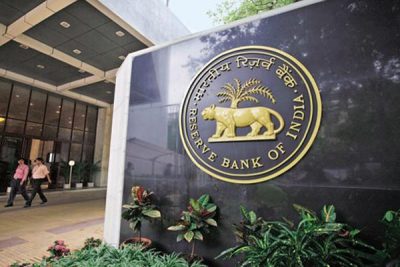 RBI reconstituted Overseeing Committee
RBI reconstituted Overseeing Committee
NEW DELHI:MMNN:23 Jun 2017
Agencies, Mumbai
The Reserve Bank of India(RBI) has reconstituted the Overseeing Committee (OC) to include five members from two earlier to expedite resolution of stressed assets in the banking system.
The three new members of the OC are: MBN Rao , YM Deosthalee and S Raman. Mr Raman will join the OC on September 7.
So far, the committee had only two members ”Pradeep Kumar and Janki Ballabh. Kumar is the Chairman of the OC.
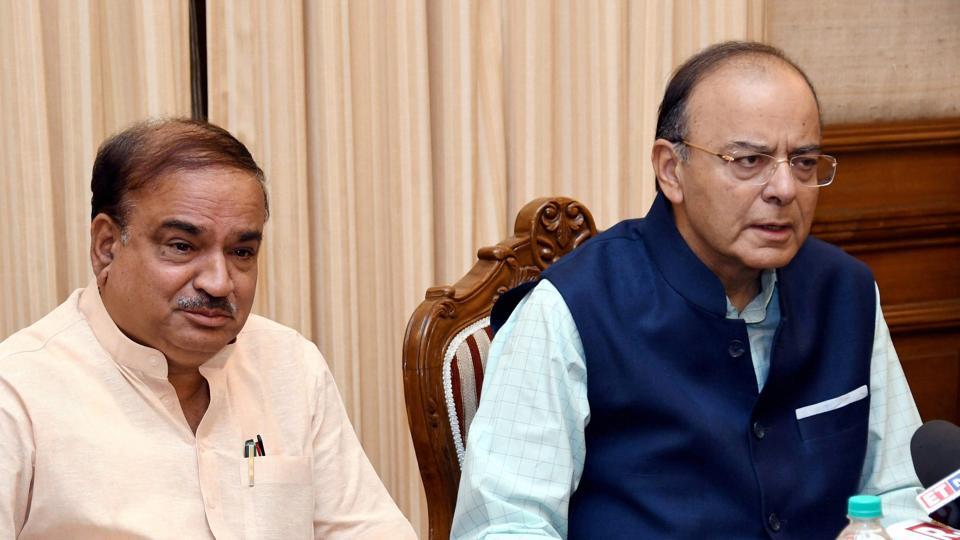 Are half-baked anti-profiteering rules a nightmare in the making?
Are half-baked anti-profiteering rules a nightmare in the making?
NEW DELHI:MMNN:21 Jun 2017
Businesses are worried whether anti-profiteering rules under GST would lead to witch-hunting by taxmen
In the current format, the government’s anti-profiteering rules on the goods and services tax (GST) raise more questions than answers. While the intent is to curtail inflation post-GST implementation, the notification suffers from a lamentable lack of clarity on many aspects, increasing uncertainty for businesses.
To begin with, the law would be applicable to all businesses irrespective of their nature or revenue. Since businesses are already struggling to brace for the 1 July deadline, tax experts say it would have been better if these provisions were restricted to those having oligopolistic markets or ones where a significant inflationary spiral is expected due to GST.
“The concern at this point in time is whether the sweeping provisions provided in the law can be effectively enforced without affecting business confidence. Also, every reduction in tax rates or increase in input tax credit may not lead to a corresponding reduction in prices as there could be simultaneous upward movement of costs of raw material or forex swings,” said MS Mani, senior director (indirect tax) at advisory firm Deloitte India.
 Retro tax on Cairn: I-T dept orders recovery of Rs 10K cr, to seize shares in Indian firm
Retro tax on Cairn: I-T dept orders recovery of Rs 10K cr, to seize shares in Indian firm
NEW DELHI:MMNN:19 Jun 2017
The Income Tax Department has ordered coercive action against Cairn Energy Plc to recover Rs 10,247 crore of retrospective tax after the British oil firm lost a challenge to the move before an international arbitration panel.
The department ordered taking away $104 million dividend due to it from its remaining stake in the erstwhile subsidiary Cairn India (now called Vedanta Ltd) and another Rs 1,500 crore of tax refund due to it, a top source said.
This follows an international arbitration panel last week deciding not to entertain a plea by Cairn Energy seeking injunction against the coercive action to recover the tax.
The source said the tax department will now move to take over the 9.8% shareholding Cairn Energy had in Cairn India.
In an emailed statement, Cairn Energy confirmed the tax department’s move.
“On June 16, 2017 the Indian Income Tax Department (IITD) issued an order to Vedanta India Ltd (VIL) directing it to pay over any sums due to Cairn. Sums due to Cairn from VIL now total USD 104 million, including historical dividends of $ 53 million and a further dividend of $ 51 million after the merger of CIL and VIL,” it said.
The company said however that it will continue with the international arbitration proceedings against the retrospective tax demand.
“Cairn is seeking full restitution for (UK-India Bilateral Investment Treaty) Treaty breaches resulting from the expropriation of its investments in India in 2014, the attempts to enforce retrospective tax measures and the failure to treat the Company and its investments fairly and equitably,” it said.
The company said it has a high level of confidence in its case under the Treaty and, in addition to resolution of the retrospective tax dispute, its claim seeks damages equal to the value of the Group’s residual shareholding in Cairn India at the time it was attached (approximately $1 billion).
 US Fed raises key interest rate to 1.0-1.25%, unveils cuts to bond holdings
US Fed raises key interest rate to 1.0-1.25%, unveils cuts to bond holdings
NEW DELHI:MMNN:15 Jun 2017
The reduction in the amount banks have to set aside (also called a provision) also mean lower home loan rates.
The decision lifted the Federal Reserve’s benchmark lending rate by a quarter percentage point to a target range of 1.00% to 1.25%
The Federal Reserve raised interest rates on Wednesday for the second time in three months, citing continued US economic growth and job market strength, and announced it would begin cutting its holdings of bonds and other securities this year.
The decision lifted the US central bank’s benchmark lending rate by a quarter percentage point to a target range of 1.00% to 1.25% as it proceeds with its first tightening cycle in more than a decade.
In its statement following a two-day meeting, the Fed’s policy-setting committee indicated the economy had been expanding moderately, the labour market continued to strengthen and a recent softening in inflation was seen as transitory.
The Fed also gave a first clear outline on its plan to reduce its $4.2 trillion (3.28 trillion pounds) portfolio of Treasury bonds and mortgage-backed securities, most of which were purchased in the wake of the 2007-2009 financial crisis and recession.
“The committee currently expects to begin implementing a balance sheet normalisation programme this year, provided that the economy evolves broadly as anticipated,” the Fed said in its statement.
The central bank said it would gradually ramp up the pace of its balance sheet reduction and anticipates the plan would feature halting reinvestments of ever-larger amounts of maturing securities.
The Fed said the initial cap for Treasuries would be set at $6 billion per month initially and increase by $6 billion increments every three months over a 12-month period until it reached $30 billion per month in reductions to its holdings.
For agency debt and mortgage-backed securities, the cap will be $4 billion per month initially, increasing by $4 billion at quarterly intervals over a year until it reached $20 billion per month.
US stocks rose after the Fed announcement, while the dollar reversed some of its earlier losses.
“The Fed announcing an update to their reinvestment principles leaves September open. The start of balance sheet runoff and the fact that they haven’t slowed their projected path of rate hikes suggest they can do both balance sheet and rate hikes at the same time,” said Gennady Goldberg, interest rate strategist at TD Securities.
Fed Chair Janet Yellen was holding a press conference at 2:30pm EDT (1830 GMT).
Eyes on inflation
The Fed has now raised rates four times as part of a normalization of monetary policy that began in December 2015. The central bank had pushed rates to near zero in response to the financial crisis.
Policymakers also released their latest set of quarterly economic forecasts which showed temporary concern about inflation and continued confidence about economic growth in the coming years.
They forecast US economic growth of 2.2% in 2017, an increase from the previous projection in March. Inflation was expected to be at 1.7% by the end of this year, down from the 1.9% previously forecast.
A retreat in inflation over the past two months has caused jitters among some Fed officials who fear that the shortfall, if sustained, could alter the pace of future rate hikes. Earlier on Wednesday, the Labor Department reported consumer prices unexpectedly fell in May, the second drop in three months.
The Fed’s preferred measure of underlying inflation has retreated to 1.5%, from 1.8% earlier this year, and has run below the central bank’s 2% target for more than five years.
Expectations of any fiscal stimulus in the near term from the Trump administration have also waned with campaign promises on tax cuts, regulation rollbacks and infrastructure spending either still on the drawing board or facing hurdles in Congress.
Interest rates are seen rising one more time by the end of this year, according to the median projection of the forecasts released with the Fed’s policy statement, in keeping with the previous forecast.
Estimates for the unemployment rate by the end of this year moved down to 4.3%, the current level, and to 4.2% in 2018, indicating the Fed believes the labour market will continue to tighten.
The median estimate of the long-run neutral rate, which is seen as the level of monetary policy that neither boosts nor slows the economy, was unchanged at 3.0%.
Minneapolis Fed president Neel Kashkari dissented in Wednesday’s decision.
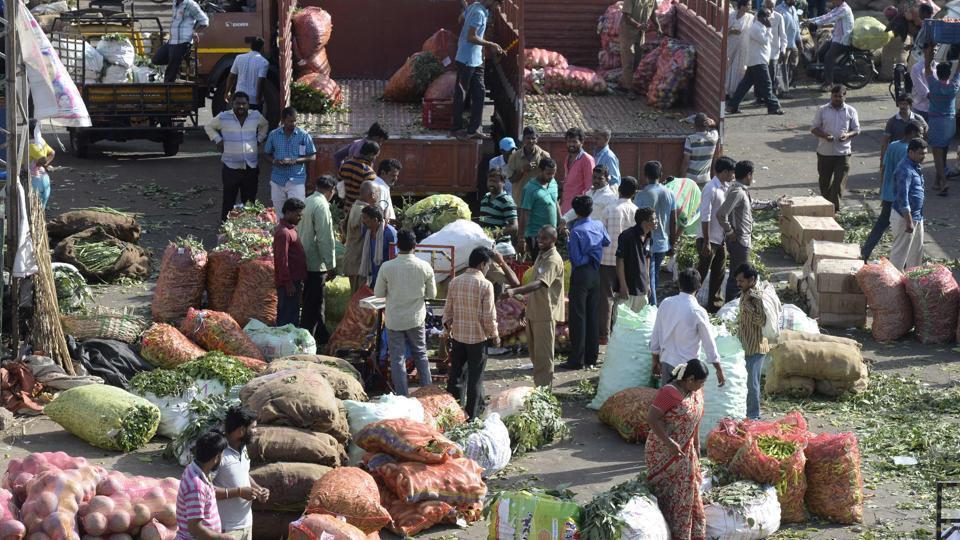 WPI inflation in May cools to 5-month low of 2.17%
WPI inflation in May cools to 5-month low of 2.17%
NEW DELHI:MMNN:14 Jun 2017
Inflation based on the wholesale price index fell to a five-month low of 2.17% in May, mainly because of a sharp drop in prices of vegetables.
In December, the reading was 2.10%.
WPI inflation was 3.85% in April and (-)0.9% in May 2016.
Pulses and cereals saw a slower growth in prices.
The wholesale price index (WPI) for the month is based on the new base year 2011-12, which was revised last month from 2004-05, with an aim to reflect the macroeconomic picture more accurately.
The slowdown in wholesale inflation comes against the backdrop of retail inflation easing to a multi-year low of 2.18% in May.
Government data showed that prices of food articles shrank by 2.27% in May on an yearly basis.
The inflation print for vegetables read (-)18.51 %. While potato saw a deflation of 44.36 %, for onion, it came in at 12.86 %.
The rate of price increase was 4.15 % in cereals, down from 6.67 % in May last year. Protein-rich pulses turned cheaper in May as prices fell by 19.73 %.
Eggs, meat and fish saw a price decline of 1.02 % annually.
The index basket of the new series has a total of 697 items, including 117 for primary articles, 16 for fuel and power and 564 for manufactured products.
There was acceleration in prices of fuel and power (11.69 %) and manufactured products (2.55 %).
However, the price rise in sugar, which falls under the category of manufactured items, slowed to 12.83 % in May, from 23.12 % a year earlier.
 Google’s Gboard to now recognise hand-drawn emojis, suggest phrases as you type
Google’s Gboard to now recognise hand-drawn emojis, suggest phrases as you type
NEW DELHI:MMNN:13 Jun 2017
Google rolled out the Gboard for more than 200 languages, besides expanding support for languages like Hawaiian, Maori and Belgian French.
Thanks to the latest update of Google’s Android keyboard, you will now be able to draw the emoji you wish to send across. The update makes the Google keyboard, called Gboard, more user-oriented on Android devices.
To start with, you can draw emojis which you are struggling to find on the emoji keyboard.
“In the emoji search box, you can now tap the emoji handwriting icon to draw emoji directly onto the screen. Your drawing will automatically be recognised and show results for your favourite emoji,” Google said in a blogpost on Tuesday.
In the latest update, Gboard has taken predictive typing to next level. It now suggests phrases that could follow, instead of words, as you type.
Google gave an example: Try typing “looking forward” and Gboard suggests “to seeing” or “to it” as you type. This is supported in English today and will be rolling out to more languages soon.
The Google Search on Android phones will now show multiple, more interactive result cards.
Google rolled out the Gboard for more than 200 languages, besides expanding support for languages like Hawaiian, Maori and Belgian French
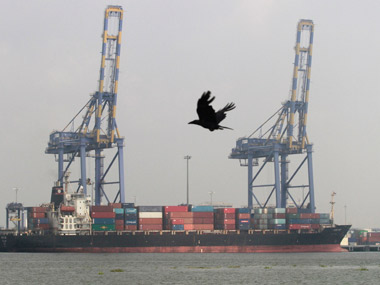 India's plan to develop Iran's Chabahar port yet to see light as US weighs sanction
India's plan to develop Iran's Chabahar port yet to see light as US weighs sanction
NEW DELHI:MMNN:10 Jun 2017
Western manufacturers are shying away from supplying equipment for an Iranian port that India is developing for fear the United States may reimpose sanctions on Tehran, Indian officials say, dealing a blow to New Delhi's strategic ambitions in the region.
Lying on the Gulf of Oman along the approaches to the Straits of Hormuz, the port of Chabahar is central to India's hopes to crack open a transport corridor to Central Asia and Afghanistan that bypasses arch-rival Pakistan.
India committed $500 million to speed development of the port after sanctions on Iran were lifted following a deal struck between major powers and Tehran to curb its nuclear program in 2015.
But the state-owned Indian firm that is developing Chabahar is yet to award a single tender for supplying equipment such as cranes and forklifts, according to two government sources tracking India's biggest overseas infrastructure push.
US President Donald Trump denounced the nuclear agreement on the campaign trail, and since taking office in January has accused Iran of being a threat to countries across the Middle East.
Swiss engineering group Liebherr and Finland's Konecranes and Cargotec have told India Ports Global Pvt Ltd, which is developing the deep water port, they were unable to take part in the bids as their banks were not ready to facilitate transactions involving Iran due to the uncertainty over US policy, the two officials said in separate conversations with Reuters.
These firms dominate the market for customised equipment to develop jetties and container terminals. One official said the first tender was floated in September, but attracted few bidders because of the fear of renewed sanctions. That fear has intensified since January.
"Now the situation is that we are running after suppliers," one official said, speaking on condition of anonymity because of the sensitivity of matter.
A Konecranes spokeswoman declined to comment beyond confirming the company was not involved in the project.
Cargotec and Liebherr did not respond to requests for comment.
Some tenders have been floated three times since September because they failed to attract bidders. A Chinese firm, ZPMC, has since come forward to supply some equipment, the same Indian official said.
 Banks can now lend more, cheaper home loans likely
Banks can now lend more, cheaper home loans likely
NEW DELHI:MMNN:8 Jun 2017
The reduction in the amount banks have to set aside (also called a provision) also mean lower home loan rates.
The Reserve Bank of India (RBI) on Wednesday made it possible for banks to lend more to home-buyers, and at lower rates, in a move that should benefit customers as well as real estate developers.
The central bank did this by reducing the amount of money banks have to set aside (as security) on home loans. Previously, they had to set aside 0.4% or Rs 400 per lakh. This has now been reduced to 0.25%, or Rs 250 per lakh.
Combined with the cut in the statutory liquidity ratio (the portion of deposits which banks have to invest in government securities) by 50 basis points, or 0.5 percentage point, this means banks now have that much more capital to lend.
The reduction in the amount banks have to set aside (also called a provision) also mean lower home loan rates.
The central bank also reduced the so-called risk weightage on home loans of between Rs 30 lakh and Rs 75 lakh to 35% from 50%, and over Rs 75 lakh to 50% from 75%.
Risk weights are used to calculate the minimum amount of capital that must be held by banks to reduce the risk of insolvency.
This could make bigger home loans less expensive (typically loans above Rs 75 lakh were up to 0.5 percentage points more expensive, in terms of interest than other loans).
“When risk weightage drops it means the banks have that much more money to lend. If it has dropped by one third it means the cost of doing business comes down which makes it possible for banks to then cut interest rate and pass it on to the borrowers,” said Rajeev Ahuja, chief operating officer, RBL Bank Ltd.
The reduction in rates will be higher for bigger ticket size loans which are already more expensive when compared to loans of lower value.
Currently, the interest rate on home loans above Rs 75 lakh is higher. For instance, SBI offer an interest rate of 8.35% for loan amount below Rs 30 lakh while for loan above Rs 75 lakh the interest rate is at 8.65%.
RBI’s decision was prompted by an understanding of the multiplier effect of home loans, according to N.S. Vishwanathan, deputy governor of RBI. His reference is to the fact that an increase in home loans means more home sales, which will benefit real estate developers, and companies in the construction, cement and steel businesses at one end, and companies in the furniture and appliance businesses at another.
“Delinquencies (are) generally among the lowest in home loan segment....It has been decided to reduce risk weight on certain categories on home loans and also the standard asset provisioning,” Vishwanathan added.
According to Vishwanathan, reduction of statutory liquidity ratio (SLR) by 50 basis points will help banks in achieving 100% liquidity coverage ratio by January 2019. These two factors together will bring buoyancy to the home loan segment.
Credit to the housing segment has increased by 13.4% year-on-year at the end of April.
Banks are focusing on affordable housing as demand from other sectors of the economy has dried up and to take advantage of incentives offered by the government to home buyers. Many banks have reduced their home loan rates. The government on 31 December announced the Credit Linked Subsidy Scheme for Middle Income Groups, where interest subsidy of 4% was granted on housing loans of up to Rs 9 lakh and 3% on housing loans of up to Rs 12 lakh.
According to a report by CLSA India Pvt., housing sales could rise from Rs7 trillion in financial year 2017 to Rs17 trillion by fiscal 2024 on the back of market growth and impetus to affordable housing.
“The decision to reduce the risk weights for home loans over Rs. 30 lakh category will release capital for the banking industry and is a positive move,” said Arundhati Bhattacharya, chairman of State bank of India (SBI).
Banks have already been aggressively cutting rates in the home loan segment. SBI, the country’s largest lender, for instance, has already cut its one-year marginal cost of funds based lending rate (MCLR)--the rate linked to its home loans--to 8% currently from 9.20% in April 2016, when MCLR first came into effect.
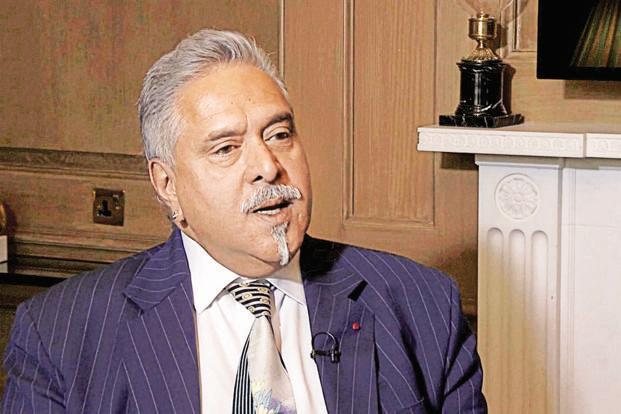 Vijay Mallya arrested in London, released on bail within hours
Vijay Mallya arrested in London, released on bail within hours
NEW DELHI:MMNN:18 April 2017
Businessman Vijay Mallya was arrested by the Scotland Yard in London on Monday on India's request for his extradition on fraud charges. He was released on bail a few hours later after he appeared at a central London police station.
"Officers from the Metropolitan Police's Extradition Unit this morning arrested a man on an extradition warrant. Vijay Mallya was arrested on behalf of the Indian authorities in relation to accusations of fraud," said the Scotland Yard.
The London Metropolitan Police said Mallya was arrested after appearing at a central London police station. He appeared at Westminster magistrates' court in London and was seen walking out with his legal team a few hours later after being granted bail.
An unfazed Mallya later tweeted on Tuesday, "Usual Indian media hype. Extradition hearing in Court started today as expected."
The Central Bureau of Investigation (CBI) and the Indian High Commission in London will now present India's case in the UK court for Vijay Mallya's extradition as the country "wants to the myth that by crossing boundaries you are out of bounds", said a person aware of the developments. India is seeking extradition of Mallya for defaulting on Kingfisher Airlines loans due to IDBI Bank.
CBI has been investigating a case against Mallya and the companies he controlled over allegations of money laundering since early last year and had secured a non-bailable warrant against the absconding businessman in a case related to money laundering and wilful default of loans, Mint reported on 22 November. CBI clarified that the arrest was in connection with his extradition.
"Vijay Mallya has been arrested in connection with the IDBI bank case. We cannot comment further on the matter till it is heard at the London Court," a senior CBI official told Mint, on condition of anonymity.
A senior government official on condition of anonymity stated that, "protocol would now require Mallya's case to be heard in London. The extradition case will be heard and evidence related to the same will be produced on the basis of which the London courts will take an informed decision. It is too soon to comment on when he will be extradited to India."
On 23 January, CBI's central and Bengaluru division raided the premises of the Vijay Mallya-run UB Group in Bengaluru in connection with a Rs900-crore loan default and money laundering case. On the same day, CBI arrested nine officials of Kingfisher Airlines and IDBI Bank Ltd, including the bank's former chief.
In September 2016, the Enforcement Directorate (ED) had issued the order, under the Prevention of Money Laundering Act (PMLA), to attach the various properties including flats, a farmhouse, shares and fixed deposits in Mallya's name and his associate firms. The agency had earlier said that the market value of these assets was Rs6,630 crore.
The Ministry of External Affairs (MEA) had stated that India's request for Mallya's extradition had recently been certified by the UK, after the UK's home department on 21 February conveyed India's request for Mallya's extradition to the Westminster magistrate's court, after being certified by the UK secretary of state. However, with Mallya's extradition proceedings just beginning in the UK, India may well have to wait till he is handed over by the British authorities.
In New Delhi, MoS (finance) Santosh Kumar Gangwar said, "We are now assessing the facts how we can bring him back into the country and start judicial proceedings against him." The government, he said, will leave no stone unturned to bring to justice anyone indulging in financial irregularities.
On 23 March, MoS (external affairs) V.K. Singh informed the Rajya Sabha that while India and the UK had an Extradition Treaty which has been in force since 1993, "In the last five years, only one fugitive criminal namely Samirbhai Vinubhai Patel has been extradited from the UK. As per Article 2 of the India-UK Extradition Treaty, an extradition offence for the purposes of this Treaty is constituted by conduct which under the laws of each Contracting State is punishable by a term of imprisonment for a period of at least one year. An offence may be an extradition offence notwithstanding that it relates to taxation or revenue or is one of a purely fiscal character."
Singh also added that the extradition requests in respect of criminal fugitives namely Raymond Varley, Ravi Shankaran, Velu Boopalan, Ajay Prasad Khaitan, Virendra Kumar Rastogi and Anand Kumar Jain had been rejected by the UK government.
Meanwhile, S.S.Naganad, who is the senior counsel appearing for the consortium of banks led by State Bank of India stated that, "There was more than one issue against him (Mallya). There was money laundering case, Karnataka high court has issued an arrest warrant, a magistrate court has also issued an arrest warrant. All this put together is what the Indian government had sought an extradition for."
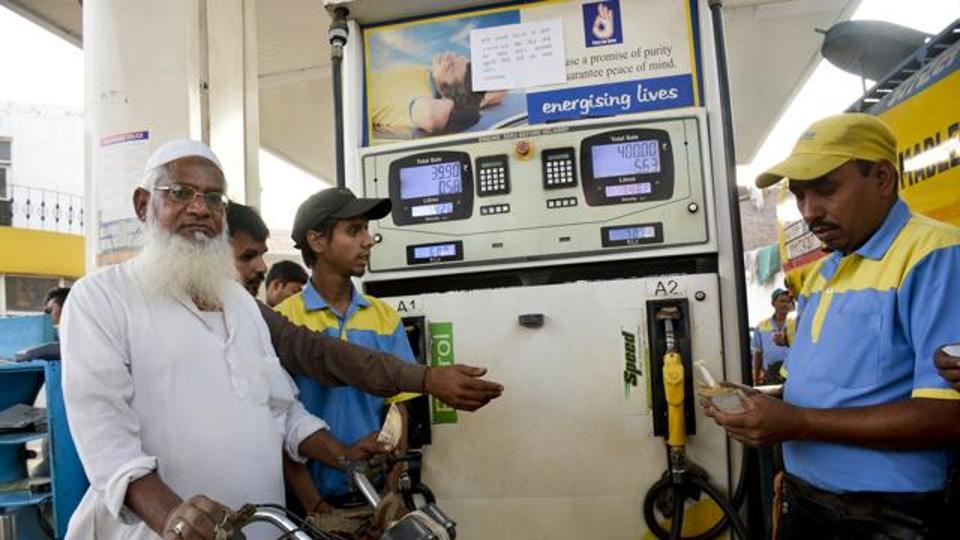 Fuel pumps in eight states to be shut on Sundays from May 14
Fuel pumps in eight states to be shut on Sundays from May 14
NEW DELHI:MMNN:18 April 2017
Beginning May 14, fuel outlets in eight states will be shut every Sunday following Prime Minister Narendra Modi's call to conserve oil, a fuel pump owners' body said here today.
"We had planned to shut our outlets on Sundays a few years back. But oil marketing companies had then requested us to reconsider our decision. Now we have decided to shut the outlets on Sundays," said Suresh Kumar, an executive committee member of the consortium of Indian petroleum dealers.
He said the association's decision was made in view of the Prime Minister's call during his recent 'Mann ki baat' programme to conserve oil to save the environment.
Kumar, also the vice-president of Tamil Nadu Petroleum Dealers Association, said nearly 20,000 outlets in Tamil Nadu, Kerala, Karnataka, Puducherry, Andhra Pradesh, Telangana, Maharashtra and Haryana would be shut for 24 hours on Sundays, starting May 14.
"In Tamil Nadu, we expect a business loss of Rs 150 crore if we do not operate on a Sunday. But we have been seeing a decline in sales on Sundays by upto 40%," he said.
Asked if the association's decision was supported by the OMCs, he said, "We will communicate our decision to them shortly."
Kumar said the fuel outlets which normally have about 15 staff each would have one staff member on the holidays to provide fuel if there was an emergency situation.
On the issue of OMCs hiking the margins to petroleum outlets, he said the association was discussing it and would soon make an announcement in this regard.
"That struggle is going on. We are meeting our association members shortly. We will announce our decision soon," he said.
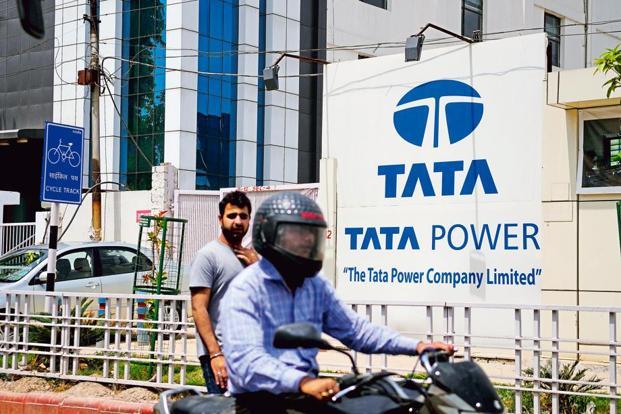 What next for Adani Power, Tata Power after Supreme Court order on tariffs?
What next for Adani Power, Tata Power after Supreme Court order on tariffs?
NEW DELHI:MMNN:11 April 2017
The streak of negative news does not seem to end for Tata Power Co. Ltd and Adani Power Ltd. Even as the investors were coming to terms with the Central Electricity Regulatory Commission's (CERC's) stringent compensation proposal for their troubled power plants at Mundra, Gujarat, the Supreme Court squashed hopes of any such relief.
The full tariff order is not available at the time of writing this story and it is not yet clear if the apex court has allowed any remediation mechanism. But investors are worried. Shares of both the companies dropped 2-16% on Tuesday.
The ramifications can be severe for Adani Power. Assuming a favourable verdict, the company has been booking compensation in its quarterly revenues. Post the latest verdict, the company may have to write-off those revenues, retrospectively (pertaining to changes in Indonesia law), which can adversely hit the company earnings.
That can raise questions about Adani Power's financial health. As of December, the company has an estimated debt (long term plus working capital loan) of Rs 48,000 crore. Its debt-to-equity ratio based on 2016-17 estimates stood at 6.8 times and interest coverage ratio stood at 0.8 time, indicating earnings-interest expense mismatch.
Tata Power's Mundra ultra mega power project has seen cost under-recovery of 70 paise per unit in the December quarter. But unlike Adani Power, Tata Power is not booking compensation in its revenues. And thanks to other assets which are doing well, the company's interest coverage ratio is at 1.3 times (2016-17 estimate). Further, most analysts were not assuming tariff order relief in their earnings estimates. So the latest verdict may not alter the company's earnings estimates much.
That does not mean the companies can leave the situation unaddressed. As Deepak Agrawala, senior vice president (utilities, renewables and industrials research), Elara Securities (India) Pvt Ltd says, no one can run the business at a loss.
According to analysts, the power plants in question will not be able to break even at profit before tax level or make any money at current coal prices. The plants are built on Indonesian coal. A change in law in Indonesia pushed up the coal costs. Companies petitioned for cost recovery which the Supreme Court disallowed.
One option is the exit of unviable power purchase agreements (PPAs). This may not be possible given the weak demand environment. According to analysts, companies can face power distribution companies' ire and reputational risks.
A second option could be the sale of the said power plants after inflicting valuation cuts on promoters and lenders. According to Bhargav Buddhadev, an analyst at Ambit Capital Pvt. Ltd, Tata Power's Mundra asset is a low-cost plant, though there is a question mark on the profitability. But then as one analyst with a domestic broking firm point out, it can be tough for the lenders to take valuation cuts. Further, selling a PPA tied power plant can be a long drawn process.
A third option is to work around the current circumstances. According to Buddhadev, Tata Power can ramp up its power plant beyond the 75% utilisation level, recover fixed costs and curtail financial losses. With coal prices unlikely to enter a structural uptrend in the near future, the damage to Tata Power can be limited, Buddhadev adds.
The third option looks plausible if the companies contain the financial losses at these plants. But can that be achieved? And if the plants break even, are investors prepared to live with zero returns from one of the large investments these companies made? In the midst of so much uncertainty, no wonder investors made a beeline for the exits.
 How To Maintain Your House Rent Allowance (HRA) Exemption
How To Maintain Your House Rent Allowance (HRA) Exemption
NEW DELHI:MMNN:11 April 2017
Now salaried class taxpayers cannot claim house rent allowance or HRA exemption on the basis of fake rent receipts in name of their mother, father, wife or any other close relative. The Income Tax Department may disallow fake HRA exemptions on basis of guidelines recently issued by the Mumbai ITAT (Income Tax Appellate Tribunal). Now onwards, such taxpayers may have to keep other documents to substantiate payment of rent to claim HRA exemption.
HRA exemption
Many salaried class taxpayers claim exemption of house rent allowance (HRA) by furnishing fake rent receipts - in the name of their mother, father, wife or any other close relative - to their employer. Till now, there was no guidance available with the Income Tax Department to deal with such cases and taxpayers firmly believed that only rent receipt was sufficient proof to show genuineness of rental payments. Taxpayers make such sham transactions with the sole intention of claiming HRA exemption in order to reduce tax liability.
Problems taxpayers can face
Now, salaried class taxpayers which were claiming HRA exemption on the basis of fake rent receipts may find it difficult to claim the exemption. Recently, the Mumbai ITAT issued guidelines for income tax officials to deal with such cases.
In a case, a woman working as senior finance and accounts executive had claimed an HRA exemption of Rs. 7,31,640 for Assessment Years 2009-10 to 2011-12. She also owned a 2 BHK house, jointly owned by her with her husband.
She was showing payment of rent to her mother for residential purposes. She did not produce any evidence except rent receipts to substantiate that there was actual hiring of premises. Her claim was disallowed by the Assessing Officer and the CIT(A).
On further appeal, the Mumbai tribunal disallowed her claim of HRA exemption on the ground that there were no evidences available to substantiate hiring of premises except the rent receipt. The taxpayer could not produce any evidence to substantiate rental payments such as leave and license agreement, letter to society intimating about tenancy, payment through bank, electricity bill and water bill payments etc. It also said "the taxpayer was staying in her own flat with her husband which is emanating from ration card, bank statement and return of income. The mother of assessee also did not file any income-tax return since last six assessment years and said rental income was not brought to tax in the hands of mother of assesse."
Procedure to follow
You should have evidence of your actual stay at residential house of your mother, father, wife etc. (viz. close relative). You can enter into a rent agreement for this purpose. You may also keep a copy of any other correspondence through email wherein there is consent of your relative to let out the house in your favour.
It is difficult to substantiate rental payments made in cash. So, it's better to pay house rent to your close relative through transfer of money in his or her bank account.
If you are making rental payments which will be taxable in the hands of your close relative, make sure that he or she files income tax return (ITR) and shows such rental receipts in that return of income.
Married women cannot claim HRA exemption by showing rental payments to their mother when actually living with husband and daughter in another house.
It may happen that the addresses mentioned in your ration card, bank statement and return of income do not match with the recorded address of your rented premises. In that case, you will be in trouble as now the Income Tax Department may scrutinize such cases. Such a probe may indicate that you are living in another house in the same city as you rented premises.
You cannot claim HRA exemption if you have own house in the same city wherein your rented house is situated. It is difficult to prove the necessity of new rental house when you already have one house at your disposal.
You can claim HRA exemption if your rented house is situated in the same city where you work but your own house is outside that city. For example, suppose Mr A is working in Delhi and claiming HRA exemption for rented premises the tax officer cannot disallow such claim if his own house in situated outside Delhi.
You will have to ensure that your rental payments do not exceed the market value of similar property in your vicinity. Suppose you are paying a rent of around Rs. 40,000 for a 1 BHK house in Delhi, it clearly shows that it is a sham transaction. The income tax officer may disallow HRA exemption in such a case.
If you are staying in any flat of society of your relative, make sure to intimate the secretary of society about your tenancy.
If you are claiming tax deduction for EMI of home loan in your income tax return, do not claim exemption of HRA. However, you can claim both the deductions simultaneously if your own house is not in the same city in which you are working and you have taken rented accommodation in the same city where you are working.
 WhatsApp Considers Foray Into Digital Payments With India Launch
WhatsApp Considers Foray Into Digital Payments With India Launch
NEW DELHI:MMNN:4 April 2017
Instant messaging app WhatsApp, owned by Facebook Inc, is mulling a foray into digital payment services in India, its first such offering globally, and has advertised to hire a digital transactions lead in the country. A WhatsApp move into digital payments in India, its biggest market that is home to 200 million of its billion plus global users, would replicate similar moves by messaging apps like Tencent Holdings Ltd's WeChat in China. WhatsApp is working to launch person-to-person payments in India in the next six months, news website The Ken reported earlier on Tuesday, citing unnamed sources.
A job advertisement on WhatsApp's website said it was looking for a candidate with a technical and financial background - who understands the Unified Payments Interface (UPI) and the BHIM payments app that enable money transfers and merchant payments using mobile numbers - to be its digital transactions lead for the country.
"India is an important country for WhatsApp, and we're understanding how we can contribute more to the vision of Digital India," a WhatsApp spokesman said, referring to a flagship government programme that aims to boost the use of Internet-based services in the country.
"We're exploring how we might work with companies that share this vision and continuing to listen closely to feedback from our users," the spokesman said, declining to elaborate further.
Digital transactions in India have surged after Prime Minister Narendra Modi's shock ban of Rs. 500 and Rs. 1,000 bank notes in November last year that accounted for more than 80 per cent of the country's currency in circulation at the time.
In February, WhatsApp co-founder Brian Acton had told local media that the app was in early stages of investigating digital payments in the country and that he had talked to the Indian government about the matter.
Just last week, Swedish communications app Truecaller, which has a large user base in India, started a mobile payment service in the country based on the UPI platform.
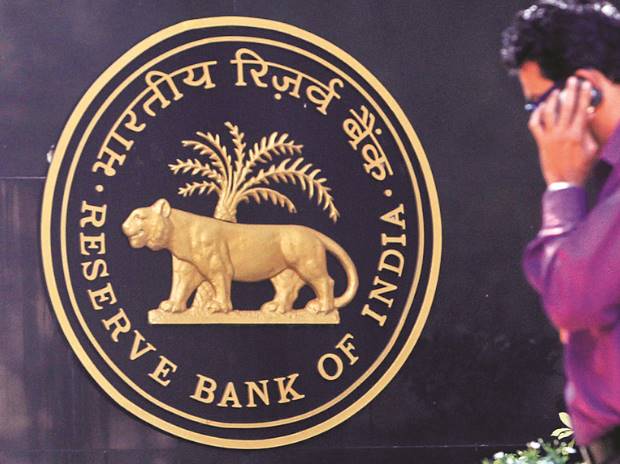 Another new note, this time for Rs 200, from RBI on its way?
Another new note, this time for Rs 200, from RBI on its way?
NEW DELHI:MMNN:4 April 2017
Are you tired of receiving higher denominations of Rs 2,000 and Rs 500 notes? Or are you still grappling under the effects of demonetisation where Rs 100 notes are a rare sight at Automated teller machines (ATMs)? Worry no more -The Reserve Bank of India (RBI) has cleared a proposal to inject Rs 200 notes around June, 2017.
The development comes after anonymous sources revealed that the decision was taken at the RBI board meeting in March, Live Mint reported.
The move comes against the backdrop of government's aim to rework the Indian monetary system. An RBI spokesperson declined to comment.
Even though the RBI lifted all cash withdrawal caps from ATM and banks on March 13, 2017, operators say there is a dearth of lower denomination banknotes.
The RBI board has 14 members, including Urjit Patel, four deputy governors, Economic Affairs Secretary Shaktikanta Das.
Narendra Modi government's surprise move on November 8 to scrap Rs 500 and Rs 1,000 notes has posed some temporary trouble for consumers in a cash-dominant economy like India, putting 86 per cent of the currency out of circulation.
RBI Governor Urjit Patel later announced that Rs 4 lakh crore (19.1 billion notes) had been injected into the system. As on 24 March, currency in circulation was Rs 13.12 trillion, the reported added.
Even by a conservative estimate, there was a minimum of Rs 2.5 lakh crore excess cash before November 8, 2016 in financial transactions, it said.
The process of demonetisation has opened up huge potential for digital channels. PoS machines, m-wallets and mobile banking are the major available channels for digital transactions.
There has been an increase of 584 per cent in digital transactions done through the Unified Payments Interface (UPI) since demonetisation in November last year.
The government is also keen to increase transactions through digital payment methods to 25 billion this year to reduce black money and fight shadow economy.
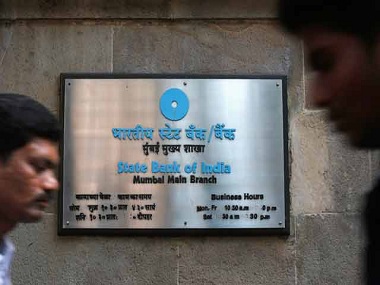 SBI's decision to charge on monthly minimum balance may lead to consolidation of family accounts
SBI's decision to charge on monthly minimum balance may lead to consolidation of family accounts
NEW DELHI: MMNN:7 March 2017
The state owned State Bank of India (SBI) rubs shoulders with its private sector peers like ICICI Bank and Axis Bank in the rather cramped BSE 30 or Sensex basket. But it doesn’t mean it should ape them on banking practices impinging on customers. Last week, the private sector banking triumvirate HDFC, ICICI and Axis set the cat among pigeons by slapping an Rs 150 cash transaction charge on cash withdrawals or deposits in branches in excess of four a month.
Taking a cue and in a me-too spirit, the SBI too has announced its decision to hike steeply the average minimum monthly balance requirement from the hitherto Rs 500 to Rs 5,000 in respect of its customers in six metropolitan cities at the pain of penalty ranging from Rs 20 to Rs 100 with effect from 1 April 2017. What is more, the average minimum balance norm would also apply to current accounts with vengeance---Rs 500 for non-compliance is the penalty when current account unlike savings account does not earn interest for its depositors.
It has gone a step ahead of the private sector banks in so far as cash transaction charges are concerned by also targeting ATM withdrawals. It is good that the government has intervened to request SBI as well as private sector banks to withdraw these anti-customer moves. If they remain adamant, it may perhaps use its clout on the banking regulator RBI to ask it to issue a fiat to rein in the rampaging banks.
Private sector banks especially the elitist among them might have justification for mandating a minimum default balance of Rs 10,000 in savings accounts at the pain of penalty which they actually levy hungrily. But SBI is the bellwether common man’s bank. It has been perceived as one from times immemorial. It has by far the largest number of branches spread across the nooks and corners of the country with a sizeable rural presence too. It has a staggering 310 million savings bank accounts many of which were enlisted in the recent Jan Dhan drive the Prime Minister initiated in 2014 to make bank accounts a necessity.
For such a people-oriented bank to prescribe a steeply heightened minimum balance of Rs 5,000 albeit in select urban pockets is retrograde and could even be counterproductive. If the cash transactions charges of private sector banks could lead to the elitist customers splitting their money among three or four banks so as to break free of the free cash transactions limit of four a month per bank in what could be termed as a banker’s nightmarish vision of voting with feet, SBI might experience consolidation of family accounts. To wit, if three members of the family maintain accounts with a SBI branch, two of them might close their accounts and transfer their balances to the family patriarch or matriarch’s account so that s/he might ensure the minimum balance of Rs 5,000 which might be difficult for all the three of them to maintain separately.
At a time when the accent is on digitisation of payments that is impossible without banking support, the regressive moves of these banking biggies would have the effect of repelling people from the banking habit and retreat to the old habit of piling up cash and paying in cash. It is amazing that the SBI has prescribed a one-size-fits-all minimum balance requirement for those living in the six metropolitan cities because while a wealthy customer can easily keep say a minimum balance of Rs 1 lakh, for a worker living in a shanty Rs 5,000 might be a tall order. This despite Jan Dhan account holders having been spared from the Rs 5,000 minimum balance requirement because in Delhi for example in rehabilitation colonies there are a lot of poor people who opened bank accounts even before the Jan Dhan initiative. It is cruel to expect them to maintain a minimum Rs 5,000 balance.
 I-T department lens on petrol pumps complicit in converting black money post demonetisation
I-T department lens on petrol pumps complicit in converting black money post demonetisation
NEW DELHI: MMNN:7 March 2017
Petrol pumps, which were allowed to accept old currency notes in payments towards refueling of vehicles after demonetisation, are under the scanner of the income tax department for suspected conversion of unaccounted cash, BTVi reported citing unidentified sources.
The income tax department is reportedly investigating whether some deposits camouflaged as payments from bogus debtors, allowing tax evaders to convert their undeclared cash money at the petrol pumps.
Prime Minister Narendra Modi, in a surprise move on November 8, demonetised high-value currency notes in order to curb the menace of black money, sucking out 86% of cash currency in circulation in the country. The total value of the demonetised Rs-1000 and Rs-500 notes was at Rs 14.6 lakh crore.
Huge cash deposits in banks followed, as people queued up to trade in their old worthless notes with the new ones being issued by the government, leaving a trail in many cases for tax authorities to investigate suspicious inflows.
The government had allowed several points of sale to accept old currency notes in payments for purchases, in a bid to ease the pain of the people trying to meet their daily needs amid a severe cash crunch. Among those points were Mother Dairy and Safal outlets, petrol pumps, government payments, railway tickets, air travel tickets and utility bills.
However, now a survey by the income-tax department has revealed widespread involvement of petrol pumps in conversion of unaccounted cash, BTVi news report said, adding that the department has found that cash deposits in demonetised currency by certain petrol pumps exceeded their sales by as much as 20%.
The income-tax department’s findings pertain to deposits made between November 9 and December 30 last year, the report said.
Further, the income-tax department is planning similar action against LPG distributors and CNG pumps in coming days, as they too, were accepting old currency notes.
It must be noted that the Reserve Bank of India has scrapped limits on cash withdrawal from savings accounts, which will come into full effect from March 13, as the cash situation in the country returns to normalcy with progressing remonetisation. In the first stage, the RBI hiked the cash withdrawal limit from savings accounts to Rs 50,000 per week by February 28.
The RBI had imposed strict withdrawal limits after demonetisation to ensure maximum distribution of the new currency notes in view of the constraints on printing and supplying of the currency.
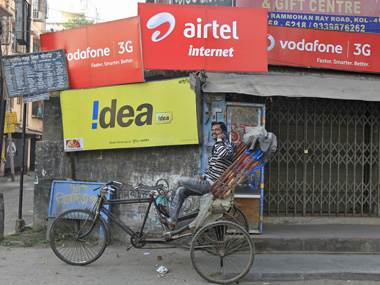 Bharti Airtel-Telenor deal: M&As will cut costs in sector but fierce fight will continue
Bharti Airtel-Telenor deal: M&As will cut costs in sector but fierce fight will continue
NEW DELHI: MMNN:24 Feb. 2017
The ongoing consolidation in the Indian telecom sector will likely create four large operators versus almost double this number earlier and this is good news for the country's fragmented telecom market.
But make no mistake, the new powerful telcos will continue to fight fiercely for each consumer via low tarffis to take on Reliance Jio Infocomm. Besides, the recent flurry of M&A (mergers & acquisitions) activity in the world’s second largest telecom market will reduce costs but the current M&A rules on spectrum ownership and subscribers may discourage further consolidation. In this scenario, pricing power will continue to elude telcos even after the market has finished this round of consolidation, as cheaper data and free voice by RJio has set the benchmark for further cuts.
Sandip Agarwal and Pranav Kshatriya of brokerage Edelweiss said in a note to clients on Thursday, after market leader Bharti Airtel announced the acquisition of Norwegian telco Telenor’s Indian operations, that “We expect competitive intensity to remain high, despite reduction in number of players as new operators continue to aspire for higher market share and would be looking to cut prices, forcing others to follow suit.”
Bharti is acquiring Telenor for a song, in a no-cash deal, getting additional spectrum in at least four of India’s populous telecom circles and around 44 million of Telenor’s subscribers as part of this acquisition. Analysts are divided over what the cost of this acquisition will eventually be for Bharti, since it will have to pay future spectrum liabilities of Telenor and deal with excess manpower, but the bottomline is that this transaction will reduce competitive intensity in the market and provide Bharti added muscle. Remember, the number two and three telcos by subscribers, Vodafone India and Idea Cellular, are also already in merger talks. And the entity so created would dwarf Bharti in market share.
Meanwhile, RJio's massive investment of$20-25 billion and unprecedented offering of free voice and data for six months to new subscribers has accelerated industry consolidation, noted analysts from Fitch Ratings. RJio entered the market last September with freebies including free voice, which forced incumbents to also cut rates and bleed in the process. Both listed telcos, Bharti and Idea, reported a significant dent in their numbers for the December quarter.
The Fitch analysts went on to say that the on-going consolidation is likely to leave four larger operators - Bharti, Jio, the combination of Vodafone India and Idea Cellular, and the combined Reliance Communications Limited and Aircel Limited. Vodafone India and Idea Cellular are planning to merge their operations to combine spectrum assets, strengthen balance sheets and reduce cost and capex to compete effectively. Reliance Communications is also in the process of merging its wireless operations with Aircel. “We continue to believe that competition will continue to remain high, and the consolidation is not likely to return any pricing power to the operators in the near term.”
Earlier this week, RJio announced its plans to charge nominally for services from next fiscal while also saying it had acquired 100 million customers in the last 170 days. Analysts at brokerage Jefferies noted that a key strategy of RJio would be to increase the retention rate of its 100 million customers once it starts charging. “Given the Rs 303/month plan for unlimited usage ….. clearly the focus is on high ARPU (average revenue per user) customers of the incumbents. Typically such unlimited (high usage) plans are >Rs 2000/month across the incumbents. A part of the effect of this ARPU compression is already reflected in the December quarter results (8-10 percent sequential blended ARPU compression across the Top-3 incumbents) but could continue into future quarters as well”.
As we have said earlier, the rule of thumb in the telecom market is this: The top 20 percent customers generate 80 percent of the industry’s revenues. These “high-value” customers are obviously a pampered lot and their loyalty is keenly fought for. Now, more than ever, RJio will want to retain these customers and so will the incumbent telcos. Jefferies’ analysts said that the top 3 percent of subscribers deliver > Rs 1000 ARPU per month; another 3 percent deliver Rs 500-1000 (using FY16 data). “The top 15 percent of customers account for >40 percent of industry revenues per our classification, with cross checks being industry revenue numbers broadly matching the TRAI reported numbers for FY16. This top 15 percent is the segment of the market that could see the maximum ARPU compression (already reflected partially in Dec-16 quarter) and hence put pressure on near-term industry revenue growth”.
Analysts at brokerage Motilal Oswal said that RJio’s arrival and increasing competitive intensity in the market will continue to put pressure on the earnings of incumbent telcos (their remarks on Bharti were made before it announced the Telenor deal). “For FY17 and FY18, we expect Bharti India’s wireless revenue to remain flat, while Idea’s revenue could decline marginally by 1 percent. This factors in 10-11 percent HoH revenue decline in H2FY17. We build in a recovery in H1FY18 on the basis of 30-40 percent churn out of RJio subscribers. However, we believe EBITDA recovery could be subdued. Subsequently, we factor in EBITDA decline of 5-8 percent for Bharti India wireless and Idea in FY18,” they said.
The bottomline is that consolidation is the way forward but the battle for subscribers and hence revenues has only just begun.
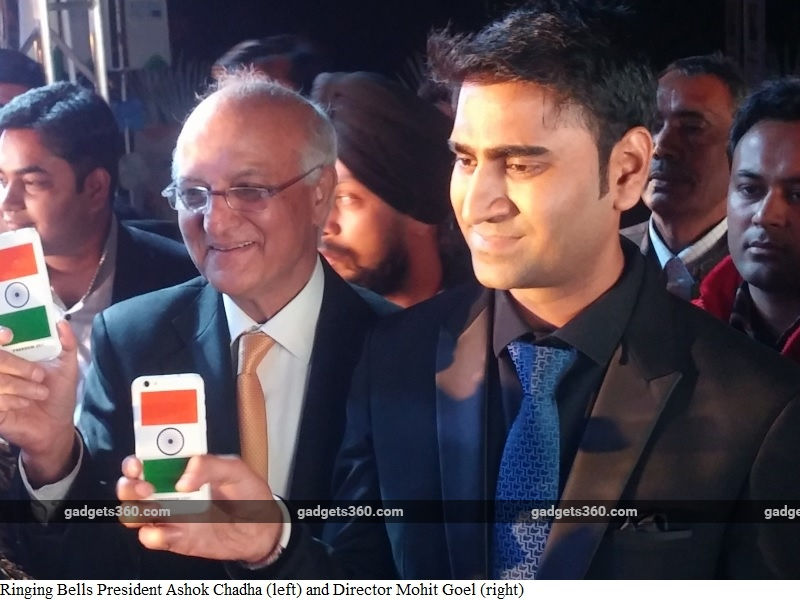 Freedom 251 Maker Ringing Bells' MD Mohit Goel Detained for Fraud
Freedom 251 Maker Ringing Bells' MD Mohit Goel Detained for Fraud
NEW DELHI: MMNN:24 Feb. 2017
Mohit Goel, the Director of Noida-based company Ringing Bells which had announced Freedom 251 smartphones at an astonishingly low price of Rs. 251 apiece, was detained on Thursday in Ghaziabad on allegations of fraud, police said.
Goel has been detained after owner of Ghaziabad-based Ayam Enterprises filed an FIR yesterday alleging that Ringing Bells "defrauded" it of Rs. 16 lakh.
Ghaziabad Deputy SP Manish Mishra said Goel has been detained for interrogation in the matter.
In the FIR, Ayam Enterprises has claimed it was persuaded by Goel and others from Ringing Bells to take up the distributorship of the Freedom 251 phones in November 2015.
"We paid Rs. 30 lakh to Ringing Bells through RTGS on different occasions. But it delivered us product worth Rs. 13 lakh only. Upon follow-up, we could get products plus money totaling Rs. 14 lakh," it claimed in the FIR.
The owners of Ayam Enterprises claim that they were threatened with life if they asked for the rest Rs. 16 lakh "again and again".
Ringing Bells had begun the sale of Freedom 251 handsets, touted as the world's cheapest, via its website in February last year.
It landed in a controversy, however, with some alleging it was like ponzi scheme. The firm had claimed that around 30,000 customers had booked the phone despite some glitch and seven crore people registered for it.
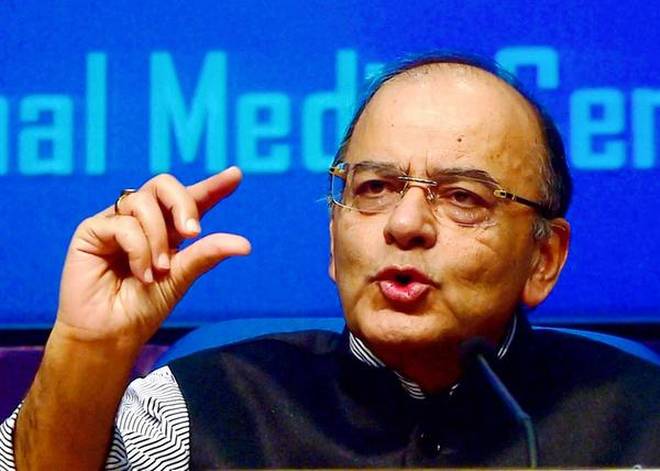 Railway passengers should pay for services: Jaitley
Railway passengers should pay for services: Jaitley
NEW DELHI: MMNN:20 Dec. 2016
Finance Minister Arun Jaitley on Tuesday spelt out the roadmap for the Indian Railways — two months before he is set to present the Union Budget that will comprise the rail budget for the first time in Indian history.
The Minister signalled that the Union government will resist populist measures, focus on improving the railway station infrastructure, monetise railway assets for commercial activities, outsource train hospitality and most importantly, make consumers pay for the services they receive.
Mr. Jaitley said the Indian Railways got “caught in the battle where populism prevailed over performance.”
“The first essential principles of running any establishment, particularly a commercial establishment, are that the consumer must pay for the services that they receive,” he said, while speaking at National Conference on Accounting Reforms in Indian Railways, organised jointly by the Confederation of Indian Industries (CII) and the Railway Ministry.
The power sector companies ran into debt as consumers were not paying for services in 1990s until sector reforms came in 2003. The highways sector was booming because consumers paid through toll taxes or cess on fuel, he noted.
“Therefore, world over only those services have succeeded where the financial model is — consumers must pay for services they receive. We turned this whole theory upside down by self-imposed indiscipline that populism requires consumers do not pay for the services they receive,” he said.
At present, the Indian Railways recovered 57 per cent of the travel cost on passenger tickets. This meant if it spent Rs. 100 on a train journey, it recovered Rs. 57 from passengers and the rest went as subsidy.
Even though the Indian Railways had monopoly over the rail network in the country, it faced competition from alternative modes such as air and road. The pressure of maintaining highest standards to compete with the alternative modes of transportation had “started reflecting” on the railways’ earnings. “Normally, people don’t give up their turf so easily but because of this pressure, the railways is keen that the Finance Ministry takes over the Railway Budget itself because the burden of supplementing what is left behind becomes our problem,” the Minister said.
Mr. Jaitley pointed out that one of the challenges faced by the railways was that the budget did not focus on the railways’ key areas of expertise and there were populist announcements especially related to new train announcements. He, however, said that Prime Minister Narendra Modi shifted the focus from announcing new trains to creating the railways “as a service organisation which is able to commercially sustain itself and provide world class services.”
Praising the “world class” facilities provided by some airports in the last one decade, Mr. Jaitley said there was no reason why railway stations “cannot really develop up to that level” with huge real estate in possession.
“The core competence of the railways is to drive trains, and hospitality may not be its core competence. Therefore, the principle of outsourcing, which is accepted world over, can be a logical addition to the activities of the railways in areas not within its core competence,” he said.
Railway Minister Suresh Prabhu said accounting systems were like health cards and should reflect all the parameters of operation in a statement. The present government had tried to improve the outcome budget by integrating outcomes with the budget outlay.
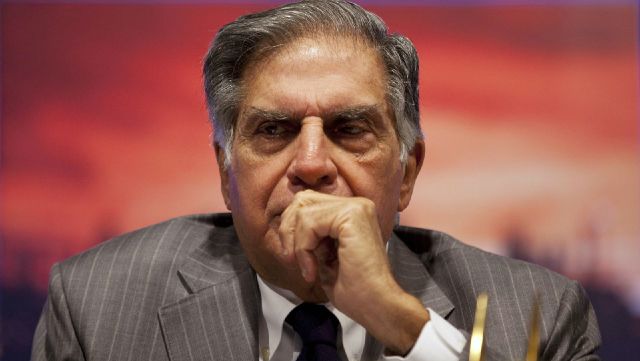 Ratan Tata may soon resign as chairman of Tata Trusts; succession plan in process
Ratan Tata may soon resign as chairman of Tata Trusts; succession plan in process
NEW DELHI: MMNN:16 Dec. 2016
While Tata group is in the midst of holding extra ordinary general meetings (EGMs) of several group companies over the next one week to dispel the ousted chairman Cyrus Mistry as director from these firms, media reports suggest that Ratan Tata could resign as chairman from Tata Trusts. The Tata Trusts controls 66 percent in Tata Sons, which is the holding company of the Tata Group.
Speaking to Times of India, R K Krishna Kumar, a veteran with Tata group and long-time aid of Ratan Tata, said the process to induct a new chairman of Tata Trusts could be complement by June next year with the advise from an external consultant.
On being asked, if the new chairman will be a Parsi or a member associated with the Tata family, Kumar said the new incumbent will be an Indian, and not necessarily a Parsi, the said.
In an interview with financial daily Business Standard, Krishna Kumar said the group has been discussing a succession plan for Tata Trusts, even before the current imbroglio started in late October.
"Yes, only two months before the imbroglio, we had discussed putting a successive plan for the Trusts in place. It is in the process," said Krishna Kumar in an interview with BS.
The role of the Trusts has been at the centre of the ongoing feud between Tata and Tata Sons' ousted Chairman Cyrus Mistry.
Tata Trusts and Tata Sons were not immediately reachable for comment on the Times of India report.
"The next chairman has to be someone who has the right vision and be in complete alignment with the will of the Tata Group founders," said Krishna Kumar, a group veteran and a trustee of the Tata Trusts, according to the report.
He added that Tata's successor at the Tata Trusts could be an external person even though the current trustees are free to suggest potential candidates, the report said.
In public letters to group company shareholders, Mistry has said the trustees abused their position by calling for information and seeking discussions on matters they considered material and dictating Tata Sons' decisions using veto right of their nominee directors.
Tata Sons has rejected those claims, and has blamed Mistry for governance lapses.
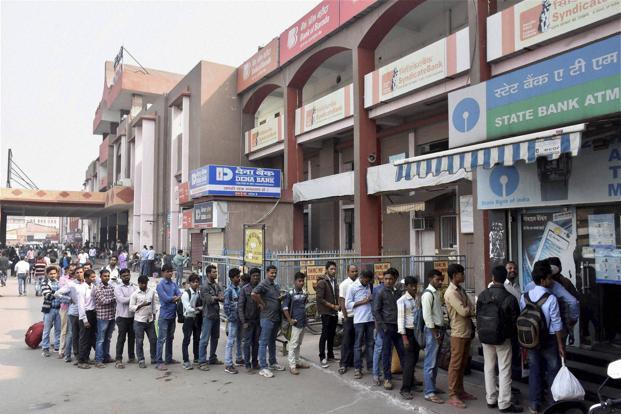 CBI arrests RBI official in illegal currency exchange case
CBI arrests RBI official in illegal currency exchange case
NEW DELHI: MMNN:13 Dec. 2016
As banks open after a long weekend of three days on Tuesday, long serpentine queues of the people waiting to withdraw cash are being reported from across the country. More than a month after the Narendra Modi government announced its decision to ban old Rs500, Rs1,000 currency notes to curb black money and counterfeit bills and shift India towards a cashless economy, the woes of the public does not seem to be ending as hope is turning into despair for many. The Modi government’s dilly-dallying on cash withdrawal and deposit rules since 8 November has also added to the confusion.
Here are updates and highlights as of 13 December of the government’s demonetisation drive:
• RBI official K Michael arrested by CBI in Bengaluru in RBI official K Michael arrested by CBI in Bengaluru in connection with seizure of Rs5.70 crore in new currency.
• Union finance minister Arun Jaitley: “Despite transient problems, we are rapidly remonetising. The Reserve Bank of India (RBI) to inject significant amount of currency in coming days,” quoted PTI.
• People can now avail 0.75% discount on use of debit/credit cards, e-wallets and prepaid loyalty cards at public sector undertakings petrol pumps. The buyer will get the discount sum as a cash back which will be credited to their account within three days after the transaction.
• The Enforcement Directorate (ED) has arrested seven alleged middlemen and seized Rs93 lakh in new currency in Karnataka as part of its money laundering probe.
Meanwhile, the political divide between the ruling and opposition parties continues with the former Union minister P. Chidambaram lashing at the Modi government.
• Rahul Gandhi: “PM Narendra Modi waged a war against poor on 8 November,” reports The Economic Times.
• P. Chidambaram: “It may take seven months to replace notes after demonetisation. Demonetisation is the worst attack on the poor, PM should go out and see for himself the real picture before ATMs. RBI should publish the minutes of meeting on 8 November, let country know who were the directors who attended the meeting,” reports.
Demonetisation has affected the economy and raised fears of a slowdown:
• The Asian Development Bank (ADB) on Tuesday became the first multilateral agency to reduce India’s growth forecast for the current fiscal 2016-17 to 7% from 7.4% estimated earlier in the backdrop of government’s decision to demonetise Rs500 and Rs1,000 currency notes.
• Earlier, Fitch Ratings has already downgraded India’s growth forecast to 6.9% in 2016-17 from earlier estimate of 7.4% while Morgan Stanley has reduced its projection to 7.3% from 7.6% for the same period.
 One month of demonetisation: Indian markets have the fourth worst performance globally
One month of demonetisation: Indian markets have the fourth worst performance globally
NEW DELHI: MMNN:9 Dec. 2016
It has been a choppy ride for the Indian equity markets that had been hit by the double whammy of demonetisation and the surprise victory of Donald Trump in the US Presidential elections, exactly a month ago on November 8. India’s Nifty (down 3.5%) was the second worst performing index in Asia after Philippines, and the fourth globally – after Mexico (down 5.9%), Brazil (4.3%) and Philippines (down 3.9%).
The frontline benchmark indices – S&P BSE Sensex and the Nifty50 – that lost around 7.5% during the month, though have managed to recoup some losses. The Nifty50 index, for instance, hit an intra-day low of 7,916 levels on November 21 has clawed back to 8,200 levels by December 08.
Among sectoral indices, realty, auto, private bank and fast moving consumer goods (FMCG) were the worst hit on the National Stock Exchange (NSE), falling 6% - 16% during this period. On the other hand, metals, pharma, PSU bank and energy indices gained 2.5% - 4.7%.
OUTLOOK
Experts say the road ahead for the markets will now depend on US Fed rate action, Union Budget 2017, growth in corporate earnings, progress made as regards the goods and services tax (GST) bill. Though the market has priced in a 25 basis point rate hike by the US Federal Reserve in December 2016, it is not prepared for an aggressive guidance for CY 2017, they add.
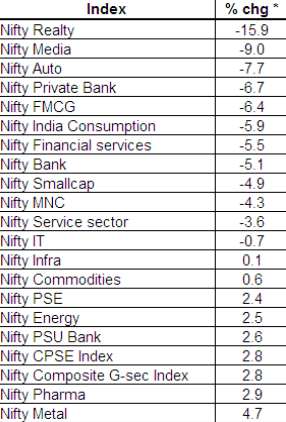
In this backdrop, brokerages expect the markets to remain volatile over the next three – six months. Some have even lowered or recast their December 2016 and March 2017 targets for the benchmark indices.
“In the light of negative effects of the recent steps taken by the government and with just four months before FY17 comes to a close, we scrap our current March 2017 S&P BSE Sensex target of 29,500 and unveil our March 2018 S&P BSE Sensex target of 29,000 levels,” said Saurabh Mukherjea, CEO of institutional equities at Ambit Capital in a recent note.
Among sectors, analysts at Motilal Oswal expect sectors like auto, cement and retail to bear the maximum brunt. They have also cut their earnings forecasts for FY17 and FY18.
“We further revise our Sensex EPS downward by 2% for both FY17E and FY18E to account for the demonetisation impact. Our revised FY17/FY18 Sensex EPS stands at Rs 1,379/1,703. We now expect Sensex EPS to grow 4%/24% for FY17/18, as against our earlier expectations of 12%/21%. We cut our Nifty EPS for FY17E/FY18E by 2% each. We now expect Nifty EPS to grow 8%/23% in FY17/18, as against our earlier forecast of 10%/24%, to Rs 424/523," point out analysts at Motilal Oswal Research led by Gautam Duggad.
NOMURA BULLISH ON INDIA
Despite the headwinds, Nomura, still maintains a bullish view on India, which is also their biggest overweight in the Asian region.
“We expect the MSCI Asia ex-Japan to end 2017 slightly below current levels, at 520. This assumes forward earnings growth of 6% (versus consensus of 10.5%) and a forward P/E of 11.8x versus 12.5x currently,” says Mixo Das of Nomura in a recent report titled "Asia 2017 outlook: Sailing into the storm"
“We are downgrading Korea to ‘Neutral’ and Malaysia to ‘Underweight’, and upgrading Thailand to ‘Neutral’. Our top ‘Overweight’ is now India,” Das adds.
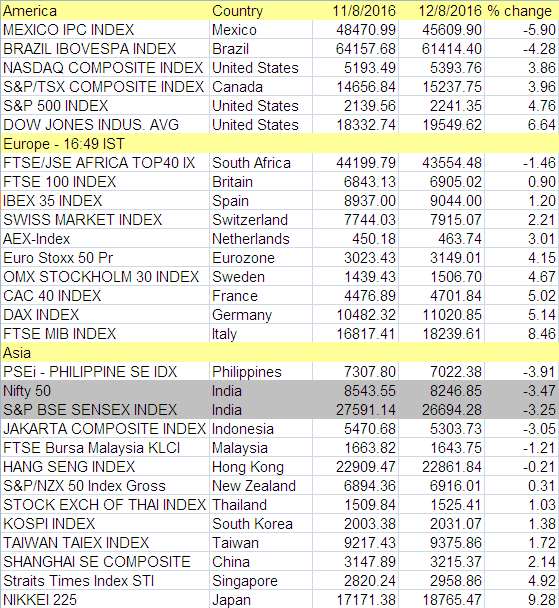
 India targets $100-billion worth investments in gas infrastructure by 2022
India targets $100-billion worth investments in gas infrastructure by 2022
NEW DELHI: MMNN:6 Dec. 2016
India is targeting $100 billion worth investments in natural gas sector by 2022. This includes investments in gas infrastructure including an addition of another 228 cities to city gas distribution (CGD) network.
Addressing Petrotech 2016, A P Sawhney, additional secretary to the ministry of petroleum and natural gas, said, “India requires at least $136 billion investments in the gas sector by 2025 and the country is aggressively targeting at least $100 billion by 2022. This includes setting up of RLNG terminals, pipeline projects, completion of the gas grid and setting up of CGD network in more cities.”
Till now, the petroleum regulator has conducted several bidding rounds for, where 28 Geographic Areas (GA) have been put forward for implementation of CGD. With the addition of 228 more cities, the demand for natural gas is expected to zoom by 80 mmscmd. Natural gas makes up for 6 per cent of the primary energy basket in India as against a global average of more than 24 per cent.
In the next five years, an additional 34 million tonnes per annum of LNG import terminal capacity are added and pipeline capacity will also increase to 30,000 km. “About 15000 kilometre is already in the national gas grid and we have initiated works another 14500 km that has got clearances. The recent initiative of Pradhan Mantri Urjja Ganga Yojana is a big initiative towards achieving this goal,” he said.
In the last two years, since Dharmendra Pradhan took charge as the petroleum minister, 35 new cities have been approved for having CGD networks. The government’s plans are to connect 10 million households to PNG (piped natural gas) network in the next three years.
When asked about achieving the target of the remaining 228 cities under the radar, Sawhney said, “PNGRB will have to come up with bids for that and for this, we needs our pipeline network in place by then.”
 No proposal to cut import duty on gold: Government
No proposal to cut import duty on gold: Government
NEW DELHI: MMNN:2 Dec. 2016
The government on Friday said there is no proposal under consideration to reduce import duty on gold.
"There is no such proposal under consideration at present," Minister of State for Finance Santosh Kumar Gangwar said in a written reply to the Lok Sabha.
Gems and jewellery exporters have demanded cut in the import duty to boost exports.
In a separate reply, the minister said, representations were received from the Confederation of Indian Textile Industry (CITI) and from the Federation of India Art Silk Weaving Industry to increase customs duty on import of fabrics, in general, from 10 per cent to 20 per cent.
"The same was examined and it was decided not to make any changes in customs duty on fabrics," he said.
Replying to a separate question on devaluation of rupee to boost exports, Minister of State for Finance Arjun Ram Meghwal said that the exchange rate of the rupee by and large market is determined and the government and the RBI are closely monitoring the emerging external situation.
During April-October 2016-17, he said, exports declined marginally by 0.2 per cent and the exchange rate of the rupee against the US dollar depreciated by 3.8 per cent.
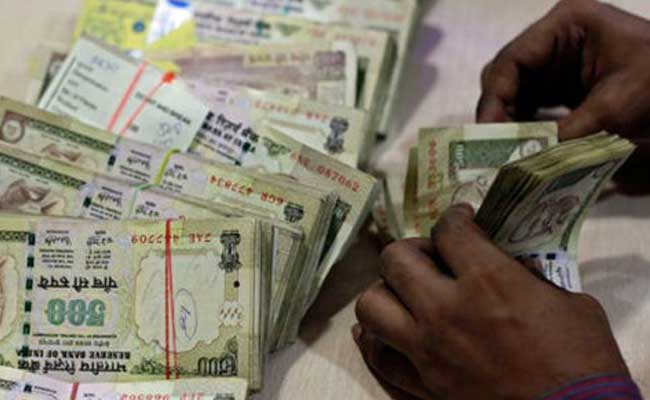 Banned Rs 500, Rs 1,000 Notes Can Now Be Exchanged Only At RBI Counters
Banned Rs 500, Rs 1,000 Notes Can Now Be Exchanged Only At RBI Counters
MMNN:25 Nov. 2016
The government in a decision taken on Thursday stopped the exchange of banned 500 and 1,000 currency notes at banks, effective from midnight of November 24. However, the exchange will be permitted at Reserve Bank counters subjected to the limit of up to Rs 2,000 per person.
"The Reserve Bank of India advises members of public that exchange of banknotes in Rs 500 and Rs 1000 denominations, whose legal tender status has been withdrawn, will continue to be available at the counters of the Reserve Bank upto the current limits per person as hitherto. (However such exchange facility is no longer available at other banks' counters)," the central bank said in a statement.
Stopping the exchange of banned notes at banks, the government said that the exchange of old currency notes 500 and 1000 denomination "has shown a declining trend".
"It has further been felt that people may be encouraged and facilitated to deposit their old Rs. 500 and Rs. 1000 notes in their bank accounts. This will encourage people who are still unbanked, to open new bank accounts," the government said in a statement.
The government also extended exemptions in use of old currency notes till December 15, with certain additions and modifications. However, payments for the transactions under all the exempted categories will now be accepted only through old 500 notes.
This means that the exemption granted for use of old 500 notes at petrol pumps, government hospitals and public utilities will continue till December 15. So also for the purchase of LPG gas cylinders, buying of train tickets at railway counters, plane tickets at airport tickets and bus tickets at counters of government or public sector undertakings.
Here are some of the other changes:
The government has extended toll waiver on highways till December 2. From December 3 to December 15, payment at toll plazas can be made through old 500 currency notes.Payment of school fees up to Rs 2,000 per student in central government, state government, municipality and local body schools can be made through old 500 notes. Payment of fees in central or state government colleges can also be made through old 500 notes.
Payments towards pre-paid mobile top-up up to a limit of 500 per top-up can be made via old 500 notes while purchase from consumer cooperative stores will be limited to Rs 5000 at a time.
Payment of current and arrear dues to utilities will be limited to only water and electricity. This facility will continue to be available only for individuals and households. Foreign citizens will be permitted to exchange foreign currency up to Rs 5000 per week.
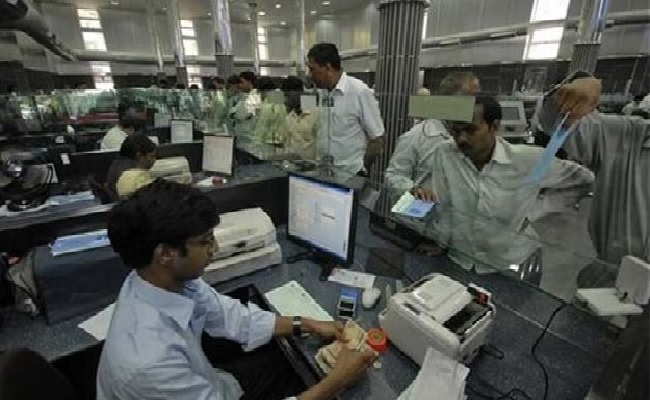 Fitch retains 'negative' outlook for India's banking sector
Fitch retains 'negative' outlook for India's banking sector
MUMBAI: MMNN:22 Nov. 2016
Fitch re-affirmed its "negative" outlook for India's banking sector, saying the financial standing remained "fragile" without bigger capital injections and that the government's action on banknotes could end up having a mixed impact.
Fitch Ratings said the government's move to remove higher-value banknotes from circulation would lead to a surge in deposits, allowing lenders to eventually lower lending rates and lower costs to service the sector's debt.
But it also noted that the overall impact on the banking sector remained uncertain, given borrowers in sectors that rely on cash could struggle to service their loans, while deposits could eventually be withdrawn again, among other factors.
Given the mixed impact, India's banking sector could remain constrained by the "under-capitalisation" of state-owned banks and weak investment demand.
The agency, which had previously estimated Indian banks would need about $90 billion in total capital by March 2019 to meet global Basel III banking rules, said 80 percent of those capital requirements would arise in the next two financial years.
"Clearly the urgent need of the hour is capital," Fitch analyst Saswata Guha told a media conference.
The ratings agency expects additions to bad loans to slow, although high loan-loss provisions for both new and old non-performing loans would keep profits under pressure.
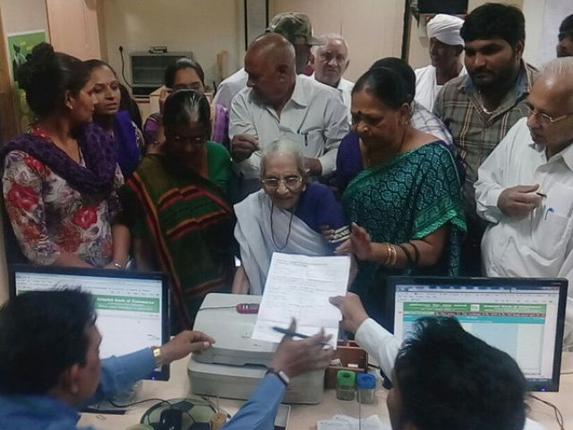 Indelible ink to be used to identify people who exchange notes
Indelible ink to be used to identify people who exchange notes
MMNN:15 Nov. 2016
Even as the Opposition parties, including the Congress, Left, TMC, NCP and the JD(U), are to meet soon to formulate strategies in the coming winter session of Parliament to take on the government on the issue of demonetisation, Economic Affairs Secretary Shaktikanta Das, in a press meet on Tuesday, made a couple of announements to combat the crisis of cash crunch.
Mr. Das said indelible ink would be used at banks to identify people who exchange notes. He also announced the formation of a special task force to monitor the infusion of fake currency in to the market, especially in the vulnerable areas of the country. He pointed out that Prime Minister Narendra Modi reviewed the supply of currency for the second time in two days on Monday night.
Mr. Das urged places of worship, who receive smaller denomination notes, to deposit them in banks so supply of these notes increases.
He warned people not to fall prey to rumours being spread through social media.'We have enough stock of salts and there is no reason for a temporary surge in price or shortage. Supply of essential commodities is being closely monitored. There are a lot of stories spreading through social media, like reports of certain institutions going on strike. There is no such thing, please don't believe such reports.''
Mysore Paints asked to stock up on indelible ink
After providing indelible ink to the Election Commission since 1962 to mark voters, the Mysore Paints and Varnish Limited has a new task at hand. It has been asked by the government to keep its stocks ready so that the indelible ink can be used by banks to mark customers exchanging defunct currency notes to check suspicious deposits.
Prachanda asks Modi for help
Nepal Premier Prachanda called up Prime Minister Narendra Modi and sought an arrangement so that Nepalese holding a huge stock of banned high denomination Indian bank notes could swap them with legal currency in the country. Hundreds of thousands of Nepalese, who earn a living by working as daily-wage labourers in India, visit the neighbouring country seeking medical treatment or rely on Indian markets to purchase daily essentials, are said to be holding big chunk of scrapped Indian bank notes, Kathmandu Post reported.
Supreme Court refuses to stay govt. notification
The Supreme Court on Tuesday refused to stay the government’s notification demonetising Rs 500 and Rs 1,000 currency, but asked it to spell out the steps taken to minimise public inconvenience. “We will not be granting any stay,” a Bench comprising Chief Justice T. S. Thakur and Justice D. Y. Chandrachud said.
People throng ATMs, banks
As the day began, people began thronging ATMs and banks across the country to withdraw money and exchange Rs. 500 and Rs. 1,000 notes. Many banks had remained closed on Monday on account of Guru Nanak Jayanti.
The Congress and seven other Opposition parties met on Monday to formulate a joint strategy to put the government on the mat on the issue. After the meeting, Congress deputy leader in the Rajya Sabha Anand Sharma said, “There is broad consensus that the demonetisation issue should be raised in Parliament.”
Addressing a rally in eastern Uttar Pradesh’s Ghazipur on Monday, Prime Minister Narendra Modi targeted his opponents for criticising his move. He asked people if he should be frightened by powerful forces hurt by his decision, even as he reiterated he would face the consequences.
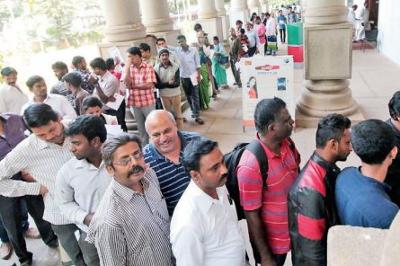 New notes for old: Citizens rush to banks, post offices
New notes for old: Citizens rush to banks, post offices
BENGALURU: MMNN:11 Nov. 2016
Early Thursday morning, Bengalureans made a beeline for banks and post offices across the city to exchange the demonetized Rs 500 and Rs 1,000 notes for those of smaller value.
Scores of people had queued up in front Canara Bank, Yelahanka New Town branch in north Bengaluru by 7.30am, two hours before it opened. With banks and ATMs closed on Wednesday and Thursday, the liquidity crunch had hit the aam family hard.
Banks threw open their doors at the scheduled timing to unceasing questions and confusion. Quarrels and tears were a common sight as panicky citizens just wanted to get rid of their old notes. Amid tight security to ensure smooth handling of the public, queues snaked out of the branches on to roads, disrupting traffic flow. Those waiting at post offices had to return empty-handed as money had not yet reached.
"When else can I exchange them? Who will do it for me later on?" questioned Muthamma, 70, unwilling to believe officials at a public sector bank who tried explaining that she could exchange the money later.
Bank branches around Mysuru Road in southwest Bengaluru saw small shop owners and traders trooping in with every passing hour.Hard-pressed for space, security personnel had to hold the gates tight to keep out to the burgeoning crowds. "Senior citizens are not able to understand the procedure properly. They are afraid of keeping Rs 500 notes with them. No matter how many times we explain, they just don't understand," said an official at a public sector bank in the area.
Asked why those with accounts in the bank should also produce identity documents to deposit money, an HDFC Bank staffer at the RT Nagar branch tersely said: "Madam, today we are not HDFC Bank. We are RBI."
Request forms to initiate cash exchange began running out at most places, sending officials and citizens into distress. The forms that took less than a minute to fill became the most important document, without which citizens' identity proof would also be no good. At Canara Bank, Koramangala, citizens who realized they could exchange a maximum of Rs 4,000 at a time, launched into a series of discussions and deliberations.
At the General Post Office, however, there was excitement in the air when news broke that the Reserve Bank of India would be sending only new Rs 2,000 notes. "We may be the first to see them, perhaps," said Malathi Rao, waiting eagerly.
Many were waiting since morning for the consignment of notes, which arrived at 12.30pm under tight security. Mohammed Rafeeq, a resident of Shivajinagar who runs a fruit business, told, "I've been waiting since yesterday to get the notes exchanged.There's no food in my house since last night."
Thimmoji Rao, assistant chief post master, explained the delay to impatient citizens, "We couldn't have brought the currency from the RBI last night due to lack of security . It had to be done this morning."
Holding up her two crisp Rs 2,000 notes, Padmavathi M, a retired BSNL official, was the first at the GPO to successfully exchange her notes. "I was in the area to collect my pension and when I saw the line forming up at the GPO, I thought I should join as well. Anyway, it was worth it."
Post offices in Indiranagar and Koramangala saw an unbelievable turnout of citizens waiting to exchange their old notes. Said one official, "Look at this crowd, it seems like the world is going to end tomorrow and they have to get rid of the money as soon as possible."
A senior citizen, Thimmaraju Manjunath, waiting at the post office on Rajbhavan Road, told TOI: "You are from the press? Then make sure Mr Modi knows what we're going through."
Just across the road at the State Bank of Mysore branch, citizens got into a fiery argument over jumping queues.Some others demanded that women be given priority at the counters.
"We've all been waiting here since morning and even at noon, we haven't got to work," said Mona Kar, a private firm employee.
The main branch of Canara Bank (Town Hall) saw at least 200-300 people lined up to exchange their notes. "Not all gathered here need the money because of an emergency. They are paranoid about losing their cash, we are trying to explain to them to queue up only if it's an emergency. They have time till December 31 to exchange old notes."
Frazzled citizens outside Corporation Bank in Koramangala quarreled over queue breaking. "People are panicky and agitated. No one likes to stand in long queues but it isn't easy to handle so many notes and transport them safely. We must look at the larger picture and cooperate as it's just a matter of a few days till things normalize," said an official at the branch.
GATEWAYS TO BWSSB PAYMENT
BWSSB has made it easy for customers to pay their bills through online payment gateways like Paytm, Pay u, Citrus and BillDesk. This will be functional from November 18 to December 31 till the process of exchanging old notes is complete. BWSSB will also receive at its kiosks high denomination notes towards payment till Friday midnight. Consumers can visit BWSSB website http:www.bwssb.gov.in to pay online.
FUEL STATIONS SAY NO TO NEW NOTES
At a few petrol stations, attenders refused to take new notes from customers.A distraught Sanjay who stopped at a petrol bunk in Kamakshipalya was shocked that the attender didn't take the brand new Rs 2,000 note from him, though he had enough change to give Sanjay. "This is unfair. We first stand in line the whole day to get new notes and now they refuse to take it saying they can't accept them today.He isn't even clear what the problem is with Rs 2,000 notes," said Sanjay.
 UK's New Visa Crackdown To Impact Indian IT Professionals
UK's New Visa Crackdown To Impact Indian IT Professionals
London: MMNN:4 Nov. 2016
In a crackdown to curb its soaring immigration figures, the UK government has announced changes to its visa policy for non-EU nationals, which will affect a large number of Indians especially IT professionals.
Under the new visa rules announced last evening by the UK Home Office, anyone applying after November 24 under the Tier 2 intra-company transfer (ICT) category would be required to meet a higher salary threshold requirement of 30,000 pounds from the earlier 20,800 pounds.
The ICT route is largely used by Indian IT companies in Britain and the UK's Migration Advisory Committee (MAC) had found earlier this year that Indian IT workers accounted for nearly 90 per cent of visas issued under this route.
The changes come just days before British Prime Minister Theresa May lands in India on Sunday for her three-day visit.
"The first of two phases of changes to Tier 2, announced by the government in March following a review by the Independent Migration Advisory Committee, will affect applications made on or after November 24 unless stated otherwise," a UK Home Office statement said.
Besides the Tier 2 ICT salary threshold hike, the other changes announced include increasing the Tier 2 (General) salary threshold for experienced workers to 25,000 pounds, with some exemptions; reducing the Tier 2 (ICT) graduate trainee salary threshold to 23,000 pounds and increasing the number of places to 20 per company per year; and closing the Tier 2 (ICT) skills transfer sub-category.
A number of changes have also been announced for the Tier 4 category, which covers maintenance requirements for the Doctorate Extension Scheme.
Nationals outside the European Union, including Indians, will also be affected by new English language requirements when applying for settlement as a family member after two and a half years in the UK on a five-year route to residency settlement in the UK.
The new requirement will apply to partners and parents whose current leave to remain in the UK under the family immigration rules is due to expire on or after May 1, 2017.
The changes follow advice by the MAC earlier this year to curb the Tier 2 ICT route and reduce reliance on foreign workers.
"(Immigration) is not serving to increase the incentive to employers to train and upskill the UK workforce. Ready access to a pool of skilled IT professionals in India is an example of this," the MAC report had said in its findings.
"We did not see any substantive evidence of long-standing reciprocal arrangements whereby UK staff are given the opportunity to gain skills, training and experience from working in India," it noted.
The MAC had added that the evidence indicates that multinational companies with a presence in India had developed a competitive advantage in delivering IT projects in the UK.
"They have developed a delivery model, whereby significant elements of projects are delivered offshore in India, taking advantage of the fact that Indian salaries are lower than in the UK for equivalent workers.
"Indeed, partners told us that India currently has a competitive advantage in training IT workers and in the time it would take to fully upskill the native population, technology would have moved on," the report concluded.
The new rules follow further tightening of the Tier 2 category, which came into force in April this year.
"The UK government's reforms to Tier 2 work visas are intended to ensure that businesses are able to attract the skilled people they need, but also see that they get far better at recruiting and training UK workers first," then UK Immigration minister James Brokenshire had said.
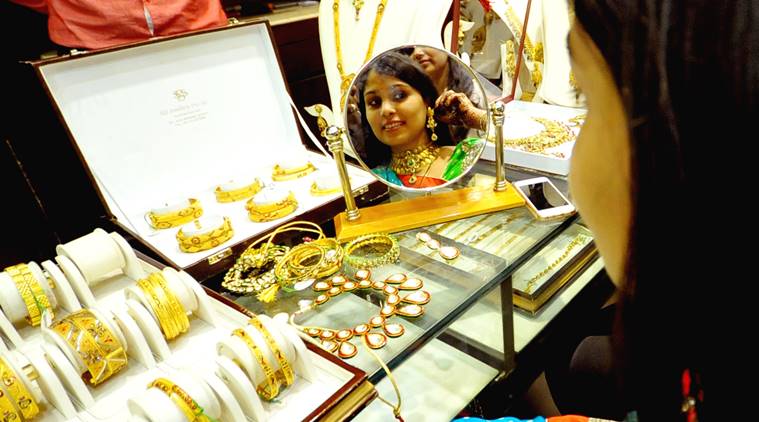 Dhanteras 2016: Significance of investing in gold today, and 3 things to keep in mind while buying
Dhanteras 2016: Significance of investing in gold today, and 3 things to keep in mind while buying
New Delhi: MMNN:28 Oct. 2016
Dhanteras or Dhanatrayodashi is an important Hindu religious festival which is celebrated on the first day of the five-day Diwali festival. ‘Dhan’ means wealth and ‘teras’ means the thirteenth day of the moon cycle. This year, it falls on October 28.
Also known as the festival of wealth, Dhanteras is celebrated in the month of Karthik, on the thirteenth day of Karthik Krishna Paksh. Goddess Lakshmi is worshipped on this day, along with Dhanvantri — an avatar of Lord Vishnu. Some even worship Kuber, the Hindu god known as the treasurer of the world. In India, where gold is not just a metal but an emotion as well, it is only natural that we have specific days when it is considered auspicious to buy gold. People purchase gold, silver and other household utensils on this day because they believe doing so will bring prosperity and good luck for the family and business endeavours.
Why buy gold on Dhanteras?
According to Indian mythology, King Hima’s 16-year-old son was doomed to die by a snake-bite on the fourth day of his marriage. When his wife found out, she did not let anyone in the house sleep on the fourth night. She put all her ornaments and gold coins in a heap and sang melodious songs. When Yamaraj, the god of death, came in the form of a serpent, he was blinded by the shine of all the gold and sat dazed listening to the songs, thus, not killing the prince. This is said to be the reason why people continue to invest in gold and silver even today, to ward off evil and make way for blessings. People also light lamps to worship Yamaraj on Dhanteras.
Things to keep in mind while buying gold jewellery
It’s great to buy jewellery on an auspicious day, but it’s important to make sure you get the right deal as well.
1. Make sure you check for Hallmark: It is important you analyse the quality of the metal before investing in it, so that there’s no regret later. Try and go for gold jewellery with Hallmark. This certification helps authenticate the purity of the metal. It is the standard mark is seen in most gold. A hallmark mentions the jeweller’s identification mark, year of hallmarking, karat and the stamp of the Bureau of Indian Standards (BIS).
While many jewellery brands often mention ‘Karat’ in their advertisements, a lot of people don’t know what it actually means. Karat denotes the measure of gold’s purity. For example, 24 carat or 24K contains 100 per cent gold content. Since an ornament with 24K gold would mean pure gold, it is more expensive than 22K or 18K gold. Also note that gold is a soft metal and a pure gold jewellery will be more malleable because of its low density.
The BIS stamp is a certificate that assures the jewellery is made in accordance with the standards laid by the bureau, which is the national standards organisation of India. It also contains the hallmarking year of the jewellery. In addition to this, jewellers also carry their personal hallmark that includes the purity of the metal and the year of making.
2. Stay away from stone-studded jewellery: If you’re buying gold mainly as an investment, then keep away from from those studded with stones, especially semi-precious ones. Though they may look much more attractive, remember that while buying, the stone is weighed along with the gold, so the ornament is priced accordingly. This weight is subtracted if you intend to sell the piece later. Stone jewellery also entails higher making charges.
3. Check for buy-back offers: Many jewellers have buy-back offers, wherein if you sell your jewellery back to the same store, then they will take the weight of the piece when bought into consideration, giving you a much better valuation of your ornament instead of going to another jeweller, who will first check the purity of the piece (here the Hallmarking helps, though) and deduct making charges as well.
Of course, if you don’t want to take a chance, you could always invest in gold ETFs.
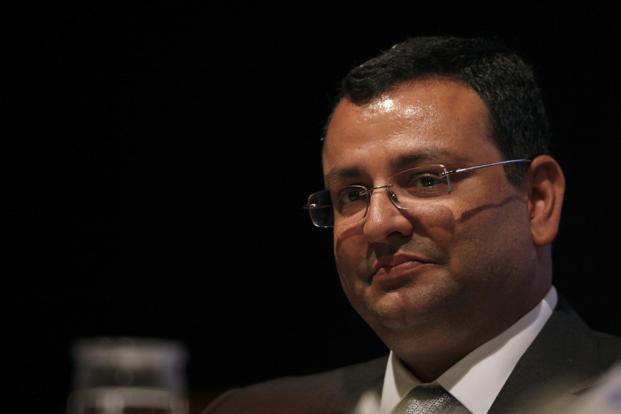 Cyrus Mistry ouster: Tata Trusts has powers to remove Tata Sons chairman
Cyrus Mistry ouster: Tata Trusts has powers to remove Tata Sons chairman
Mumbai: MMNN:25 Oct. 2016
A day after Cyrus Mistry’s ouster as chairman of Tata Sons Ltd, there is a lot of speculation around the boardroom coup, but many of them don’t seem to be grounded in facts.
Separately, a reading of Tata Sons’s articles of association shows that Tata Trusts, its largest shareholder, gave itself special powers in nominating, approving and removing chairmen of Tata Sons in late 2012 – months before Mistry took over the top job in December that year.
For instance, media reports have said there were conflict of interest concerns raised about the award of contracts to companies belonging to the Shapoorji Pallonji Group after Mistry took over.
However, a person close to Mistry said that three years earlier (on 30 October 2013), Mistry had written to Tata group companies that no contracts were to be awarded to the Shapoorji Pallonji Group, run by his family.
Mint couldn’t independently ascertain the veracity of this claim and hasn’t seen a copy of this letter.
Calls made and messages sent to a Tata Sons spokesperson weren’t answered.
Shapoorji Pallonji group companies have had a history of working for the Tatas – even before Mistry’s appointment. For instance, Sterling and Wilson Pvt. Ltd, a part of the group, had (or is in the process) of executing at least seven projects for companies such as Tata Motors Ltd and Tata Power Co. Ltd, according to its web site.
Secondly, there are reports which say that Mistry had cleared the acquisition of Welspun India Ltd’s renewable energy assets without seeking approval from either Tata or other key shareholders.
“All legal and fiduciary requirements with respect to the Welspun acquisition were met as far as shareholders are concerned,” said the person close to Mistry mentioned earlier.
Typically, in a merger and acquisition deal, the board first takes the decision for the deal which is then put up for approval of shareholders.
In any case, giving prior information to a certain set of shareholders, even if they are promoters, would violate the listing obligation and disclosure regulations of the Securities and Exchange Board of India (Sebi).
“Any kind of selective disclosure is prohibited,” said JN Gupta, co-founder & managing director of Stakeholders Empowerment Services, a proxy advisory firm.
Another concern raised over Mistry’s functioning was that he didn’t present a five-year strategy plan to Tata Sons’s board. However, the first person quoted earlier said that the five-year plan was presented at least two months back. Mint couldn’t independently verify this.
On Monday evening, Tata Sons said the board had replaced Mistry as chairman and that Ratan Tata, his predecessor, would be interim chairman. A selection committee including Tata was mandated to find a replacement for Mistry in four months.
Still, while reasons for Mistry’s abrupt removal remain unclear, there is no doubt that the board of Tata Sons has the power to do so. Tata Trusts, which consists of a clutch of trusts such as the Sir Dorabji Tata Trust and the Sir Ratan Tata Trust, owns two-thirds of Tata Sons, and has special rights in the holding company of the conglomerate, especially when it comes to appointment and removal of chairmen, according to the Tata Sons articles of association.
According to article 104B, as long as Tata Trusts has at least 40% shareholding, it can nominate one-third of the directors of the Tata Sons board.
The quorum for a meeting of the Tata Sons board “shall include a majority of the directors who are appointed pursuant to Article 104B.”
The Articles also say that the selection committee will consist of three people “nominated jointly by the Sir Dorabji Tata Trust and the Sir Ratan Tata Trust who may or may not be directors of the company”, one person nominated by and among the board of directors and an independent outsider selected by the board.
More importantly, a majority of the directors nominated by the Trusts have to approve with affirmative voting the appointment and removal of chairmen. Affirmative vote items are those where, in the absence of participation by the concerned directors, the company cannot undertake an action.
Some of these special powers seem to have been added to the articles of association at the time of Mistry’s appointment as chairman and after that. To be sure, these may have also been added to protect the interests of Tata Trusts. Mistry’s appointment as chairman of Tata Sons was only the second time the trusts and the holding company had different chairmen. The first instance was when JRD Tata was the chairman of the Tata Trusts and Ratan Tata was chairman of Tata Sons for a few years in the 1990s.
The article relating to the selection process of chairman and the constitution of the selection committee was added by a special resolution passed at an extraordinary general meeting (EGM) held on 6 December 2012. The article relating to affirmative votes of a majority of directors nominated by the Trusts was passed at an EGM on 9 April 2014.
Perhaps, because of these, a prominent Mumbai-based corporate lawyer said, on condition of anonymity that it wouldn’t be advisable for Mistry to take the legal route.
An official spokesperson for the Shapoorji Pallonji group said in a statement: “Neither the SP Group nor Mr.Cyrus Mistry have made any statement yet. While the circumstances are being studied, there is no basis to media speculation about litigation at this stage. As and when a public statement becomes necessary, it would be made.”
While the boardroom putsch has been brewing for some time, Mistry himself is said to have been unaware of this impending removal. According to the person quoted earlier, Mistry, who had returned from China on Saturday from a business meeting, was informed about this just prior to the board meeting by Tata Sons director Nitin Nohria.
A second person close to Mistry said there has been lapses on both sides but nothing to warrant Monday’s action. He declined to elaborate.
A former Tata group executive told Mint that Mistry was an “aloof figure and chose to operate through the group executive council and his dealings with many of the CEOs were very peremptory and authoritative”.
On Tuesday, Ratan Tata met with CEOs of the operating companies of the Tata group, a move questioned by proxy advisors. That is because even though Ratan Tata is the interim chairman of Tata Sons, he automatically doesn’t become chairman of companies such as Tata Motors and Tata Power.
“Can a holding company call a meeting of group CEOs? I would say no. It is more of a custom and it is not correct,” said SES’s Gupta.
In a letter addressed to “colleagues” on Monday, Ratan Tata said that he agreed to take over as interim chairman “in the interest of and reassurance to the Tata group.” He reiterated that in the meeting with managing directors and senior leaders of Tata companies, a Tata Sons statement said.
“This will be for a short time. A new permanent leadership will be in place,” the statement quoted him as saying. Tata asked group companies to act as leaders in their respective markets and enhance returns to shareholders.
“I look forward to working with you as we have worked together in the past. An institution must exceed the people who lead it. I am proud of all of you, and let us continue to build the group together,” he was quoted as saying. He asked the leadership of the companies to focus on their respective businesses, without being concerned about change in leadership, according to the statement.
Referring to ongoing initiatives in the companies, he was quoted as saying, “We will evaluate and continue to undertake those that are required to. If there is any change, they will be discussed with you.”
The meeting lasted 25 minutes, Bloomberg reported, adding that Tata didn’t disclose reasons for replacing Mistry. The report cited a person with direct knowledge of the matter as the source for the information. Mistry’s replacement was announced on Monday after the close of stock-market trading.
In intra-day trading, shares of Tata Group companies fell on Tuesday. Tata Steel Ltd fell 4%, Tata Global Beverages Ltd declined 3.3%, Tata Power Co Ltd slipped 2%, Tata Consultancy Services Ltd shed 1.2% and Tata Motors Ltd was down 2.2%. The benchmark Sensex index was down 0.1%.
“The biggest issue is that this (Mistry’s ouster) is very sudden and immediate. Stakeholders would want to know the reason for this sudden and immediate change,” said Gupta.
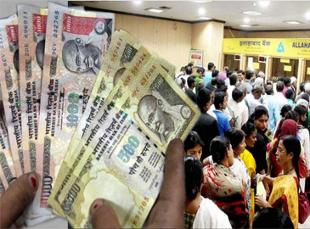 Debit Card Breach Could Dent PM Modi's Push To Go Cashless: Foreign Media
Debit Card Breach Could Dent PM Modi's Push To Go Cashless: Foreign Media
MMNN:21 Oct. 2016
India's quest to become a cashless economy has been dealt a blow by a data breach that compromised as many as 3.2 million debit cards.
Prime Minister Narendra Modi urged Indians in a radio address in May to use cashless payments to discourage corruption and keep track of money. Convincing them may get harder after India's national card payments network said that the data violation led to fraudulent transactions, mainly in China and the U.S.
The illegal withdrawals were limited to 641 customers of 19 banks, and the total amount involved was just 13 million rupees ($194,000), the National Payments Corp. of India said in a statement late Thursday. Yet the breach could reduce faith for cashless transactions in a country where Google Inc. estimates the digital payments industry will grow 10 times to $500 billion by 2020.
"Given that most Indians are in the villages and not tech savvy, there will be lot of apprehension regarding usage of digital money and cards after this breach," said VVSSB Shankar, founder of i-lend, India's first peer-to-peer lender. "This is a major setback for India's fight against the cash economy. Banks will have to increase security measures and improve efforts to educate people to tide over this."
Cash King
The South Asian nation has been aggressively pushing cashless payments, touting its so-called JAM mechanism that involves bank accounts for the poor, biometric identity cards and high mobile phone usage. About 98 percent of consumer payments are still made with cash, a report by PricewaterhouseCoopers Plc showed in 2015. That's even with 697 million debit cards and 26 million credit cards in the country at the end of July, RBI data show.
Customers needn't panic, A.P. Hota, managing director and chief executive officer of National Payments, said in the statement. Banks have advised customers to change their card security codes, and in cases where customers couldn't be contacted, have blocked their cards and are issuing new ones, the payments system operator said.
State Bank of India, the nation's largest lender, said in a statement that it had blocked the cards of certain customers as a precautionary measure. ICICI Bank Ltd. said it had changed codes of cards used at affected ATMs.
Defense Lines
"Banks have taken steps to isolate affected cards and accounts," said Tirthankar Patnaik, Mumbai-based chief strategist and head of research at Mizuho Bank Ltd. "Also, in India, the bank customer has two lines of defense: a mandatory shadow reversal in case the customer notifies the bank of a breach and deposit insurance in case of an irreversible loss."
The Reserve Bank of India August blamed an "unusually high and protracted" demand for notes and coins for slowing down the velocity of money, or the pace at which commercial lenders make fresh loans, which in turn become new deposits for the banking system and lead to further credit expansion.
Currency in circulation is more than nine times what it was 17 years ago. By comparison, China's yuan pile has increased less than sixfold, even though the mainland's economic expansion has outpaced India's.
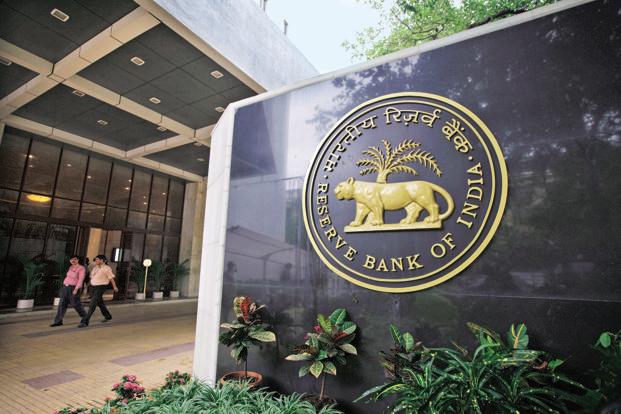 RBI to cut rates in early 2017, aided by weak inflation
RBI to cut rates in early 2017, aided by weak inflation
Bengaluru:MMNN:18 Oct. 2016
The Reserve Bank of India is expected to take advantage of expectations that inflation will remain low in the near-term and cut interest rates again early next year with an aim to boost already-solid growth a little bit more, a Reuters poll found.
New RBI governor Urjit Patel and his six-member Monetary Policy Committee used the same rationale for their surprise 25 basis point (bps) cut to 6.25% earlier this month, the lowest since November 2010.
Inflation cooled to a 13-month low of 4.31% in September and the latest Reuters poll of economists expect it to average 4.8% in the January-March quarter of 2017, just under the RBI’s near-term target.
“The significant run-up in CPI inflation between April and July was mainly driven by food prices. But thanks to normal rains, it could reverse quickly, taking inflation to well below (the) RBI’s early-2017 target of 5 percent,” wrote Pranjul Bhandari, chief economist for India at HSBC.
Since the start of 2015, the RBI has chopped 175 bps from its key repo rate. But after the next expected cut to 6.0%, the central bank is forecast to hold rates steady for the rest of the 12-month survey horizon.
A further rate cut would help the Indian government in its efforts to boost economic growth to above 8%.
It was last measured at 7.1% in the March-June quarter, one of the strongest rates in the world but still not fast enough to create enough new jobs to absorb all the one million people who join the workforce every month.
The poll forecast gross domestic product would grow 7.7% in the fiscal year to end-March 2017 and 7.8% in the following year, slightly more than the International Monetary Fund’s latest projection of 7.6% for both years.
HSBC’s Bhandari, who is forecasting 7.3% growth for next year, wrote: “...higher urban consumption supported by government wage hikes, sufficient banking sector liquidity and robust FDI inflows are likely to keep growth buoyant.”
India’s government, led by Prime Minister Narendra Modi, has introduced a raft of new economic policies since coming into power two years ago, most importantly a goods and services tax bill that will replace multiple federal and state levies and transform the economy into a common market.
 RCom to sell 51 p.c. in tower assets to Brookfield for Rs 11,000 crore
RCom to sell 51 p.c. in tower assets to Brookfield for Rs 11,000 crore
MUMBAI :MMNN:14 Oct. 2016
Anil Ambani-led Reliance Communications Ltd. (RCom) has signed a non-binding term sheet with Canadian Brookfield Infrastructure Group (Brookfield) to sell a majority 51 per cent stake of its nationwide tower assets and related infrastructure for cash consideration of Rs. 11,000 crores, making it one of the largest FDI in infrastructure sector.
Under the term sheet, the specified assets are intended to be transferred from Reliance Infratel Ltd. (RITL) on a going concern basis into a separate SPV, to be owned by Brookfield, said a RCom statement. It added that RCom will continue as an anchor tenant on the tower assets, under a long term MSA, for its integrated telecommunications business.
RCom and Brookfield expect considerable growth in tenancies based on increasing 4G offerings by all telecom operators, and the fast accelerating trends in data consumption, which are expected to contribute to significant growth in revenues and profitability for the towers business in the future, said the statement.
RCom and Brookfield also see several opportunities for consolidation in the towers industry in India that will further enhance growth and value creation in the future. RCom intends to utilize the proceeds of the proposed transaction solely to reduce its debt.
RCom will retain 49 per cent stake in the business to be monetised later, as it expects considerable value creation in the next couple of years, in view of likely significant growth in tenancies owing to spread of 4G networks and fast increasing data consumption.
RCom will utilize entire Rs. 11,000 crore to reduce debt and the combination of RCom’s wireless business with Aircel will reduce RCom debt by another Rs. 14,000 crore.
These 2 transactions put together will reduce RCom debt by 60 per cent from Rs. 42,000 crore to Rs. 17,000 crore, while RCom will continue 50 per cent stake in combined wireless business, and 49 per cent stake in Towers business.
Besides, RCom will retain 100 per cent of its highly profitable Indian Enterprise business, Data Centres, Optic Fibre, global submarine cables, GCX, amongst other.
“RCom is planning to monetize its real estate to raise another Rs. 5,000 crore, and reduce overall debt from Rs. 17,000 crore to Rs 12,000 crore,” a source told The Hindu.
Analyst believes that RCom financials will improve in FY17 given it does not require any major spend for spectrum or capex in the future, as post the merger with SSTL and Aircel being completed, and with spectrum sharing already implemented with RJio, it has extensive 2G, 3G and 4G networks already operational across the country. “RCOM will emerge as one of the stronger telecom operators in the country post the strategic transactions that are under implementation,” said Paras Bothra, vice president of equity research at Ashika Stock Broking Ltd
RCom shares were trading up 2 per cent at Rs 48.75 in an almost flat Mumbai market on Friday noon.
The proposed transaction is subject to definitive documentation, customary approvals and certain other terms and conditions. Accordingly, there can be no certainty that a transaction will result, said the company statement adding that further announcements will be made at an appropriate stage.
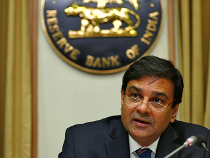 IRCTC plans insurance cover for mobiles, laptops
IRCTC plans insurance cover for mobiles, laptops
New Delhi :MMNN:7 Oct. 2016
Buoyed by the success of the 92 paise travel insurance policy for passengers, IRCTC is now planning to launch another scheme for passengers' gadgets like mobile phones and laptops.
The first round of meeting in this regard was held between IRCTC officials and insurance companies, IRCTC Chairman and Managing Director A K Manocha said. "There are some concerns that insurance companies have about false claims.
We have shared a few ideas with them and also asked for their suggestions. Offering this policy to credit card holders or government officials in the initial stage is one of the ideas we have floated to mitigate cases of false claims," he said.
Manocha wishes to make this scheme available both in cases of rail accidents as well as of thefts. He said, "I am trying hard to push companies to give insurance cover in instances of theft as well. So far, they have expressed their willingness to offer it only in cases of mishaps."
The proposal follows the success of the travel insurance scheme launched by IRCTC last month. Already over one crore passengers have opted for it.
The policy unveiled last month offers insurance cover of up to Rs 10 lakh for a premium of 92 paise in case of accidents or an untoward incident like terrorist attack, dacoity, rioting, shootout or arson.
To promote this scheme during the festive season, IRCTC has in fact decided to reduce the premium from 92 paise to 1 paisa for tickets booked between October 7 to October 31 as part of its Diwali bonanza.
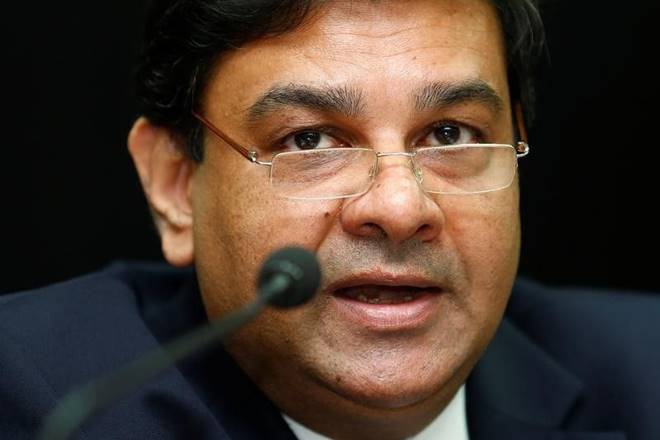 RBI monetary policy: Falling inflation gives room to Urjit Patel to cut rates; will he do it today?
RBI monetary policy: Falling inflation gives room to Urjit Patel to cut rates; will he do it today?
New Delhi :MMNN:4 Oct. 2016
The Reserve Bank of India (RBI), at the bi-monthly monetary policy meet today, will announce its decision on interest rates as set by the six-member Monetary Policy Committee (MPC). This is also governor Urjit Patel’s first monetary policy after he has taken charge as the RBI governor in September.
Theoretically, the time is ripe for another rate cut now, but the RBI may wait till December to do so.
Since January 2015, the RBI has cut the repo rate by a cumulative 150 bps. The rate currently stands at 6.5 percent. The Consumer Price Inflation (CPI) trajectory, gives one strong reason to expect a rate cut at the earliest. At the last reading (in August), the CPI inflation fell to 5.05 percent compared with 6.07 percent in July.
The RBI has a March, 2017 target of 5 percent inflation. Most economists believe that inflation might well fall below that level during this period given that monsoons this year have been favourable, enabling better crop output. Food price inflation, the main villain in the inflation story, has eased considerably in the recent past, giving room for further rate cuts.
Most economists, however, expect the Monetary Policy Committee (MPC) to advise RBI to hold its rates for now and cut rates in the December policy. This is because by then the RBI will have more data on the trend of food prices, the impact of monsoon and can weigh other upside risks to inflation such as the impact of the 7th Pay Commission. What is also critical is besides the announcement on interest rates, the language of the policy too will also be watched closely for cues on the future course of RBI’s action on various areas. This will include any likely change in the course of ongoing bad loan clean-up exercise and RBI’s outlook on economy. “The Reserve Bank of India’s (RBI) policy communique will be more critical than its rate action for the market to ascertain the future path of interest rates,” India Ratings and Research said in a note.
“There are some good reasons why a rate cut could materialise in the upcoming October 4 meeting. The recent fall in food prices has been sharper than expected, and cutting earlier keeps the RBI a safe distance away from possible Fed hikes. Yet our base case is for a rate cut in December. This is because, by December, two new inflation prints which are expected to be well below 5 percent will be available,” said Pranjul Bhandari, Chief India Economist, HSBC and Dhiraj Nim, economics associate at HSBC in a note.
“Moreover, given that the RBI was highlighting upside risks until its last meeting, it may prefer to move in steps, i.e. change the outlook on inflation now and cut rates in December. Furthermore, to get more bang-for-the-buck for monetary transmission, the RBI may want to get through the period of foreign currency non-resident (FCNR) deposit outflows before it cuts more,” the HSBC economists said.
In the 9 August monetary policy, the RBI had highlighted the upside risks to inflation. “Risks to the inflation target of 5 percent for March 2017 continue to be on the upside.
Furthermore, while the direct statistical effect of house rent allowances under the 7th CPC’s (Central Pay Commission) award may be looked through, its impact on inflation expectations will have to be carefully monitored so as to pre-empt a generalisation of inflation pressures. In terms of immediate outcomes, much will depend on the benign effects of the monsoon on food prices,” the RBI said.
In a note, CARE ratings too said chances are high for a status quo in rates. “While we believe there will be no change (70 percent probability), the chances of a rate cut (30 percent probability) has surfaced after border tensions escalated last week. Also, given that this would be the start of the bust season, there would also be a justification on the economic front,” said CARE. That said, one cannot rule out a surprise rate cut if the MPC chooses to cut rate now before the US Fed rate action comes in December. One must remember that there has been calls for rate cuts from the government in recent months.
The bottomline is this: Going by the inflation trends, one shouldn't be surprised if Urjit Patel announces a rate cut at 2:30 pm for reasons as explained above. But chances are more for the rate cut bonanza to come in December.
